STOCEXPO PREVIEW
Get a glimpse of the exhibitors and speakers behind StocExpo 2024 and why it’s a must-attend event
THE TERMINAL OF THE FUTURE
Euro Tank Terminal explains how it has become a modern, future-thinking, multi-customer terminal
USA SPECIAL
We delve into updates from US terminals, look at LNG exports and upcoming events

Spring 2024 | Volume 20 | Issue 01
Established 2005. Trusted. Valued. Influential.
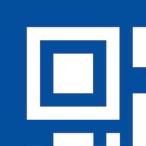

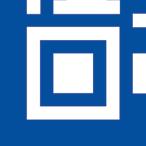








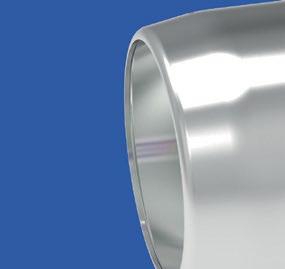

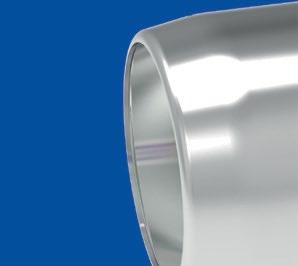















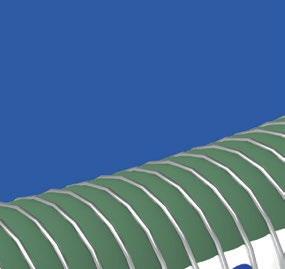












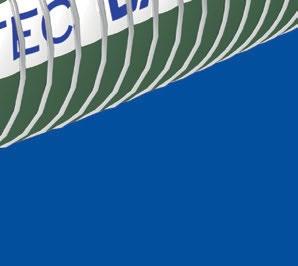


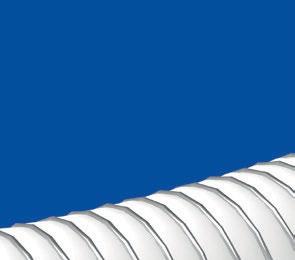


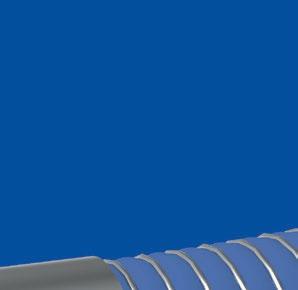







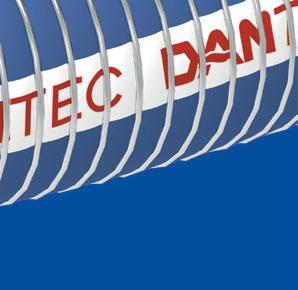



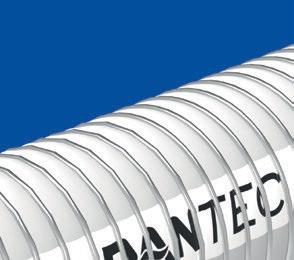





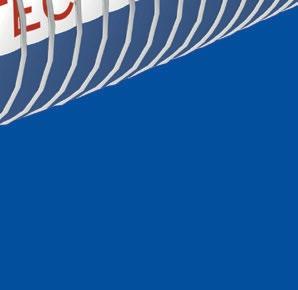


• OIL & CHEMICAL TRANSFER HOSES • HOSES FOR LIQUEFIED GASES SUCH AS LPG, AMMONIA & LC02 • IN PLANT TRANSFER HOSE www.dantec.com +44 (0)151 678 2222 sales@dantec.com WORLD LEADER IN COMPOSITE HOSE TECHNOLOGY

UP FRONT
GLOBAL NEWS UPDATE
MARKET ANALYSIS
38 Reducing GHG emissions
Ravi Bhatani, executive director at FETSA shares the group’s response to the European Commission’s 2040 GHG reduction target
56 ARA gasoline blending terminals: Time for a strategic review
Jonathan Martland at Energex Partners explores the evolving role of the Amsterdam-Rotterdam-Antwerp (ARA) region
58 Safety best practices for terminal owners
Executive director of the Tank Storage Association, Peter Davidson, discusses the importance of good leadership in process safety
60 The path to carbon neutrality for terminal owners
EXCLUSIVE INTERVIEWS
34 A complete, multi-customer terminal
Tank Storage Magazine speaks with Frans Jan Hellenthal, commercial manager at VTTI, about Euro Tank
48
LBC Rotterdam’s terminal manager, Mathias Potvin, tells
54
Sandra
David Tassadough, infrastructure associate at GRESB, discusses how working parallel with current EU legislations will help companies reach net zero
64 Navigating the evolving landscape of fuels
Jonathan Feys, CCO of at Ghent Transport & Storage discusses the current crossroads of traditional and alternative fuels in transport
65 Becoming a future fuels hub
Tank Storage Magazine hears from Port Tarragona on how its energy transition strategy is working to decarbonise the port and turn it into a future fuels hub
66 The forgotten link in the energy transition
Rafael Rengifo and Iván Parra Tepedino from Becht explain the role the midstream sector plays in the energy transition

USA SPECIAL SUPPLEMENT INSIDE PAGE 112 CONTENTS Spring 2024 | Volume 20 | Issue 01
and its exclusive
at StocExpo
Terminal
tour
Stay moving, stay ahead
Tank
Magazine
company
positioning itself ahead of the curve
Championing a safety-first mindset Global functional safety manager at Emerson, Akansha Gupta, tells Tank Storage Magazine about why she chose tank storage
Staying the course Gary Kalmin, CEO at Aquarius Energy tells Tank Storage Magazine about the company’s past year in business and what’s ahead for 2024
Storage
how the
is
50
52
Prioritising performance, teamwork and skills
Fernandez Gigirin, project development manager at Advario, tells Tank Storage Magazine about the empowerment gained from working in the storage and logistics sector
12 Energy transition 22 Company announcements 26 Technical 30 Incident Report 32 Tank Terminal Update
06 Contributors 08 Advertiser index & Social storage 10 Editor’s Note 34 58 UP FRONT CONTENTS PAGE 01

TECHNICAL FEATURES
68 LOHC technology: strengths and weaknesses to overcome
Ion Agirre and Laura Barrio from the SherLOHCk project discuss the challenges of storing and transporting hydrogen
70 Innovation in ammonia terminal design
Proton Ventures provides a summary of the PGS-12 standard ahead of the panel discussion at StocExpo 2024
72 Cryogenic storage & its role in future fuels
Ahead of speaking at StocExpo, the experts at Chart Industries explain how cryogenic storage will be key to the energy transition
74 Radar’s solutions for LPG storage
Tomas Hasselgren at Emerson explains how integrating non-contacting radar level gauges into tank gauging systems provides an accurate solution
76 A world on the move
Bart Muijtjens, engineering manager at BM Process Management discusses energy-efficient, carbon neutral and NOx-free emission control
78 Reducing emissions at green facilities
The experts at Assentech explain how it’s pioneering solutions for engineers in quantifying and mitigating methane emissions in biogas sites
80 How waste can be a profitable output
Tecam explains why terminals should be making the most of their waste
81 The age of PTFE-coated hose fittings
The team at Dantec explain how new fittings are improving petrochemical safety
82 Enhancing fire safety at modern terminals
The team at ThinkTank explain how the use of fusible link valves in modern firevprotection systems can improve safety and efficiency on site
84 Controlling dust explosions
The experts at Newson Gale explain how static electricity has the potential to cause fires and how to prevent them
85 Why choose a pre-fab pump and valve room?
Learn how a Crea Construct prefabricated unit can benefit your terminal
86 New guidance for tank operators
Ahead of EEMUA’s session at StocExpo, the team discusses new guidance on above ground horizontal rectangular metallic storage tanks
87 Glass fiber reinforced polymer floating roofs
The experts at EPT discuss how its approach to GRP roofs reduces maintenance costs and minimises environmental risks
88 Repair, not replace
Theexpertsat3XEngineeringshareause-casefortheir ReinforceKitpatchtankroofrepairandreinforcementsolution
90 Protecting asset integrity
The experts at Ferrous Protection discuss the importance of proper tank linings
92 Optimising assets on site
The team at Advanced 3D Laser Solutions explain how laser mapping assets can benefit your tank terminal
93 No-man entry for oil storage tank cleaning
The experts at Scanjet explain how its new tank cleaning machine improves safety and efficiency on site
94 Ensuring safety with robotic tank cleaning
Gerotto examines how the use of robots can make desludging an external floating roof crude oil tank easier
96 Synergy in inspections
Marin van Oorschot, technical director at Sky-Access explains how the right skills are key to tank maintenance challenges
98 Accurate reporting through modelling
Ahead of his session at StocExpo, Axess Digital’s Ole-Erich Haas explains how its web-based interface is improving reporting on site
99 Decarbonisation starts at the terminal
Ahead of his presentation at StocExpo, UAB-Online’s CEO Hans Bobeldijk explores how tank storage can reach net zero
100 Where the heck is my document?
Viewport.ai’s Radboud Grijpma explains how proper data management can optimise terminal efficiency
102 Automated loading for better speed & safety
Discover how Isoil’s latest innovation is improving operational efficiency at the terminal
104 Ensuring efficient loading operations
Discover how Scully Signal Company helped an oil terminal in Belfast that needed to replace its loading equipment without impacting operations
106 Taking charge in Africa, one terminal at a time
The experts at Soliflo explain how its evolving liquid control products have transformed terminals across Africa
108 The analysis is only as good as the sample
UK Sampling Gauges’ founder Reg Kimonides explains how modern sampling methods can vastly improve product analysis
110 Six things to consider when insulating storage tanks
The experts at Owens Corning explain how to properly manage the risk of corrosion under insulation
EVENTS
41 Global Tank Storage Awards Preview
62 It’s all about work ethic
Managing director at EWFM, Guy Curtis discusses winning the Rising Star Award and working his way up in the tank storage sector
126 The AI revolution in tank storage training
Frederik Haentjens, COO at TankSkills, explains why the industry needs to be utilising AI vocational training
AT THE BACK
129 Events 2024
41 UP FRONT CONTENTS PAGE 02





EDITORIAL
ANAMIKA TALWARIA
Anamika is the editor for Tank Storage Magazine. She curates all the fantastic content in every edition and online.

MOLLY COOPER
Molly is a journalist for Tank Storage Magazine. She’s been busy sourcing exclusive speaker interviews from StocExpo for this month’s edition.

CONTACT
T +44 (0)20 3196 4300
F +44 (0)20 8892 1929 anamika@tankstoragemag.com www.tankstorage.com
Easyfairs
2nd Floor, Regal House
70 London Road Twickenham TW1 3QS United Kingdom
ISSN 1750-841X
MEMBERSHIP RATES
A one-year Elite Membership costs €299. Premium Membership costs €199.
CONNECT WITH US
@tankstorageinfo
Tank Storage Magazine
Tank Storage Magazine

Front cover courtesy: Emerson
SALES & MARKETING
PORTFOLIO DIRECTOR
Margaret Dunn
+44 (0)20 3551 5721 margaret@tankstoragemag.com
SALES MANAGER
Josh Lyle
+44 (0)20 3196 4364 josh.lyle@easyfairs.com
KEY ACCOUNT MANAGER
Gary Kakoullis
+44 (0)20 3196 4248 gary.kakoullis@easyfairs.com
INTERNATIONAL
SALES MANAGER
David Kelly
+44 (0)20 3196 4401 david@tankstoragemag.com
MARKETING MANAGER
Eleanor Gravette eleanor.gravette@easyfairs.com
HEAD OF DATA
Beth Welcomme beth.welcomme@easyfairs.com
CEO EASYFAIRS UK & GLOBAL
Matt Benyon matt.benyon@easyfairs.com
Anne Lafère anne.lafere@easyfairs.com

Spring 2024 STOCEXPO PREVIEW Get a glimpse of the exhibitors and speakers behind StocExpo 2024 and why it’s a must-attend event THE TERMINAL OF THE FUTURE Euro Tank Terminal explains how it has become a modern, future-thinking, multi-customer terminal USA SPECIAL We delve into updates from US terminals, look at LNG exports and upcoming events Established 2005. Trusted. Valued. Influential. CONTRIBUTORS
UP FRONT CONTRIBUTORS PAGE 06

An independent storage company for bulk liquid products, focused on the marketing, renting in and renting out of storage capacity at bulk liquid terminals worldwide. Our representatives have more than 200+ years of experience in the bulk liquid storage industry.

Connect
info@vtankstorage.ch
KNOWLEDGE &
Nordics l Baltics l UK l Europe l Asia l USA l UAE l Carribbean
with us:
+41 79 595 99 00 EXPERIENCE,
SKILLS YOU CAN TRUST
- Tank Storage SA




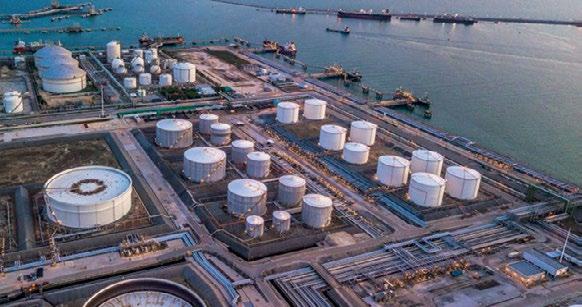


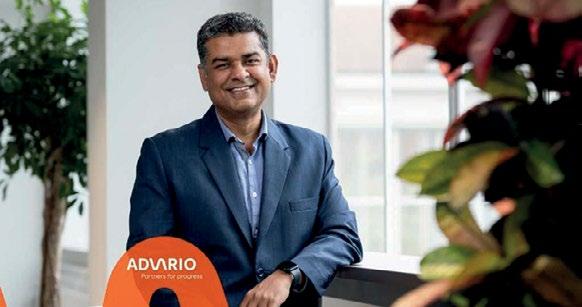


PAGE 08 ADVERTISERS INDEX SOCIAL STORAGE Most liked posts since January: UP FRONT ADVERTISERS INDEX & SOCIAL STORAGE Emerson Front Cover Dantec Inside front cover Aquarius Energy 3 Port Tarragona 4-5 V-Tank Storage 7 Exolum 9 ILTA 11 Joyo 13 Borsig 15 SGB 16 Krantz 17 LBC Tank Terminals 18 EEMUA 19 UK Sampling Gauges 20 Koerting 21 Netzsch 22 Auma 23 Saval 25 Reynolds Training 25 Unimat 27 FabriConsult 28 Isoil 28 EEMUA 29 Protego 30 USA DeBusk 31 Standic 33 StocExpo 36-37 FETSA 40 Odfjell 45 North Sea Port 48-49 Emerson 51 ChemUK 67 Proton Ventures 71 Chart 73 Assentech 79 3x Engineering 89 Ferrous Protection 91 Scanjet 93 Gerotto 95 Sky Access 97 Ferbeco 101 Kanon 103 Scully 105 Soliflo 107 Pittsburgh Owens Corning 109 TopTech USA Special 02 Qmax USA Special 04 MESA ETP USA Special 08 Sandborn USA Special 10 NISTM Orlando USA Special 14 AntwerpXL 127 Tank Storage Association 128 Zwick Outer Back Cover Tank Storage Magazine, (ISSN 1750-841X) is published five times a year by Easyfairs UK Ltd, 2nd Floor, Regal House, 70 London Road, Twickenham, TW1 3QS, UK. A one-year, 5-issue membership costs €299. The US annual subscription price is $243. Airfreight and mailing in the USA by agent named WN Shipping USA, 156-15, 146th Avenue, 2nd Floor, Jamaica, NY 11434, USA. Periodicals postage paid at Jamaica NY 11431. US Postmaster: Send address changes to Tank Storage Magazine, WN Shipping USA, 156-15, 146th Avenue, 2nd Floor, Jamaica, NY 11434, USA. Subscription records are maintained at Easyfairs UK Ltd, 2nd Floor, Regal House, 70 London Road, Twickenham, TW1 3QS, UK. Tank Storage Magazine 13,312 followers 2w Tank Storage Magazine 13,056 followers 1mo • Edited Tank Storage Magazine 13,056 followers 1w • Edited From countless entries, down to just 85 shortlisted companies; the shortlist for the #GlobalTankStorageAwards 2024 has been announced Are you on the shortlist? Click the link to find out! https://lnkd.in/epx-TwpJ Plus, don’t forget to book your ticket to the ceremony and connect with these industry giants on 12 March 2024 #TankStorageMagazine #TankTerminal #StorageTerminal #OilAndGas #BulkLiquids #FutureFuels #Hydrogen #Ammonia #EnergyTransition #TankStorage #StorageTank #TankStorageAwards #StocExpo #ExcellenceinIndustry Terminal Outlook 2023/24: Exolum CEO Jorge Lanza Perea shares the company’s journey, reflecting on 2023 achievements and 2024 plans, focusing on sustainable energy and aviation success. Become a member to read the feature in full now: https://lnkd.in/eHxRnjjv #TankStorageMagazine #Publication #TankTerminal #StorageTerminal #OilAndGas #BulkLiquids #FutureFuels #Hydrogen #Ammonia #News #EnergyTransition #TankStorage #StorageTank A warm welcome: Advario has announced that snehashish chatterjee is joining the Advario leadership team, in the new chief projects and safety officer (CPSO) role: https://bit.ly/4bwquC8 #TankStorageMagazine #Publication #StorageTerminal #OilAndGas #BulkLiquids #FutureFuels #EnergyTransition #TankStorage #StorageTank #LNG #News #Company Shortlist revealed for the Global Tank Storage Awards Terminal Outlook 2023/24: Exolum Advario welcomes Snehashish Chatterjee as CPSO 58 reactions • 35 comments • 18 reposts impressions 3,024 42 reactions • 1 repost impressions 2,183 86 reactions • 2 comments • 1 repost impressions 4,140 Like Like Like Comment Comment Comment

Making the world move Europe’s leading bulk liquid logistics provider exolum.com
EDITOR’S NOTE
KEEN READERS of TankStorage Magazine might notice that the weight of the edition you hold in your hands is indeed the largest we’ve ever produced. And it’s been no easy feat to get so much in-depth analysis, high-level interviews and interesting technical articles to you all –but we’ve managed an absolute whopper of a magazine this Spring.
First, let’s address the elephant in the room: StocExpo 2024. Many of you will be reading this before the show starts on 12 March, so you’re in for a treat as we’re offering up sneak previews of so many of the talks and tech that will be on display at the show.
The TankStorageMagazine will also be on site – of course – so you can swing by our stand C35 to speak to the team, renew your membership, enjoy a drink and join our Membership Mixer at 11:00am on 13 March to network with other titans in the industry. We’ll be conducting interviews on site, bringing you breaking news, and compiling the StocExpo Daily –so get in touch if you have a story to tell!
Staring on page 34, we’ve got exclusive interviews with key figures at StocExpo, including Euro Tank Terminal’s commercial manager Frans Jan Hellenthal, VOTOB Academy’s Sandra de Bont (page 54 and LBC Tank Terminal’s terminal manager Mathias Potvin (page 48). All three will be speaking at the FETSA Tank Storage Conference, and you can take a tour of ETT’s facility on 11 March (day zero of StocExpo).
You’ll find even more exclusive market insights from other speakers, such at the Tank Storage Association’s Peter Davidson – focusing on safety best practices on page 58 – and David Tassadogh from GRESB’s advice to terminals trying to reach net zero (page 60).


The technical articles throughout this edition pair nicely with StocExpo’s focus on future fuels, too. Say hello to hydrogen with articles from Chart ( page 72) and SherLOHCk ( page 68) – both of whom will be delivering insightful presentations at StocExpo. Proton Ventures will be covering ammonia on page 70, and don’t miss them teaming up with Vopak for a panel discussion at StocExpo.
Further into the magazine, we’re looking at emissions reduction at the terminal (pages 76-79), focusing in on fire safety (pages 82-84) and tank maintenance (pages 86-91) – as well as how far robots and drones can go when it comes to tank inspection and cleaning (pages 93-98).
As well as future fuels, a key theme in the tank storage industry is digitalisation and AI. StocExpo’s conference will be covering these topics on day two in particular, and we’ve got sneak previews from Axess Digital (page 98), UAB-Online (page 99) and Viewport.ai (page 100).
And that’s not all! StocExpo is, of course, the biggest event of the year for our team – as the event’s sister publication. But you can pick up this copy of Tank StorageMagazine at a number of events happening worldwide this Spring –including NISTM Orlando this April.
That’s right, our team is heading across the pond again for another fantastic event – and you can read all about it in our brandnew-for-this-year USA Special, starting on page 112. We’ve got exclusive analysis into the USA’s LNG market, terminal
profiles and technical articles, curated special for our partners in the USA.
And if you can’t wait to get your hands on even more North America content, you won’t have to wait long. With another huge event scheduled in May, TankStorage Magazine’s Summer edition will be back for ILTA, with exclusive delegate bag distribution – so make sure you get your brand in the hands of every single attendee. Contact the team to advertise and share your story. For a full run-down of every upcoming event we’re heading to this year, check out page 129
We can’t wait to keep connecting with the tank storage industry – so come and say hello if you spot any of the team at an event this year!
Look forward to seeing you on site!
Anamika
Best wishes,
Anamika

PAGE 10
UP FRONT EDITOR’S NOTE
2024

Conference & Trade Show

May 6-8
HOU TX
ILTA 2024, the leading conference and trade show for the bulk liquid terminal industry, is set to be our biggest yet!
Join thousands of terminal industry professionals from around the world for:
Inspiring keynotes plus in-depth educational sessions featuring expert speakers
The ILTA exhibit floor packed with hundreds of industry solution providers
World class networking including a special celebration of ILTA’s 50th anniversary
All in Houston, TX—the Energy Capital of the World!
ilta.org
Register Now!
GLOBAL NEWS UPDATE
UNIPER AWARDS TECHNIP ENERGIES & AKER CARBON CAPTURE DESIGN STUDY CONTRACT
Uniper has awarded Technip Energies and Aker Carbon Capture process design package (PDP) contracts to deliver its technology and design studies for the Grain Carbon Capture project.
Both companies will participate in a competition to engineer the carbon capture technology and plant design needed for the project to move to the front end engineering and design (FEED) phase, ahead of a final investment decision, which is expected to be taken in the mid-2020s.
The project is a proposal to retrofit post combustion carbon capture technology on up to three units of the existing 1,326MW combined cycle gas turbine (CCGT) plant at Grain power station, in the southeast of England, United Kingdom. It has the potential to remove over 2 million tonnes of CO2 per year during the electricity generation process, representing over 7% of the UK government’s 2030 target to capture up to 20-30 million tonnes of CO2 per year across the economy, to help meet the UK’s target of net zero by 2050.
Ian Rogers, head of asset improvement and making net zero probable, says: ‘The award of the PDP contracts is a significant milestone in the development of our plans to decarbonise electricity production… It would not only help meet Uniper’s ambitious strategy to generate more than 80% of our installed power capacity from carbon free sources by 2030, but could also help to support the UK’s transition to a net zero future by removing millions of tonnes of CO2 per year whilst continuing to provide flexible and reliable power to the national grid.’
ADVARIO & FLUXYS PARTNER FOR ANTWERP-BRUGES AMMONIA TERMINAL
Fluxys has teamed up with Advario Stolthaven Antwerp and Advario Gas Terminal to study the feasibility of building an open-access green ammonia import terminal at Belgium’s Port of Antwerp-Bruges.
Located at a future green energy gateway, the terminal is expected to be operational in 2027. It will deliver storage and multimodal logistics solutions for ammonia (train, truck, barge and possibly ammonia pipelines connected to local industrial sites) and place Advario and Fluxys at the forefront of the energy transition.
The terminal will also be able to convert ammonia back into hydrogen and is due to connect to Fluxys’ hydrogen network to ensure supply throughout northwest Europe.
The project aligns with the REPowerEU programme, which has set a target of 20 million tonnes of green hydrogen consumption by 2030, one-fifth of which should be covered by ammonia imports.
Pascal De Buck, CEO of Fluxys, comments: ‘We are delighted to launch this green ammonia import terminal project with our Advario partners. Combining and leveraging our
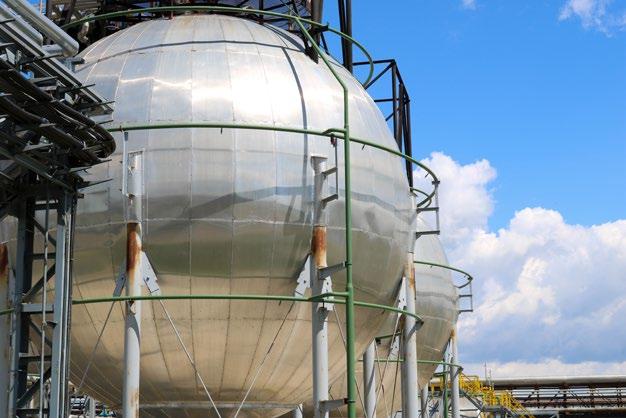
terminalling and technology expertise will enable us to fast-track the development of key solutions for importing low-carbon energy and feedstock. Fluxys aims to be a decarbonisation driving force and this project is a landmark venture in helping build the infrastructure to carry the molecules needed for a carbonneutral society.’
During the Hydrogen Council’s tour of Advario Gas Terminal, Nancy De Groof, Advario’s vice president Belgium says: ‘It was a pleasure to host the council, and I am grateful for their input and kind words. We believe in ammonia as a cornerstone of the clean energy mix, as an enabler of the hydrogen ecosystem, and are in advanced stages of a feasibility study, executed together with our partner Fluxy. The study explores the build of an ammonia import terminal in Antwerp.’
VOPAK PARTNERS WITH NESTE FOR SUSTAINABLE FUELS
Vopak recently commissioned tanks at its Penjuru terminal in Singapore, storing Neste renewable fuels for road transportation and renewable feedstock for polymers and chemicals. Neste is the world’s leading producer of sustainable aviation fuel, renewable diesel and renewable feedstock solutions.
‘We deeply value this long term partnership and collaboration with Neste. Our customers recognise the value of our network, innovative infrastructure solutions and high safety standards. We are excited to support regional and global acceleration towards the use of alternative energy and sustainable feedstocks,’ says Neeraj Kumar, director of commercial chemicals & business development new energies, Vopak Business Unit Singapore.
United Kingdom
Belgium
Stay informed with our round-up of all the news hitting the tank storage sector
PAGE 12 NEWS UPDATE ENERGY TRANSITION
Singapore
BJLM Series Tank Gauging System
Smart Tank Gauging System





BJLM-80H servo level gauge with a smart displacer forms a smart TGS in which multiple measurement functions are integrated in a single gauge, including the liquid level, density, temperature, oil-water interface. It provides accurate density measurement and custody transfer based in both volume and mass.
HIMS Tank Gauging System
The Hybrid Tank Measurement System conducts the measurements for the liquid level, temperature and density via several discrete instruments that are working together in one system. It provides the online temperature data via the MPT, and the average density data by the hi-precision pressure transmitter.
BJLM-80H Tank Gauging For LPG
BJLM-80H tank gauges with the MPF smart displacers are designed to set up a TGS for high pressure liquid stocks. It features with multiple functions being integrated in one gauge, especially for measuring density for a vaporized liquid, which is included in the calculation of the tankage inventory in mass, providing a more accurate data for the custody transfer.
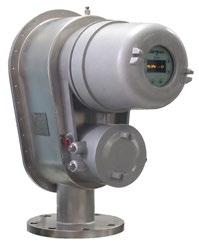


BJLM Tank Gauging For LNG
A whole LNG tank gauging system from JOYO consists of the primary and secondary level gauges, primary and secondary thermometers, the extra LTD gauge and a radar level gauge as the HH alarming instrument. All the instruments including LNG manager& Rollover Predictor software are all manufactured by JOYO.






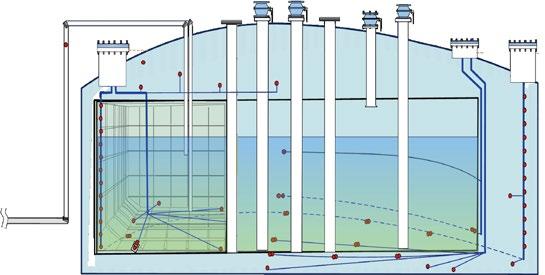












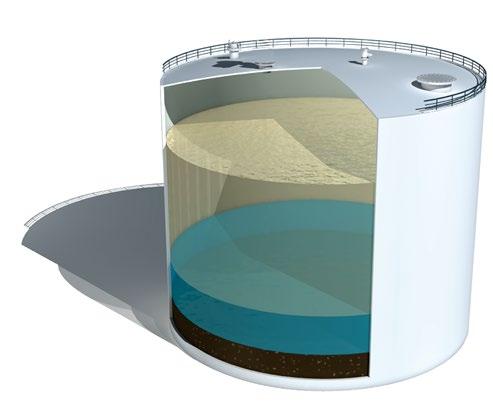












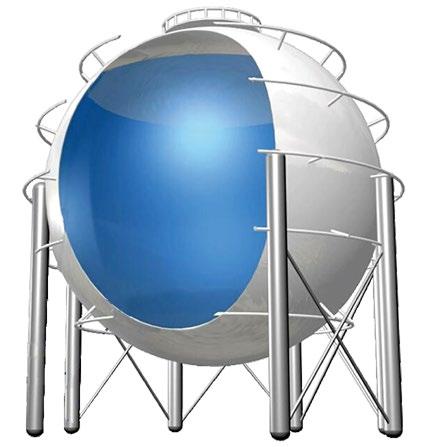
TM-80N LTD
TM-80N LTD gauges are designed mainly for the LTD (Level + Temperature + Density) measurements of cryogenic bulk stocks. With one integrated instrument in which multiple measurement functions are involved, aiming at providing a detailed and accurate LTD profile measurement.











O-W interface Density & Temp 2 Level Tank Bo�om Density & Temp 3 Density & Temp 1 Level BJLM-80H BJZT-IV MPT Water Probe SF Displacer Pressure Sensor Temperature Water Level Liquid Density& Temp 2 Vapor Density& Temp 1 Tank Bo�om Liquid Density& Temp 3 Liquid Density& Temp 1 Vapor Density& Temp 2 Level Oil-Water Interface Water Probe LTD Gauge Measuring Tape Smart MPF Displacer Density Sensor Temperature Sensor TP LTD TS A S SIS system DCS LSHH/LSLLL LSHH/LSLLL LSHH/LSLLL Modbus RTU Loop1 Modbus RTU Loop2 TS-I CIU P Roll over monitoring system CIU LNG Tank Gauging Management System JOYO M&C TECHNOLOGY CO., LTD www.joyo-mc.com info@joyotec.com

VTTI TO STORE MABANAFT HVO
VTTI’s terminal in Antwerp, Belgium is due to store store Hydrotreated Vegetable Oil (HVO) for its customer, Mabanaft. This HVO is destined to be transported to Germany and other parts of Europe.
HVO is a type of biofuel produced from waste, residue oils and fats, such as used cooking oil. Biofuels like HVO play a key role in the decarbonisation of mobility. The move is in line with VTTI’s strategy to support customers in the energy transition.
UNIPER TO DEVELOP HYDROGEN STORAGE
Uniper has announced plans to develop hydrogen storage in Germany with a capacity of up to 600 GWh by 2030.
The project will both investigate the possibility of converting existing underground facilities, as well as developing new facilities along the planned hydrogen core network.
‘Hydrogen is expected to play a key role in the energy transition, but in order to ensure reliable supply to the market, new storage is urgently needed. At Uniper we are investing in meeting that need, and today announce plans to develop salt caverns in north-west Germany for large volume hydrogen storage. The facilities will have an envisaged capacity of 250600 GWh by 2030,’ the company says in a post on LinkedIn.
With a total of more than 80 TWh of underground gas storage capacity for natural gas in Germany, Austria and the UK, Uniper is one of the largest energy storage operators in Europe.
In order to better forecast the demand for hydrogen storage capabilities as well as potential future projects, Uniper is also launching a comprehensive market consultation until the end of March 2024.
ROSEN RESEARCHES INDUSTRY KNOWLEDGE FOR ENERGY INSTITUTE
The Rosen Group has developed a research report commissioned by the Energy Institute to identify current knowledge gaps regarding repurposing natural gas infrastructure for hydrogen. The report is based on a literature review of all ongoing technical work, joint industry projects, and research in this field worldwide.
The goal is to consolidate all knowledge into a guidance document to enable pipeline operators and other energy companies to safely introduce hydrogen into existing natural gas infrastructure. The research report focuses on pipelines and certain associated installations from (but not including) the hydrogen production plant up to inlet valves.
Neil Gallon, principal engineer at Rosen says: ‘The conversion of existing natural gas infrastructure to the transportation of hydrogen is an important element of the energy transition. While the threats operators face with natural gas infrastructure are still relevant, there are certain characteristics of hydrogen that may increase the risk of some threats more than others. As hydrogen is a relatively new energy source, there are at this time some knowledge gaps that need to be addressed in order to safely use the existing assets while transitioning to a decarbonised future.’
H2MED PROJECT ENTERS NEW PHASE OF DEVELOPMENT
Enagás, GRTgaz and Teréga, in coordination with OGE, have awarded WoodCo contracts to conduct essential preliminary engineering studies for the BarMar project.
The scope of work includes analysing the various potential routes for the offshore pipeline to connect Barcelona to Marseille across the Mediterranean Sea. This comprehensive evaluation will allow to identify a preferred corridor for BarMar, and will consider technical, economic, environmental, and societal perspectives, emphasising the commitment of the three Transmission System Operators (TSOs) to a wellrounded and sustainable approach.
Given the cross-border and multidisciplinary nature of the BarMar project, the societal and environmental impact will be conducted by Tecnoambiente, supported by Francom and Natural Power. BarMar is part of the H2Med project. The H2Med project is composed of a hydrogen connection between Portugal and Spain (Celorico da Beira – Zamora) and a maritime pipeline connecting Spain to France (Barcelona – Marseille).
HYDROGEN COUNCIL DIRECTORS VISIT ADVARIO BELGIUM
The Hydrogen Council’s team of directors visited Advario’s facility in Antwerp, Belgium to see hydrogen working in action.
Steven Libbrecht, interim executive director, Daria Nochevnik, director policy and partnerships, and Andrei V.
Belgium
Switzerland
Germany
Spain
PAGE 14 NEWS UPDATE ENERGY TRANSITION
Belgium
Membrane Technology. For processes and environment.


→


Think. Create. Change.
The conscious and responsible use of energy and resources is already the basis for a sustainable and environmentally friendly circular economy.
Saving, recovering and recycling from industrial production processes are among the core competences of BORSIG membrane technology.
We offer modern, intelligent and innovative solutions for your processes. We guarantee the highest safety and quality standards, maximum efficiency and resource conservation for
- emission reduction
- minimised energy requirements
- sustainability
- environmental protection. BORSIG
Visit us at StocExpo 2024 in Rotterdam, Stand F30. www.borsig.de
Membrane Technology GmbH
VAPOUR RECOVERY TECHNOLOGY
SEPARATION & RECOVERY SYSTEMS
ORGANIC SOLVENT NANOFILTRATION (OSN) & PERVAPORATION
→ GAS
→


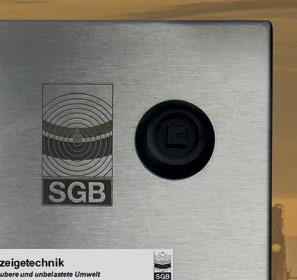

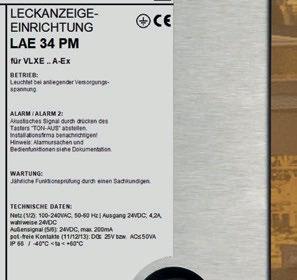




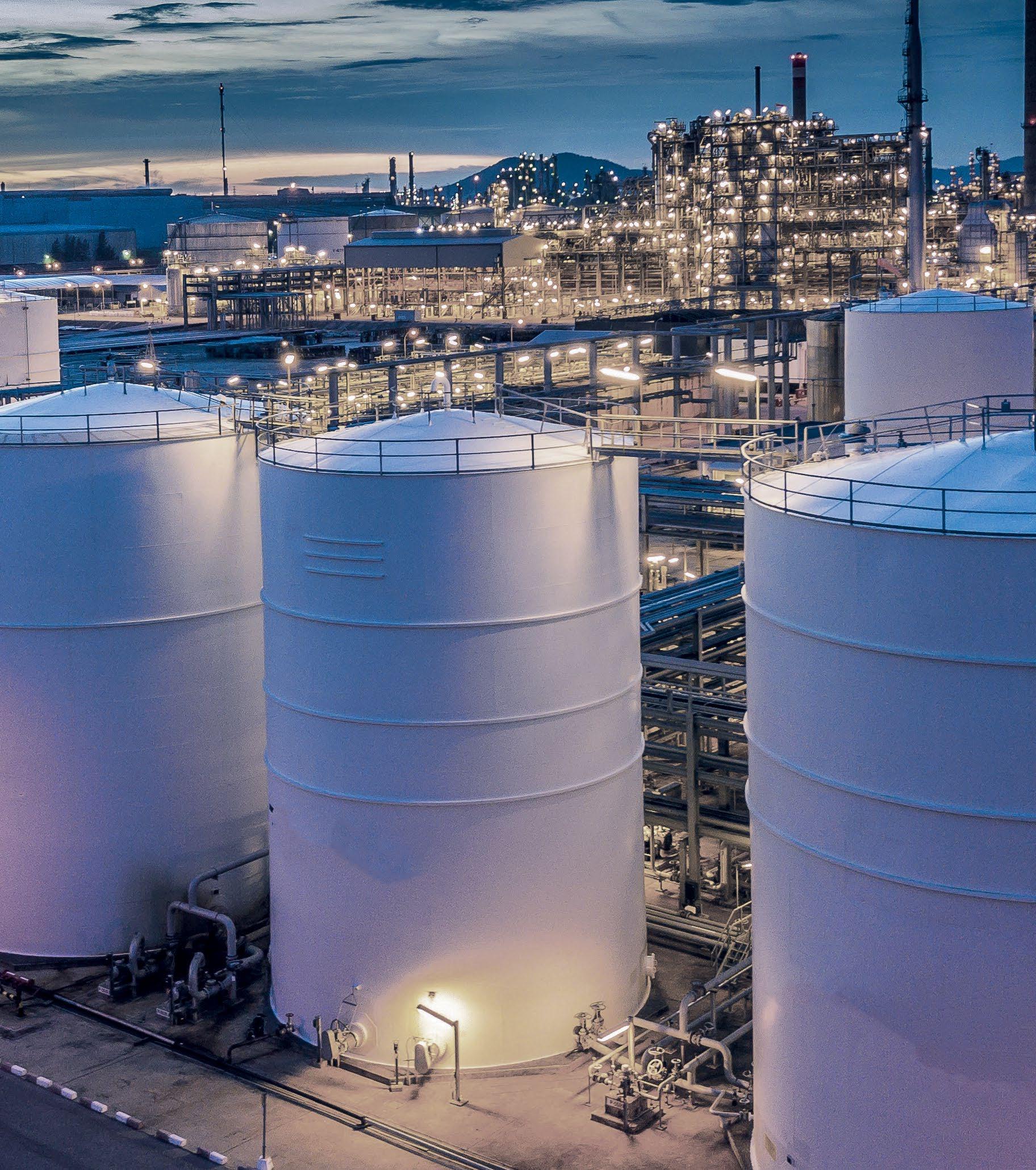



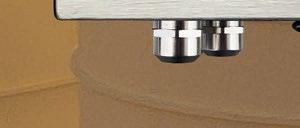

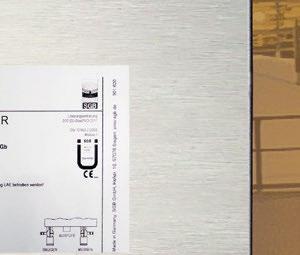


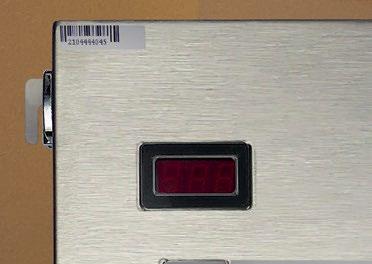


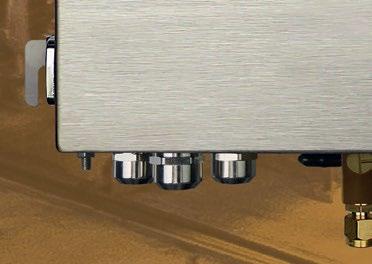




Tchouvelev, director safety and regulatory, toured the Advario Gas Terminal (AGT) and discussed the important role hydrogen carriers as ammonia play in the development of a hydrogen economy and the European need for import and export facilities for ammonia.
United Kingdom
TECHNIP ENERGIES TO PROVIDE FEED FOR VIKING CCS PROJECT
Technip Energies, supported by its subsidiary Genesis, has been awarded a Front-End Engineering Design (FEED) contract for the UK-based Viking CCS project, led by Harbour Energy and BP.
The project is expected to play a pivotal role in creating a globally leading CCS sector in the UK, contributing to the government’s target for net zero emissions by 2050. The project is focused on the transportation and storage of the captured CO2 into the depleted Viking gas fields. The initiative aims to reduce UK emissions by 10 million tonnes annually by 2030, increasing to 15 million tonnes per year by 2035.
Technip Energies, supported by its subsidiary Genesis, will provide FEED services for the CO2 transportation system, including the CO2 handling station, onshore and offshore pipeline and a NPAI (Not Permanently Attended Installation) platform.
Harbour Energy’s Viking CCS project director Graeme Davies says: ‘We’re delighted to be working with Technip Energies to help deliver another important milestone for the Viking CCS project.’
Jim Todd, BP JV manager for Viking CCS, adds: ‘After three years in development, the Viking CCS project is now entering the FEED phase. This is a significant step in the journey of any project, and we are excited to welcome Technip Energies as the FEED contractor, paving the way for large-scale CCS in the South Humber and North Lincolnshire region.’


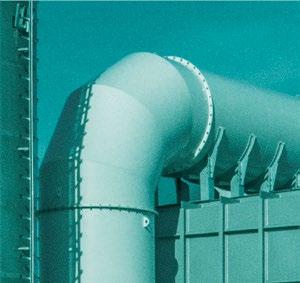

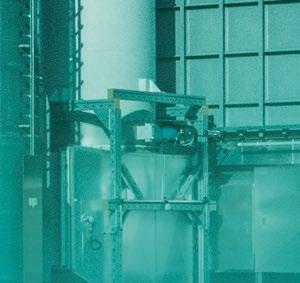




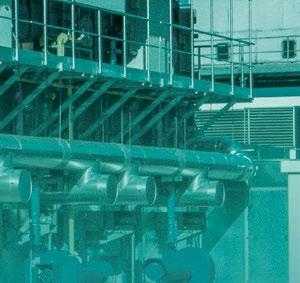











PAGE 17 TERMINAL NEWS XXXXXXXXX NEWS UPDATE ENERGY TRANSITION
United Kingdom
VTTI’S BIO-ENERGY FACILITY REACHES FINAL STAGES
VTTI’s bio-energy facility in Tilburg, Netherlands, is now in the final stages of construction. The facility represents a significant contribution to the biobased circular economy and renewable energy transition. It is the most modern VTTI facility to date, incorporating the best available technologies.
At VTTI bio-energy Tilburg, the focus is on sustainability and innovation. The facility will primarily utilise organic side streams from the agricultural sector and food industry such as potato peels and animal manure minimizing environmental impact and maximising resource value.
As highlighted in the Energy information Administration (EIA) Renewable Report 2023, the utilisation of biogas and biomethane plays a crucial role in building a circular economy around residue and waste. This approach not only fosters rural economic development and creates employment but also aligns with the emissions reduction objectives of the Global Methane Pledge, signed by 155 countries as of January 2024.
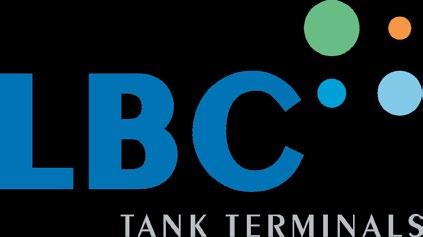
ESSAR OIL UK BECOMES EET FUELS
Essar Oil UK has become EET Fuels as it delivers on its plan to become the UK’s first low carbon refinery, setting the global benchmark for lower emitting refineries and industrial decarbonisation.
For a century, the refinery based at Stanlow, on the River Mersey, has provided the fuel and chemical building blocks that people rely on for their everyday lives. EET Fuels remains committed to sustainably meeting the energy needs of the country.
EET Fuels is investing €1.11 billion to support industrial decarbonisation, with the ambition to deliver a 95% cut in carbon emissions associated with its production processes by 2030.
Deepak Maheshwari, CEO, EET Fuels, says: ‘This is an exciting time for our business. We are delivering on our plan to be the world’s first low carbon process refinery and world’s first low carbon process fuel producer. It is world leading and we’re pleased that it is happening now, in the North West.’
‘EET Fuels is a key part of EET, which is building Europe’s foremost integrated energy transition hub. Leading by example, Essar Energy Transition is a major catalyst for region-wide industrial decarbonisation. We are playing our part to ensure that the UK delivers on its climate change goals, enhances energy security, and maintains a strong, secure manufacturing base for fuels,’ adds Prashant Ruia, chair, EET Fuels and CEO, Essar Energy Transition.
France
EXOLUM AWARDED TENDER FOR FUEL TERMINAL AT PARISCHARLES DE GAULLE INTERNATIONAL AIRPORT
Exolum has announced it has been awarded the tender for the operation and maintenance of the fuel terminal at Paris-Charles de Gaulle international Airport, in Paris, France. The concession, granted by Groupe ADP (Aéroports de Paris) and for which operations are expected to start in April



YOUR CONNECTED PARTNER FOR SUSTAINABLE STORAGE SOLUTIONS Connect with us
www.lbctt.com
Netherlands PAGE 18 NEWS UPDATE ENERGY TRANSITION
Specialist Training for the Storage Tank Industry
Classroom, live online, blended, in-house, and e-learning
Gain or renew up to 5-year Certificates of Competence* Courses based on EEMUA 159
In English, Dutch, German and French Courses each year, including:
TankAssessor courses *
26-29 February 2024 – in Dutch –live online
18-21 March 2024 – in French –classroom – Près de Paris, FR
15-18 April 2024 – in German –classroom – Hanover, DE
20-23 May 2024 – in English –classroom – London, UK
27-30 May 2024 – in English –live online – KSA time zone
TankInspector courses *
4-6 March 2024 – in Dutch –live online
8-10 April 2024 – in French – classroom – Paris, FR
16-18 September 2024 – in English –live online – CSA time zone
28-30 October 2024 – in English –classroom – London, UK
TankBasics courses
16 September - 25 October 2024
–in English – blended learning (live online, e-learning, and more)
S torage Tanks e-learning On-demand – in English and in Dutch
In-house courses
By arrangement for your choice of: time, language, location
Also... Meet EEMUA at StocExpo 2024 Main Conference Seminar 11 am on 12 March and EEMUA's Stand – F45

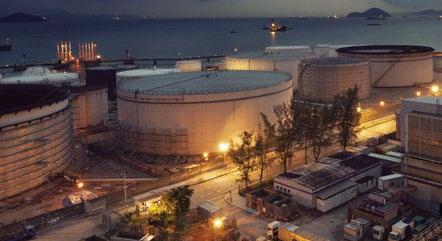
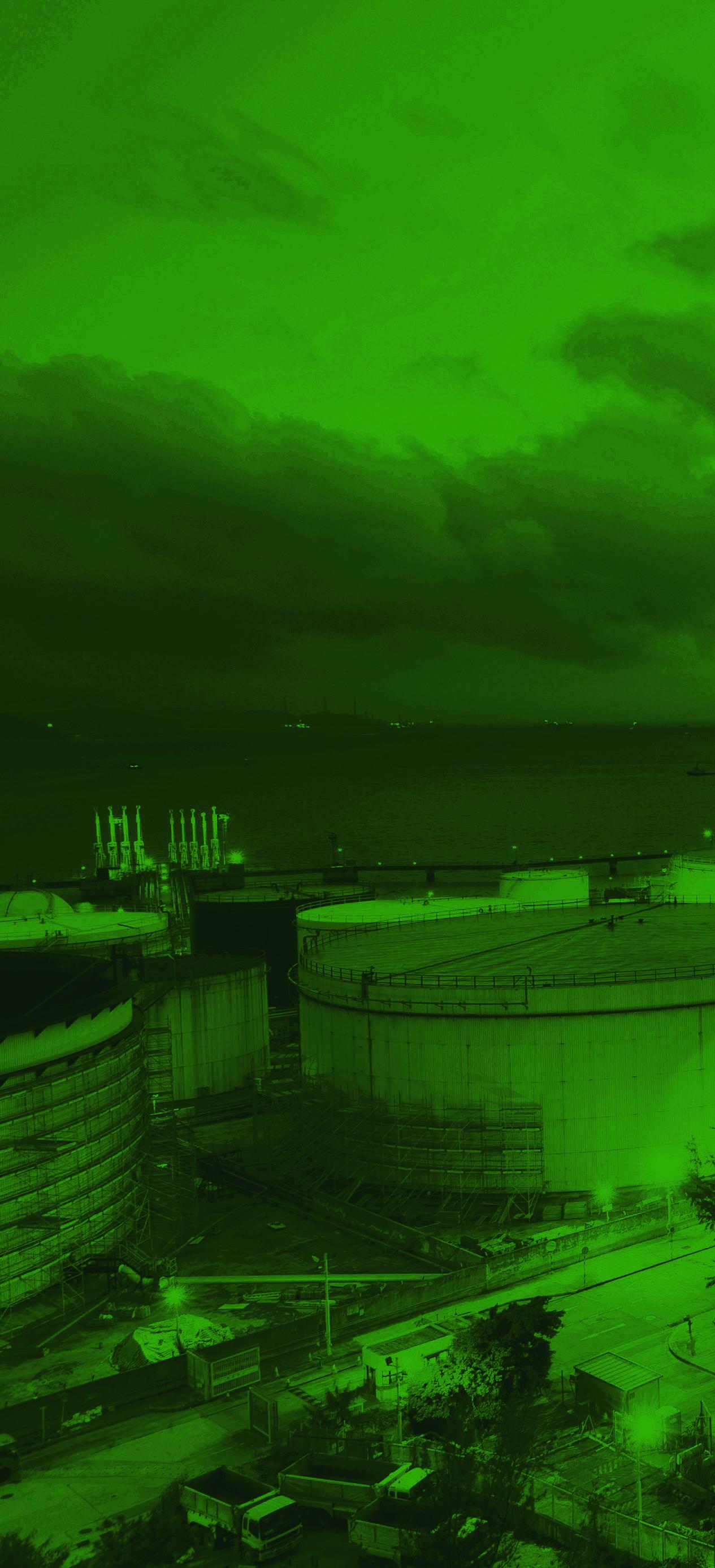



More choices, information and registration at www.eemua.org

Above ground flat bottomed storage tanks A guide to inspection, maintenance and repair Pub icat on 159 Edition 5 . . . .
heating transition,’ says Arne Hauner, director of innovation at Uniper.
The project is an interplay of various components. The production facilities at the Herne site generate waste heat in varying quantities. The cooling water required in the processes heats up in the plants and now serves as a heat source.
The waste heat is not released into the environment unused, instead it is raised to the required temperature level of over 100°C for the district heating network by the high-temperature heat pump and with the help of renewable energy.
Around 1,000 households in Herne benefit from the heat pump. The CO2 savings amount to around 1,750 tonnes per year.
United Kingdom
EXOLUM TO CONSTRUCT GREEN HYDROGEN PRODUCTION PLANT IN TEES VALLEY
Exolum is going to construct a green hydrogen production plant and refuelling station at its Riverside terminal in Stockton-on-Tees, UK
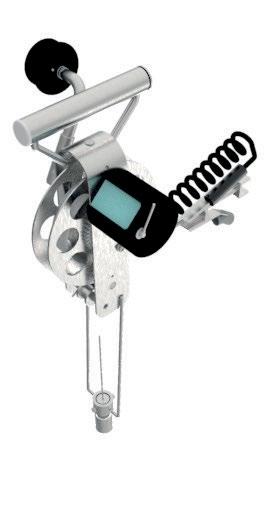

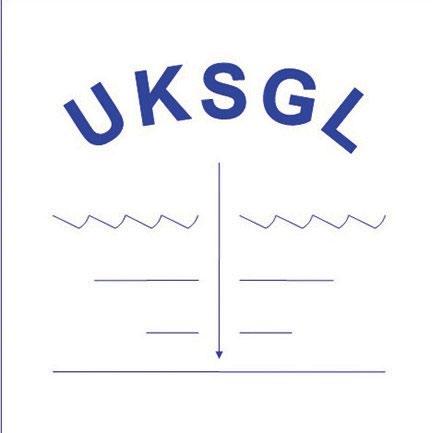
as part of the Tees Valley Hydrogen Vehicle Ecosystem project.
Exolum has been awarded £2 million as part of the Tees Valley Hydrogen Transport Hub, which is funded by the Department for Transport and delivered in partnership by Innovate UK, to construct the hydrogen refuelling station.
Exolum’s consortium partners have been awarded a further £5 million under the same scheme to deploy at least 20 hydrogen fuel cell trucks in the region.
The project will lead to a first-of-a-kind coordinated deployment of hydrogen refuelling infrastructure and fleets of fuel cell trucks in the Tees Valley and is a vital step towards the development of a nationwide network of hydrogen refuelling stations.
The planned project will feature the construction of a water electrolyser and a hydrogen refuelling station. The electrolyser will produce green hydrogen using renewable electricity and will supply both the refuelling station, with a capacity of 1.5 tonnes per day.
The Tees Valley Hydrogen Vehicle Ecosystem is a vital first step towards the development of a nationwide network of hydrogen refuelling stations, serving as a model for other regions to deploy similar hydrogen mobility ecosystems. This project will help accelerate the UK’s



transition to zero- emission fuel cell vehicles and reduce carbon emissions in line with the UK’s net zero ambition.
Andrés Suarez, clean energies lead at Exolum says: ‘This project in the UK comes in addition to others we have under development and others already fully implemented, such as the first hydrogen plant for mobility in Madrid, Spain.’
Australia
AUSTRALIA TO DEVELOP PILBARA HYDROGEN HUB
The Australian government has announced a AUD$140 million (€85 million) agreement with the Western Australian government to progress a hydrogen hub in the Pilbara region of western Australia. It is the seventh hydrogen hub funded by the Australian government, with more than $500 million (€303 million) invested to support the development of the hydrogen industry.
The Pilbara Hydrogen Hub will serve as a prominent centre for hydrogen production and export, with potential to emerge as a global gateway for Australiamanufactured green steel and iron. It


UK Sampling Gauges Ltd
Our manual sampling equipment, for liquids, are not only operator friendly, but environmentally friendly too! Our unique design of the samplers ensures representative samples are taken time after time.
Reliability is a key feature of UK Sampling Gauges Ltd equipment that will help to avoid repetitive sampling saving time and money! The analysis is only as good as the sample. With a range of ATEX and IECEx approved open and closed sampling systems, contact us to discuss your sampling requirements, training needs or to book a demonstration (at the UKSGL factory or on customer site).
sales@samplinggauges.com I www.samplinggauges.com
sales@samplinggauges.com I www.samplinggauges.com


Download our free UKSGL app to access to our product videos and
brochures.
PAGE 20 NEWS UPDATE ENERGY TRANSITION
is expected to be operational by mid2028, with construction of necessary infrastructure and road intersections commencing this year.
The Australian and Western Australian governments will each contribute $70 million to the project, primarily directed towards building essential infrastructure supporting hydrogen exports and renewable energy production. Funds will be allocated for the establishment of a Clean Energy Training and Research Institute, focusing on practical, job-oriented training in renewable energy and hydrogen for Pilbara residents, including First Nations peoples.
CEO of the Australian Hydrogen Council Dr Fiona Simon says: ‘We would like to congratulate the Australian government, state governments and industry for investing in the Australian Hydrogen industry through seven regional hydrogen hubs strategically positioned across Australia. These hub projects are being led by world-leading developers and partners, and will need continued support from all levels of government to address common user infrastructure, social licence and regulatory requirements. Hydrogen has a clear role to play in meeting Australia’s net zero ambitions especially for the hard-to-abate sectors, so we now need to focus on implementation and continue to share and learn from these large-scale projects to accelerate the transition and drive down the cost of hydrogen.’
VOPAK USA INVESTS IN ELECTRICITY
Vopak is investing in new infrastructure for electricity in the USA. Vopak will own and operate two stand-alone lithium-ion battery energy storage systems near Houston, Texas.
This project marks Vopak’s first entry into electricity storage in the US, and is part of Vopak’s strategy to accelerate towards new energies.
In March 2024, the first 10MWh is expected to be placed into service. The second 20 MWh project, is planned to come into service in Q4 2024. This project is part of its strategy to accelerate towards new energies.

Customised tank mixing solutions
Essential advantages with Körting tank mixing systems:
• low energy input
• no sealing problems
• low investment costs
• no unmixed dead zones
• wear-resistant operation
• no maintenance in the tank
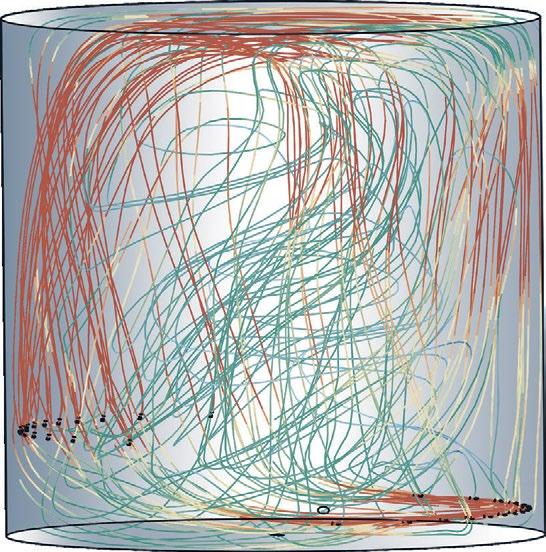
• complete mixing of tank content
• optimisation with (CFD)
Computational Fluid Dynamics
+49 511 2129-221 | sales@koerting.de | koerting.de
USA
United Kingdom
TSA APPOINTS NUNZIA FLORIO AS COMMUNICATIONS DIRECTOR
The Tank Storage Association (TSA), the trade association representing all aspects of the UK’s bulk storage and energy infrastructure sector, has announced the appointment of Nunzia Florio as communications director.
Florio brings to the role a wealth of experience in communications, media and external affairs and has led the association’s communications functions since 2019 as communications specialist.
Peter Davidson, executive director of the Tank Storage Association, says: ‘Nunzia’s expertise will be invaluable in supporting us to further develop our communications vision for the future, deliver the exciting new initiatives we are setting out for the months and years ahead, continue to build on our relationship with influential external stakeholders, and champion the value and benefits of a thriving, resilient bulk storage and energy infrastructure sector in the UK.’
Florio says: ‘I am delighted to join the TSA in this capacity and privileged to have the opportunity to champion our sector and the key contribution it makes to complex supply chains, growth, mobility and resilience. I look forward to continuing to work closely with our members to share our industry’s ambitions for the future.’
Malaysia
TECHNIP ENERGIES UPDATES ON PETRONAS MELAMINE PROJECT
In February 2022, Technip Energies was awarded the engineering, procurement, construction, and commissioning (EPCC) contract for a new Melamine Plant at Gurun, Malaysia, by Petronas Chemicals Fertiliser Kedah. In a post on LinkedIn, the company provided an update on the progress of the project.
Technip Energies has made significant progress in the installation of key equipment, including the crystallizer and hydrolyzer. The team has demonstrated its commitment to safety, reaching 2.4




million safe man-hours by the end of 2023. Technip Energies is committed to delivering a new plant that will utilise advanced melamine technology and existing interconnections with the existing urea plant to minimise its CO2 footprint.
Apart from progress on the plant, the project team demonstrated its commitment to the local community by sponsoring the installation of the town signage for Gurun. This was launched in a special ceremony in October 2023.
Netherlands
ADVARIO WELCOMES SNEHASHISH CHATTERJEE AS CPSO
Advario has announced that Snehashish Chatterjee is joining the Advario leadership team, in the new chief projects and safety officer (CPSO) role. As CPSO, Chatterjee is responsible for the safe and timely execution of Advario’s projects, across its global portfolio. He also leads various procurement organisation, and drives excellence in safety.



Higher suction capability and dry run
Pump multiple products with a wide range of viscosities with only one pump
From light fuels to heavy crude, asphalt, bunker n.6, molasses, palm oil and more. Contact us, we will find the optimal solution for your application.
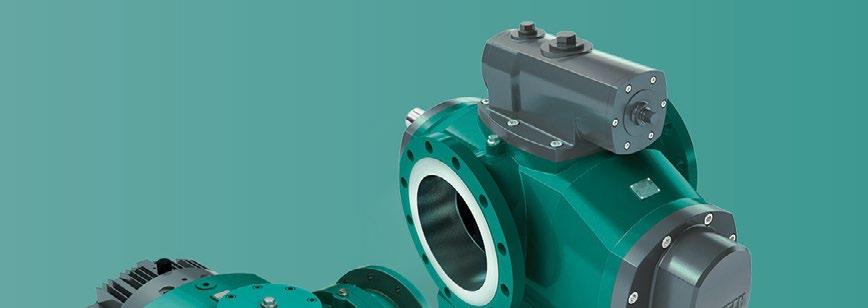





We support you from commissioning, maintenance, repair and to modernization of your pump.

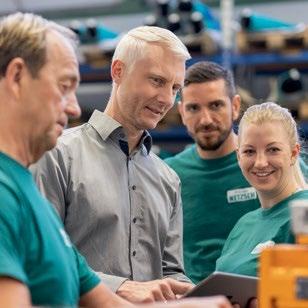





Partnership
does not end with the purchase
Your local US Manufacturer for pumping complex fluids NETZSCH Pumps USA Exton, PA, Tel: 610-363-8010 Houston, TX, Tel: 346-445-2400 npa@netzsch.com www.pumps-systems.netzsch.com Empty your tanks faster and e ciently with a Positive Displacement Pump
Exchange centrifugal pump technology to positive displacement technology to realize:
Tank emptying with reduced dead volumes
Tank Storage 175x120 print quarter page.indd 1 10/9/2023 1:58:31 PM
PAGE 22 NEWS UPDATE COMPANY ANNOUNCEMENTS
Chatterjee has been with the company and its predecessor Oiltanking for 25 years starting his career as a trainee engineer in his home country India. In the years that followed, he has held a variety of roles, across a variety of countries. He has been instrumental in building the team and terminal in Oman, led projects in Indonesia, before spending years as VP of Advario’s Southeast Asia cluster. In 2023, he moved into the VP commercial role, located in its Rotterdam HQ.
EXTENSION GRANTED FOR DRIFTWOOD LNG TERMINAL
US LNG terminal developer Tellurian has secured more time from the US FERC to complete the construction of its Driftwood LNG project in Louisiana, USA.
In April 2019, the FERC authorised Driftwood LNG to site, construct, and operate facilities for the liquefaction and export of natural gas in Calcasieu Parish, Louisiana. The project scope includes a 27 million tonnes per annum LNG terminal and 48-inch interstate natural gas pipeline system.
Authorisation was on the basis that the Driftwood terminal and pipeline should be fully completed and made available for service within seven years.
However, Driftwood requested an additional 36 months to complete construction of the LNG terminal and the pipeline and place the entire project in service.FERC granted the extension, giving both Driftwood LNG and the pipeline until April 18, 2029.
‘Because we find that Driftwood has demonstrated good cause for delay and progress in developing the projects, we will grant the requested threeyear extension of time to complete construction of the Driftwood LNG terminal and Driftwood Pipeline project,’ the FERC says.


PROFOX-X Learn more about our smart actuators PROFOX-X ACTUATORS SAFETY THANKS TO CERTIFICATION profox.auma.com
AUMA
PAGE 23 TERMINAL NEWS AFRICA & THE MIDDLE EAST NEWS UPDATE COMPANY ANNOUNCEMENTS
USA
INTERNATIONAL ENERGY WEEK ANNOUNCES ED MILIBAND AS SPEAKER
International Energy Week 2024 welcomes Ed Miliband, the UK’s Shadow Secretary of State for Energy Security and Net Zero, as keynote speaker on the opening day of the event.
With a UK general election on the horizon, the former and prospective Energy Secretary will outline how a future Labour government would address the challenges posed by the energy and climate crises, both domestically and internationally.
Miliband has been MP for Doncaster North since May 2005 and, between 2010 and 2015 was Leader of the Labour Party. From 2008-2010 he was UK Secretary of State for Energy and Climate Change, a brief he now covers again in opposition as Shadow Secretary of State for Energy Security and Net Zero.
He is also a co-chair of IPPR’s Environmental Justice Commission and the chair of Doncaster’s Climate Change Commission, both helping to develop ideas and policies to bring about a rapid green transition that is fair and just.
USA
MESA INDUSTRIES PROMOTES ADAM VANCE TO GENERAL MANAGER
Mesa Industries, the parent company of Mesa ETP and Gunite Supply & Equipment, proudly announces the promotion of Adam Vance to the newly created position of General Manager.
Adam Vance, an experienced leader, technical expert, and innovator in the petroleum industry, has been an invaluable asset to Mesa Industries since joining in 2018. Previously serving in a senior management role at Mesa ETP, Vance led business innovation, engineering, and quality, overseeing the design of top-quality customengineered solutions for aboveground storage tanks and the construction industry. Vance played a key role in the successful integration of industry leader WG Seals into Mesa ETP’s Engineered Tank Products division. With
15 years of engineering, operations, and management experience, Vance brings a wealth of knowledge to his new position as general manager.
‘I am honoured to take on the role of general manager at Mesa Industries,’ says Vance. ‘I am committed to building on our successes, fostering innovation, and ensuring the continued growth and success of our company.’
Mexico
VOPAK’S COATZACOALCOS TERMINAL CELEBRATES 24 YEARS INCIDENT FREE
Vopak’s Coatzacoalcos Terminal in Mexico has achieved a impressive milestone of 24 years free from reportable incidents. This means that no one has been seriously injured while working at the terminal in the past 24 years, and there have been no spills.
In a post on LinkedIn, Vopak congratulated the team on this safety achievement. The post states: ‘Safety is Vopak’s highest priority, we strive to ensure that everyone can return home safely at the end of each working day.
EXOLUM OBTAINS ‘TOP EMPLOYER 2024’ CERTIFICATION
Exolum has received the ‘Top Employer 2024’ certification, a recognition that places it as a company with the best practices in human resources management.
This certification positions Exolum as one of the 2,300 companies across the globe and 137 in Spain that stand out for their excellence in people management practices after undergoing a rigorous evaluation process.
Top Employers Institute, the organisation granting the recognition, values the efforts made by the company in HR, after the successful completion of three stages consisting of an HR best practice survey, validation and audit which are required in order to be eligible for the certification. For such purpose, 20 different topics were analysed and assessed during the process, including workforce planning, talent acquisition, employee wellness programmes and social learning, among others. These qualities were assessed following a process audited by an independent body.
Cristina Jaraba, Exolum’s global people lead, says: ‘We are extremely proud of this recognition, which positions us as a Top Employer for 2024. This certification proves Exolum’s efforts in managing its workforce by promoting values such as diversity and equality and favouring work-life balance, talent attraction and professional and personal development.’

United Kingdom
Global PAGE 24 NEWS UPDATE COMPANY ANNOUNCEMENTS

FIRE DETECTION FOR INNER FLOATERS MAINTAINABLE WHILE OPERATION CONTINUES






INNOVATION FOR DOME-ROOF
TANK PROTECTION
NEW! CLEARVIEW VISIT US AT STAND C4 systems@saval.nl SAVAL.NL Ad ClearView-CFI-StockExpo-A5-2024_drukwerk.indd 1 8-2-2024 15:02:04
EMERSON NAMED ‘INDUSTRIAL IOT COMPANY OF THE YEAR’
Technology and software company, Emerson has been named IoT Breakthrough ‘Industrial IoT Company of the Year’ for the sixth time.
The 2024 award recognises Emerson’s advances in sustainability-enabling technologies and software, efforts to accelerate the development and delivery of life-saving drugs, and the company’s Boundless Automation vision of a nextgeneration, software-defined industrial automation architecture.
Lal Karsanbhai, president and chief executive officer of Emerson says: ‘We are honoured to receive this award that recognises the value Emerson delivers to help customers in so many critical industries achieve their maximum performance.’
The award also recognises Emerson’s leadership in developing digital technologies aimed at accelerating drug development. The company recently announced One-Click Technology Transfer software that will convert today’s life sciences manufacturing recipe transfer process into a digitalised production platform, helping get new drug therapies to patients faster.
‘Emerson is a consistent winner of our Industrial IoT Company of the Year award because of how effectively it leverages its decades of expertise in digitalisation and automation to help industry leaders transform their operations to address the needs of the future,’ adds Steve Johansson, managing director at IoT Breakthrough.
GLOBAL ENERGY TALENT INDEX EXAMINES AI IN OIL AND GAS
The eighth annual Global Energy Talent Index (GETI), has released a report which has highlighted a cautious approach to AI adoption in the oil and gas industry, wide interest in AI skills development, and a slowing of salary growth.
According to the report, produced by Airswift, 24% of oil and gas professionals already use AI – somewhat behind the industry average of 27%. A further 10 % are expecting to adopt AI within six months. Nearly half (47%) of

professionals feel very optimistic about the future impact of AI, with many anticipating an uplift in their personal productivity (71%), improved career progression opportunities (58%) and increased job satisfaction (58%). Over 53% believe it will positively impact time spent with family and friends.
Nearly all respondents to the GETI 2024 report say AI will increase demand for skills, with two thirds (62%) of oil and gas professionals expecting AI to increase pressure on them to acquire new skills.
Reflecting on the findings of the GETI 2024 report, Janette Marx, CEO of Airswift, says: ‘Our report underscores the need for a delicate balance between technological advancement and nurturing the skills of our workforce.
As we see a modest stabilisation in salaries and a high willingness for global mobility, the area to watch now is how companies embrace AI.’
The report also indicates a flattening in salary growth, with 48% of professionals reporting a pay rise this year, a modest increase compared to previous years. 69% of professionals are optimistic of a pay rise next year, a sentiment that is shared by hiring managers.
With an international pipeline of new projects, 83% would consider relocating, compared with 81% in 2023. Asia enters the top three desirable destinations for relocation, behind Europe and the Middle East. The demand for oil and gas skills remains strong, both within and beyond the sector, with 81% having been headhunted in the past year. However, there is a hesitancy to join other industries, with only 19% considering such a move.
ESSAR TO PARTNER WITH TOPSOE AT STANLOW REFINERY
Essar Oil UK has selected Topsoe as a second key licensor technology provider for the planned EET Industrial Carbon Capture (“ICC”) facility based at Stanlow, UK.
This is a pivotal step towards Essar’s $1.2 billion (€1.1 billion) investment in decarbonising the Stanlow refinery, by reducing around 2 million tonnes of CO2 emissions, making it the world’s first low-carbon refinery and a producer of low carbon fuels.
Topsoe will provide its sustainable fluegas treatment technology SNOXTM.
Deepak Maheshwari, CEO of Essar Oil UK, says: ‘The industrial carbon capture facility, combined with our upcoming hydrogen fuel switching project, will reduce the refinery’s CO2 emissions by 95%. Topsoe is a valuable partner in this endeavour. With Topsoe’s SNOM technology we are getting a proven and highly sustainable flue-gas treatment.’
EMERSON LAUNCHES PILOT-OPERATED RELIEF VALVE
Emerson has introduced the Fisher 63EGLP-16 Pilot Operated Relief Valve for installation on pressurised bullet tanks used to store liquid propane and anhydrous ammonia.
The new pressure relief valve (PRV) is certified under UL132 and American Society of Mechanical Engineers (ASME) Section VIII.
With a pre-installed national pipe tapered (NPT) thread standard 2-inch male hex
Global Energy Talent Index (GETI)
Emerson
Emerson
Essar Oil UK
TERMINAL NEWS XXXXXXXXX PAGE 26 NEWS UPDATE TECHNICAL NEWS
nipple, this new product serves the need for a solution with a 2-inch connection that provides the same benefit as traditional multi-ported valves, but with simplified installation and maintenance. For this application, the PRV must be connected directly to the tank, with no isolation valve between the tank and the PRV. This National Fire Protection Association (NFPA) 58 code requirement presents challenges when testing the PRV while the tank is pressurised and in operation.
The Fisher 63EGLP-16 Pilot Operated Relief Valve addresses this and other issues because it is the only pilotoperated relief valve on the market designed specifically for this type of service. Operation is implemented with a dual pilot array, providing redundancy, and allowing for removal of one pilot for testing while the other is operational.
Because this is a critical safety-related application, reliable operation over a long lifecycle is needed. This requirement is met by the 2-inch PRV because it is similar in design to the Fisher 63EGLP 4-inch CL300 model, which has been proven in use over the past 10 years.
GEROTTO ANNOUNCES IECEX CERTIFICATION PROCESS AND UL COMPLIANCE FOR ROBOTS
Italian company Gerotto, has begun a process that will lead – by the first half of 2024 – to the UL compliance, valid in North America, and to the international IECEx certification of its robotic systems for cleaning tanks inside refineries and tank terminals.
Alessandro Gerotto, CEO of Gerotto says: ‘This project is a key step in our industrial growth plan, which includes a deeper penetration in strategic oil and gas markets. Our company’s international vocation leads us to face technological challenges with a focus on operator safety and improving the working conditions of women and men around the world.’
‘IECEx certification and UL compliance are a key step in strengthening our positioning in markets where we are already present such as Australasia, North America and Africa. Thus, the range of tank cleaning robots becomes even more versatile and allows us to meet cross-cutting needs of contractors and asset owners and we are confident that it will bring added value to our customers and partners,’ adds Daniel Devò, Gerotto’s export sales manager.

TERMINAL NEWS AFRICA & THE MIDDLE EAST
Gerotto
PAGE 27 TERMINAL NEWS AFRICA & THE MIDDLE EAST NEWS UPDATE TECHNICAL NEWS


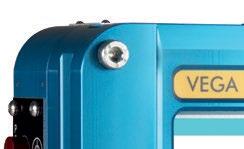


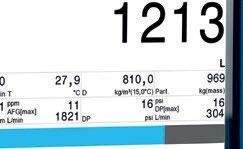








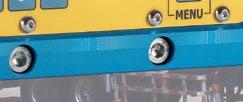







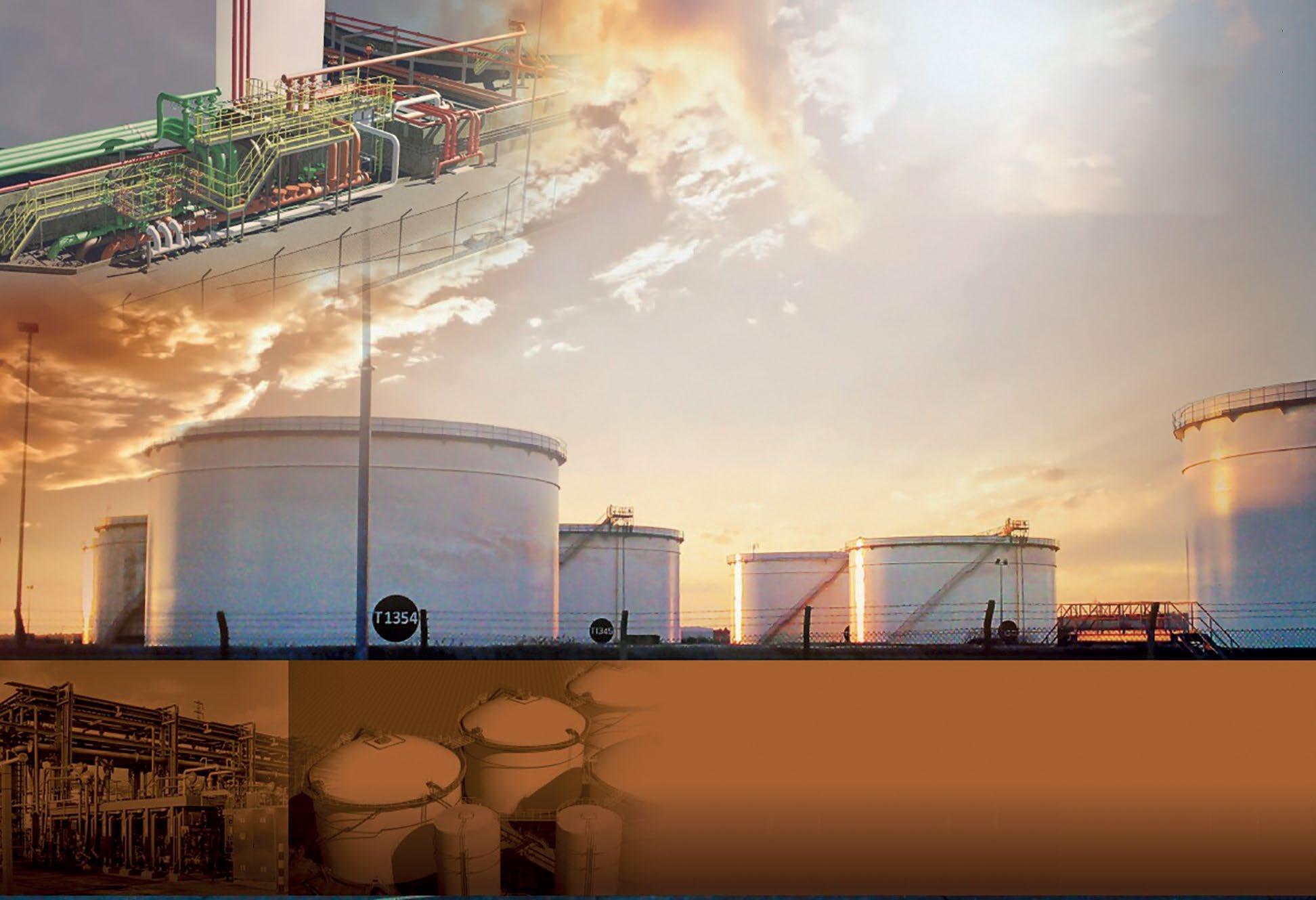
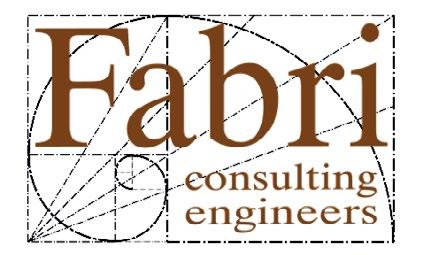
VEGA T2 Electronic Batch Controller Wi-Fi & Bluetooth Compatible Freeware Windows Toolkit ATEX- IECEx Approved Large Colour Display ISOIL Impianti S.p.A. - Italy Tel. +39 02 91988 5 - Email: sales@isoil-impianti.it - www.isoilmeter.com for Loading Operations Flow Metering and Automation Solutions for the Oil Industry Specialising in Downstream Oil and Aviation, Fabri Consulting Engineers provide Clients with the requisite engineering and management expertise to safely and effectively deliver Projects to existing and new terminals throughout the UK, Europe, Asia and Africa. Fabri project managers and engineers work closely with clients, contractors and suppliers to ensure the projects are delivered trouble free. FEED Studies | Process Design | Project Management | EC&I/Mechanical and Civil Design | Procurement, Scheduling and Cost Control | ATEX Inspections and Compliance | HAZOP/LOPA Studies | 3D Surveying/Modelling | Commissioning In summary, all aspects of an operational downstream terminal, from minor works to complete terminal redevelopment. Contact us at info@fabriconsult.com to discuss your requirements. To learn more visit www.fabriconsult.com or call us on +44(0)141 95 45 991
ANDERSON PROCESS ACQUIRES TIGHEZEMAN EQUIPMENT LLC
Anderson Process, one of the US Midwest’s leading suppliers of process equipment, repair and services, has acquired long-standing manufacturer’s representative TigheZeman Equipment LLC.
Since 1952, Tighe-Zeman Equipment has been providing solutions throughout Wisconsin and the Upper Peninsula of Michigan. For over 70 years, the company has specialised in mixers, pumps, tanks and engineered systems. Its target markets are general process, food and beverage, biopharma, pulp and paper, power, chemical and municipal. This acquisition capitalises on complementary product offerings between the two companies. It also strengthens relationships with customers and offers them leading brands, including SPX mixers, WatsonMarlow pumps and Belding Tank Technologies.
‘Tighe-Zeman Equipment is very pleased to have become a part of Anderson Process,’ says Tighe-Zeman Equipment owner Dan Tighe. ‘This provides us with the opportunity to utilize our well-known knowledge and experience of mixers, tanks and peristaltic pumps and provide expanded coverage and penetration into the marketplace. This will provide better support for our customers and coverage for our principals.’
Anderson Process has warehouse and service locations in Wisconsin, Illinois, Indiana, Michigan, Ohio and Minnesota. With physical locations in those US states and a sales team spread across eight states in the Midwest, Anderson Process can provide the physical presence necessary to specify and supply a comprehensive line card of process equipment.
With the acquisition of Tighe-Zeman Equipment, Anderson Process now has 175 fluid-handling professionals.

EEMUA Training for Mechanical Integrity with reality built
in…
Developed and verified ‘for industry, by industry' , Mechanical Integrity courses come with reality bu industrial engineers at every career stage. For effic with primary containment – to prevent loss of haza
• Satisfy industry requirements at each competency level – Awareness, Basic application, Practitioner.
• Certificated courses – through robust examination, valid up to 5 years.
• CPD-approved courses.
•Flexible delivery to suit learners and companies
– Blended, Live online, Classroom, E-learning, In-house
• Available to all – free or discounted to EEMUA Members.


• Select from courses throughout each year, including:
Mechanical Integrity Practitioner Certificate (MIPC®) – blended, live online learning for on-site application of EEMUA 177, 231 and 232 guidance, and the PSSR ACOP –certificated for 5 years via a proctored exam and portfolio assessment – the Next course begins on 4 March 2024 and runs for 27 weeks, at 4 hours per week. The MIPC course adapts to the engineering needs of each Learner, company and site through a 2-hour induction to fit work from 5 February 2024

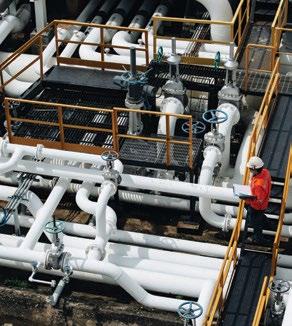


EEMUA 231 Mechanical Integrity Basics – certificated via exam –blended, online learning – at the Basic application competency level –4 hours of learning per week for 3 weeks – Next course starts 26 February 2024
EEMUA 231 Mechanical Integrity e-learning – set at the Awareness level – immediately available on-demand – course with Continuing Professional Development approval.
EEMUA 231 Mechanical Integrity In-house training – running over a whole-day or 2 half-days – set at the Awareness level – by arrangement, for your choice of time, location, and learning method – Certificated, Continuing Professional Development approval

online-learning@eemua.org
+44 (0) 20 7488 0801
www.eemua.org
TERMINAL NEWS AFRICA & THE MIDDLE EAST
MeetEEMUA atStocExpo2024 StandF45
PAGE 29 TERMINAL NEWS AFRICA & THE MIDDLE EAST NEWS UPDATE TECHNICAL NEWS
Anderson Process
INCIDENT REPORT
A summary of the recent explosions, fires and leaks in the tank storage industry
19 February
MALAYSIA
Ammonia gas geak at Shah Alam factory
10 factory workers have been rushed to hospital following an ammonia gas leak at a factory in Jalan Keluli 1 at the Bukit Raja Industrial Area, Malaysia.
State Fire and Rescue Department deputy director (operations)
Ahmad Mukhlis Mukhtar says: ‘Preliminary checks suggested that there was a valve leakage from a tank storing ammonia gas. Works to shut off the valve is being done by the hazmat (hazardous materials) team.’
2 February INDIANA, USA
Power outage at BP Whiting, Indiana US oil refinery
A power outage hit the BP oil refinery in Whiting, Indiana, on Thursday 1 February, prompting increased burning and flaring to manage excess product.
The outage resulted in burning and flaring from the refinery stacks as BP addressed the surplus product. Despite lifting the evacuation order late Thursday, road closures continued and BP aimed to restore power by 10 pm that evening with gradual system restarts on Friday morning.
29 January
MONGOLIA
LNG tanker crash in Mongolia
Three firefighters died when a truck transporting 54.5 tonnes of liquefied natural gas (LNG) crashed and exploded in Ulaanbaatar, Mongolia’s capital.
The incident occurred early on January 24 after the vehicle collided with a car. Emergency responders, numbering in the hundreds, fought the resulting blaze which spread to nearby structures, injuring at least 11 individuals. The blast hit three nearby buildings.













PAGE 30
INCIDENT REPORT
+ Robotic sludge removal
+ Chemical treatment
+ Water washing
+ Material processing
+ Waste minimization
+ Emission controls/degassing
+ Nitrogen services
+ Hydro cutting
+ Vacuuming
+ In-plant transportation
+ Robotic surface preparation
+ Coating & painting
+ More


844.243.5557 • sales@usadebusk.com • www.usadebusk.com • Follow us: Advanced technologies for safety and savings. Coker Services | Controlled-Volume Pigging | Emission Controls | Field Services | Hot Catalyst Services Hydro Blasting | Hydro Cutting | Hydro Excavation & Vacuum Services | Inert Catalyst Services Nitrogen Services | Pigging, Decoking & Filtration | Pipeline Integrity Management Reactor Cleaning | Tank Cleaning | Transportation, Storage & Transloading | Turnaround Services Unit Decontamination & Chemical Cleaning Get the savings, efficiency, and enhanced safety of a single multi-service provider for tank cleaning, resource recovery, and waste mitigation. USA DeBusk – one source, unlimited value.
…THAN USA DEBUSK NO ONE PUTS MORE INTO YOUR TANK…
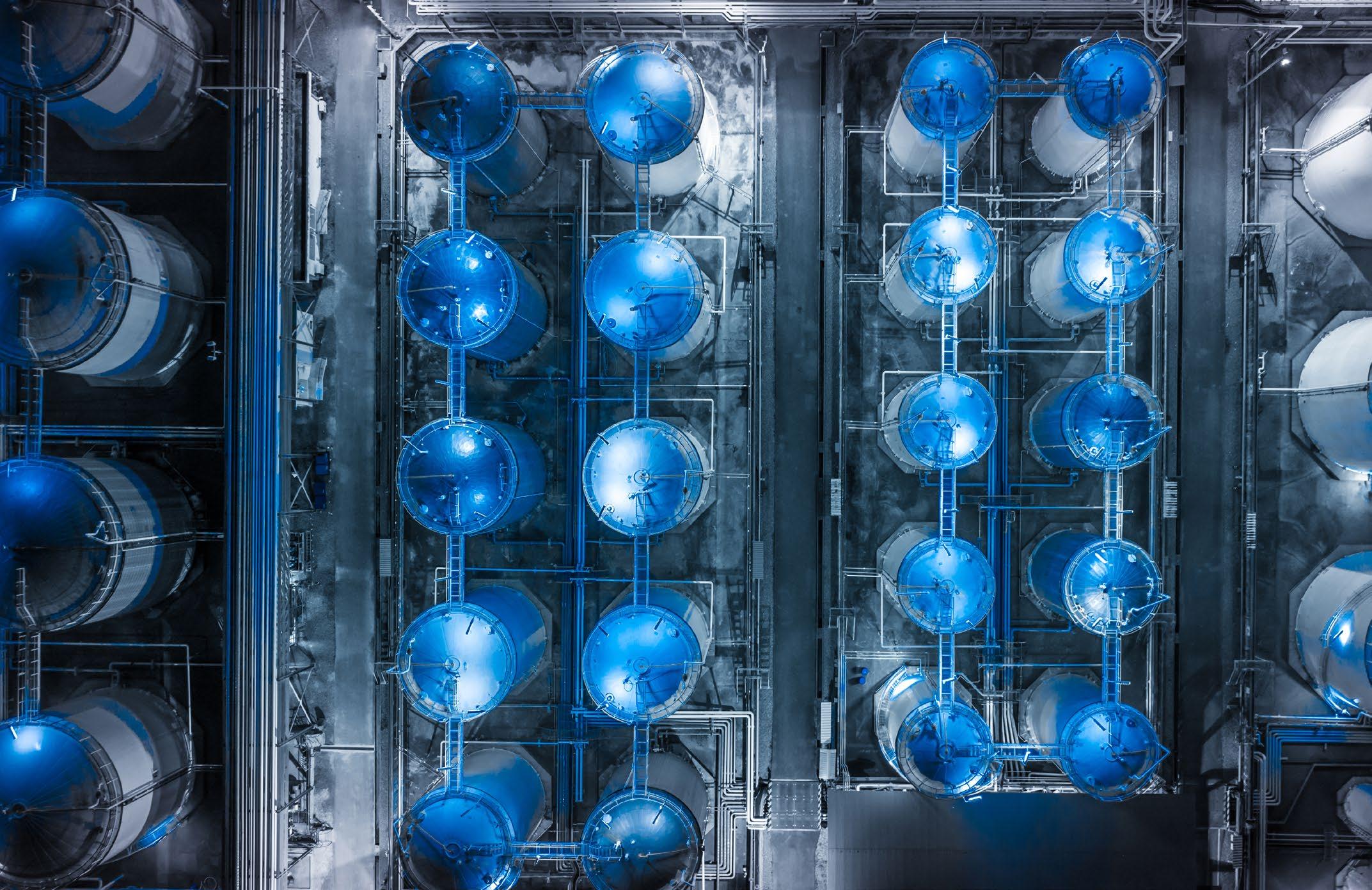
the focus is on sustainability and innovation. The facility will primarily utilise organic side streams from the agricultural sector and food industry such as potato peels and animal manure minimizing environmental impact and maximizing resource value.
LANZAJET
Products: Ethanol to SAF
Construction: LanzaJet has joined government officials, industry leaders, partners, and supporters to open LanzaJet Freedom Pines, the world’s first ethanol to sustainable aviation fuel (SAF) production facility.
Comment: LanzaJet CEO Jimmy Samartzis says: ‘Our novel LanzaJet ethanol to SAF process technology is now deployed at our commercial plant in Georgia which will convert ethanol into drop-in SAF. As we start-up the plant, we will continue to refine our technology, while launching our efforts to advance new sustainable fuels projects globally.’
Greenergy, says: ‘We are constantly looking at how we can increase efficiency across our own operations, and the commissioning of these expansion works in Amsterdam and on Teesside is key to our strategy to support the energy transition through waste-derived fuel products.
PORT OF ANTWERP-BRUGES INTERNATIONAL
Products: Industrial hub
Construction: Port of Antwerp-Bruges International (PoABI) and Perbadanan Kemajuan Negeri Perak (PKNP), a state development agency, have formed a strategic partnership to develop the port of Lumut in Perak state, Malaysia.
Comment: Kristof Waterschoot, managing director PoABI: ‘The official establishment of this development company underlines our commitment to the development of LUMIC. Together with our partner PKNP, we are ready to create a sustainable industrial cluster, which will not only boost the local economy, but also contribute to the broader vision of progress and innovation for the state of Perak in Malaysia.’
chains for new sustainable energy vectors such as ammonia and green methanol, both of which are hydrogen derivatives. This operation, Exolum’s first in the U.S., will enable us to continue strengthening our position in strategic ports. It also allows us to further promote the energy transition and the decarbonisation of mobility, which are central to our sustainability master plan.’
TECHNIP ENERGIES
Products: Petrochemicals
Construction: Technip Energies have announced that start-up has begun at its Long Son petrochemical complex in Vietnam. This project that uses naphtha and liquefied petroleum gas (LPG) to produce olefins products is Vietnam’s first Olefins plant.
Comment: In 2018, Technip Energies were awarded a contract for the petrochemical complex licensing, engineering, procurement, construction, commissioning, start-up, training, interim operation, and maintenance.
PAGE 32
Georgia, US
Malaysia
Vietnam
US ENERGY
Products: Refined products
Acquisition: US Energy acquired two refined product terminals in Mount Prospect and Rockford, Illinois. With the addition of these facilities, US Energy now owns and operates 37 terminals across nine states with a collective storage capacity of over eight million barrels.
Comment: ‘We are excited to welcome four legacy employees from these facilities to the U.S. Energy team. Across our terminal network, we pride ourselves on our customer service, safety record, site uptime, and throughput turnaround. We are confident these team members will help us replicate this at our new locations,’ adds Dan Morrill, vice president of operations at US Energy.
HIAP SENG ENGINEERING
Products: Petrochemicals
Construction: Hiap Seng Engineering Limited FZC, UAE, has been awarded a significant contract by Intrakat Societe Anonyme Technical and Energy Products, Fujairah Branch for the engineering, procurement, construction, and commissioning (EPCC) of the Ecomar Storage Terminal Phase I Project, located in the Fujairah Oil Industry Zone, UAE.
Comment: ‘This award demonstrates how, through strong collaboration and consistent project execution strategy, we continue to build our relationship with Ecomar,’ says Murugesan Chidambaram, Managing Director of Hiap Seng. ‘To ensure project execution excellence, we will leverage our “One Hiap Seng Way” operating model to safely and efficiently deliver the Ecomar Storage Terminal Project with the highest quality.’
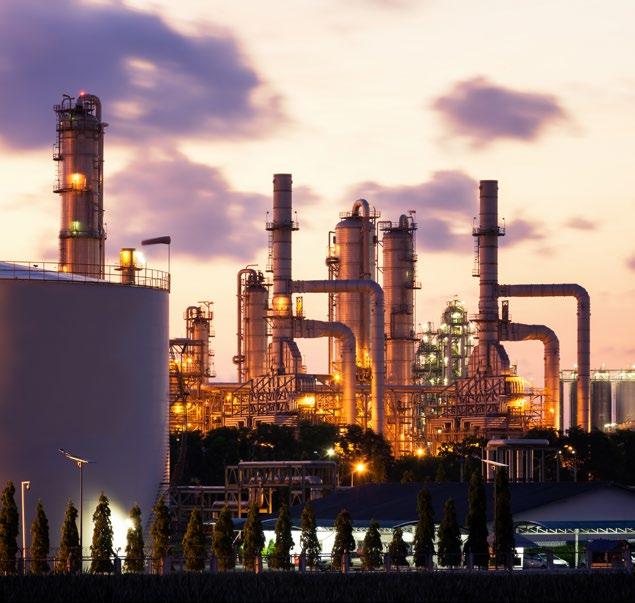
We’re growing so fast we didn’t even have time to come up with a new ad...

PAGE 33 TANK TERMINAL UPDATE
Illinois, US
However, with a stroke of luck, we hope to meet you on March 12th and 13th at StocExpo 2024. There, we will be delighted to share what’s been keeping us bustling in Dordrecht and Antwerp. We are also eager to hear your story. See you there? www.standic.com
UAE
A COMPLETE, MULTICUSTOMER TERMINAL
Tank Storage Magazine speaks with Frans Jan Hellenthal, commercial manager at VTTI, about Euro Tank Terminal and its exclusive tour at StocExpo 01
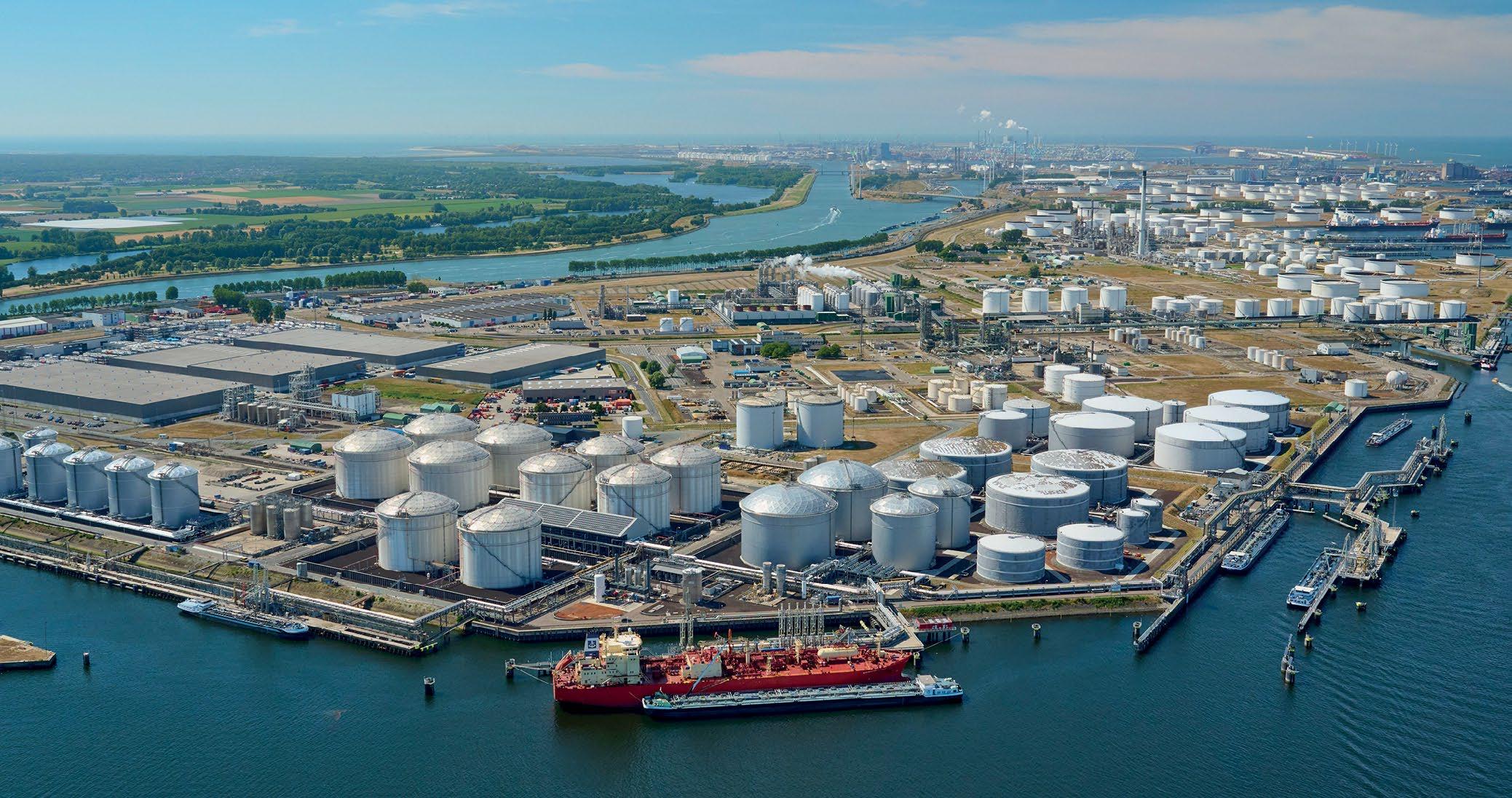
EURO TANK Terminal Rotterdam
in the Netherlands, also known as ETT, was founded in 2006 and originally started with one tank pit for fuel oil storage. During the first few years, the focus of the terminal was on making bulk and storing fuel oil. The product would come from several origins, primarily for export to Asia.
‘Vitol was one of the founders of VTTI and ETT was one of the first terminals of the group as part of this development. Overtime, VTTI diversified, both in terms of shareholder base and customers.
Currently, the company is composed of three shareholders, two of which have an equal stake and one minority shareholder,’ explains Frans Jan Hellenthal, commercial manager at VTTI. Several tank pits were developed over the next 15 years, and many new customers came along with this, transforming ETT into a complete, multicustomer terminal. It is now capable of handling the largest seagoing vessels as well as smaller coasters, barges, trains, trucks and pipeline connectivity.
CENTRAL LOCATION
ETT is located on the deep-water channel of the Port of Rotterdam in the middle of the port complex, ensuring it is in close proximity to refineries and adjacent industries. The site also offers options to connect to infrastructure, such as road, rail and pipelines, which all run close by the site and are connected to the terminal too.
‘A key advantage of the terminal is that it can handle a wide range of ship sizes, from VLCC-size, to coasters and barges. The fuel storage sector will still need both large vessels as well as smaller parcels coming in, even with all the changes
‘Further improvements and projects are underway to push forward our own energy use and emissions, enabling the terminal to reach net-zero by 2042.’
to come due to the energy transition and from changes in product flows worldwide,’ says Hellenthal.
The terminal handles products from various nearby sites and industries as ETT is as well connected to the panEuropean aviation fuels pipeline system, further enhancing its position as aviation fuels hub for European airports.
ADAPTING TO MARKET CHANGES
The handling of sustainable aviation fuel (SAF) is the most recent addition to the terminal and Hellenthal views it as a promising market. ‘ETT has always been evolving with the market and adapting itself to new realities. Starting with fuel oil and later gas oil, the terminal currently stores a variety of products including methanol, ethanol, jet fuel, and SAF,’ Hellenthal says. Looking towards the likelihood of mandated blending of SAF into the jet fuel market, this helps put ETT ahead of the curve.
Existing connections could not be used, as handling SAF is not the same as handling regular jet fuel. So, to
PAGE 34
PROFILE EURO TANK TERMINAL
accommodate these more sustainable projects involving storing and blending SAF, ETT has been adapting its own infrastructure to ensure appropriate connectivity.
LEADING TOWARDS NET-ZERO
ETT prides itself on being on the cutting edge of change and is taking steps to ensure it is ready for net-zero. ‘We have the ambition to have at least 50% of our business coming from transitional and renewable energies by 2028.
ETT is preparing itself for this both by focusing on its own footprint as well as by selecting customers which fit this purpose and mission of our business,’ says Hellenthal.
Most companies have experienced large volatilities in energy prices, so ETT has put a strong focus on decreasing its own energy use at the terminal. As well as reducing costs, this also has a positive impact on its emissions.
ETT is contracting its on-site energy from sustainable sources, such as wind and solar power. The facility has its own solar capacity installed at the main pump room, as well as a contract with an external electricity company, generating power via wind, to provide sufficient energy to run the terminal.
‘As of now, further improvements and projects are underway to push forward our own energy use and emissions, enabling the terminal to reach net-zero by 2042,’ explains Hellenthal. ‘Next to that, our main drivers are pushing into the future fuels and new energies space in which we leverage our global knowledge and experience.’
FUTURE-THINKING
Euro Tank Terminal is highly automated, which makes it efficient and flexible. This, in turn, enables further digitalisation to take place. ETT intends to leverage this by making maximum use of existing and new to be developed tools and software. ‘These tools and software can be both developed in-house as well as contracted by third parties. Digitalisation is a great tool, not only for internal administration purposes, but also enabling us to make data transparently available to our customers and stakeholders,’ explains Hellenthal. This enhances its customers’ operations and streamlines the overall logistics processes through the terminal jointly with all other parties in the logistics chain.
It’s a crowded market in Rotterdam, but ETT has earned its position. ‘We will build on that strong base to stay on top for our customers and develop opportunities for future business,’ say Hellenthal.
Alongside its plans for new energies, VTTI has diversity and inclusion high on its agenda, and this is becoming more of a focus. ETT is actively implementing programmes on this topic, particularly around ensuring gender diversity, and it is continually monitoring progress.
INDUSTRY IN TRANSITION
As companies look to decarbonise, new type of fuels and energies are emerging, and storage needs to be adaptable to these new flows. This means investing in both hardware and software in order to optimise processes. The key challenge to storing new and emerging fuels, such as biofuels, is their requirement for new, separate infrastructure. It’s not always feasible to adapt existing assets – and building new tanks and pipelines takes up space and time.
During this transition ETT intends to leverage its current asset base and key capacities and build upon that to be able to store and handle future fuels. In terms of new energies like hydrogen and ammonia, VTTI’s intention is to invest not only in storage but also co-create with partners’ solutions in this space.
‘Apart from our assets and processes and customers, our main strength is in the team and ETT offers an incredible place to work and grow people in their careers. This is based off of our success and will also bring us further in the changing storage landscape within the Port of Rotterdam,’ says Hellenthal.
TERMINAL TOUR
During StocExpo 2024 in Rotterdam, ETT will be hosting an exclusive terminal tour taking place on day zero: March 11.
The StocExpo conference and exhibition then opens on March 12.
‘ETT is a versatile and diverse terminal, however with a compact footprint that is efficiently managed and operated,’ says Hellenthal on what to expect on the tour. ‘In a relatively small area, the development can be seen of large tanks for certain businesses as well as smaller storage. Also, the adjacent industries are not too far away at the port so it’s clear to see how embedded ETT is in its surroundings.’
For more information:
Frans Jan Hellenthal will be speaking at StocExpo on 12-13 March at the Rotterdam Ahoy about The Terminal of the Future. Register now to attend:

01
02

PAGE 35
www.vtti.com/terminal/ett-rotterdam 02
VTTI’s Euro Tank Terminal, Rotterdam
Frans Jan Hellenthal, commercial manager, VTTI PROFILE EURO TANK TERMINAL
StocExpo is a fantastic way for us to bring knowledge directly to potential customers, with a phenomenal conversion rate! The tank and storage world is growing, shifting, adapting, and StocExpo is growing with it.
Peter Lorenz, Product Manager, Emerson
It’s been valuable to be here and get insights from our energy partners directly.
Sachin Mohanani, Terminal Operations Analyst, Shell
Great to see colleagues and friends of old and make many new connections! StocExpo has been an amazing opportunity to network with the industry’s best, and we’re thoroughly looking forward to next year.
George Burrell, Solutions Segment Owner, Endress + Hauser
StocExpo was an enormous success! If you did not attend, you missed something worthwhile for the industry.
Sandra de Mey, Commercial Manager, North Sea Port
The event has been good, most importantly the quality of the visitors. We’ve had terminal operators and analysts here and being able to talk to them directly about our products has been incredibly valuable
Jeffrey Van Veen, Export Manager, KOKS Robotics
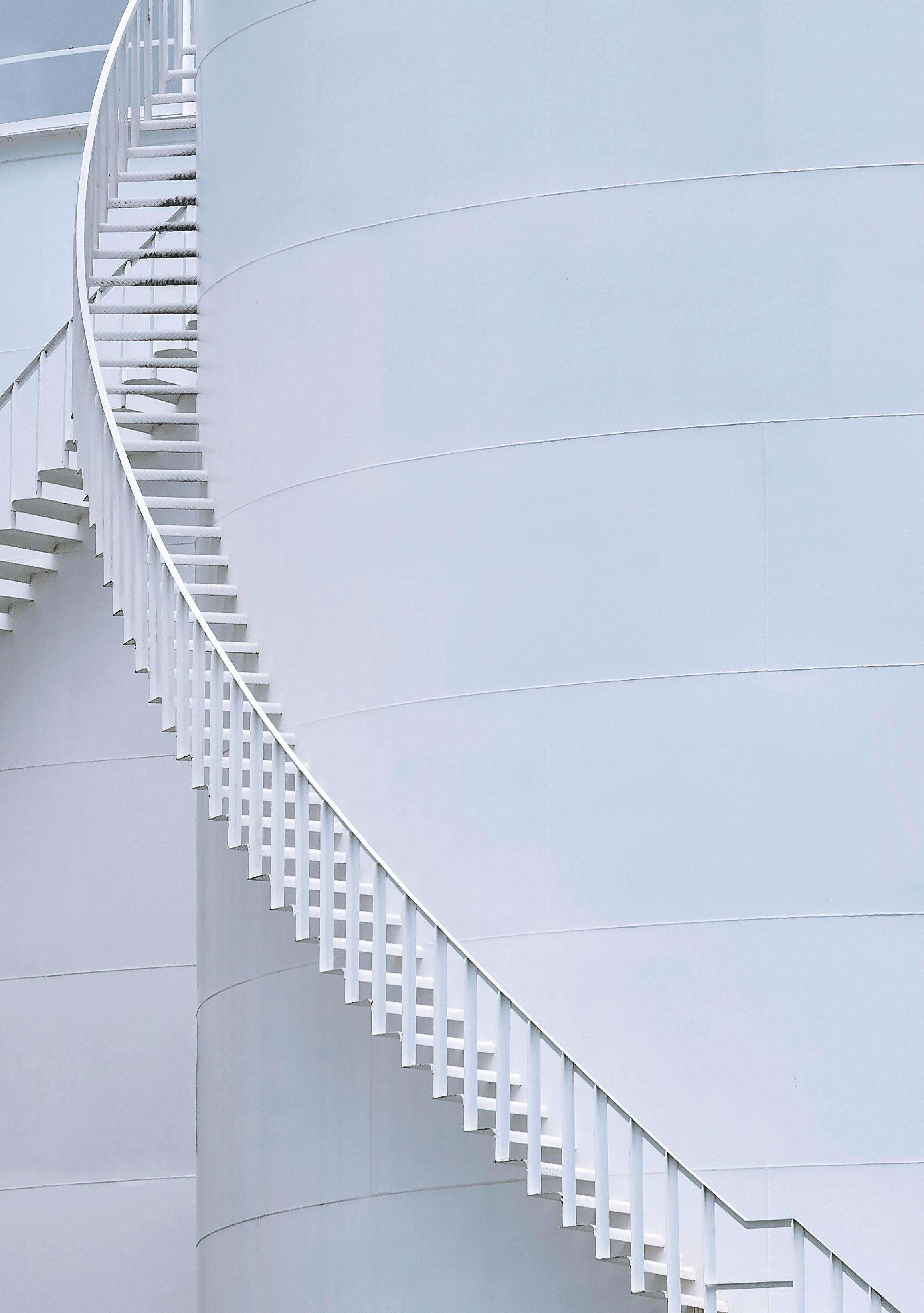

Join your community and secure your stand for 2025 Scan the QR code or visit the Exhibitor Lounge on stand H34 at StocExpo “ stocexpo.com

Scan the QR code to stay up to date on StocExpo 2025 The future of tank storage. Save the date. 11 & 12 March 2025 stocexpo.com @stocexpotankstorage @StocExpo Search for StocExpo Search for StocExpo
REDUCING GHG EMISSIONS
Ravi Bhatani, executive director at FETSA shares the group’s response to the European Commission’s 2040 GHG reduction target
AS FORECAST last year, the European Commission has recently announced a proposed climate target recommendation of 90% GHG emissions reductions from 90s levels by 2040. In parallel it announced a new approach to CCUS called the Industrial Carbon Management Strategy.
2040 TARGET
The European Commission’s 90% recommendation acknowledges the urgency of addressing climate change and recognises the EU’s responsibility to lead by example. By committing to a 90% emissions reduction target by 2040, the EU aims to significantly curb its greenhouse gas emissions and set a path towards achieving net-zero emissions by 2050. This target aligns with the objectives of the Paris Agreement, which calls on countries to limit global warming to well below 2°C above pre-industrial levels, preferably to 1.5°C.
Achieving a 90% emissions reduction by 2040 will require coordinated efforts across all sectors of the economy, including energy, transportation, industry, agriculture, and buildings according to the commission. It will necessitate the rapid deployment of clean energy technologies, such as renewables like solar, wind, and hydropower, as well as energy efficiency measures to reduce consumption and waste.
In addition to decarbonising energy production and consumption, the recommendation emphasises the importance of reducing emissions from other sectors. This involves transitioning to electric vehicles, improving energy efficiency in manufacturing processes, and promoting sustainable agricultural practices.
INNOVATING FOR IMPROVEMENT
One key aspect of the recommendation is the role of innovation and technology in driving emissions reductions. The commission recognises the need for continued investment in research and development to develop and deploy cutting-edge technologies, such as carbon capture and storage (CCS), hydrogen production, and sustainable biofuels. These technologies will play a crucial role in enabling sectors that are
difficult to decarbonise, such as heavy industry and aviation, to reduce their emissions effectively.
Moreover, the commission’s recommendation acknowledges the importance of international cooperation in addressing climate change. It will promote the 90% target as a goal for the next COP. The next step will probably be an amendment to the EU Climate Law, setting the recommendation into law and a revision in the next EU mandate of sectoral emissions and taxation legislation (as was done for the Fit for 55 target).
INDUSTRIAL CARBON MANAGEMENT
The EU’s industrial carbon management strategy outlines a comprehensive framework for managing carbon emissions from industrial activities, with a relevant focus on storage and transport infrastructure. The EU aims to accelerate the deployment of carbon storage technologies and contribute to the achievement of ambitious emissions reduction targets through this.
The strategy recognises the critical role of storage companies in mitigating
climate change by capturing and securely storing carbon dioxide emissions. As a result, it outlines a series of measures and initiatives aimed at supporting the development and deployment of carbon storage technologies across Europe. These measures include regulatory frameworks, financial incentives, research and innovation funding, and capacity-building initiatives tailored to the needs of storage companies.
One of the key elements of the strategy is the establishment of regulatory frameworks to create a conducive environment for carbon storage investments. The EU aims to provide clear and predictable regulations that incentivise storage companies to invest in CCS projects. This may involve streamlining permitting processes, providing financial support for demonstration projects, and establishing carbon pricing mechanisms to internalise the cost of carbon emissions.
FINANCE, COLLABORATION & INNOVATION
Financial incentives are also a crucial aspect of the strategy, aiming to
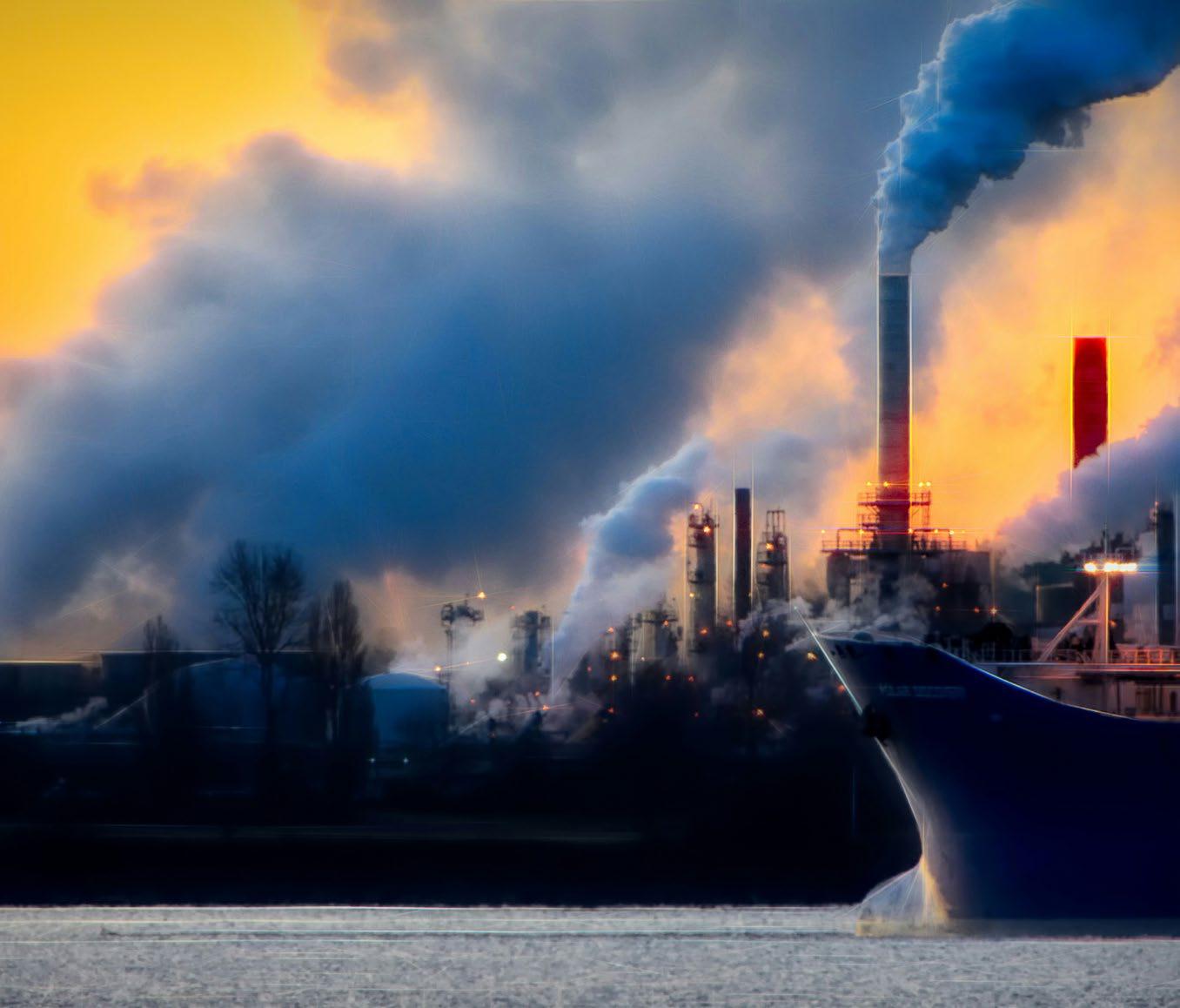
PAGE 38
MARKET ANALYSIS FUTURE FUELS
stimulate investment in carbon storage infrastructure and technology deployment. The EU plans to provide funding opportunities, such as grants, loans, and tax incentives, to support storage companies in developing and implementing CCS projects. Additionally, the EU’s Just Transition Fund and European Structural and Investment Funds may be leveraged to support regions and communities affected by the transition to low-carbon technologies.
Research and innovation play a central role in driving advancements in carbon storage technologies and reducing costs.
The EU will allocate funding for research projects, pilot demonstrations, and technology development initiatives aimed at improving the efficiency, reliability, and scalability of CCS solutions.
Capacity-building initiatives are also essential to ensure that storage companies have the necessary expertise and skills to implement CCS projects effectively. The EU plans to invest in education and training programs, knowledge sharing platforms, and technology transfer initiatives to build capacity and promote best practices in carbon storage management.
The strategy also emphasises the importance of international cooperation and collaboration in advancing carbon storage technologies. The EU will work closely with international partners, such as the Carbon Sequestration Leadership Forum and the International Energy Agency, to share knowledge, coordinate research efforts, and promote the global deployment of CCS solutions.
FETSA’S ROLE
The critical next step for FETSA will be EU work on a possible future CO 2 transport and storage regulatory package, which would consider issues such as market and cost structure, third-party access, CO 2 quality standards or investment incentives for new infrastructure. This will no doubt repeat the issues we had in the recent hydrogen and gas package about freedom of contract and regulated access to CCUS infrastructure.
In a competitive world, more prone to sanctions and weaponisation of strategic products, storage terminals will be critical in safeguarding supplies of renewable fuels of non-biological origin (RFNBOs), advanced biofuels as well as feedstocks
used for the decarbonisation of industry, such as ammonia. Storage infrastructure used for CCUS will also play an important part in helping industry achieve net zero emissions, in line with EU goals.
FETSA has also commissioned a research project exploring regional approaches to the energy transition and assessing future storage business models’ suitability across regions to inform discussion at a transformational time for the sector.
For more information:
Join FETSA and its members at StocExpo on 12 & 13 March at the Rotterdam Ahoy. The FETSA Tank Storage Conference is available for free to all Tank Storage Elite members.
www.stocexpo.com
www.fetsa.eu

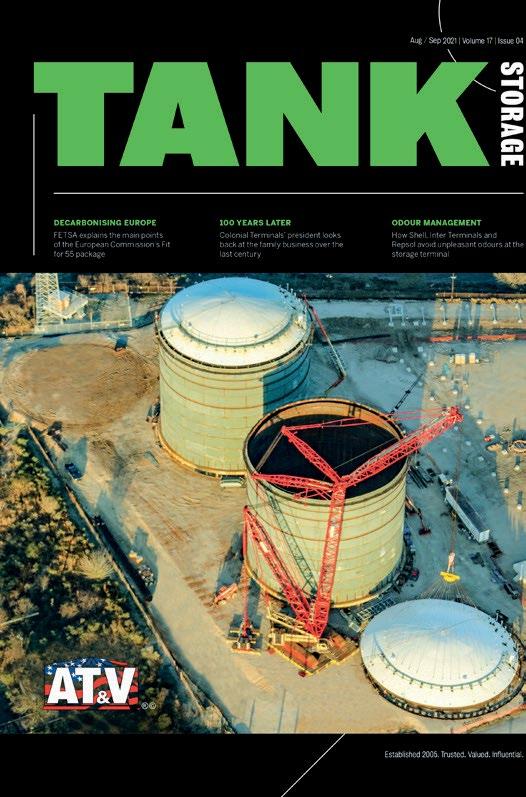

PAGE 39
MARKET ANALYSIS FUTURE FUELS anamika@tankstoragemag.com Established 2005.Trusted. Valued. Influential. BOOK NOW JOIN THE INDEPENDENT TANK STORAGE MAP. Sent to over 3,500 tank terminal professionals
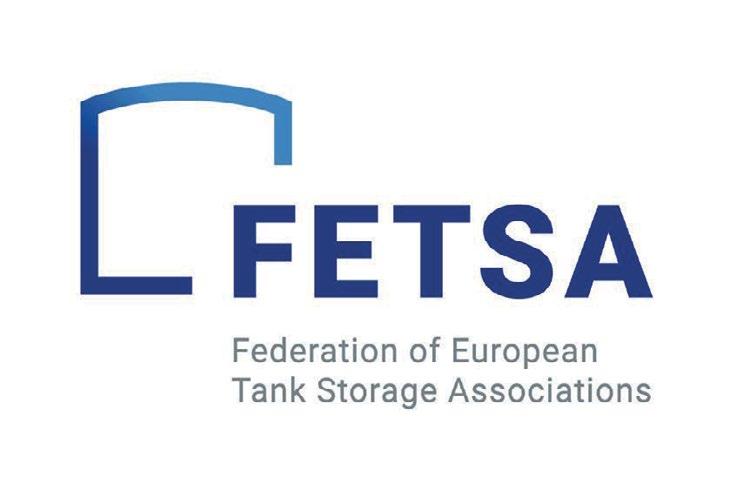
The F e TSA S upplier pA r T ner S hip

WHO SHOULD JOIN?
The FETSA Supplier Partnership is open to companies that do business with tank storage companies or have an affinity with the tank storage sector. This includes, but is not limited to:
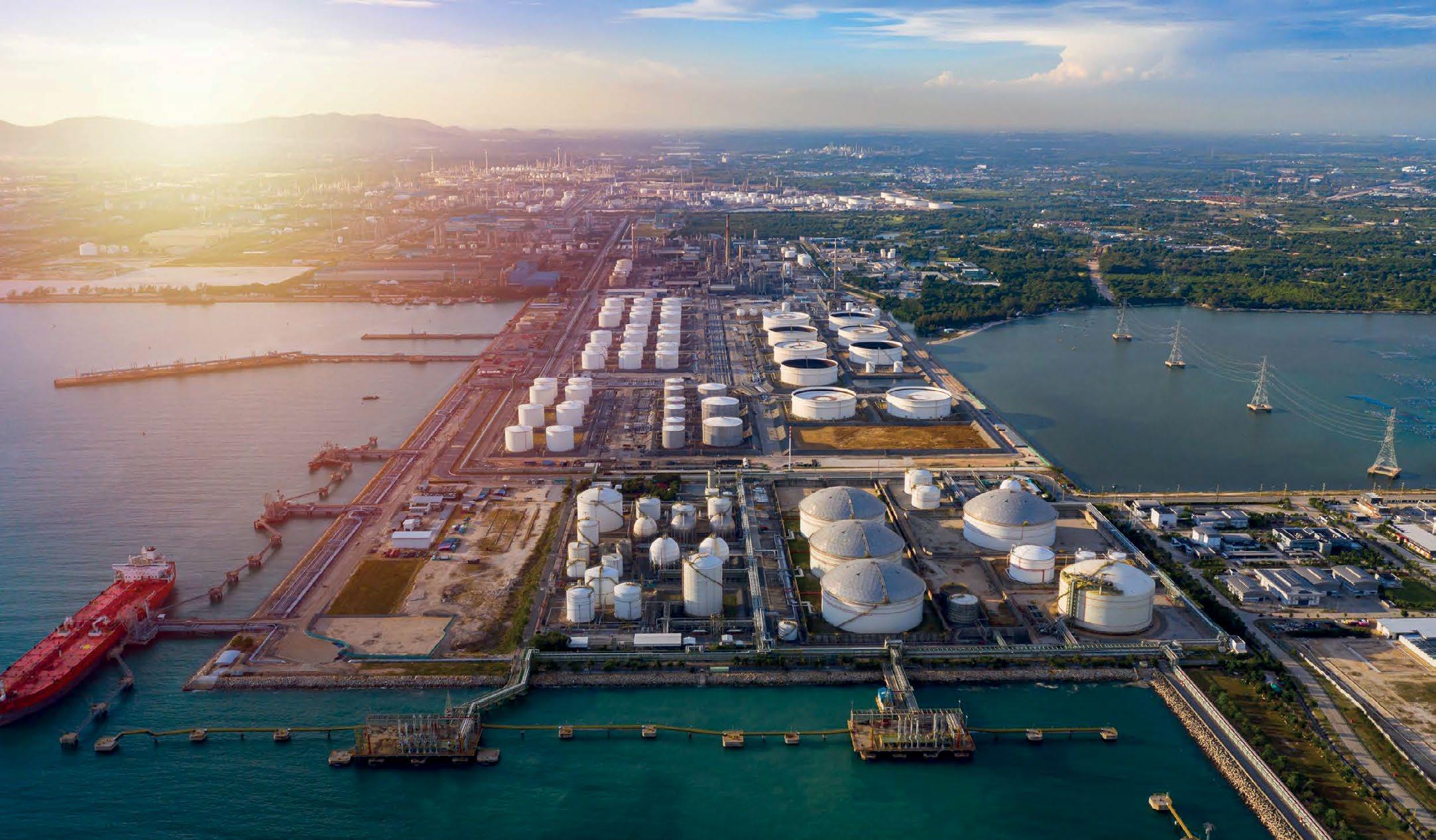
We offer you privileged access and visibility to senior decision makers in the tank storage industry through

We offer you privileged access and visibility to senior decision makers in the tank storage industry through
One complimentary ticket to attend our Annual FETSA Conference and AGM Dinner exclusively dedicated to FETSA members, conference speakers and high level stakeholders from the EU political environment. First option for sponsorship opportunities
AGM Dinner exclusively dedicated to FETSA members, conference speakers and high level stakeholders from the EU political environment. First option for sponsorship opportunities
One complimentary ticket to attend our Annual FETSA Conference and AGM Dinner exclusively dedicated to FETSA members, conference speakers and high level stakeholders from the EU political environment. First option for sponsorship opportunities
One complimentary ticket to attend our Annual FETSA Conference and AGM Dinner exclusively dedicated to FETSA members, conference speakers and high stakeholders from the EU political environment. First option for sponsorship opportunities
Companies providing auditing and management systems
Who S hould join?
which are circulated to senior industry executives. You will be entitled to draft an article in a quarterly supplier partnership newsletter.
You will be entitled to draft an article in a quarterly supplier partnership newsletter.
which are circulated to senior industry executives. You will be entitled to draft an article in a quarterly supplier partnership newsletter.
Who S hould join?
F e TSA kno W ledge ex C h A nge: Possibility to organise industry seminars on relevant topics and/or with the approval of the relevant chair/secretariat to present new/emerging technologies and legislation to our committees/task forces.
Tank farm construction and maintenance companies
The FETSA Supplier Partnership is open to companies that do business with tank storage companies or have an affinity with the tank storage sector. This includes, but is not limited to:
Surveying companies
F e TSA kno W ledge ex C h A nge: Possibility to organise industry seminars on relevant topics and/or with the approval of the relevant chair/secretariat to present new/emerging technologies and legislation to our committees/task forces.
FETSA KNOWLEDGE EXCHANGE: Possibility to organise industry seminars on relevant topics and/or with the approval of the relevant chair/secretariat to present new/ emerging technologies and legislation to our committees/task forces.
F e TSA kno W ledge ex C h A nge: Possibility to organise industry seminars on relevant topics and/or with the approval of the relevant chair/secretariat to present new/emerging technologies and legislation to our committees/task forces.
The FETSA Supplier Partnership is open to companies that do business with tank storage companies or have an affinity with the tank storage sector. This includes, but is not limited to:
Port authorities
(Tank) Cleaning companies
Technical equipment providers
F e TSA kno W ledge ex C h A nge: Possibility to organise industry seminars on relevant topics and/or with the approval of the relevant chair/secretariat to present new/emerging technologies and legislation to our committees/task forces.
Electrical & Instrumentation (E&I) control automation services
pA rT o F our C ommuni T y: Use of FETSA meeting rooms in Brussels at preferential prices (subject to availability). You can use the FETSA logo on your website and printed materials in order to state that you are part of the FETSA supplier partnership.
pA rT o F our C ommuni T y: Use of FETSA meeting rooms in Brussels at preferential prices (subject to availability). You can use the FETSA logo on your website and printed materials in order to state that you are part of the FETSA supplier partnership.
Companies providing safety services
Technical equipment providers
Database providers
F e TSA kno W ledge ex C h A nge: Possibility to organise industry seminars on relevant topics and/or with the approval of the relevant chair/secretariat to present new/emerging technologies and legislation to our committees/task forces.
Surveying companies
pA rT o F our C ommuni T y: Use of FETSA meeting rooms in Brussels at preferential prices (subject to availability). You can use the FETSA logo on your website and printed materials in order to state that you are part of the FETSA supplier partnership.
Port authorities
PART OF OUR COMMUNITY: Use of FETSA meeting rooms in Brussels at preferential prices (subject to availability). You can use the FETSA logo on your website and printed materials in order to state that you are part of the FETSA supplier partnership.
Fire fighting/protection companies
Surveying companies
(Tank) Cleaning companies
Magazines and other industry publications
Companies providing safety services
Loading equipment manufacturers
pA rT o F our C ommuni T y: Use of FETSA meeting rooms in Brussels at preferential prices (subject to availability). You can use the FETSA logo on your website and printed materials in order to state that you are part of the FETSA supplier partnership.
Port authorities
INSIGHT: You will receive our exclusive members only newsletter and annual management report so you are kept informed about the challenges we face in EU policy.
in S igh T: You will receive our exclusive members only newsletter and annual management report so you are kept informed about the challenges we face in EU policy.
Fire fighting/protection companies
pA rT o F our C ommuni T y: Use of FETSA meeting rooms in Brussels at preferential prices (subject to availability). You can use the FETSA logo on your website and printed materials in order to state that you are part of the FETSA supplier partnership.
PRICE
Companies providing auditing and management systems
• Annual fee of EUR 2500 (excl. VAT.)
Loading equipment manufacturers
in S ighT: You will receive our exclusive members only newsletter and annual management report so you are kept informed about the challenges we face in EU policy.
Electrical & Instrumentation (E&I) control automation services
in S igh T: You will receive our exclusive members only newsletter and annual management report so you are kept informed about the challenges we face in EU policy.
(Tank) Cleaning companies
Database providers
Tank farm construction and maintenance companies
pri C e
• Billed annually at the start of the subscription period (1 January).
Companies providing auditing and management systems
pri C e
pri C e
Magazines and other industry publications
in S igh T: You will receive our exclusive members only newsletter and annual management report so you are kept informed about the challenges we face in EU policy.
Electrical & Instrumentation (E&I) control automation services
• All applications for Supplier Partnership are subject to approval the FETSA Executive Committee, and subject to the terms and conditions set out in the Supplier Partnership Agreement.
in S igh T: You will receive our exclusive members only newsletter and annual management report so you are kept informed about the challenges we face in EU policy.
• Competition law must be respected.
Tank farm construction and maintenance companies
· Annual fee of EUR 2500 (excl. VAT.)
· Annual fee of EUR 2500 (excl. VAT.)
Database providers
Billed annually at the start of the subscription period (1 January).
Billed annually at the start of the subscription period (1 January).
· Annual fee of EUR 2500 (excl. VAT.)
pri C e
Magazines and other industry publications
· Billed annually at the start of the subscription period (1 January).
pri C e
· Annual fee of EUR 2500 (excl. VAT.)
Competition law must be respected.
All applications for Supplier Partnership are subject to approval the FETSA Executive Committee, and subject to the terms and conditions set out in the Supplier Partnership Agreement.
· All applications for Supplier Partnership are subject to approval the FETSA Executive Committee, and subject to the terms and conditions set out in the Supplier Partnership Agreement.
· All applications for Supplier Partnership are subject to approval the FETSA Executive Committee, and subject to the terms and conditions set out in the Supplier Partnership Agreement.
· Annual fee of EUR 2500 (excl. VAT.)
· Competition law must be respected.
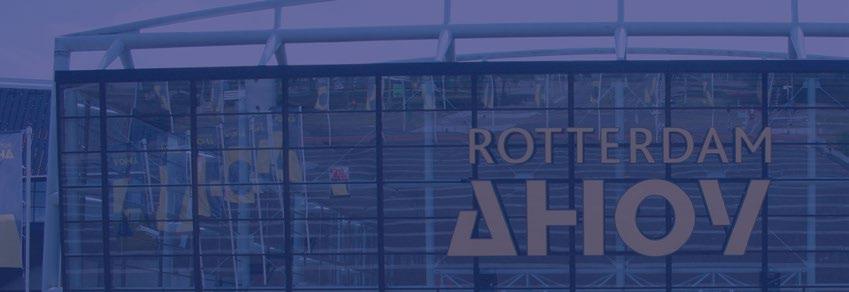
· Billed annually at the start of the subscription period (1 January).
· Billed annually at the start of the subscription period (1 January).

· All applications for Supplier Partnership are subject to approval the FETSA Executive Committee, and subject to the terms and conditions set out in the Supplier Partnership Agreement.
Contact Ravi Bhatiani, rb@fetsa.eu for further information
· Competition law must be respected. Contact Ravi Bhatiani, rb@fetsa.eu for further information.
· Competition law must be respected.
Contact Ravi Bhatiani, rb@fetsa.eu for further information.
· All applications for Supplier Partnership are subject to approval the FETSA Executive Committee, and subject to the terms and conditions set out in the Supplier Partnership Agreement.
· Competition law must be respected.
Contact Ravi Bhatiani, rb@fetsa.eu for further information.
FETSA Rue Abbé Cuypers 3 | B 1040 Brussels, Belgium
FETSA
The F
TSA S upplier
ner
e
pA r T
S hip
FETSA Rue Abbé Cuypers 3 | b 1040 Brussels, Belgium | Tel. +32 2741 68 33 | www.fetsa.eu Federation of European Tank Storage Associations FETSA TANK STORAGE CONFERENCE 2024 12-13 March 2024 l Rotterdam Ahoy, the Netherlands

WHEN:
12 March 2024
WHERE:
Schiecentrale, Rotterdam, Netherlands
COST:
Individual seat €375 or a table of 10 for €3,550
WHAT’S INCLUDED:
Welcome drinks reception, three-course dinner, a seat at the exclusive awards presentation, access to the awards after-party & casino and all-inclusive drinks
Find out more and make sure to enter next year!

12 March 2024 I Schiecentrale, Rotterdam, Netherlands
Back again for its 7th year!
The annual Global Tank Storage awards is back in 2024 for its 7th year, taking place on 12 March at the Schiecentrale, Rotterdam after the first day of StocExpo. Each year the Tank Storage Magazine team sources judges from all corners of the industry, getting the right balance between technical specialists and terminal professionals to judge each entry.
This year has been a tough competition with countless entries being whittled down to just 85 shortlisted companies and individuals (see who on the next page!). This year’s shortlist includes brand new categories among the usual suspects, championing forward-thinking terminals, innovative technologies and outstanding industry individuals.
The gala ceremony will be hosted by Tank Storage Magazine’s editor, Anamika Talwaria and attracts 200+ terminal professionals each year. It is an exclusive opportunity to entertain clients and reward colleagues for their hard work throughout the year.
Margaret Dunn, portfolio director for the Global Tank Storage Awards, says: ‘This is a unique opportunity to celebrate and highlight those that excel in a range of different categories relating to terminal safety, equipment innovations, sustainability, ports, and individual success.’

Hosted by
GLOBAL TANK STORAGE AWARDS
Find out more > tankstorageawards.com
Thank you to our sponsors
PAGE 41
The Shortlist
From more than 200 entries to a shortlist of just 85, let’s take a look back on what last year’s winners had to say as we reveal who is shortlisted for this year’s Global Tank Storage Awards…
Emerging Technology
Celebrating brand new technology in the sector, iSensPro won gold for emerging technology in 2023 for its iSens-SDS ATEX moisture and CUI-sensors. CEO and co-founder Yves Desmet says: ‘Now we have a good introduction to our potential customers. We first start every meeting saying ‘Hey, we’ve won the gold Emerging Technology award!’.’
2024’s shortlist:
• Tank Cleaning Robot (TCR), Cliin Robotics
• HandySCAN l Max with VXintegrity, Creaform
• DKI Mobile Additive Dosing System, Diamond Key International Group
• Internal Insulation System for Ammonia Tanks, Linde Ammonia Storage Solutions
• PMT TANK Software, P-Mech Technologies
• Heat-Flex 7000, Sherwin-Williams Protective & Marine
Environmental Performance
The environmental award in 2023 went to Circor for its Houttin Energy Recovery Valve (ERVC). Circor’s Amélie Schorb says: ‘Winning the gold Tank Storage Award for Environmental Performance is a great honour that fills us with pride. It validates our commitment to sustainability and motivates us to continue making a positive impact on the environmental protection.’
2024’s shortlist:
• Vent-Less Breather Valve Test Bench, Assentech Sales
• Vapour Recovery, Cool Sorption
• FOAMGLAS HLB Tank Base Insulation, Owens Corning FOAMGLAS
• Air Max OGI, Percepto
• TFC Tank Cleaning, Tema Fuel Company
• Trisoplast, Tritech Solutions
• Dry Disconnect Coupling, Zhejiang Waysing Metal Products
Safety Technology
Safety is key in the tank terminals sector and in 2023 it was Real Safety who took home gold. ‘We attended StocExpo and the awards to see the sector and meet new people but we never expected to win! Being shortlisted was an achievement enough already,’ says Torben Farup, CEO at Real Safety.
2024’s shortlist:
• C-Claw, Cold Pad
• Quick-Stairs, Industrial & Environmental Concepts (IEC)
• High Energy Dissipation System, Protectoseal
• Escape Route Markers, Real Safety
• Tank Cleaning, Scanjet
• Overfill Prevention and Earth Proving Technology, Scully Signal Company
• Sphero, Walter Tosto
Excellence in Safety
With an impressive safety record and dedication to standards, Odfjell Terminals Korea (OTK) is the facility that won gold at the Global Tank Storage Awards in March 2023. ‘As part of a global network of Odfjell terminals, we set safety as our top priority and operate our terminal business by applying high quality safety and environmental standards,’ says Gill YongChan, QHSE manager for Odfjell Terminals Korea.
2024’s shortlist:
• AquaChemie (Middle East)
• GPS Chemoil
• Koole
• LBC Lillo
• Odfjell Terminals (US)
• Star Energy Advario

PAGE 42 GLOBAL TANK STORAGE AWARDS
Terminal of the Future
Advario won gold for Terminal of the Future last year for its dedication to preparing for the energy transition and working towards reaching net zero. The company proved itself as flexible in adapting to the changing market, with a real focus on sustainability.
2024’s shortlist:
• AGEO Terminals
• AquaChemie Middle East
• Exolum
• Greenergy
• LBC Rotterdam
• Navigator Terminals
• Stanlow Terminals
Diversity, Equality, Inclusion Scheme
Last year, Emerson Sweden’s DEI scheme blew the judges away with its commitment to directly reach 6,000 employees. ‘For us, it was great to win, and it confirms that we are on the right path. We are starting the conversation in the industry on diversity and inclusion,’ says Victoria Lund Mattsson, product manager at Emerson.
2024’s shortlist:
• Advario
• COPEC
• Exolum
Outstanding Achievement
Nicholas Gohl, CFO of Aquarius Energy was recognised with gold last year for his outstanding achievements within the industry. ‘I felt honoured enough just to be nominated for an award, let alone win gold. I’m proud to represent a company that I’ve been a part of since its inception as a standalone group. So, winning this award is the cherry on the top.’
2024’s shortlist:
• Aidan Doherty, Managing Director, Re-Gen Robotics
• Christoffer Hoffmann, Business Development Manager - Tank Gauging Cryogenic & Liquified Gases, Emerson
• Douglas van der Wiel, Chief Growth Officer, Advario
• Enrique Mozo Palacios, Business Development Director, Rubis Terminal
• Hans Bobeldijk, CEO, UAB-Online
• Jelle Swanenberg, COO, Smartflow
• Joel Poe, Vice President, Applied Impact Robotics
• Josefien Groot, Co-founder and CEO, Qlayers
• Matt Wilson, Head of New Energy Markets, Navigator Terminals UK
• Mohammed Abufour, Supervisor Of Advanced NonDestruct Examination Services, Saudi Aramco
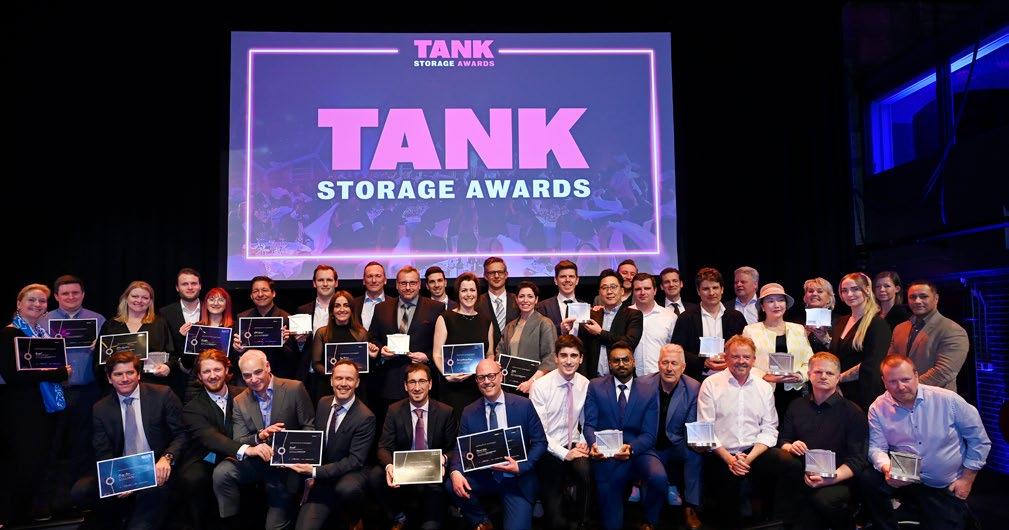
Rising Star
Guy Curtis from EWFM received gold in 2023 for the Rising Star award, reaching managing director from trainee sales engineer in just nine years. ‘I’m proud that all of the hard work I have put in at EWFM is being seen and I am honoured to have the recognition from the award on a global scale,’ he says.
2024’s shortlist:
• Anandkumar Varadharajulu, Co-Owner, AquaChemie
• Anne Been, Sales Manager, LBC Tank Terminals Rotterdam
• Ashwani Tiwari, Global Industry Development Manager, Emerson
• Ben Adamson, Marketing Executive, EWFM
• Esma Gulten, Co-Founder & CEO, Gizil
• Rikard Prytz, Business Development Manager, Emerson
• Steven Slack, Director Of Operations, Ferrous Protection
• Thomas Seifert, Finance Director and CFO, North America, Advario
• Tom Deleu, Project Supervisor, Evos Ghent
• Whitney Helbers, Commercial Manager, Dutch Valve Service
The tank storage sector is a vital link in the chemical supply chain and generally it does not receive the recognition it deserves. The Global Tank Storage Awards are a fantastic opportunity to highlight the commitment, dedication and innovation of those working in the tank storage sector and of the vital role it plays in our society, including safety, sustainability and in supporting our critical national infrastructure.”
Tim Doggett, CEO, The Chemical Business Association
PAGE 43 GLOBAL TANK STORAGE AWARDS
New Categories for 2024
2024 brings some shiny new categories at the Global Tank Storage Awards. Let’s take a look at the pioneering shortlisted companies in categories for this year!
Digital Solution
• Actemium Terminal Management System (ATMS) – Flexible Asset and Route Management, Actemium
• Chrysalis, Singapore Trade Data Exchange
• Clarity, Hybird
• PMT TANK, P-Mech Technologies
• Ship Shore Safety Checklist - IGOTT 6, Insights Global
• Smartflow Digital ISGOTT Solution, Smartflow
• Virtual Plant, Gizil
Drones & Robotics Solution
• 10Q Coating Robot, Qlayers
• ALTUM Telescopic Pole Systems, Cspect
• Aerial NDT Robotic Solution, Voliro
• Air Max OGI, Percepto
• Elios 3, Flyability
• Factory Mutual Class 1 Division II Certified Inspection Robots, Square Robot
• New Lombrico, Gerotto
• Robotic Solution, Applied Impact Robotics
• Robotic Tank Cleaning, ReGen Robotics
• Tank Cleaning Robot, Cliin Robotics
The Global Tank Storage Awards play an important role each year in raising inspiring efforts and achievements within our industry to the surface to create awareness and promote positive action and collaboration.’
Gary Kalmin, CEO, Aquarius Energy

Industry Game-Changer
• C-Claw, Cold Pad
• DKI Mobile Additive Dosing System, Diamond Key International Group
• Barge Arrival Services, Diize
• Clarity, Hybird
• 10Q Coating Robot, Qlayers
• Total Tank Solution, SkyeBase
• SR3 Robot, Square Robot
• Information Physics, TankTerminalTraining
Project of the Year
• AGEO Terminals
• Apro Industrie
• Aquarius Energy
• Cattalini Terminais Marítimos
• IOR Lytton Terminal
• Exolum & Vopak Moda Houston
From winner to judge, Jay Leduc, Head of HSE and Sustainability at Hartree Partners, previously entered the awards in 2020 and won for innovative application of thin-film solar panels. ‘We had always been shy about entering but we did it with something we thought was the first on the market. The awareness that was raised due to being part of the awards was great for us!’
Tank Storage wishes all those that are shortlisted good luck and we look forward to next year!


PAGE 44 GLOBAL TANK STORAGE AWARDS
Odfjell Terminals - connecting sea and land
Odfjell Terminals offer safe and efficient storage for vital liquids, chemicals and oil products at strategic international shipping hubs.

Contact: +1 713 844 2300 hou.sales@odfjell.com
Odfjell Terminals Charleston

Noord Natie Odfjell Antwerp Terminal
A leader in the European chemical storage market. NNOAT offers a unique combination of storage and related valueadded services.
Contact: +32 (0)3 543 99 00 degraeff.p@noordnatie.be
Odfjell Terminals Korea
Multiply awarded, state-of-the-art terminal in the heart of Northeast Asia’s core hub for petrochemical distribution and transshipment. OTK handles virtually all kinds of chemicals.
Contact: +82 522 311 600 otksales@odfjell.com
Strategically located on Charleston’s Cooper River. OTC offers quality solutions to the bulk liquid, vegetable oil and petrochemicals industry in the US Southeast Coast.
Contact: +1 843 714 6300 hou.sales@odfjell.com
Odfjell
Terminals is part of the Odfjell Group, one of the world leaders in the global market for seaborne transportation and storage of chemicals and other specialty bulk liquids. Read more on Odfjell.com

Together. Smarter.
Together. Smarter.
Strong in Storage

nor thseaport.com northseaport.com
STAY MOVING, STAY AHEAD
LBC
Mathias Potvin, tells Tank Storage Magazine how the company is positioning itself ahead of the curve

WITH A history stretching back to 1999, LBC Rotterdam (Netherlands) is in a prime location for the tank storage sector. With excellent connections via rail, road, sea – all modes of transport –and dedicated pipeline to local industry, it’s the perfect location to lead in the energy transition.
NEVER STAND STILL
LBC Tank Terminals took over the site from Dow 25 years ago, and has been working to expand and improve the terminal ever since. With a current capacity of 180,000 m³, LBC’s expansion plans aim to almost double this capacity.
Phase 2 of this four-phase project ended in 2021, which included the construction of a centralised loading bay for trucks and two additional loading positions at the jetty, one for barges and one for ships and barges, plus 70,000 m³ of storage capacity. With an extra 86,000 m³ and blocktrain loading facilities, the third phase is aimed at meeting increased client demand that LBC Rotterdam anticipates in the wake of the energy transition. ‘In this sector, when you stand still, you fall behind,’ says Mathias Potvin, terminal manager at LBC Rotterdam. ‘We want to compete with the best. We
‘There needs to be a change in philosophy on fuel.’
see the market demanding more storage capacity. We have the land available, so we’re seizing the opportunity to grow.’
On top of adding actual infrastructure at the terminal, LBC Rotterdam is looking at different products it can store and process. ‘We’re driving progress in the circular economy, working with plastics recycling, for example,’ says Potvin. ‘LBC also recently joined Chemical Recycling Europe (CRE) as an associate member.
‘I personally believe that green hydrogen as energy source is the future. However, demand in Northwest Europe will exceed the supply of hydrogen through electrolysis from local, sustainable energy sources such as solar and wind. Hence, hydrogen needs to be carried from areas where an abundance of solar or wind power is available.’
‘More broadly, LBC is looking at energy carriers – ammonia of course, but others too,’ says Potvin. ‘It’s not only a question of transporting the energy, but we’re also looking at how we can help store the energy. Can we use flow batteries, lithium
batteries, etc? We have the land to store those energies and the carriers.’
SUSTAINABILITY & NET ZERO
While the energy transition is a key challenge, many terminal companies will also have their own net zero targets to meet. LBC Tank Terminals is leading by example here, having achieved a 5-star GRESB rating and Platinum EcoVadis in 2023. The company has the ambition to become CO2 net zero for scope 1 and 2 emissions by 2030, which Potvin is confident they can achieve.
‘We are reducing CO 2 emissions as much as possible,’ he says. ‘Without a challenge, there’s no win. Our goal is to achieve net zero for scope 1 and 2 emissions by 2030. One way we’re already making changes is by turning our steam boilers to more efficient ones. Making efficiency improvements while expanding is a complex but valuable opportunity.’
Potvin also highlights a change from vapour recovery units. ‘We switched from combustion of vapours to a cryogenic condenser unit. In addition to this switch, we are investing more in vapour balancing.’
Rotterdam’s terminal manager,
01
PAGE 48 PROFILE LBC ROTTERDAM
The key challenge that Potvin highlights is the need for an alternative to natural gas. ‘Electricity is one alternative, but grid capacity is a barrier to wide-spread electrification,’ he says. ‘The government will need to invest a lot to make it possible, but LBC is ready when the grid is.’
The other main alternative fuel is hydrogen. ‘Maybe I’m indoctrinated into it,’ jokes Potvin. ‘I believe there will be a network of hydrogen in Rotterdam, but connecting to this might have a high cost. It’s here where the industry needs to work together for a solution. Costs will reduce massively and the possibility of success is likely to be way higher.’
Potvin also highlights that security of supply is going to be key in reaching net zero. ‘There needs to be a change in philosophy on fuel,’ he says. ‘Collectively, we need more steady consumption to prevent irregular spikes. A flat consumption will prevent this – and that’s where energy storage comes in, to provide security of supply.’
COMMUNITY OUTREACH
When it comes to improving the wider environment, LBC Tank Terminals has a range of employee and community initiatives. Starting in 2024, for example, LBC is offering employees access to affordable electric vehicle charging at 20 stations located at the terminal.
LBC also sponsors different organisations, such as the Sophia Children’s Hospital and initiatives to minimise the impact of terminals on the environment. For instance, LBC has a long-term partnership with Natuurpunt, the largest Belgian nature conservation organisation focused on raising public awareness and increasing the scope for preservation and development of nature.
All of LBC Tank Terminals’ sites have studied their own impacts on biodiversity.
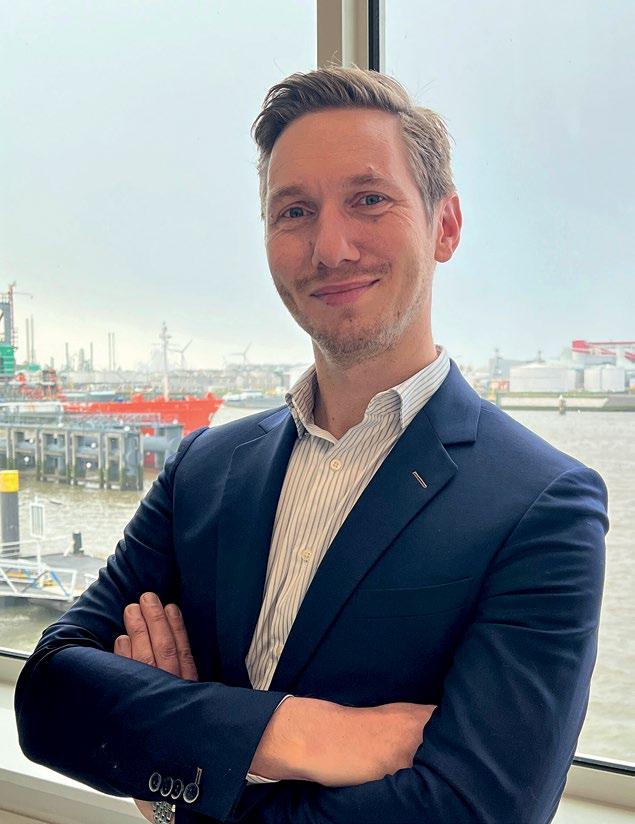
‘The impact of our terminals on biodiversity is limited, but we do make sure to mitigate potential damage and support different organisations helping the environment,’ says Potvin. ‘The team also participates in World CleanUp day, so we offer both financial and voluntary support.’
ACHIEVING A 5-STAR GRESB RATING
The GRESB scale refers to the Global Real Estate Sustainability Benchmark. But it has evolved into a much larger benchmark over the year. Potvin explains: ‘This benchmark is very important to infrastructure investors – which is crucial when we’re looking for investment to drive the energy transition forward.’
While LBC Tank Terminals already has a Platinum EcoVadis rating, the 5-star GRESB achievement is another feather in the team’s cap. ‘Achieving a 5-star rating requires dedication and continuous
‘In this sector, when you stand still, you fall behind. We see the market demanding more and more tanks and storage capacity. We have the land, so we’re seizing the opportunity to grow.’
improvement,’ he says. ‘To stay on that high level, the company needs to improve itself every year – and we are up for the challenge.’
Because it’s not completely focused on tank terminals, GRESB can provide a more holistic view of green targets. ‘It also helps predict what will come next in terms of regulations, as it is further ahead than other measures. GRESB and EcoVadis also help us to understand what will come next in terms of sustainability. This forward-looking approach helps us to fine-tune our strategy,’ says Potvin. For example, now that LBC has made good headway in terms of carbon emissions, water usage is the next focus area. ‘It’s all about anticipating the challenge before the problem arises,’ adds Potvin.
ENTICING THE NEXT GENERATION OF WORKERS
‘In the drive to find more talent, we see more young people are looking at sustainability when it comes to choosing a company to work for,’ says Potvin. While more experienced colleagues retire and
take their years of expertise with them, a dwindling workforce is a huge issue that the tank storage sector is dealing with. Potvin acknowledges the paramount value of solid onboarding and continuous development through high-level training: ‘More important than having the perfect skillset is being enthusiastic about joining our team. Our focus is on building a workforce where passion for our values drives success, fostering a positive and collaborative environment.’
Part of this is being transparent about sustainability. ‘We’re an open book,’ says Potvin. ‘We feel it’s our obligation to society and the community to report on our emissions and work towards proper sustainable goals. If you understand what your impact on society and the environment is, you can see the evolution over time.’
‘I believe every terminal should be reporting their emissions and ESG to be open and honest,’ he adds. ‘Not only that, but also it’s to help change the perception of the industry. The outside world may view the tank storage industry as a polluting industry, and we can change this view by reporting on ESG in an open and transparent way. The chemical products we store play an important role in our daily lives, in shaping markets and in helping make our future more sustainable.’
For more information:
Mathias Potvin will be speaking at StocExpo on 12 & 13 March at the Rotterdam Ahoy. Scan the QR code below to register.

www.lbctt.com 02 01 LBC Rotterdam, Netherlands 02 Mathias Potvin, terminal manager, LBC Rotterdam
PAGE 49 PROFILE LBC ROTTERDAM
CHAMPIONING A SAFETY-FIRST MINDSET
Global functional safety manager at Emerson, Akansha Gupta, tells Tank Storage Magazine about why she chose tank storage
AFTER EARNING her degree in instrumentation engineering, Akansha Gupta, global functional safety manager at Emerson, was equipped with a solid foundation for the world of tank design and operational procedures. Her initial attraction to this field stemmed from the role it plays in supporting key sectors such as oil, gas, chemicals and logistics. ‘The importance of ensuring the secure and effective storage of these valuable resources was an issue that captivated my interest from the outset,’ explains Gupta.
Gupta began her career at a reputable company, where she immersed herself in hands-on experiences with tanks of varying sizes and materials. ‘This firsthand exposure allowed me to develop a greater understanding of the technical intricacies involved in efficiently managing tank farms,’ she says.
DAY TO DAY
‘In my current role as the global functional safety manager at Emerson Sweden, my primary objective is to underscore the industry’s awareness of the importance of safety in both design implementation and operation at terminals,’ Gupta explains.
In this field, safety is non-negotiable. Accidents and incidents not only pose threats by way of costly downtime and damage to reputation, but they can also have a huge impact on the environment and human lives. In her role, Gupta advocates for a commitment to safety, by integrating technical knowledge with practical insights.‘Through guidance, storage terminals can proactively identify potential hazards, implement preventive measures, and optimise safety protocols. This ensures seamless operations, minimised disruptions, and enhances overall productivity,’ she says. ‘My role is about championing a safetyfirst mindset’.
CHANGING ATTITUDES
In work environments dominated by males, women can help foster positive change by building robust professional
networks to provide access to mentors, sponsors, and allies who can advocate for equal treatment.
‘Additionally, women can focus on continuous learning and showcasing their expertise to gain recognition in their fields. Encouraging open dialogue about gender biases and fostering a culture of inclusion are vital steps towards instigating positive changes within organisations,’ says Gupta. Achieving gender equality in the sector will require efforts from both men and women, along with the wider industrial field.
ALLOWING WOMEN TO EXCEL
‘I would recommend the storage tank industry to women for a multitude of reasons. The main reason is that the field provides so many opportunities for growth and advancement, with roles spanning from engineering and design to project management and operations, allowing women to excel,’ says Gupta.
Gupta believes the tank storage industry has great opportunities for graduate woman and others because of these of the great career growth, competitive salaries, skills development and the impact the work can have on wider communities. ‘More women are needed to help diversify this workforce and promote equal opportunities within the section. As well as helping large companies to establish a place for women through flexible work arrangements and a supportive work culture,’ says Gupta.
As a woman in the industry, one of Gupta’s most gratifying milestones her career occurred when she integrated into the operational industry, securing acceptance and recognition. She led and successfully delivered complex upgrade projects and orchestrated turnarounds were particularly proud moments.
THE FUTURE
Historically, the operational industry has been male-dominated and overcoming stereotypes and biases has required effort from both men and women.
One of Gupta’s main career goals is to promote diversity and ensure that

her voice is not only heard but valued in decision-making processes. ‘My ultimate career goal is to grow into to leadership positions where I can influence organisational strategies and policies, ensuring they promote diversity and equal opportunities,’ says Gupta.
Beyond just personal career growth, Gupta wants to inspire and mentor the next generation of women in operations, helping them overcome challenges and reach their full potential. ‘My aim to contribute to a workplace culture that values and celebrates the unique perspectives women bring to the field, ultimately leaving a lasting impact on the industry,’ she says.
For more information:
Akansha will be speaking at StocExpo on 12 & 13 March at the Rotterdam Ahoy. Scan the QR code to register. www.emerson.com

PAGE 50
01
PROFILE AKANSHA GUPTA
01 Akansha Gupta, global functional safety manager at Emerson

Go Integrate.
Emerson’s integrated solution for LNG and other refrigerated gas storage ensures accurate and reliable level, density and temperature measurement and improves overall inventory management. The Rosemount™ Tank Gauging System enables leak detection, monitors stratification, and predicts the risk of roll-over incidents.
Learn more at www.Emerson.com/RosemountLNG.com
STAYING THE COURSE
Kalmin,
Aquarius Energy tells Tank Storage Magazine about the company’s past year in business and what’s ahead for 2024
2023 WAS AN exceptional year for Aquarius Energy with each of its portfolio businesses contributing to the company’s success. At the same time, the company significantly increased its capabilities to further pursue growth via organic and greenfield development, joint ventures and acquisitions. This is the result of Aquarius Energy’s deliberate strategy to bring its portfolio closer together and recognise the significant commonalities across all assets regardless of products, services or geography.
‘The rebrand of the business from HG to Aquarius Energy has been a major milestone. This is not a superficial name change but rather a reflection of the privileged position we have, with two leading industry players in Tristar and Glencore as our shareholders, along with a management team and a supportive customer base committed to taking our group to new heights,’ says Gary Kalmin, CEO at Aquarius Energy.
The company’s portfolio consists of wholly-owned and operated businesses, as well as joint venture businesses with their own management teams. This model provides Aquarius Energy with the requisite experience, flexibility and philosophy to be a partner of choice.
CHANGING ENERGY AND WORKFORCE LANDSCAPE
The greatest challenge for the company in 2023 was the continued market volatility impacting product flows and directions. ‘Our portfolio consists of storage and distribution hubs, import terminals for structurally short markets, storage for excess supply, supported from contangos as well as downstream distribution. Naturally this provides some diversification and protection across the portfolio, but each business has faced commercial challenges and opportunities in these uncertain times of supply, demand and geopolitical changes,’ explains Kalmin.
Going forward into 2024, Kalmin is seeing continued positive momentum towards lower carbon energy and mobility which is an opportunity the company is attracted to. Traditional fuels are facing underinvestment whilst alternatives are taking more time to be capable of adoption at scale. ‘We have already seen the industry
adapting and preparing to satisfy demand for traditional fuels whilst investment and ideas continue to be funnelled towards the necessary solutions being developed as part of the energy transition,’ Kalmin explains.
‘As the overall mix of fuels inevitably changes...it should prove an attractive and rewarding space for the next generation.’
‘A further emerging challenge for the industry is in relation to the attraction and retention of talent. Few school kids grow up wanting to be in hydrocarbon engineering or logistics and the industry itself has come under significant criticism as well. There are concerns about the pipeline of skilled and motivated talent to best address the problems of today and tomorrow,’ says Kalmin.
Those who are within the industry take pride in knowing that they are part of and supporting the energy transition towards a lower carbon future. As the overall mix of fuels inevitably changes and the industry is rightfully perceived as ‘energy’ vs ‘oil and gas’, Kalmin believes it should prove an attractive and rewarding space for the next generation to engage, learn and to roll up their sleeves to contribute and make a real difference.
ENERGY TRANSITION INFRASTRUCTURE
To Kalmin the trends are clear: ‘Western Europe is leading the charge towards alternative fuels with significant repurposing and/or new development to support proven biofuels, as well as emerging scalable solutions across the likes of hydrogen, ammonia and methanol.’
Battery chemistry and infrastructure is also rapidly developing as well as certain markets adoption of lower carbon fuels such as LNG and rightfully re-engaging the debate of nuclear as a proven low carbon source of baseload power. ‘Elsewhere in the world, the pace of change is likely to be slower, with many of the regions in which we
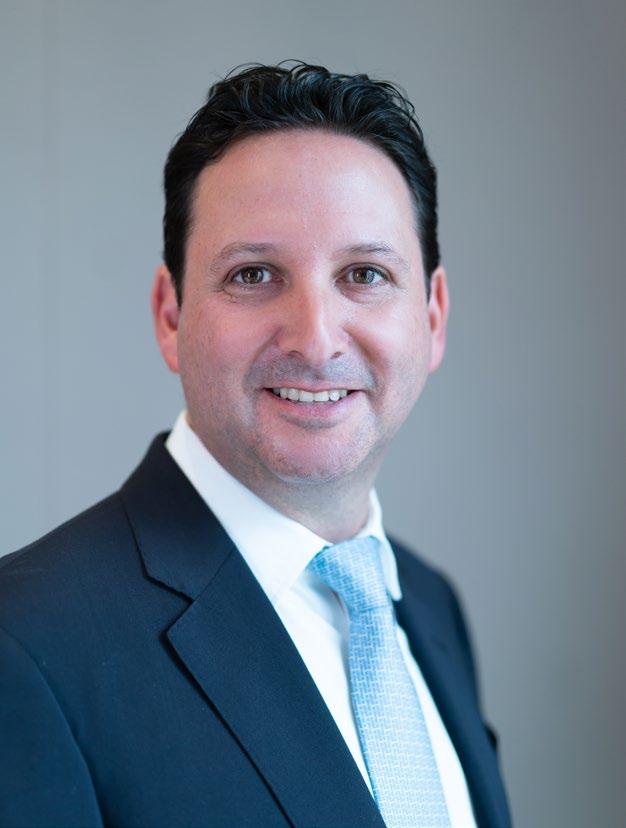
operate still developing the basic energy infrastructure that many of us in Europe take for granted,’ he adds.
The energy supply chain is complex across upstream, midstream and downstream with required compatibility across multi-modal transport and storage infrastructure which are themselves long life assets with significant investment and lead times. The energy transition is still in its relative infancy as mass adoption, investment, standardisation and acceptance are all moving towards a common functional purpose and goal.
Given that Aquarius has a global portfolio across multiple products and services, it is fortunate to have a mix of customers across majors, traders, industrial players and governmental related bodies.
‘Energy security is increasingly a focus, and we are supporting compulsory and strategic stock holdings. For the trading community, their flows are changing in terms of both direction as well as composition, with blend requirements across feedstocks and biofuels and the aviation industry is growing and evolving with SAF mandates. We are collaborating on product and supply chains to support positive tailwinds for the industry,’ explains Kalmin.
An important part of the business is in emerging markets without reliable energy, where energy poverty still exists. Aquarius Energy plays its part in delivering and supplying into such markets via its customers, which is hugely rewarding. This is where the company is able to see
PAGE 52
01
PROFILE AQUARIUS ENERGY
Gary
CEO at
‘At StocExpo, Aquarius is looking forward to engaging with the industry and in particular seeing developments in technology, hardware, software and data...’
the tangible difference it makes to such regions and communities.
STAYING THE COURSE
Today, Aquarius Energy has the key ingredients to further develop its business. Its shareholders in Glencore and Tristar provide support across volumes and capital as well as regional and other expertise as needed. ‘Our portfolio assets across the Americas, Europe, Africa and the Middle East deliver longstanding customer relationships and a breadth and depth of experience which few operators could claim to match,’ says Kalmin.
So, the question for Aquarius Energy is what comes next? Kalmin sees real opportunities to grow the existing business. Whilst developed markets provide opportunities for repurposing and new or substitution flows, emerging markets provide opportunities for growth to further support these regions in terms of both import and export flows.
‘As a strategic player we are always thinking longer term and we are certainly in the right space at the right time to work with our customers to navigate the challenges and importantly to seize the clear opportunities ahead. Our message to the market is that whilst others may be retreating somewhat, we are open for business,’ he explains.
As advice to other terminal operators, Kalmin says simply to stay the course.
Aquarius Energy and other terminal operators may be competitors in some limited geographies, but more importantly they are collectively a key part of an incredible system that each day manages to bring energy fuels from production to where they are needed. ‘Most people simply flick a light switch, fill up their cars, take a ferry or a plane without necessarily thinking about how the required energy is actually sourced and delivered. We are at the forefront of working with our customers towards a lower carbon future and still meeting the needs of today,’ says Kalmin.
The energy transition is a network effect across upstream, midstream, downstream, regulation and capital flows. By staying the course and each company playing its part, the network will continue to develop and secure the mass adoption required to economically balance the shifting supply and demand.
AWARDS, EVENTS & NETWORKING
Aquarius Energy will be attending this year’s StocExpo in Rotterdam, taking place on the 12 & 13 March.
Last year, Aquarius Energy was recognised at the Global Tank Storage Awards with its CFO, Nicholas Gohl winning Gold in the Outstanding Achievement Award. The judges were impressed with the way Gohl champions terminals in developing markets and understands the broader picture, finding a concrete way to help bring energy to communities beyond just making money.
GPS Chemoil (an Aquarius Energy joint venture portfolio company) also received the Safety Excellence Bronze award, in recognition of the team’s excellent response to reinstating safe, reliable and responsible operations on site in Fujairah after once in a generation flooding.
‘The Global Tank Storage Awards play an important role each year in raising inspiring efforts and achievements within our industry to the surface to create
awareness and promote positive action and collaboration,’ says Kalmin. The full shortlist for the 2024 competition can be found on page 41.
At StocExpo, Aquarius is looking forward to engaging with the industry and in particular seeing developments in technology, hardware, software and data which are increasingly providing interesting and practical use cases across safety, efficiency and cost management. ‘With our brand as Aquarius Energy still being relatively new to the industry, we look forward to engaging with those around us, listening, learning and of course telling our story to best attack the plentiful opportunities ahead,’ Kalmin says.
For more information:
StocExpo is taking place in Rotterdam from the 12 & 13 March 2024. Scan the QR code to register your place.

www.aquariusenergy.com
01 Gary Kalmin, CEO at Aquarius Energy
02 SEA-Tank 510 in Antwerp
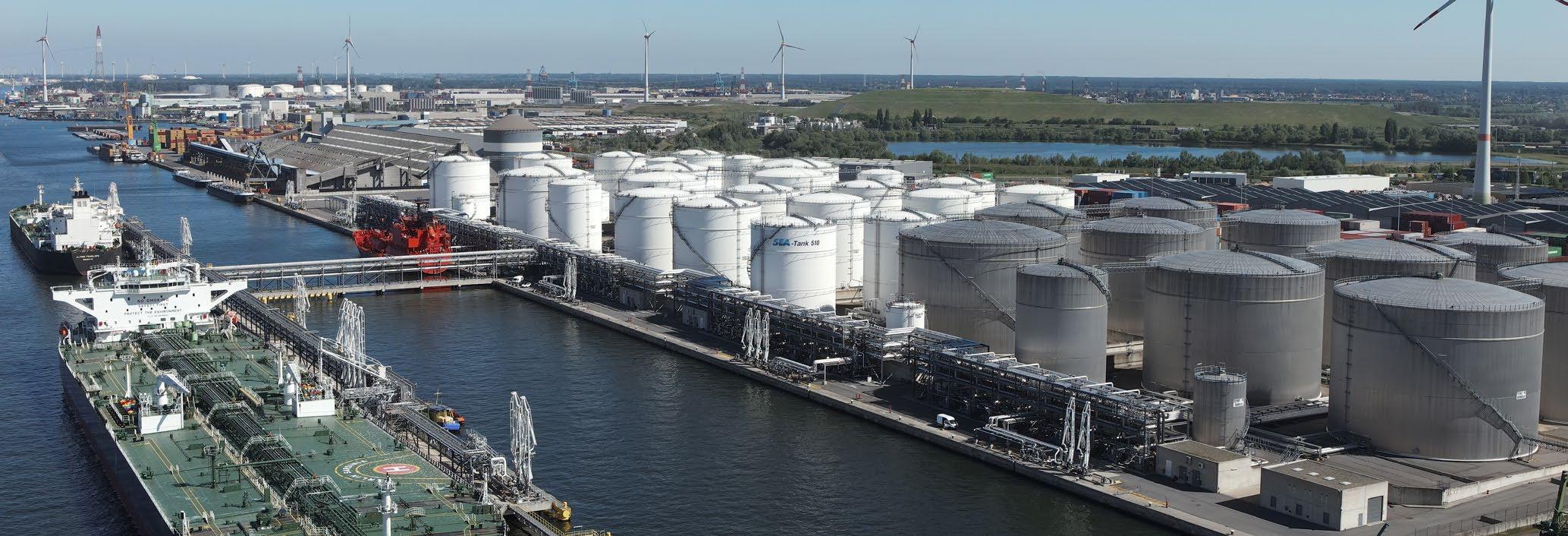
PAGE 53
02 PROFILE AQUARIUS ENERGY
PRIORITISING PERFORMANCE, TEAMWORK AND SKILLS
Sandra Fernandez Gigirin, project development manager at Advario, tells Tank Storage Magazine about the empowerment gained from working in the storage and logistics sector
01
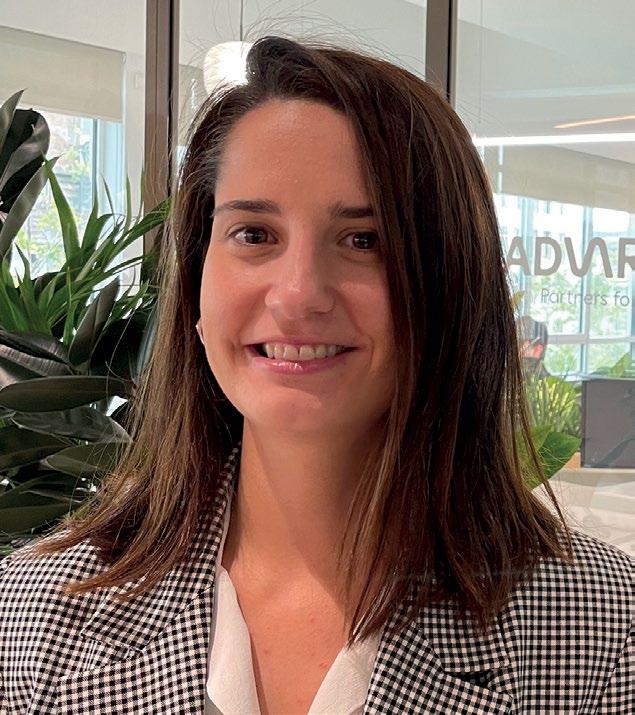
SANDRA FERNANDEZ GIGIRIN
joined Oiltanking, the predecessor of Advario, as a process engineer for the European terminal network almost 10 years ago. She was captured by the company’s operations and reputation in the industry. The role she entered allowed her to dive into the tank storage industry, working alongside experienced professionals and being actively involved in the day-to-day challenges of terminal facilities.
The opportunity to work in a regional engineering position within the tank storage industry appealed to Fernandez Gigirin as it allowed her to leverage her technical expertise and contribute to the efficient and safe operations of terminal facilities. Fernandez Gigirin comments: ‘I have been able to apply my engineering knowledge and contribute to the efficient and safe management of terminal operations. It has so far proven to be an exciting and fulfilling journey.’
WHY STORAGE & LOGISTICS?
The fast-paced, dynamic nature of the storage and logistics industry, and the tangible impact the storage industry has on the global energy supply chain, motivates Fernandez Gigirin.
After graduating from her studies at Santiago de Compostela University and Delft University of Technology, Fernandez
Gigirin worked in a research and development role in a different sector. But it wasn’t for her.
That role made her realise she is driven by the desire to apply her theoretical knowledge, learn from the process, and continuously improve. As someone who is highly goal-oriented, she found that the storage industry perfectly aligns with her aspirations and skill set.
Opportunities and growth is important in advancing a career. So when Fernandez Gigirin had the choice to enter the tank storage industry, she felt that her skills and mindset, honed through her engineering background and experience, would be a great fit for the industry’s demands.
A DAY IN THE LIFE OF A PROJECT DEVELOPMENT MANAGER
Fernandez Gigirin’s current role, within the Engineering Centre of Excellence at Advario, based at its headquarters in Rotterdam, sees her serve as a project development manager for chemicals. On a day-to-day basis, Fernandez Gigirin closely collaborates with both the business development teams and engineering teams at Advario’s terminals to identify and implement solutions that are tailored to the specific needs of Advario’s clients and partners.
Responsibilities of Fernandez Gigirin’s role encompass a range of projects, including both greenfield and brownfield initiatives, with a primary focus on the chemical sector. She is responsible for quality assurance of CAPEX projects for Advario’s terminals, as well as providing engineering expertise when and where needed across its global portfolio.
Additionally, Fernandez Gigirin contributes to the development of environmental and sustainability solutions, ensuring that all Advario projects align with industry standards and meet its ambition to enable the energy transition.
In essence, Fernandez Gigirin’s day-today activities involve close collaboration with various stakeholders, conducting
project assessments, and developing concept design to address the specific requirements of Advario’s chemical partners. By leveraging her knowledge in process engineering and environmental sustainability, Fernandez Gigirin actively contributes to the success of projects, supporting the growth and continuous improvement programs of Advario’s terminals.
‘This role allows me to blend technical expertise with strategic thinking and collaboration, as I work towards delivering solutions that are not only fit for purpose but also aligned with our company’s standards and commitment to sustainable operations and innovation,’ says Fernandez Gigirin.
‘I would tell a graduate that she has the opportunity to inspire future generations’
EXPLORING OPPORTUNITIES
Being involved in a dynamic industry is always an exciting prospect for engineers. Unlike some industries, the engineering timelines within the tank industry tend to be short. Hence, engineers are required to work in an agile way, to be efficient and to quickly respond to the logistics needs of partners. Fernandez Gigirin says: ‘I find that makes my job interesting, certainly because of the diverse range of products Advario handles for a multitude of clients. That diversity adds complexity and keeps me engaged as I constantly encounter new challenges and opportunities.’
The tank industry is inherently international, offering a culturally diverse environment. This is something that Fernandez Gigirin finds immensely rewarding. Collaborating with people from different parts of the world on various tasks and projects brings a rich blend of perspectives and experiences to the table. Having international aspect fosters a vibrant and stimulating work environment that encourages learning and personal growth.
PAGE 54
IN TANKS SANDRA FERNANDEZ GIGIRIN
WOMEN
Furthermore, the tank storage industry is constantly evolving in response to the chemical and energy transition. This presents an exciting challenge as the industry strives to prepare for the future. It pushes companies and individuals to stay updated with the latest advancements, technologies, and industry trends. ‘This allows us to proactively adapt and contribute to a sustainable and efficient future,’ says Fernandez Gigirin.
CAREER HIGHS
‘Rather than a single standout moment, I find that each day presents new opportunities for learning and personal development,’ says Fernandez Gigirin. ‘Throughout my career, I have embraced a mindset of continuous improvement, constantly seeking ways to expand my knowledge and enhance my skills. This approach has allowed me to tackle diverse challenges and contribute to the success of various projects.’ Everyone has specific aspects of their career that are particularly rewarding. For Fernandez Gigirin, this is the ability to learn from colleagues and collaborate with professionals from different backgrounds. Collective knowledge is a valuable tool in sharing and enriching understandings of the industry and broadening perspectives. ‘This often leads to more well-rounded decisionmaking and problem-solving,’ she says. Additionally, being part of a dynamic industry that is constantly evolving has given Fernandez Gigirin numerous growth opportunities. The chance to adapt to emerging technologies, explore new methodologies, and contribute to the industry’s development has been truly fulfilling.
‘Rather than focusing on a specific highlight, I take pride in the cumulative achievements and continuous progress I have made throughout my career. Each day brings new challenges, learnings, and accomplishments that contribute to my professional journey,’ she concludes.
OVERCOMING OBSTACLES
On top of juggling several projects, Fernandez Gigirin was also balancing a business travel schedule and a Masters of Business Administration. It required commitment, and also had an impact on her personal time. ‘However, there was beauty in the challenge. I found being able to directly apply what I was learning professionally very gratifying,’ she says. ‘I learned a lot, on all fronts. I had to develop effective time management strategies to balance my studies with my professional responsibilities. I still apply these strategies now, because managing
time and priorities will always be a challenge in the storage industry.’
MERITOCRACY OVER GENDER BIAS
In her field, Fernandez Gigirin has been fortunate to experience a high level of respect and equal treatment as a woman. She firmly believes that performance, teamwork, and skills are now prioritised over gender considerations, leading to a shift towards a meritocracy where the value of each individual is acknowledged. However, Fernandez Gigirin acknowledges that certain cultures still hold onto stereotypes and biases, occasionally presenting challenges for female professionals. In response, she and other women strive to overcome these biases by going the extra mile. ‘In these situations, I have observed that some women, including myself, may feel the need to overwork or go the extra mile to ‘prove ourselves’ and overcome these lingering biases.’
Despite these occasional hurdles, she remains optimistic about the progress made and ongoing efforts to promote diversity and inclusivity. Elevating individuals based on capabilities, expertise, and achievements rather than gender is encouraging. Fernandez Gigirin actively advocates for gender equality, challenges biases and stereotypes, and strives to create a more inclusive and balanced professional environment through delivering high-quality work and fostering strong collaborations.
WOMEN OF THE FUTURE MEAN WOMEN FOR THIS INDUSTRY
Despite the current underrepresentation of women in technical roles, there is tremendous potential for women to contribute and make a significant impact in the tank industry. By entering the tank industry, women can challenge traditional gender roles and contribute their unique skills and perspectives to the field. Diversity is key to driving innovation and progress. By bringing unique perspectives, skills, and experiences, women can offer fresh insights and ideas that enrich the industry as a whole.
Secondly, the tank storage industry is a dynamic and evolving field, providing ample room for growth and professional development. Women entering the industry have the opportunity to take on various roles, from engineering and project management to operations and business development. This diversity of roles allows women to find their niche and leverage their skills and interests to drive their career forward.
‘I would tell a graduate that she has the opportunity to inspire future generations
by choosing a career in the tank storage industry,’ says Fernandez Gigirin. Closely intertwined with the global energy transition and sustainability goals, the tank industry will play a crucial role in shaping and driving this transition. That means women entering the space can contribute to developing environmentally friendly solutions, at the forefront of a more sustainable future.
RETAINING WOMEN IN THE WORKFORCE
Fernandez Gigirin believes organisations must prioritise career development opportunities and work-life balance. Clear progression paths, recognition of achievements, and a culture of continuous learning foster motivation and value for women professionals.
Embracing a modern perspective that supports work-life integration challenges the notion of sacrificing careers for motherhood, creating an inclusive environment where both personal and professional aspirations can thrive.
Fernandez Gigirin comments:
‘Offering robust career development opportunities is essential for one’s growth and advancement.’
WHAT’S AHEAD?
The tank storage industry is poised for a transformative shift in the coming 20 years, influenced by crucial trends and developments. ‘Flexibility in storage capacity, product handling, and logistics will become paramount. The ability to quickly respond to fluctuations in supply and demand, as well as accommodate diverse product types, will be essential,’ Fernandez Gigirin says.
Environmental sustainability will play a major role, with a focus on reducing carbon emissions, adopting renewable energy solutions, and eco-friendly practices throughout the value chain.
Advancements in digital technologies and automation will also revolutionise operations, with smart monitoring systems, IoT devices, data analytics, AI, and machine learning driving real-time monitoring, predictive maintenance, and improved decision-making.
For more information:
www.advario.com
01 Sandra Fernandez Gigirin, project devlopment manager at Advario
PAGE 55
WOMEN
IN TANKS SANDRA FERNANDEZ GIGIRIN
ARA GASOLINE BLENDING TERMINALS: TIME FOR A STRATEGIC REVIEW
Jonathan Martland at Energex Partners explores the evolving role of the Amsterdam-Rotterdam-Antwerp (ARA) region
THE AMSTERDAM-ROTTERDAMANTWERP (ARA) region, long established as a premium hub for gasoline blending, finds itself at a crossroads. The confluence of regulatory changes and market dynamics is reshaping the landscape, compelling a strategic reassessment of ARA’s role in this sector.
REGULATION AND MARKET SHIFTS
The introduction of stringent regulations by the Dutch Inspectie Leefomgeving en Transport (ILT) in 2022, aimed at curtailing the export of low-quality gasoline with high sulphur and benzene content, has set off a chain of events.
While the ILT’s measures were designed to prevent the Netherlands from being a conduit for ‘dirty’ gasoline, particularly to West Africa, the outcome has been less straightforward.
Contrary to the ILT’s expectations, the consequence has been a geographical shift in blending activities, with Antwerp emerging as a beneficiary, maintaining its export volumes to West Africa. The decline in West African demand for ARA’s gasoline is more attributable to Nigeria’s subsidy removal than to regulatory changes in the Netherlands.
Belgium now faces a dilemma: whether to emulate the Dutch model and risk a similar diversion of trade routes. The experience of Amsterdam suggests that such regulatory alignment might merely reroute the supply of lower-quality gasoline to other regions, rather than eliminate it.
Complicating matters further, Russia and the Middle East are stepping up their gasoline exports to West Africa, exploiting price discounts and blending opportunities. This development, coupled with emerging blending hubs in Tunisia and Estonia, signals a potential decentralisation of the market.
ECONOMIC IMPLICATIONS FOR ARA AND BEYOND
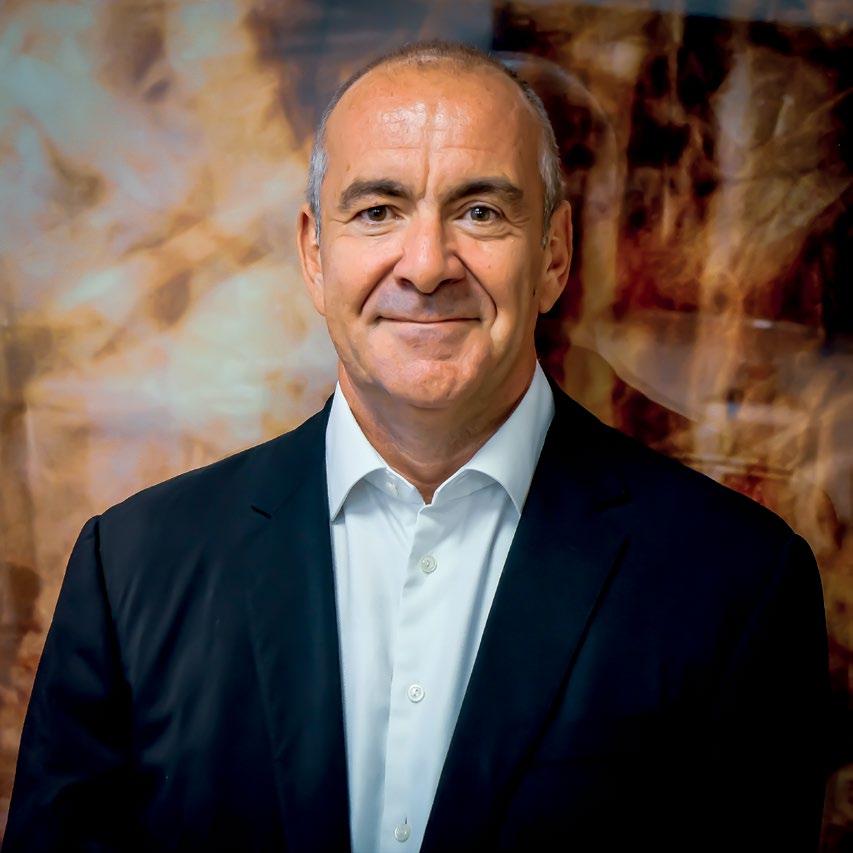
For ARA terminals, these shifts portend a significant impact. The relocation of blending activities will erode revenues. Traders value the efficiency of proximity in blending operations. Optimising between Amsterdam and Antwerp is harder than in a single port or terminal, but still reasonably efficient. However, if a proportion of the blending activity is no longer permitted, a wider relocation of activity will occur. While some highsulphur components might still pass
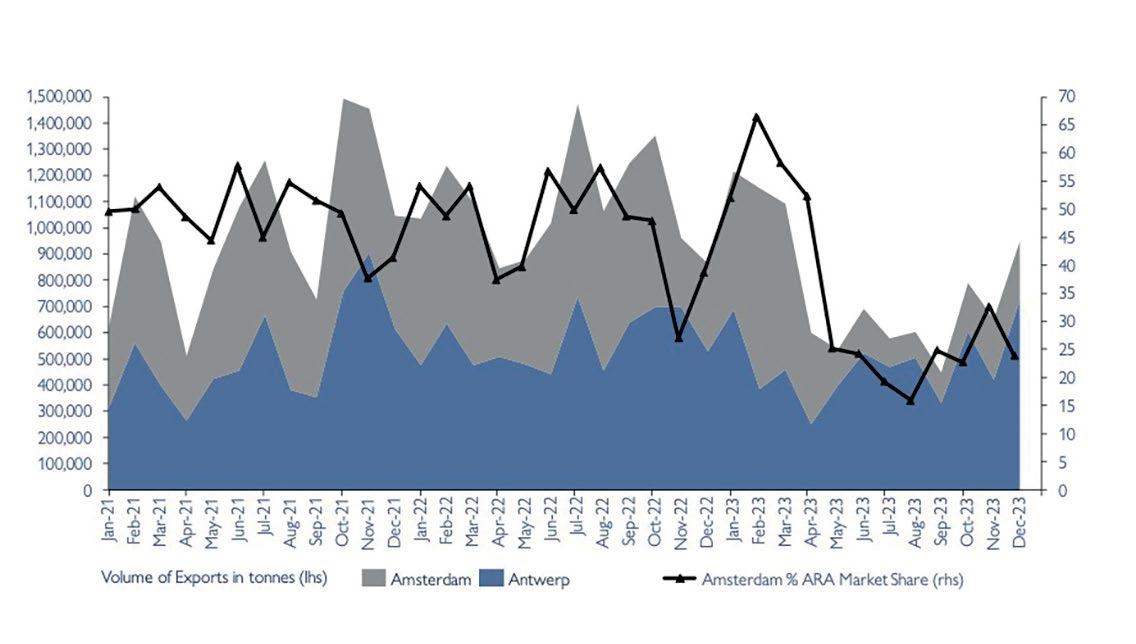
through ARA, many streams of both high and low sulphur will move elsewhere. Refiners in Europe have been running their production assets hard given the high-margin environment resulting from the Russia-Ukraine conflict. This environment has allowed even many of the weaker refineries to generate enough cash to stay in operation, thus supporting the gasoline surplus that needs to be exported to international markets. Traditionally, the ARA storage terminals have played a supporting role for refiners unable to blend and export their excess gasoline.
With local gasoline demand declines driven medium term by electrification of the light duty vehicle sector, Europe will continue to need to export the surplus.
CHALLENGES FROM NIGERIA
Adding to the complexity is the impending launch of the Dangote refinery in Nigeria. The volumes of gasoline produced are huge and intended to make Nigeria self-sufficient, but that does not mean that all production will stay in Nigeria. The refinery is designed to make European gasoline grades, but without local regulation changes and resulting
01 02 PAGE 56 MARKET ANALYSIS ARA REGION
price rises, the domestic market may not receive the refinery-produced tonnes.
The drive to maximise revenue, combined with the logistical benefit of large ship export capability, may incentivise Dangote to export, even while the high sulphur continues to flow into the country. Dangote exports would compete in some of the markets currently supplied by ARA, making life more difficult for blenders there. The suppliers of high-sulphur gasoline into West Africa may be in a prime position to manage the Dangote exports and choose to take them to the new blend hubs rather than to ARA.
STRATEGIC IMPERATIVES FOR ARA
In this evolving landscape, ARA terminals face a stark dichotomy. Those equipped with state-of-the-art facilities and oriented towards transatlantic exports may maintain, or even enhance, their market share. However, terminals that are less well-equipped or logistically constrained could find themselves increasingly marginalised. This situation is further exacerbated for terminals operating under ILT-style regulations, as they risk losing market share to locations with more lenient regulatory frameworks, provided these alternatives offer competitive blending services.
THE URGENCY OF ADAPTATION
The need for a strategic overhaul is palpable. ARA terminals must urgently contemplate repurposing strategies, which could include accelerating the energy transition, exploring new products or markets, or even considering investments in processing capabilities. This pivot is not merely a matter of staying relevant but is essential for survival in a rapidly changing global market.
The window for such strategic shifts is narrowing. As the global gasoline trade flows evolve, driven by regulatory pressures and market dynamics, ARA’s terminals must adapt swiftly. This adaptation could take various forms, from enhancing blending capabilities to align with stricter environmental standards, to diversifying into alternative energy sources or more advanced processing technologies.
In conclusion, the ARA gasoline blending terminals stand at a pivotal juncture. The interplay of regulatory changes, market shifts, and emerging competitors such as the Dangote refinery is reshaping the industry’s landscape. ARA’s terminals must navigate these challenges with agility and foresight. The decisions made in the near term will not only determine their competitive standing but could also
set the tone for the region’s role in the global energy market for years to come. The urgency of a strategic review and potential terminal repurposing cannot be overstated, as ARA seeks to maintain its relevance in an ever-evolving industry.
For more information:
Energex Partners is a commercial advisor to many of the main owners and operators of midstream infrastructure in the EMEA region. The team would be happy to discuss how they can help terminal owners through energy transition and as markets change.
www.energex.partners
Jonathan Martland: jmartland@energex. partners
Jason Rajah: jrajah@energex.partners
Liz Martin: lmartin@energex.partners
01 Gasoline Exports to West Africa from Amsterdam and Antwerp 2021-2023
Source: Vertexa
02 Jonathan Marland, partner at Energex Partners
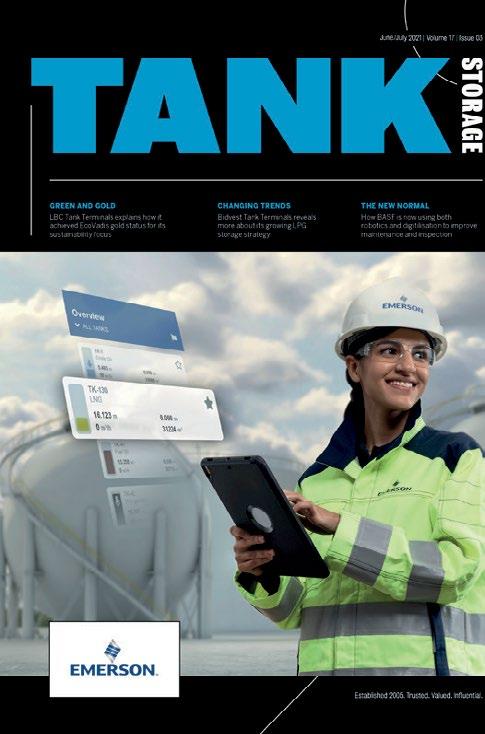

anamika@tankstoragemag.com Established 2005.Trusted. Valued. Influential. BOOK NOW ONLY MAGAZINE IN THE DELEGATE BAGS AT ILTA DISTRIBUTED AT WORLD HYDROGEN SUMMIT, CHEMUK, AND MORE POSTED TO 3,500 & EMAILED TO 30,000 TERMINAL PROFESSIONALS WORLDWIDE BOOK YOUR ADVERT NOW IN THE SUMMER EDITION. Sector predictions, exclusive interviews & more PAGE 57 MARKET ANALYSIS ARA REGION
SAFETY BEST PRACTICES FOR TERMINAL OWNERS
Executive director of the Tank Storage Association, Peter Davidson, discusses the
importance of good leadership in process safety
WHEN CONSIDERING process safety incidents, including many of the most high-profile safety occurrences, it is clear that leadership failures are a significant causal factor irrespective of industry or sector. Therefore, an active and continuous focus on leadership is essential to ensure that risks are not only properly managed but also understood. High standards of leadership are essential to ensure effective control of major hazard risks. It is essential to understand the implications of business decisions on major hazard management, both in the short term and in the long term.
Good major hazard leadership helps organisations to ensure that risks are given the resource, priority and attention required to reduce the likelihood of a major accident. It is also critical to the sustained management of risks.
In this context, senior leaders need to not only understand what can go wrong that could cause a major accident, but also what systems are in place to stop this from happening and have access to the right information to provide assurance that those systems are working effectively.
PRINCIPLES OF PROCESS SAFETY LEADERSHIP
Following the Buncefield terminal explosion and fires in 2005, UK industry, trade unions and regulators established the Process Safety Leadership Group (PSLG) to carry out a dialogue to jointly develop, progress and implement meaningful, effective recommendations and practices that improve safety. In 2010, the PSLG published a series of Process Safety Leadership Principles which are now widely used across the chemical and downstream oil industries. The Principles of Process Safety Leadership, which were re-issued in 2023, are:
• Clear and positive process safety leadership is at the core of managing a major hazard business and is vital to ensure that risks are effectively managed
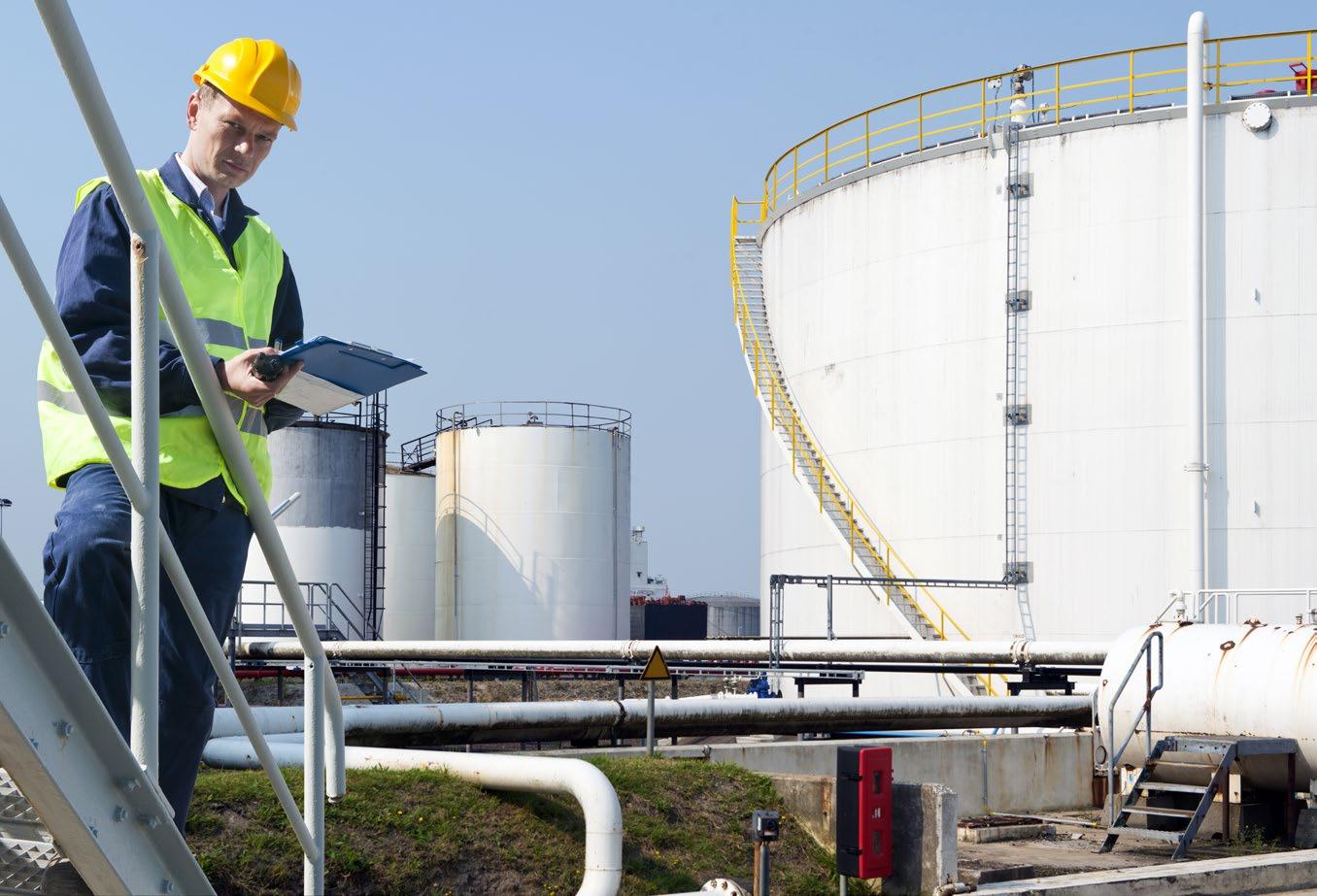
• Process safety leadership requires board-level involvement and competence. For companies with boards located outside the UK then the responsibility to show this leadership rests with the most senior UK managers
• Good process safety management does not happen by chance and requires constant active engagement
• Board level visibility and promotion of process safety leadership is essential to set a positive safety culture throughout the organisation
• Engagement of the workforce is needed in the promotion and achievement of good process safety management
• Monitoring process safety performance based on both leading and lagging indicators is central to ensuring business risks are being effectively managed
• Publication of process safety performance information provides important public assurance about the management of risks by an organisation
• Sharing best practice across industry sectors and learning and
implementing lessons from relevant incidents in other organisations are important to maintain the currency of corporate knowledge and competence
These principles also form the foundation of the OECD publication Corporate Governance for Process Safety: Guidance for Senior Leaders in Process Safety.1
The UK regulator is carrying out site-based interventions against these principles under the Seveso III Regulations (implemented as the Control of Major Accident Hazard (COMAH) Regulations in the UK).
Inspections carried out by the UK regulator against these principles have highlighted that, while there are some good examples of effective leadership, there is still work to be done and, in particular, three key areas require attention.
‘High standards of leadership are essential to ensure effective control of major hazard risks...’
PAGE 58
MARKET ANALYSIS PROCESS SAFETY

Firstly, the essential need for leaders to ensure effective communication to improve process safety across the entire organisation. Secondly, leaders, regardless of their role or responsibilities, should be able to demonstrate an appropriate level of process safety competency.
Finally, leaders should understand the importance of having an effective set of process safety performance indicators and be prepared to challenge what those indicators report to seek to continuously improve process safety performance.
ROLE OF SENIOR LEADERS
All senior leaders in major accident hazard businesses should consider how effective process safety leadership really is across their organisation, and use the resources available to them. This includes the adoption of a series of principles of process safety leadership. This process requires both time and commitment. However, the benefits can be significant. Through engagement with the workforce and with other businesses, organisations have the opportunity to reduce the potential for a major hazard event that could cause harm to people, the environment, assets and the business, as well as reduce the potential for disruption to customers.
Major accident hazard businesses will further be able to demonstrate to shareholders, employees, stakeholders and insurers alike that the organisation is effectively managing the risk of major hazards through the adoption of best practice. In addition, businesses will be better placed to show their compliance
‘Through engagement with the workforce and with other businesses, organisations have the opportunity to reduce the potential for a major hazard event...’
with regulatory requirements. It is also likely that there will be fewer minor disruptions to the business and a reduction in rework and waste.
FUTURE AMBITIONS
With global net zero ambitions, and governments setting out their policies for the energy transition, it is also critical that good process safety leadership, and the principles which guide it, form the basis of how our industry operates. In this context, industry will be utilising new processes and inventories, and many new businesses will be tackling the challenges of mitigating the major accident hazard potential associated with the new technologies and inventories which will be at the heart of net zero plans.
In managing existing assets, and as we move towards net zero, it is imperative that our focus on process safety leadership remains strong and that all senior leaders in major accident hazard businesses, including those regulated by Seveso III, consider how effective process safety leadership really is across their organisation, and use the resources available to them to develop informed and achievable improvement plans.
For more information:
1. OECD (2017), Corporate governance for process safety: Guidance for senior leaders in high hazard industries, Series on Chemical Accidents, OECD Publishing, Paris.
Peter Davidson will be chairing the panel on Safety Best Practices at StocExpo on 12 & 13 March at the Rotterdam Ahoy. Scan the QR code to register.

www.tankstorage.org.uk
PAGE 59
MARKET ANALYSIS PROCESS SAFETY
THE PATH TO CARBON NEUTRALITY
David Tassadough, infrastructure associate at GRESB, discusses how working parallel with current EU legislations will help companies reach net zero
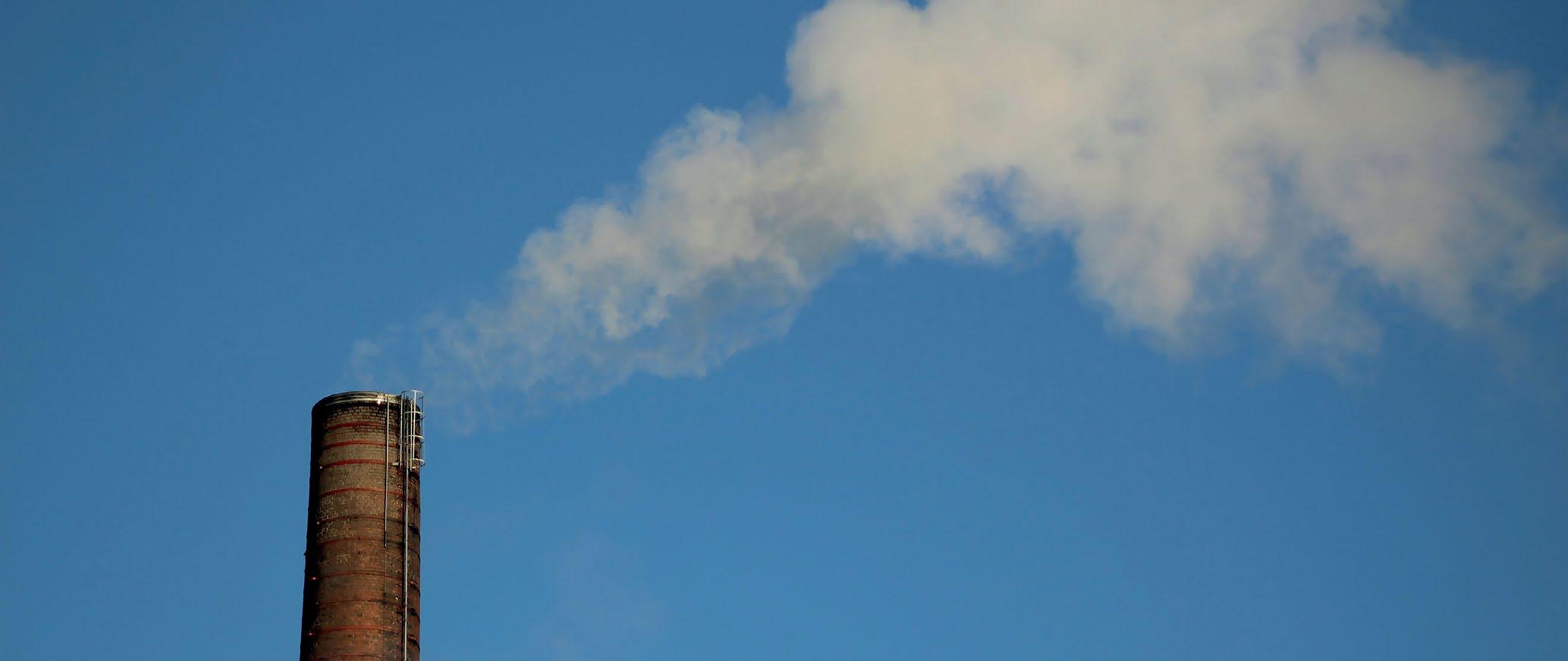
IT IS evident that for society to make substantial progress in preparing for a future impacted by climate change, a large segment of our infrastructure sector must greatly reduce its carbon emissions, if not achieve net zero.
Companies specialising in the storage of energy resources will play a key role in these efforts – bringing valuable expertise, established infrastructure, and the necessary legal credentials to manage new supply networks and the global expansion of markets for alternative energy forms. For the tank storage sector to play this role and to either significantly decarbonise or attain carbon neutrality itself by 2050 requires collaborative efforts from all involved parties.
To this end, the sector has already begun implementing changes as it faces a growing set of ESG reporting requirements that stem from a patchwork of legislative frameworks. Whatever is ultimately asked of tank storage terminals, being aware of the various reporting requirements, roadmap setting tools, and the operational levers that an operator has at its disposal is the first step on the journey ahead.
GHG REPORTING REGULATIONS
While varying methodologies and approaches exist to define and measure GHG emissions, legislative and industry bodies have long been collaborating to establish guidance and principles for the infrastructure sector. Public acceptance of some of these has allowed for an initial wave of standardised GHG emission and net zero reporting practices to become adopted.
Europe, spearheaded by its EU Green Deal initiative, has been at the forefront with the now adopted SFDR (Sustainable Finance Disclosure Regulation) for financial products, with CSRD (Corporate Sustainability Reporting Directive). This is an overhaul of NFRD (Non-Financial Reporting Directive) applying to large or listed EU companies.
This set of legislation affects both tank storage companies and their managers, with mandatory reporting requirements covering scopes 1, 2, and 3, as well as GHG offsets. CSRD (specifically applying to companies and becoming active as of 2026), contains 12 standards (named ESRS Standards) covering a broad spectrum of ESG topics. Standard E1 covers GHG, including specific requirements around scope 1, 2, and 3; net zero targets; net zero claims; and carbon removals.
These legislative standards are important to be aware of as, with further improvements, they have the potential to become the basis for civil society to police whether net zero claims and carbon removals are legitimate and sustainable. Whilst at the time of writing a net zero target is still optional, ESRS guidance E1 1 details that should a company claim it has one, it will be expected to explain the scope, methodology, and frameworks applied, as well as how the residual GHG emissions (defined as the last 5-10% of emissions) will be dealt with.
Furthermore, if the target includes the use of carbon credits, there are questions around whether reliance of said credits may somehow impede or reduce achievement of the GHG target, as well as their legitimacy including references to recognised quality standards.
It is worth noting that the introduction of such legislation is not going to be limited to Europe. The Securities and Exchange Commission of the United States is expected to propose new rules for climate change disclosure. Whilst, in California Senate Bill 253 has already confirmed it will require entities to publicly disclose their scope 1 and 2 GHG emissions starting in 2026 and scope 3 starting 2027.
PAGE 60
MARKET ANALYSIS NET ZERO
INDUSTRY BODIES
In parallel to the legislative arm of work, industry bodies have been trying to develop frameworks to help organisations from varying infrastructure sectors to measure GHG emissions, set targets, and ultimately develop plans to shift their organisation towards net zero.
The most widely accepted framework for measuring GHG emissions is the
’Tank terminals have an important role to play in our transition to a net zero economy, not only by reducing the emissions of their own operations but also by supporting the shift towards sustainable fuel sources.’
GHG Protocol Standards 2 with many subsequent initiatives aligning and building off these. When it comes to setting targets and formulating a validated net zero plan, the Science Based Targets Initiative 3 (SBTi) has become the go-to for numerous companies, including those in tank storage, according to data from the GRESB Infrastructure database 4 SBTi provides clear guidance and requirements pertaining to how near-term GHG reduction targets and longer-term net zero targets can be set with the goal of having these be trackable and realistic.
NET ZERO IN PRACTICE
Once a company has created its net zero roadmap and set targets, the next step is to put that plan into action. Tank terminals have an important role to play in our transition to a net zero economy, not only by reducing the emissions of their own operations but also by supporting the shift towards sustainable fuel sources whilst ensuring price stability in the energy market.
Primary sources of tank storage GHG emissions will regularly consist of some of the following:
• Power generation: Generated on site, primarily used for loading and unloading operations
• Heating tanks: Used in order to maintain fluidity of stored products (e.g. heavy fuel oil)
• VOCs: Volatile organic vapours are emitted during fuel loading (e.g. benzene, methane)
• Steam production: Through boilers used during the cleaning or stripping process
• Vehicle and machinery operations: Trucks, rail cars, and other heavy machinery are part of the tank terminal’s fleet
Many of these emissions can already be eliminated by adopting clean energy technologies, such as switching to renewable power generation sources or electrifying existing fleets. However, some are inherently tied to the product storage itself, such as the heating of tanks. Therefore, shifting the fuels and chemicals stored in the tanks becomes an unavoidable step in decarbonisation or attaining net zero.
TAKING THE FIRST STEPS
Crucial first steps towards net zero include introducing hydrogen (including hydrogen carriers e.g. ammonia, methanol) for things like shipping fuel or heavy industrial processes (e.g. steel) and flow batteries which have great potential due to their scalability, long life cycle, and integration with the electrified grid. This effort, supported by the introduction of transition fuels such as advanced biofuels and synthetic biofuels, will likely be the key to making the switch in an economically stable way. Naturally, this means residual emissions may be hard to fully eliminate for the sector. In fact, several tank storage companies who align their net zero plans to SBTi have accounted for this, leaving a 5% buffer of non-abatable emissions. For example, biofuels offer a safer and more environmentally friendly option for tank heating in terminal operations. Although they do have some emissions, their lower volatility and toxicity reduce the risk of accidents. Additionally, the compatibility of biofuels with existing systems and potential cost savings makes them an attractive alternative to conventional fossil fuels. Such details should not be overlooked when judging a tank terminal’s approach to net zero.
To fully embrace the net zero economy transition, storage terminals can get further involved with concepts such as integration of EV charging infrastructure directly on site or coordination with urban planners to align operations with sustainable city development and having further reaching impacts on society.
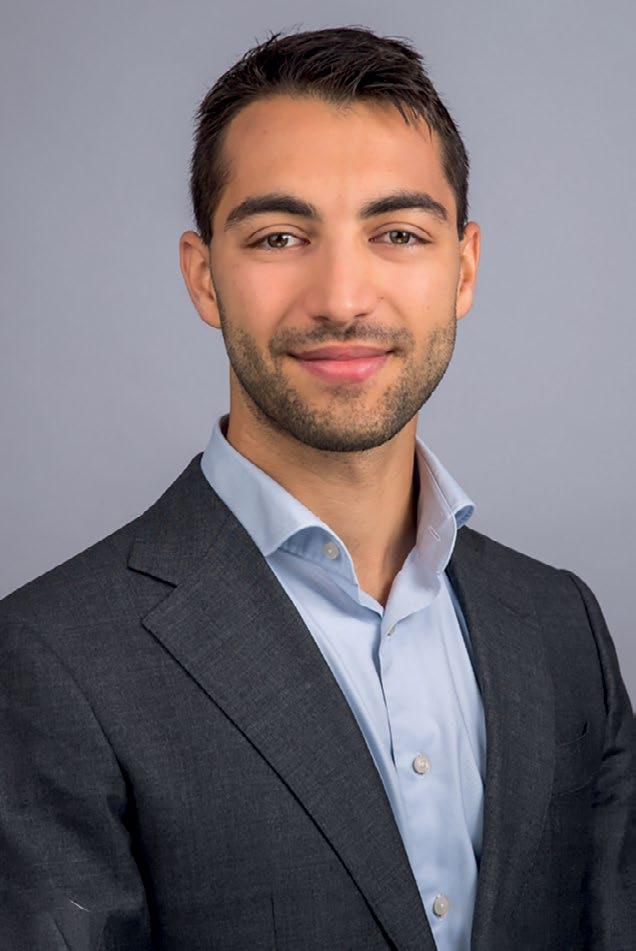
For more information:
David Tassadough will be speaking at StocExpo 12 & 13 March at the Rotterdam Ahoy. Scan the QR code to register now.

www.gresb.com/nl-en
1. https://www.efrag.org/Assets/ Download
2. https://ghgprotocol.org/standards
3. https://sciencebasedtargets.org/
4. https://www.gresb.com/ nl-en/products/infrastructureassessments/
01 David Tassadough, infrastructure associate at GRESB
PAGE 61
01
MARKET ANALYSIS NET ZERO
IT’S ALL ABOUT WORK ETHIC
Managing director at EWFM, Guy Curtis discusses winning the Rising Star Award and working his way up in the tank storage sector 01
GUY CURTIS was nominated for the Rising Star award at the Global Tank Storage Awards 2023 by one of his colleagues for his achievements at EWFM. This award goes to the person who is already paramount to the success of their company and who has the potential to become a key contributor to the future development of the tank storage industry. Looking at Curtis’s glowing nomination, the judges were impressed by his work ethic, dedication to the industry and impressive trajectory.
‘EWFM has really grown in recent years, so it’s fantastic promotion for us. I know it’s an award for me, however, it’s for the company itself too,’ he says.’ he says. ‘There was really strong competition, so initially I was quite shocked. I’m proud that all of the hard work I have put in at EWFM is being noticed and I am honoured to have the recognition from the award on a global scale.’
In the same year, Curtis was also presented and recognised as one of StocExpo’s Forty under 40, showcasing the rising stars of the tank terminal industry. ‘I didn’t go to university; I went straight to EWFM from school and began my career. I didn’t mind studying, however, I felt more motivated that I could add greater value within the working environment. Receiving recognition with the industry on a global scale is really great for me and my job satisfaction!’
PROJECTS & ACHIEVEMENTS
During his time at EWFM, Curtis has progressed rapidly. From beginning as a trainee sales engineer in 2014 to, nine years later, accepting a promotion to general manager, winning the Rising Star award, and then going on to be EWFM’s managing director, now. His progression has been fast-tracked by the projects he has worked on and his commitment to growing and developing EWFM as a company.
One the biggest projects Curtis worked on was for four-20 inch floating suction units, which are used to draw jet fuel safely from storage tanks. EWFM supplied these for an expansion project at Manchester airport. ‘It was a fantastic project because we were having to liaise with pretigous companies like BP to produce a solution for such a major international airport. To

be involved in something that was signifcant for the UK aviation industry was just great, from start to finish. That has probably been one of my career highlights within the tank storage industry,’ explains Curtis.
Floating suction units are generally used within the tank storage industry, but EWFM also adapted them for a huge project in Qatar. The five-40 inch floating suction units were used in massive reservoirs in the desert to draw the purest water. ‘It was all about recycling and purifying water for the football World Cup. Rather than wasting the sewage, it was being recycled,’ says Curtis.
The way EWFM took a product that’s used in the tank storage industry and put it to use in a different, but renewable project, was really interesting. Not only that, but Curtis explained that the sheer scale of the units was incredible. ‘We’ve done this in the tank storage industry, and it was
great to take that technology and use it in another industry with that added bonus of a project that benefits the world as well,’ says Curtis.
OVERCOMING CHALLENGES
‘Our products are made-to-order and are designed to provide a solution for our customers. This means they need to be manufactured right the first time,’ says Curtis. One of the biggest daily challenges Curtis faces is keeping customers satisfied. After the engineering phase, EWFM always provides final drawings for approval to their customers. When these are all approved, manufacturing can begin. ‘We’ve had a few situations in the past eight years where, six to ten weeks or even once complete, customers change their mind and they want to edit the design. As you can understand this is a complex process as the majority or all
PAGE 62
GLOBAL TANK STORAGE AWARDS RISING STAR
of the product could already be fabricated. I have always found that speaking with the customer, being open and honest about the situation is best for the quickest resolution, Communication is key!’ says Curtis.
Curtis believes that face-to-face communication is always best, and going to visit customers when an issue arises proves that you are doing your best to handle a situation and earns respect.
‘I started at EWFM when I was 19, and initially found it daunting visiting refineries and meeting customers. When I started, I was shadowing more experienced colleagues and one of the hardest things to overcome was people always looking to the older colleague, instead of you,’ says Curtis. He quickly realised how important it was to listen. Through listening, Curtis was able to not only learn but also respond to customers’ needs and goals in a proactive way, which showed people he knew what he was talking about. This has helped him gain industry respect over the years.
WHAT’S NEXT?
With his recent promotion, to managing director, Curtis says: ‘I have really enjoyed the added responsibility and the new dynamics. It’s invigorating to lead a team towards achieving our shared goals, and I’m excited to continue driving innovation and growth in this new role.’
He has been keeping busy with hiring a new salesperson and training. Alongside
this, he has been getting ready for new product launches. ‘We’re looking to shortly launch floating roofs alongside our tank seals for storage tanks. We also have other exciting product releases in the pipeline.’ EWFM is expanding but Curtis is ensuring they grow at a steady pace. Even though this is an individual award for Curtis, he believes it’s for the whole team at EWFM. ‘I wouldn’t be where I am without the team around me and the support from my colleagues. Without their help, there’s no way I would be sat where I am today,’ says Curtis.
ADVICE FOR STARTING OUT
‘My advice to young people starting out in the industry would be is that it’s all about work ethic,’ says Curtis. There are three important attributes to have in industry, the first being the willingness to work. ‘It’s about having a can-do attitude every day, even if you don’t like a job. If you make yourself open and approachable it will be recognised and that will help you massively throughout your career,’ says Curtis.
The next thing is listening to people, he says: ‘I think, especially as a young person, you don’t always know what you’re talking about initially when you start a job, so it’s important to listen and take on what your customers, colleagues and suppliers are saying to you.’
Finally, he says, it’s all about learning and being ready to learn. ‘Everyday you learn
something new. I’ve been working at EWFM for nine years and I still appreciate there’s many more experienced people in this industry who have been in it much longer. It’s important that you never become a know-it-all and always embrace learning opportunities,’ says Curtis.
For more information:
Since the interview, EWFM achieved a record year of sales for 2023. The roofs were successfully launched and also new to 2024, EWFM is releasing marine loading arms into the UK market. Through Curtis’ quick successes as general manager, in June 2023 he was promoted to managing director. He cannot wait to carry on helping the industry.
The Global Tank Storage Awards will take place on 12 March 2024 at the Schiecentrale Rotterdam. Book your table now and view the shortlist for 2024 on page 41.
www.ewfm.co.uk/news
www.tankstorageawards.com

PAGE 63
02
01 Guy Curtis, managing director, with his Global Tank Storage Award
02 Qatar floating suction units STORAGE AWARDS RISING STAR
GLOBAL
TANK
NAVIGATING THE EVOLVING LANDSCAPE OF FUELS
Jonathan Feys, CCO of at Ghent Transport & Storage discusses the current
crossroads of traditional and alternative fuels in transport
THE QUEST for future fuels is rapidly transforming the energy landscape, especially in the realm of transportation. From sustainable aviation fuels (SAF) and biodiesel, to bio-bunkering, the focus on cleaner alternatives for mobility is shaping the trajectory of the world’s energy future.
At StocExpo, Jonathan Feys will be contributing to a panel discussion into the current state of the transportation fuels market, explore recent trends, and analyse key developments that are steering the course towards a more sustainable and eco-friendly future.
The tank storage sector is at the crossroads of traditional and alternative fuels. The transportation sector is undergoing a profound shift. The persistent challenges associated with fossil fuel reliance, including carbon emissions and environmental impact, have spurred a wave of innovation in the pursuit of cleaner and greener options.
DRIVING SUSTAINABLE SOLUTIONS
In the realm of road transportation, biodiesel has long been recognised as a viable alternative to traditional diesel fuels. Produced from renewable sources such as vegetable oils or animal fats, biodiesel offers a cleaner-burning option for diesel engines. The biodiesel market has seen steady growth, with increased adoption in the automotive and commercial sectors.
Recent news in the sector includes innovations in feedstock production, such as the use of algae or used cooking oil. Governments are incentivising the production and use of biodiesel, aiming to reduce dependence on fossil fuels and lower emissions from the transportation sector. Biodiesel’s compatibility with existing diesel infrastructure makes it an attractive choice for transitioning towards a more sustainable future in road transport.
Major automakers are investing heavily in the production of electric cars, and governments worldwide are introducing policies to encourage their adoption. The transition from internal combustion engines to electric
motors is accelerating, driven by advancements in battery technology and the establishment of robust charging infrastructure.
Hydrogen-powered vehicles are also gaining traction. Recent announcements from automobile manufacturers about their plans to introduce hydrogen fuel cell vehicles indicate a growing interest in this technology. Hydrogen’s potential as a clean fuel for transportation is increasingly recognised, and its integration into various modes of transport is becoming more feasible.
SOARING TO NEW HEIGHTS
In the aviation sector, the quest for sustainable alternatives has given rise to SAF. Airlines and aviation authorities are actively exploring SAF as a means to reduce the carbon footprint of air travel. Made from renewable resources such as biomass, waste oils, bio-alcohols (SPK/ATJ technology), SAF presents a promising avenue for decarbonising aviation.
Recent trends indicate a surge in interest and investment in SAF. Governments and industry stakeholders are collaborating to scale up production capacity and facilitate the widespread adoption of SAF. With airlines committing to reducing their emissions and regulatory bodies endorsing the use of SAF, the aviation sector is on the brink of a significant transformation.
MAKING WAVES IN SHIPPING
Maritime transportation, a traditionally carbon-intensive sector, is undergoing a green revolution with the emergence of bio-bunkering. This involves the use of bio-based fuels in shipping, providing a cleaner alternative to conventional bunker fuels. Biofuels derived from organic materials such as algae or waste oils are being explored as viable options for powering ships.
Recent developments in bio-bunkering highlight collaborations between shipping companies and biofuel producers. The introduction of biofuels in maritime transport not only aligns with
environmental goals but also addresses the tightening regulatory frameworks related to emissions from shipping. As the maritime industry seeks to navigate towards sustainability.
CHALLENGES & OPPORTUNITIES
While the transition to cleaner fuels is gaining momentum, challenges persist. The scalability of alternative fuels, the need for significant infrastructure investments, and consumer acceptance are critical considerations. Additionally, regulatory frameworks and international cooperation play crucial roles in fostering the adoption of sustainable transportation fuels.
Innovations in production processes, increased collaboration and the integration of sustainable fuels into existing transportation systems are pivotal for realising a future where mobility is not only efficient but also environmentally responsible.
Recent trends and developments signal a collective effort to transform the way we move people and goods, governments, industries, and consumers.
For more information:
Jonathan Feys will be speaking at StocExpo on 12 & 13 March at the Rotterdam Ahoy. Scan the QR below to register now.

www.gtsghent.be
PAGE 64
MARKET ANALYSIS FUTURE FUELS
BECOMING A FUTURE FUELS HUB
Tank Storage Magazine hears from Port Tarragona on how its energy transition strategy is working to decarbonise the port and turn it into a future fuels hub
AS GLOBAL targets to reach net zero and achieve a more sustainable future intensify, ports need to do everything they can to support this transition. This may mean replacing their own infrastructure, but also requires collaboration with customers and partners across the supply chain to ensure a cohesive move.
Located in Spain, Port Tarragona’s energy transition strategy is divided into two parts: the first being the decarbonisation of port activity, and second, to become a hub for the products that will lead this energy transition: hydrogen, methanol, ammonia and other derivatives. Both of these phases will be critical to deliver in the energy transition.
DECARBONISING OPERATIONS
The main projects being carried out at Port Tarragona are:
• Installation of solar energy production plants
• Creating an energy community on the Costa Wharf
• Analysis of the installation of OPS systems on the cruise liner, container and ro-ro terminals
• Pilot projects related to hydrogen (retrofitting of a railway shunting locomotive or a set of service vessels)
These changes will help the port reach its own net zero goals, outlined in its Sustainability Plan (more on this later).
For example, the installation of photovoltaic panels will allow the port and surrounding businesses to harness solar energy for electricity production. As well as this being a green, renewable energy, it will also reduce the demand in the region for electricity from the grid. This will be particularly important as vehicle fleets transition towards electric, and as hydrogen production via electrolysis becomes more common.
Likewise, creating an energy community at Moll de Costa will bring together different collaborators across the supply chain. An energy community is a form of organisation between different users of electrical energy in order to decide
how to produce, manage and use energy with the aim of benefiting collectively. In the case of this project, the port wants to take advantage of the installation of different photovoltaic panels on the roofs of Tinglado 1 and 2 to create a community and be able to manage all this renewable energy production with consumers in the Moll de Costa area.
With the aim of starting to generate a hydrogen economy, the port wants to start implementing pilot projects in order to implement, test and analyse the use of hydrogen in port facilities. The two main projects are: the retrofit of a railway shunting locomotive (transformation of its diesel engine to a hydrogen combustion engine) or transforming service boats (such as the port police’s boat and ideally some others that serve the port) from traditional fuel engines into fuel cell or direct hydrogen combustion engines.
PREPARING FOR FUTURE FUELS
Regarding its positioning as a hub for new energies, the main lines currently being worked on are:
• Placing Tarragona as a key port in these new energies, in both the Mediterranean and through Europe
• Collaboration as a petrochemical cluster and, together with the Hydrogen Valley of Catalonia, leading this transformation and anticipating the changes that will take place
• Achieving a port connection to the new Spanish hydrogen trunk network (associated with H2MED)
Pivoting to a more future fuels-focused facility is already garnering results for the port. The team has observed interest in possible new investments, in both the port and industry in the area. By positioning itself as a benchmark port in the mediterranean area, Port Tarragona will be able to progress these pilot projects and stay ahead of the curve as the industry transitions.
SUSTAINABILITY PLAN
Port Tarragona contributes to sustainable development through its firm commitment to a policy of
action to mitigate climate change and protect the environment.
Since the publication of its Sustainability Plan Agenda 2020-30, Port Tarragona has embarked on a decade of ambitious actions to achieve the economic, environmental and social sustainability objectives for 2030.
The future of the logistics infrastructure involves intermodality and the increased use of rail; the promotion of new types of green fuel and new sources of renewable energy; guaranteeing the circularity of all projects and maintaining the policy of open, global transparency and communication as a fundamental pillar of the entire organisation.
The Port of Tarragona’s growth is linked to energy transition, digitalisation and the fostering of infrastructure that favours greater efficiency, competitiveness and connectivity among people.
This is the block that will most decisively allow for the compensation of CO 2 emissions – from 96% at the end of 2021 to 99% at the end of 2030 – through actions such as contracting green energy and the electrification of the cruise liner dock.
In this section, the Sustainability Plan also provides for the study of alternative energies, such as hydrogen, that have a very wide application (lorries, land machinery, service boats, freight vessels, generator sets, etc.), in addition to the promotion of rail transport that is already bearing the first fruits with the increase in cereal shipments to Lleida, Vic and Aragon.
Finally, Port Tarragona is taking decisive action in the fight against climate change with a responsible use of resources, promoting circularity, taking advantage of natural resources and preserving the biodiversity of the environment.
For more information:
www.porttarragona.cat
PAGE 65
MARKET ANALYSIS FUTURE FUELS
THE FORGOTTEN LINK IN THE ENERGY TRANSITION
Rafael Rengifo and Iván Parra Tepedino from Becht explain the role the midstream sector plays in the energy transition
AS THE GLOBAL energy landscape undergoes a profound emphasis on sustainability and reduced carbon emissions, the midstream sector finds itself at a pivotal crossroads.
Traditionally serving as the unsung hero in the energy value chain, midstream operations are now faced with the challenge and opportunity of aligning with the goals of the energy transition while navigating through the complexities of regulations and the feasibility of decarbonisation options.
THE MIDSTREAM SECTOR
The midstream sector is a crucial link connecting the upstream (exploration and production) and downstream (refining and distribution) segments of the energy industry. This sector primarily involves the transportation, storage, and wholesale marketing of energy products, including crude oil, natural gas, and refined petroleum products.
In today’s world, the challenge is that the hydrocarbon-based commodities and chemicals transported, stored and distributed are prospective generators of CO2 and other greenhouse gases that ESG regulations are targeting. Therefore, midstream businesses need to be prepared to adapt to the new social, political and marketing landscape.
KEY CHALLENGES
With global efforts to combat climate change, there is increasing pressure on all sectors to reduce carbon emissions.
The midstream sector, traditionally associated with fossil fuel transport, faces the challenge of aligning its operations with decarbonisation goals.
For many midstream companies, the answer, for now, is to focus on minimising the release of methane, carbon dioxide, and other GHGs from their gas processing plants, pipelines, storage facilities, and fractionators, and on switching to renewables to power their operations.
The European Union (EU) has established a comprehensive framework to achieve its goal of becoming climate-neutral by 2050, emphasising the reduction
of greenhouse gas emissions and the promotion of sustainable practices. Key components of this framework include the EU Green Deal, Fit for 55 package, the EU Emissions Trading System (ETS), and the Renewable Energy Directive (RED).
As the world embraces renewable energy sources, the midstream sector must adapt to the changing dynamics of the energy mix. The transportation of renewable fuels, such as hydrogen and biofuels, is gaining prominence, requiring infrastructure adjustments.
MIDSTREAM’S CONTRIBUTION
The midstream sector can play a pivotal role in building the infrastructure necessary for the transportation and storage of renewable energy sources. This includes pipelines for hydrogen, renewable/biofuel terminals, and the replacement of equipment and fuel sources. An often-missed and costly point is that with the ESG systems and credits or validation it is necessary to have segregation from source to blending. Midstream companies can proactively diversify their energy portfolios by investing in low-carbon and renewable energy projects. This strategic shift allows for long-term sustainability and resilience in a changing energy landscape. Implementing CCS technologies in midstream operations can help mitigate carbon emissions associated with fossil fuel transportation. This involves capturing CO2 emissions at the source and transporting them for secure storage. By also leveraging advanced technologies, such as IoT sensors and data analytics, a facility can optimise the transportation and storage of energy products. This not only improves operational efficiency but also reduces environmental impacts. By embracing digitalisation, automation, and other innovative technologies, the midstream sector can optimise its operations, improving efficiency, and minimising environmental impacts.
HOW CAN BECHT HELP?
Becht specialises in assisting midstream partners in achieving their emission reduction targets while remaining costcompetitive and supporting the EU’s emissions reduction goals.
By partnering with Becht, midstream clients can access its expertise and industry knowledge to implement sustainable practices and contribute to a more environmentally friendly future. Its team of highly qualified consultants have hands-on experience working with different partners on a variety of projects addressing the energy transition and helping them navigate through very important issues.
The midstream sector’s adaptability and proactive involvement in the energy transition are essential for achieving global sustainability goals. By embracing innovation, investing in renewable infrastructure, and committing to carbon reduction strategies, midstream companies can not only remain relevant but also become key facilitators of a more sustainable and resilient energy future. As the world transitions towards cleaner energy, the midstream sector’s evolution will be instrumental in shaping a greener and more sustainable planet.
For more information:
Iván Parra Tepedino will be speaking and the Becht team is exhibiting at StocExpo on 12 & 13 March 2024 at the Rotterdam Ahoy. Visit the team on stand B8. Scan the QR code below to register.

www.becht.com
PAGE 66
MARKET ANALYSIS ENERGY TRANSITION







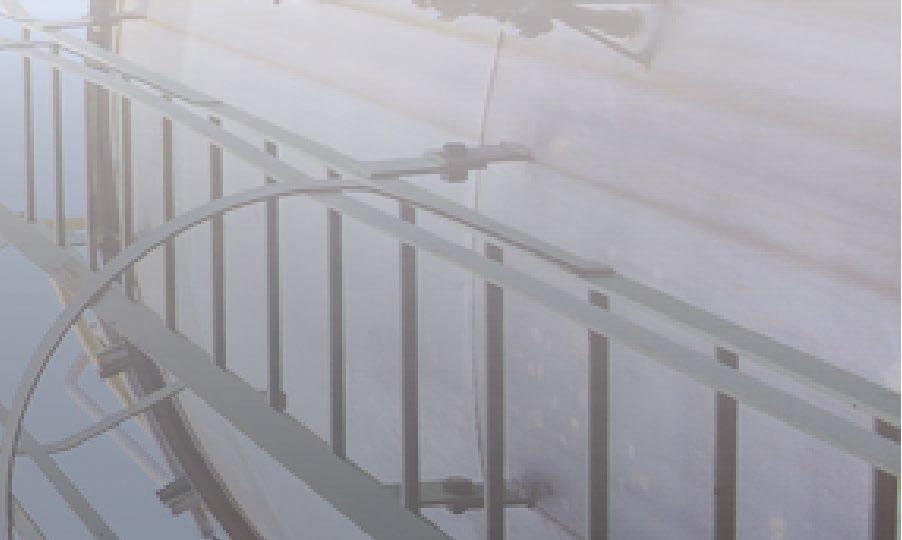

























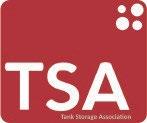













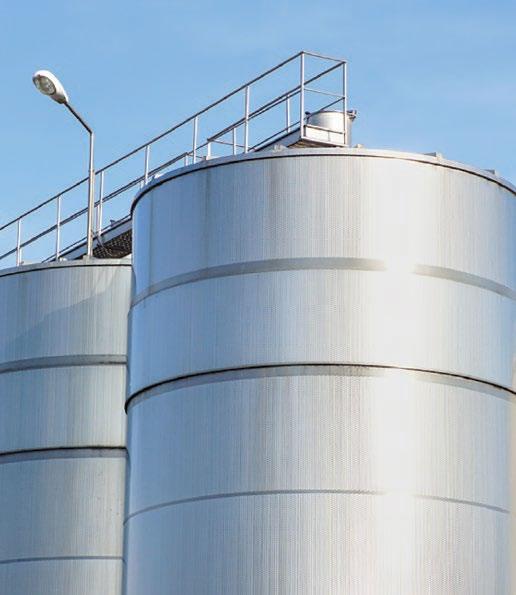















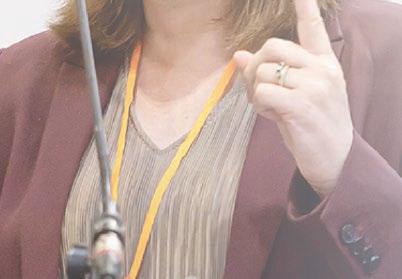
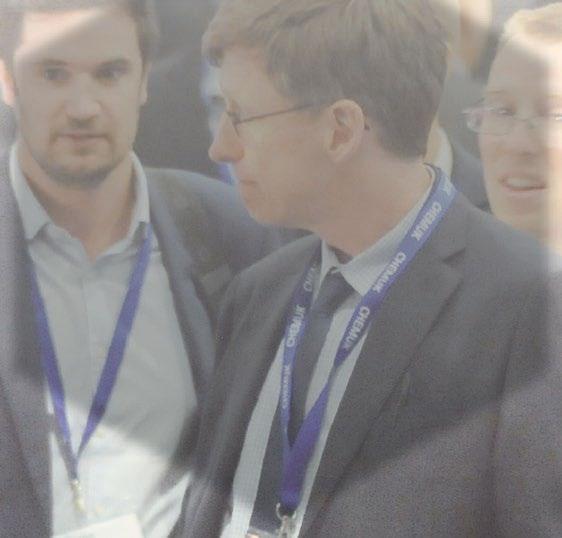


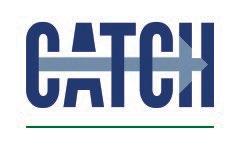

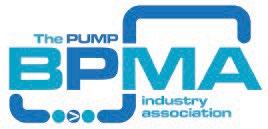



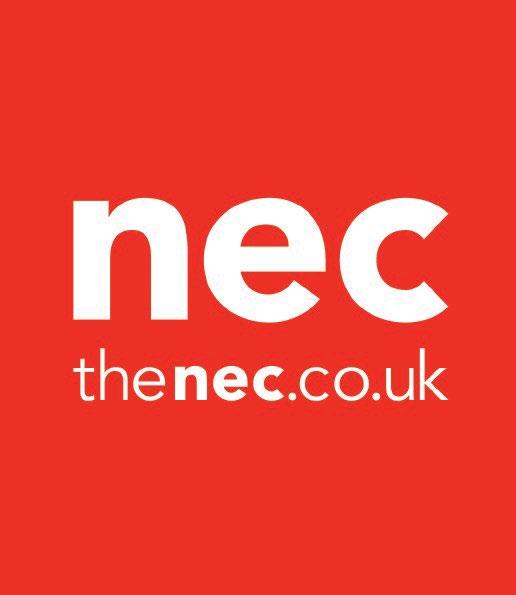
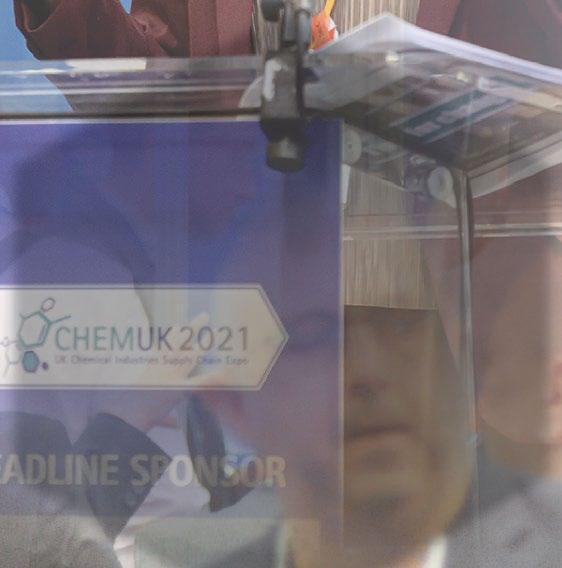











15th & 16th May 2024 The NEC, Birmingham, UK 15TH & 16TH MAY 2024 REGISTER FREE AT WWW.CHEMICALUKEXPO.COM 2 Packed Days 500+ Leading Exhibitors Operations & Logistics Tank Storage Solutions Plant, Process & Asset Management Chemicals & Materials Sourcing 100+ Speakers PRE-REGISTER FOR FREE ENTRY! Supporting Partners include: Headline Media Partner The UK Expo for Chemical, Process & Plant Engineering FREE ENTRY WHEN PRE-REGISTERED
LOHC TECHNOLOGY: STRENGTHS AND WEAKNESSES TO OVERCOME
Ion Agirre and Laura Barrio from the SherLOHCk project discuss the challenges of storing and transporting hydrogen
HYDROGEN is emerging as the preferred energy source in the battle against greenhouse gas emissions, with a notable emphasis on obtaining green hydrogen. Its integration with renewable sources is pivotal to smoothing out production fluctuations and facilitating energy transport.
However, the challenge lies in storing and transporting hydrogen from renewable production sites to application points.
The existing technologies for hydrogen storage primarily focuses on boosting its volumetric energy density, yet faces hurdles due to high pressures and low temperatures, slowing down the evolution of the hydrogen economy.
In response to these challenges, there’s a growing interest in liquid organic hydrogen carriers (LOHCs). This innovative technology involves reversible hydrogenation/dehydrogenation
reactions utilising cyclic hydrocarbons. What makes LOHCs stand out is their potential to transport hydrogen seamlessly through current liquid fuel infrastructures, offering a loss-free solution for long-term hydrogen storage.
WHAT ARE THE LOHCS?
Under the term LOHCs are an important list of molecules which are able to store and release an average of 6wt-% of hydrogen. The storage consists of a catalytic hydrogenation of a hydrogenlean compound (LOHC-) yielding a hydrogen-rich compound (LOHC+).
Various LOHC molecules are being considered, each with distinct advantages and disadvantages. For instance, methylcyclohexane (MCH) is a costeffective option using toluene as the carrier molecule, which boasts significant
production capabilities estimated at around 22 Mt. However, toluene’s toxicity requires careful handling.
An alternative non-toxic LOHC is Dibenzyltoluene (DBT)/Benzyltoluene (BT) and its mixtures. Although currently more expensive than toluene, scaling up could make it a compelling long-term option, especially due to its non-toxic nature. These systems allow for 6.2 wt% H2 storage, but they require catalytic dehydrogenation, performed at high temperatures (200350°C) (refer to Table 1, below).
Three primary commercial hydrogen storage systems dominate the market: compressed gaseous hydrogen (CGH2), liquid hydrogen (LH2), and metal hydrides, with CGH2 claiming over 90% of the market share.
While liquid hydrogen is favoured for extensive storage and transport, it proves
Physical hazards
Environmental hazards
Health hazards
Table 1, Properties of different LOHC systems
PAGE 68
TOL NAP DBT BT NEC LOHC system Toluene / Naphtalene / Dibenzyltoluene / Benzyltoluene / N-ethylcarbazole / Methylcyclohexane Decalin Perhydro-dibenzyl Perhydro-benzyl N-ethyl-carbazole toluene toluene dodecahydro H2 capacity (wt%) 6.2 7.3 6.2 6.2 5.8 Energy density (kWh/L) 1.6 2.2 1.9 1.8 2.5 Boiling point (°C) 111 / 101 218 / 197 187 390 / 371 280 / 270 378 / 281 Flash point (°C) 4 / -6 78 / 57 212 / n.d. 137 / n.d. 186 / n.d. Autoignition temp. (°C) 480 / 260 567 / 250 450 / n.d. 510 / n.d. 619 / n.d. Hydrogenation 20-40 bar 70 bar 50 bar 30 bar 70 bar 90-150°C 80-160°C 150°C 80-300°C 80-180°C Dehydrogenation 3 bar 1 bar 1 bar 1 bar 1 bar 250-450°C 210-300°C 270-310°C 270°C 180-270°C Price (€/kg) 0.30 0.60 2.5-4.0 2.5-4.0 40.00 Toxicity (TPI/mg) 19.3 / 7.3 45.8 / 1.2 13.8 / n.d. n.d. / n.d. 5.1 / n.d.
TECHNICAL LIQUID ORGANIC HYDROGEN CARRIERS
High transport capacity LOHC enables a transport capacity of up to 1,800 kg/truck—5 times higher than 200 bar tube trailers and 3 times higher than 500 bar tube trailers. Hydrogen handling and transport can occur at ambient conditions.
Low transport costs The increased transport capacity of LOHC lowers operating costs by utilizing standard oil tank infrastructure, resulting in significant savings on investment costs.
Availability BT & DBT carrier compounds, widely used as standard heat transfer fluids in industry, are readily available in industrial quantities, and their production process is not patented (patent expired)
High safety Since hydrogen is chemically bound, there’s no need to store molecular hydrogen. BT & DBT are minimally flammable and non-explosive.
Public acceptance Handling liquids at ambient conditions enjoys much higher public acceptance compared to dealing with a flammable gas at ultra-high pressures or a cryogenic liquid.
technologically impractical for integration with variable renewable energies. Metal hydrides find commercial use primarily in submarines and lack relevance for hydrogen logistics applications. Although compressed H2 appears more competitive for short-distance transportation (<150300 km), LOHC systems possess a substantial competitive edge, leveraging low-cost oil infrastructure and offering an easily scalable solution for large-scale hydrogen storage and transport.
An alternative for H2 storage and transportation is using ammonia as a carrier. Ammonia’s advantage lies in not needing to return to the hydrogenation plant. Additionally, it allows more hydrogen to be shipped for the same capacity, reducing transportation costs per kg of H2 due to its higher H2 content. However, converting hydrogen to ammonia requires up to 20% of the energy contained in hydrogen, depending on system size and location. A similar energy loss occurs if ammonia needs reconversion to high-purity hydrogen at its destination. Despite these considerations, ammonia liquefies at -33°C, significantly higher than hydrogen, and contains 1.7 times more hydrogen per m3 than liquefied hydrogen, making it more cost-effective to transport. Ammonia also boasts a well-established international transmission network but poses challenges due to its toxicity, limiting its use in certain sectors. There is also a risk of non-combusted ammonia escaping, leading to particulate matter formation and acidification.
THE ROLE OF LOHCS
LOHCs are much easier to transport than hydrogen, making this method a promising alternative. Once the renewable H2 has been generated and adsorbed, the release comes in the final destination. This step is needed
to liberate the hydrogen before final consumption and energy is required, which is counterbalanced by their lower transport costs.
Therefore, the upcoming efforts must be related to get a more energy efficient dehydrogenation process. For this purpose, the SherLOHCk project is addressing the following challenges.
First: catalyst requirements for the hydrogenation/dehydrogenation steps. Depending on how we’re using LOHCs, the catalysts for hydrogenation and dehydrogenation can be either the same or different. Regardless, what matters most is not just only how active the catalyst is but how selective it is in the reaction. Since the organic molecule is essentially a hydrogen carrier, SherLOHCk aims for numerous cycles of hydrogenation and dehydrogenation without having to swap out the liquid carrier.
In the realm of standard LOHC systems like Aromatics/Cycloalkanes, supported noble metals take the lead as catalysts, prized for their activity and selectivity. However, to reach sustainable processes, the replacement of at least a part of platinoid metals is a priority challenge.
The second challenge is the enhancement of thermal properties in the hydrogenation/dehydrogenation process. As mentioned before, both hydrogenation and dehydrogenation steps are energy demanding, especially the latter due to it being a highly endothermic step.
In order to overcome this drawback a catalytic system architecture with excellent thermal properties to reduce energy intensity during loading/unloading processes must be developed. For this purpose, SherLOHCk is working on the development of innovative catalytic system architectures characterised by excellent thermal properties e.g. in the fabrication and structural optimisation of heat conductive cellular structures,
through integration of thermo-fluidic models to develop suitable reactor designs and the development of catalytically activated metallic structures.
GETTING READY FOR MARKET
After overcoming these challenges, SherLOHCk will assess the economic and environmental feasibility of LOHC technology. To address the economic aspect, a demo scale (>10 kW) will be constructed which will test in continuous operation over at least 200 h on-stream, followed by a scale-up calculations.
For environmental viability, a Life Cycle Assessment (LCA) will be employed to analyse not only the LOHC process but also the environmental footprint of the catalyst production.
In summary, LOHC technology holds significant promise in revolutionising hydrogen storage and transportation. Despite the challenges associated with catalyst development and energyintensive processes, ongoing initiatives, like the SherLOHCk project, are actively addressing these concerns.
The inherent advantages of LOHCs, including enhanced transport capacity, reduced operational costs, and improved safety, position them as key contributors to the future of hydrogen logistics. As the industry persists in refining LOHC systems, their potential to drive sustainable advancements in the hydrogen economy presents a huge potential.
For more information:
This article was written with the Bilbao School of Engineering, University of the Basque, Spain, in partner with the SherLOHCk project.
SherLOHCk project is supported by the Fuell Cells and Hydrogen 2 Joint Undertaking This joint undertaking receives support from the European Union’s Horizon 2020 research and Innovation programme and Hydrogen Europe research.
Dr Ion Agirre will be speaking at StocExpo on 12 & 13 March at the Rotterdam Ahoy.
www.stocexpo.com
www.sherlohck.eu
PAGE 69
TECHNICAL LIQUID ORGANIC HYDROGEN CARRIERS
Table 2, Advantages of LOHC vs LH2 / CGH2
INNOVATION IN AMMONIA TERMINAL DESIGN
Proton Ventures provides a summary of the PGS-12 standard ahead of the panel discussion at StocExpo 2024
PROTON VENTURES
is an ammonia-dedicated engineering and project management company from the Netherlands that covers the entire green ammonia value chain.
Proton Ventures’ know-how of ammonia operations has been in its DNA since its inception. Back in the 90’s, the founder of Proton Ventures, Hans Vrijenhoef, was the terminal manager at the Kemira ammonia plant and terminal manager and later co-owner of the Microchemie terminal which today is OCI’s ammonia terminal in Rotterdam, Netherlands. Since starting in 2002, Proton Ventures has gathered talented engineers specialising in ammonia technology and has grown to a team of nearly 70 employees today.
Starting from both small and large scale green ammonia production (including electrolysis), to storage and handling, decomposition (cracking) and ammonia applications such as de-NOx, fertilizer and ammonia-to-power.
Proton Ventures is one of the few terminal designers with operational reference projects (e.g. Estonia, Bulgaria and Morocco), from feasibility study to FEED (including BEP and DEP) and EPC. It also has experience in developing decomposition technology. This allows it to have a better understanding and integrate cracking licensor’s technology into terminal design and advise clients on the best configuration. In-house
ammonia experts for commissioning and start-up (tank cool-down) as well as training of operations and maintenance personnel add immense value to the end-user/operator.
AMMONIA STORAGE & HANDLING
Proton Ventures has been invited to cochair the revision of the Dutch ammonia storage and handling standard, PGS-12. With the increasing import of large quantities of hydrogen in the form of ammonia, the demand for secure ammonia terminals and handling facilities in the Netherlands will rise. Therefore, there is a need to modernise the PGS-12 ‘Ammonia – Storage in Shipping’ to create a clear guideline for safe ammonia terminals in the Netherlands, which undoubtedly will be embraced internationally.
The four-chair working group, consisting of delegates from Yara International, OCI, Vopak, and Proton Ventures spent most of the second half 2023 improving the PGS-12 standard together with stakeholders such as DCMR, the environmental and permitting authority of Rotterdam, and the fire brigade and made it ready for publication early this year. Proton Ventures will be joining a panel at StocExpo 2024 to present the new standard and take questions from the audience; a must-attend event.

UPDATING STANDARDS: PGS-12
The updated standard for new ammonia terminals introduces multiple changes aimed at improving safety and durability. These include:
• Extending the design lifetime to 50 years
• Implementing full containment tanks instead of double containment
• Eliminating bottom penetrations from the inner tank
• Incorporating in-tank pumps for improved operational efficiency
• Utilising a concrete outer wall to shield the tank from external pressure waves and projectiles
• Omitting insulation in the annular space
• Adopting a tabletop design that refrains from heat tracing in favor of natural ventilation underneath the tank
This new PGS-12 sets the highest standards for ammonia terminal design and operation worldwide. An English version of the document is expected to circulate within the second quarter of 2024, facilitating its use and adoption from foreign designers and authorities too.
Although PGS-12 is the specific design standard for the Netherlands (mostly large-scale, import facilitating terminals in industrial complexes in the vicinity of urban areas), this doesn’t mean that this is the only safe design of an ammonia storage and handling facility. Proton Ventures is able to design, in close cooperation with its customers and local authorities, solutions that meet various international standards such as EN 14620 and API620/625.
For more information:
Proton Ventures will be joining a panel at StocExpo 12 & 13 March at the Rotterdam Ahoy.
www.stocexpo.com
www.protonventures.com
PAGE 70
TECHNICAL FUTURE FUELS

CRYOGENIC STORAGE & ITS ROLE IN FUTURE FUELS
Ahead of speaking at StocExpo, the experts at Chart Industries explain how cryogenic storage will be key to the energy transition
WITH NATURAL gas viewed as the gateway fuel to a lower carbon energy future, including hydrogen at scale, cryogenic processing technology is an important vehicle for the liquefaction of the molecules leading to more efficient storage and transportation, compared with compression and pipelines.
Liquefaction is the process that converts gas to a liquid, significantly reducing its volume making it available to transport and store at low pressure in insulated containers. Everyone will be familiar with seeing tankers and trailers on the roadways transporting liquid gases and similarly with the tanks that store them at industrial premises, hospitals, laboratories etc.
Chart has deep cryogenic expertise and a proven track record with a broad portfolio of complementary products and technologies across the liquid gas value chain – liquefaction, distribution, storage and end-use. What makes Chart unique is its ability to integrate these products, including cryogenic storage tanks, to deliver highly engineered solutions.
THE RISE OF LNG
With Europe committed to transitioning away from imported pipeline gas, LNG is viewed as a near term solution. However, as well as replacing pipeline gas, LNG also affords the opportunity to provide gas to regions and enterprises that aren’t connected to the pipeline grid. LNG provides energy security during peak times, curtailment of pipeline supply
and to supplement renewables when unfavourable climatic conditions don’t generate sufficient supply.
The process of bringing LNG from its source to the point of use is called the virtual pipeline and at end of the pipeline a regasification station incorporating storage, vaporisation, pressure regulation, and control systems, delivers natural gas exactly as if it were from a physical pipeline. They can be configured for any demand requirement and enable businesses, regions and municipalities to transition from diesel, heating oils and other sources, to natural gas. There are hundreds of examples where this has been applied to single businesses and many larger scale examples, including the 80MW power station at Gibraltar that powers the territory.
CRYOGENIC TANK TECHNOLOGY
Cryogenic storage tanks are available in a range of sizes, nominally from 6,000 to more than one million litres, and can be orientated horizontally or vertically. Each tank is specially constructed to keep the LNG at temperature and provide safe and effective extended storage. Tanks are shop built with a high degree of standardisation making them much smaller than a site built alternative, which means far less site-work, civils and permitting during the installation phase. Standardisation also facilitates modularisation so, just like modular liquefaction, total storage capacity is made up of multiple identical storage modules rather than a single large tank.
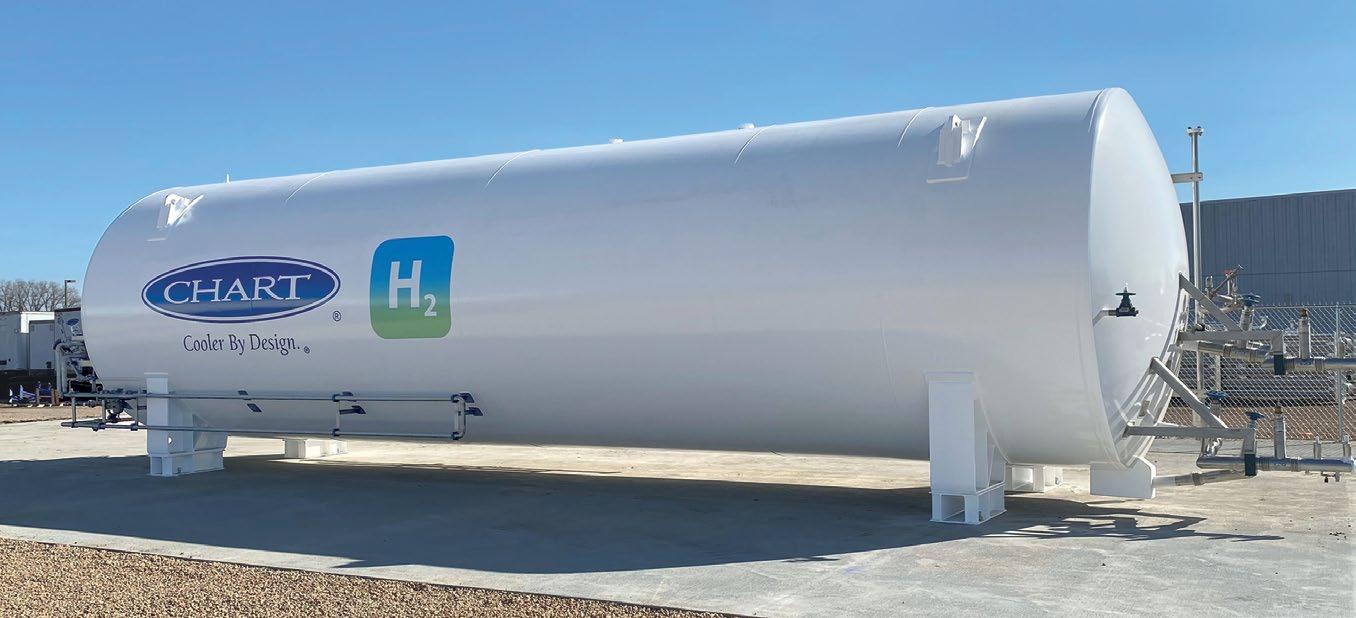
The same tank technology is also applied to vehicles used to transport LNG. As highlighted previously, readers will be familiar with seeing trucks delivering liquefied air gases and the solutions for LNG are basically identical. Cryogenic ISO containers facilitate multi-modal transportation, for example road and sea.
A perfect example of this solution in action is the mega-watt power station on Madeira Island, which has been operating successfully for many years. LNG is loaded at the import terminal in the Port of Sines and transported to the island in a fleet of ISO containers. A full for empty swap system, where empty ISO containers are collected and returned to Sines for refilling, makes the whole process highly efficient and sustainable.
Chart has been manufacturing equipment for the storage of liquid gases, including hydrogen, for more than 60 years. Therefore, while there is much development required for hydrogen use at scale, its transportation and storage as a liquid can be considered a relatively mature technology, proven through many installations across high-tech manufacturing, aerospace, research, etc.
All Chart hydrogen storage and distribution equipment is designed and built in accordance with recognised international pressure vessel codes, including ASME and PED, plus other local codes and regulations pertaining to geography and customer specifications.
For more information:
Chart Industries will be speaking and exhibiting at StocExpo on 12 & 13 March at the Rotterdam Ahoy. Visit the team on stand N41.
www.stocexpo.com
www.chartindustries.com
01 01 Hydrogen tank PAGE 72 TECHNICAL FUTURE FUELS
BY DESIGN ®
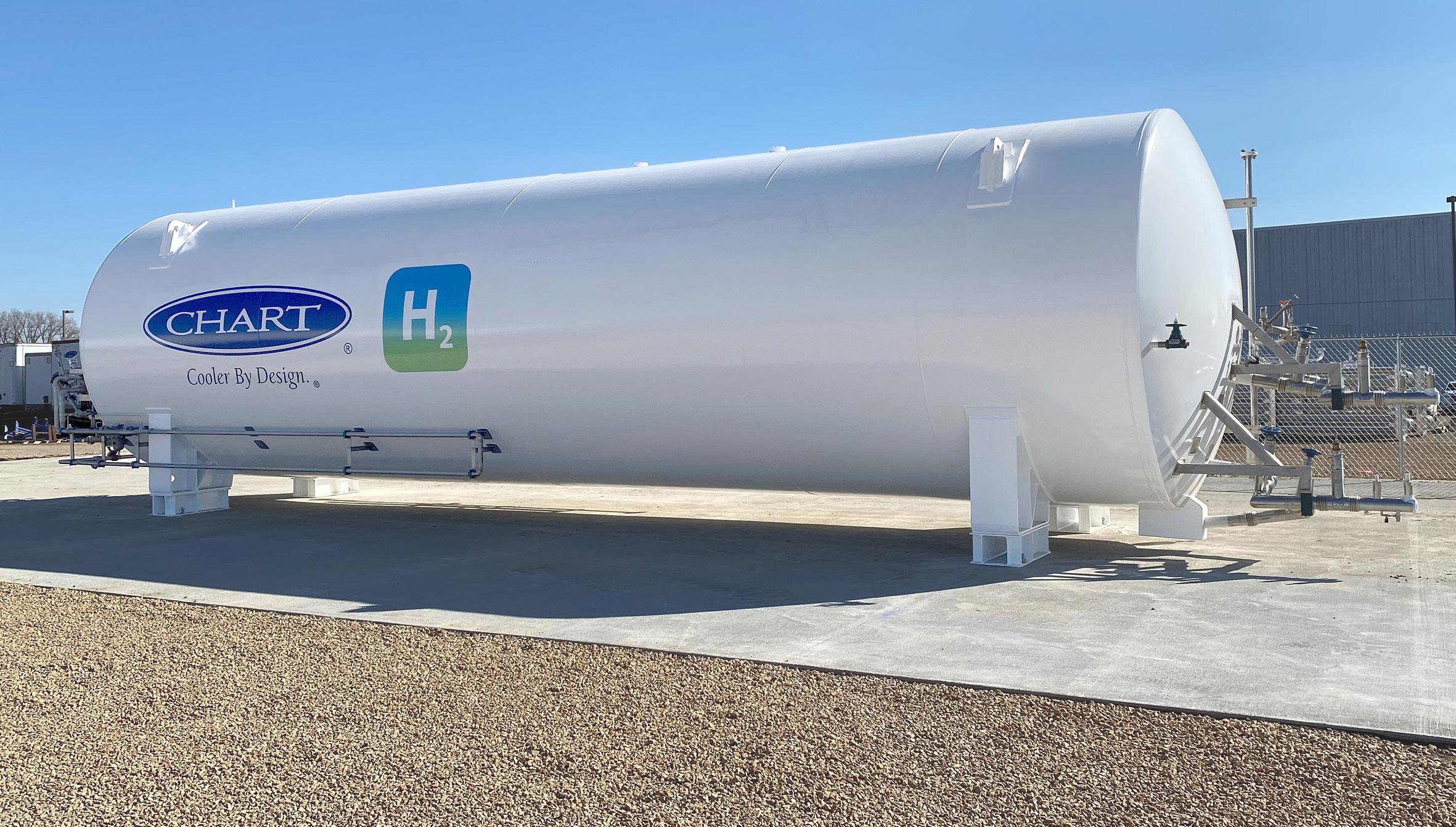

Chart cryogenic storage products are integral to the virtual pipeline facilitating increased energy independence and security through LNG and liquid hydrogen. By utilizing cryogenics to store gas in liquid form the tanks are much smaller than their gaseous equivalents. Cryogenic tanks are shop built and total storage capacity is modularized, reducing project cost, complexity, risk and timescale.
chart.europe@chartindustries.com
RADAR’S SOLUTIONS FOR LPG STORAGE
Tomas Hasselgren at Emerson explains how integrating non-contacting radar level gauges into tank gauging systems provides an accurate solution
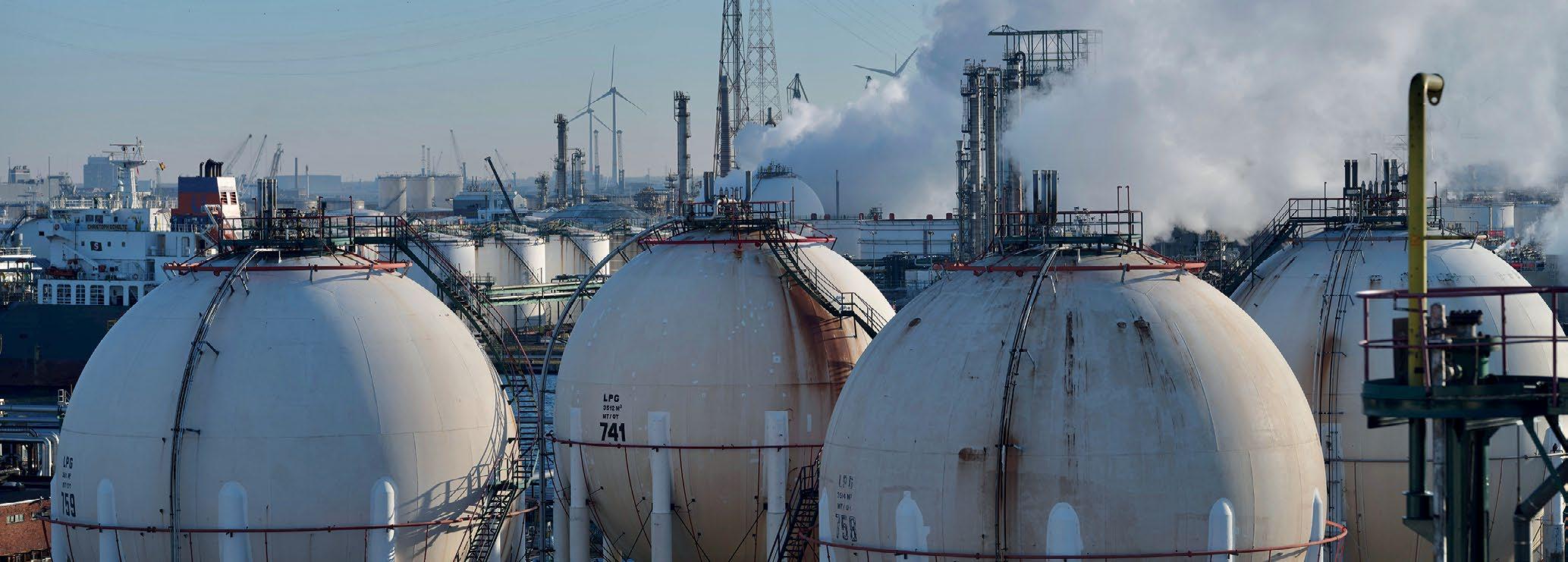
DEMAND FOR liquefied petroleum gas (LPG) is increasing globally. A major reason for this growth is that
LPG – a hydrocarbon gas consisting primarily of propane, butane, or a mixture of both – produces lower greenhouse gas emissions than traditional solid fuels. This makes it a more environmentally friendly option for its various residential and commercial uses. As a result, some governments have implemented policies and initiatives to promote the use of LPG to reduce air pollution.
LPG is also comparatively easy to transport and store. It is transported and stored in a liquid state, achieved by compressing and cooling the gas, which simplifies handling. Plus, due to its high energy density, a large amount of LPG can be stored in a relatively small volume.
LPG also already has a well-established storage infrastructure in place. However, increased demand for the product not only creates the need for extra storage capacity but also makes it imperative that terminal owners and operators use their existing capacity more efficiently by optimising inventory management and safety systems.
TANK GAUGING CHALLENGES
Measuring the level of LPG within storage vessels – to support inventory management and overfill prevention –presents several challenges due to the
nature of the gas and the pressurised tanks in which it is stored. Safety is of paramount concern as LPG is highly flammable, and tank gauging systems must adhere to strict safety standards to minimise the risk of spills, leaks and accidents.
Although LPG is stored in a liquid state under pressure, during certain conditions – such as rapid depressurisation or temperature changes – it can vaporise, which can affect the apparent level in the tank. Pressurised LPG tanks can also have vapour spaces at the top, especially during filling or changes in fluid volume. The presence of vapour makes it challenging to obtain accurate level measurements. Tank gauging systems should therefore incorporate level measurement technology that can penetrate vapours and account for the presence of a vapour space.
The density and volume of LPG are affected by variations in temperature and pressure, so tank gauging systems must be able to compensate for these changes in order to ensure accurate and reliable readings. A further challenge is that LPG can foam when being filled into a tank, creating bubbles that can interfere with level measurement and lead to inaccurate readings if not properly accounted for.
Tank gauging systems need to employ level measurement instruments that can meet all of these challenges and also provide a high level of reliability, since LPG
tanks cannot be opened while in service and are expected to run for years in between maintenance stops.
TRADITIONAL TECHNOLOGY
Level measurement in LPG tanks has traditionally been performed using mechanical servo gauges. In this method, a small displacer, suspended by a wire, is raised and lowered by an electrical servo motor. A weighing mechanism continuously measures the weight of the displacer to determine the liquid level, and an electronic transmitter sends the level information to the control room.
Although still widely used in LPG tanks, servo gauges have many moving parts and suffer constant wear and tear. This means that they need regular attention for maintenance and recalibration, and a large stock of spare parts.
Their mean time between failures (MTBF) is less than five years and, because their accuracy depends on external conditions such as hysteresis, temperature and density, they are prone to measurement errors.
Servo gauges can be isolated from LPG tanks by a ball valve, and the wire from which the displacer is suspended can sometimes break when closing the valve. This results in the displacer and the wire falling to the bottom of the tank, and over time several displacers and a lot of wire can accumulate there. Not only does a
PAGE 74
TECHNICAL FUTURE FUELS
new displacer and wire have to be fitted and calibrated after each breakage, but the broken parts could cause serious problems if they got sucked into pumps and valves.
RADAR VS MECHANICAL GAUGES
To ensure more accurate and reliable level measurement, the modern approach involves integrating noncontacting radar level gauges into tank gauging systems. These devices use microwave signals – emitted towards the liquid surface and reflected back to the transmitter – to measure the level.
Non-contacting radar level gauges use either pulse or frequency modulated continuous wave (FMCW) modulation techniques. The sensitivity of gauges based on FMCW technology is more than 30 times higher than in those based on pulse radar technology. This maximises the signal strength and enables FMCW devices to deliver greater measurement accuracy and reliability. In LPG applications, non-contacting radar level gauges have antennas specially designed to optimise accuracy by addressing the specific challenges posed by the properties of the product, including its dielectric constant, vapours, foam, temperature sensitivity, tank shape and signal reflections.
To further optimise signal strength in LPG tanks, it is recommended that the radar signal is guided within a still-pipe. This results in a strong echo from the surface and provides highly accurate measurements. For peace of mind, the latest radar devices offer functionality that enables measurements to be verified in real time while the tank is in operation, via an inbuilt verification pin feature.
A key benefit of non-contacting radar level gauges is their impressive reliability, with MTBF for critical parts measured in decades. The lack of any moving or wetted parts minimises their maintenance requirements, which helps to lower the cost of ownership.
AUTOMATIC VAPOUR COMPENSATION
Because hydrocarbon vapour has a slightly larger effect on microwave propagation velocity than air, noncontacting radar level gauges need to compensate for this vapour effect in order to provide accurate measurements.
The latest advanced devices can calculate the vapour influence through online pressure measurement from an integrated pressure sensor, and information about the gas mixture. The level reading is then corrected automatically, ensuring that the measurement is accurate to 1 mm.
IDENTICAL SEPARATION
Safety functions are critical in LPG applications, with an overfill prevention system (OPS) required to reduce safety risk. There is a common misconception that the tank gauging system and the OPS must incorporate different level measurement technologies – for example, radar level gauges and servo gauges. This is known as diverse separation but is not a requirement of the International Electrotechnical Commission’s global functional safety standard IEC 61511. The standard in fact confirms that the same technology can be used for both the tank gauging system and the OPS, which is known as identical separation.
While diverse and identical separation are both valid options, diverse separation can increase the likelihood of human error, as it requires personnel to be trained in installing, configuring and proof-testing two different technologies rather than just one. Standardising on a single technology also simplifies maintenance and reduces spare parts requirements.
2-IN-1 TECHNOLOGY
When upgrading from a mechanical device to radar technology, one consideration is the ease with which the new technology can be installed. If an existing LPG tank has only one opening available, the tank would need to be modified to enable two separate radar level gauges to be installed to support the tank gauging system and the OPS. Making this kind of modification may be cost-prohibitive, as it would involve the tank being taken out of service, thereby impacting throughput and profitability.
This challenge is solved by the Rosemount 5900S 2-in-1 radar level gauge from Emerson, which consists of two separate

and independent electrical units and a common antenna. This enables a single device to be used for both tank gauging and separate OPS purposes, therefore requiring only one tank opening and minimal or no modifications.
For more information
Emerson is exhibiting at StocExpo on 12 & 13 March 2024 at the Rotterdam Ahoy. Visit the team on stand M20.
www.stocexpo.com
www.emerson.com/global
CUSTOMISED INVENTORY MANAGEMENT
An LPG terminal in Mexico was operating with eight bullet-shaped LPG tanks, each with a storage capacity of 450,000 litres. This was proving insufficient to keep up with the growing demand for LPG, so the terminal operator decided to build a further 18 tanks. All 26 tanks were then included in an upgrade project to improve safety and operational efficiency.
As part of this upgrade, each of the 26 tanks was equipped with a Rosemount 5900S 2-in-1 radar level gauge with an LPG antenna specifically designed for the application. Each level gauge was integrated with a Rosemount 2051 pressure transmitter to measure vapour space pressure. The new instrumentation setup enables both level and pressure measurements to be obtained, along with providing overfill prevention, while using just one tank opening. In addition, wireless communication was added to the existing wired system to provide redundancy for level, temperature and pressure data transfer.
Installation and commissioning of the tank gauging systems was quick and cost-efficient. Rosemount TankMaste Inventory Management Software was also integrated into the updated system to manage inventory calculations. Utilising the additional storage tanks, upgraded tank gauging systems and improved inventory insight and control, the terminal now has increased capacity, efficiency and safety.
PAGE 75
01
TECHNICAL FUTURE FUELS
01 Emerson’s 2-in-1 radar level gauge
A WORLD ON THE MOVE
Bart Muijtjens, engineering manager at BM Process Management discusses energy-efficient, carbon neutral and NOx-free emission control
THE GLOBAL energy landscape is changing. The push for alternative energy sources is in full swing: green electricity, green hydrogen and sustainable fuels will replace fossil fuels in the combat of CO 2 emissions globally.
This influences the tank storage industry in particular: a move away from petroleum products and towards the storage of chemicals, biofuels, and other energy carriers such as LNG, ammonia, and hydrogen. The proportion of petroleumbased storage and shipping remains however very significant and will likely remain significant for the next decades.
During the storage and shipment of liquid bulk products such as petroleum products, chemicals and biofuels, vapour emissions occur. Generally, the emission of these vapours is limited by the implementation of measures such as internal floating roofs, breather valves and vapour balancing systems. The remaining vapour is treated in an emission control system, such as a vapour recovery unit, activated carbon filters, a gas scrubber, or an oxidizer. But ever-stricter regulations impose new challenges on the tank storage industry, making existing systems inadequate. The world needs to reduce emissions to face the global warming effects. VOCs such as methane have a far greater global
warming potential than CO 2 for example. It is an important task to design highefficiency emission control systems that do not produce additional emissions. The reduction of VOCs through thermal oxidation is still the most efficient method to combat the adverse effects of these emissions. But until now, thermal oxidizers have needed fossil fuels and released additional CO 2 and NOx.
How can terminals combine these factors in an emission reduction with optimised technology? Can thermal oxidation systems contribute to a reduction in carbon footprint? How can operators choose and invest wisely and be ready for the future?
REGULATIONS & REQUIREMENTS: INNOVATIVE SOLUTIONS NEEDED.
VOCs are the third largest group of air pollutants after CO 2 and nitrogen oxides. They are generally hazardous to humans and the environment and are precursor substances for ground-level ozone.
This results in VOC emission limits that are set at values as low as 50 milligrams per m3. For harmful substances such as benzene, isoprene, these values are set at 1 mg or lower.
Approved in 2020, the European Commission set goals to become climate
neutral by 2050. This ambitious goal known as the EU Green Deal is combined with the goal to reduce greenhouse gas emissions in the EU by 50 % in 2030 when compared to 1990.
CO 2 emissions are taxed and regulated under the EU-ETS program, forcing asset owners to carefully select the type of process used and minimise the emission of CO 2, on top of the already stringent requirements on VOC and harmful substance emissions.
Nitrogen oxides have long been subject to strict emission regulations. Recently, however, this has received renewed attention due to the ecological impact of nitrogen deposition, which affects soil quality and has a direct impact on biodiversity.
This has led to a renewed focus on reactive nitrogen-containing substances such as ammonia (NH3) and nitrogen oxides (NOx). When fuels are oxidized in a burner, nitrogen oxides are produced when the nitrogen in the air is combined with oxygen. In this process, the mode of operation and the performance of the burner are decisive for the level of NOx emissions. If the burner in thermal postcombustion plants is operated with fossil fuels to ensure the necessary oxidation temperature,CO 2 and NOx are produced.
TANK STORAGE VAPOUR TREATMENT
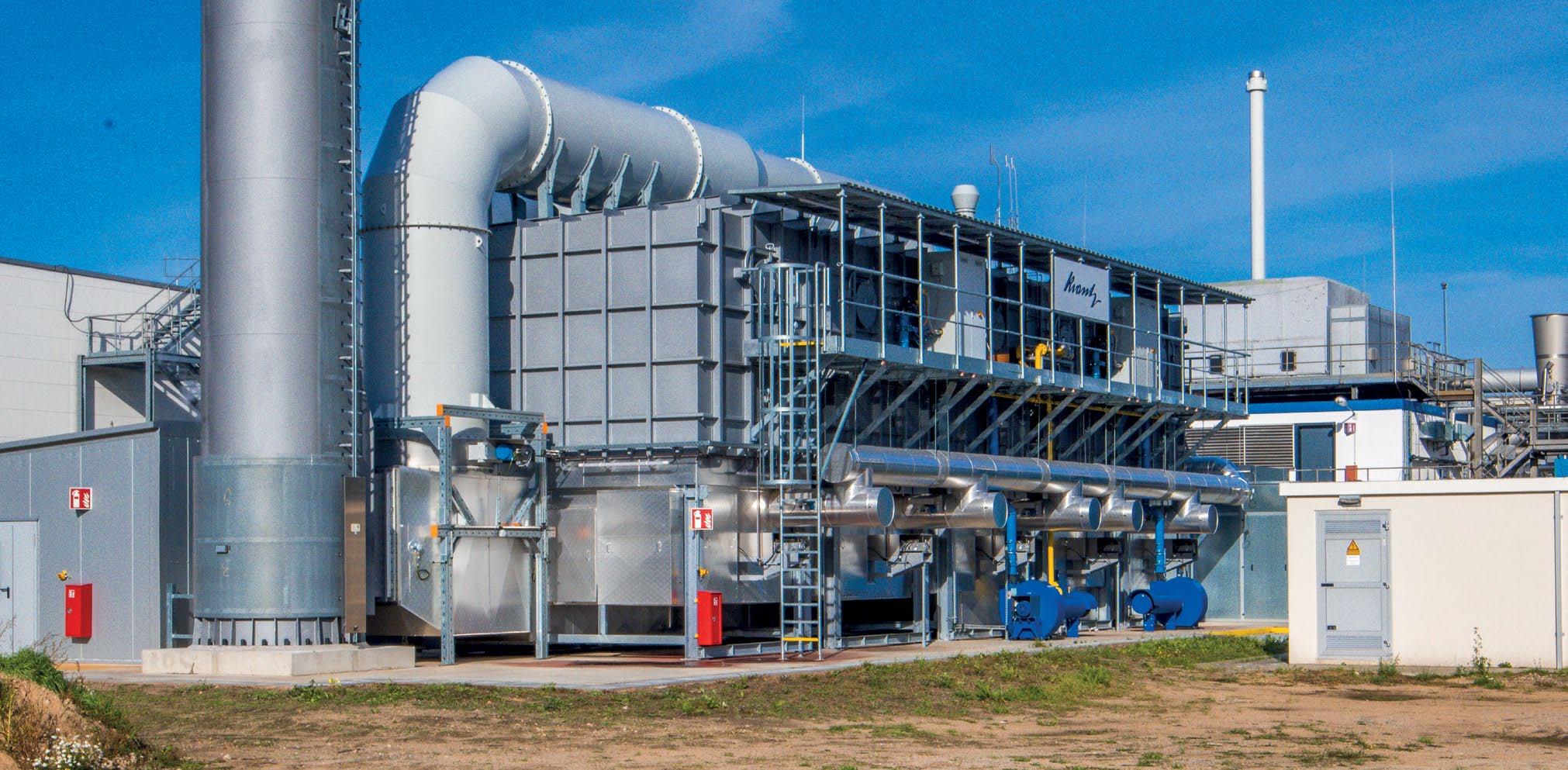
At present, common solutions for emission control in the tank storage are vapour recovery, activated carbon filters or thermal oxidizers. Vapour recovery is a very efficient way of reducing emissions and recovering useful product. However, it requires a significant volume of absorbent liquid to be available, which is not always possible or desirable. Also, VRUs often struggle to meet the latest emission limits in a cost-effective and reliable way, needing continuous attention from maintenance personnel, with the risk of limiting the primary process of the terminal.
Activated carbon is often used for lowconcentration vapour streams. The risk is however that the solution is chosen based on its low investment figure but turns out to be very expensive to operate due to frequent replacements being needed. Solutions such as wet gas scrubbers can work very well on specific off gas streams,
PAGE 76
01 TECHNICAL EMISSIONS REDUCTION
but the handling of liquid waste streams needs to be considered.
EMISSION CONTROL: THE HOLISTIC WAY
The design of an efficient emission control system can only take place with an indepth understanding of the production process. Be it coating, printing, surface treatment, chemical production, tank storage: only by looking deep into the process and by understanding it completely can an effective emission treatment system be designed.
The first step is always to see if an actual reduction at the source can be achieved. Being able to look at issues in context with each other, rather than as separate entities, has always been a challenge. If one has these skills, it is possible to design a complex system in such a way that it works well together.
A real challenge for engineers is when the task and requirements are highly complex – like cleaning VOC emissions sustainably and as CO 2 and NOx neutral as possible. In the tank storage industry, for example, it is of great importance to take note of items such as possible preloads in ships, blanketing gases and mixture of chemicals in the gas phase. It requires the attention of skilled engineers to develop emission control master plans for a terminal, ensuring a long-term strategy is in place.
EFFICIENT THERMAL OXIDATION SYSTEMS: THE FUTURE?
There are many technologies available for emission treatment. The use of thermal systems, despite the CO 2 emissions generated, remains one of the most versatile and energy-efficient methods of treating exhaust air and off gas streams. The process is simple, but effective. Classic thermal oxidizers are extremely effective but consume significant energy in the form of support fuel, causing a high energy cost, combined with additional CO 2 emissions, leading to even more additional cost.
Still, there is more to thermal oxidation than meets the eye. Making thermal oxidation highly energy efficient is mainly due to the two most important factors today: reducing the use of fossil energy and CO 2 emissions, while maintaining the advantages of the high conversion rate of thermal oxidation.
Using internal and external heat exchangers can drastically reduce the burner’s energy consumption. Every modern thermal system contains at least one internal heat exchanger, which can be combined with an additional external heat exchanger to make further
use of the generated heat. The type of internal heat exchanger used determines the type of system. Thermal oxidation without an energy recovery system is no longer practical or permissible at many sites due to emission regulations and the high cost of CO 2 emission allowances under the EU-ETS.
Processes with optimised internal efficiency are for example a regenerative thermal oxidizer (RTO), a recuperative thermal oxidizer or the catalytic oxidizer. In tank storage, the RTO is of particular interest. The internal regenerative heat recovery is extremely efficient at up to 96%. The energy required to ensure the necessary oxidation temperature is therefore comparatively low. It can be used downstream an existing VRU to reduce the overall emissions to well below the strictest limits, while reducing the strain on the VRU by allowing higher emissions that fall right into the optimal range for the RTO.
In this operating case, the energy required to ensure the necessary oxidation temperature is generated by the combustion of the VOCs. No fuel is required. The RTO runs autothermally, generating no emissions through fossil fuels or the burner. This is referred to as CO2 -neutral operation. This combination is marked as ‘Best Available Technology’ in the EU regulations. Also the RTO starts to become a real alternative for classic direct oxidizers due to these advantages for example in chemical storage terminals.
DECARBONISATION OF EMISSION TREATMENT
What needs to be done if a thermal oxidation system is to be introduced? What should be done with existing plants? Should they be converted to new fuels, or should an electric, flameless technology be chosen?
Using green hydrogen instead of natural gas is a reliable way to move away from using fossil fuels for thermal equipment altogether. Hydrogen burners are currently being developed for RTO systems. The addition of hydrogen to the exhaust air has already been successfully tested. As soon as green hydrogen is available, hydrogen can be utilised. If the chosen system is intelligently implemented based on a deep understanding of the process, this goes even further: the effect can even be reversed. Not only is continuous fossil fuel not required, the energy contained in the VOCs is made available as heat and can reduce or replace conventional process heat generation fired by fossil energy. Thus, reducing the overall carbon footprint of the terminal for example while also meeting stricter emission limits.
Many thermal systems have the option of remaining in hot standby in the event of a low load without any energy being supplied and immediately going back into operation for an extended period, making them ideally suited for use in the tank storage industry. In other words, with optimal process design and intelligent control, the energy source for initial heating is no longer important, as the use of fossil energy is reduced to an absolute minimum.
CONCLUSIONS
Stricter emission regulations push the choice for vapour treatment towards thermal oxidation, as a primary process or as a polishing system. Greatly varying and partially unknown inlet conditions make holistic design and selection important to achieve success. The choice of energy source is less important than a good design, as this can result in a negative energy balance and thus contribute to a reduction of the total carbon footprint of the operation of a terminal. With good design, thermal systems such as an RTO can be very well used as a polishing step for a VRU system. In the chemical storage the use of RTOs is becoming a very interesting energyefficient alternative for standard oxidizers. The requirements for degassing of barges provide additional challenges but also opportunities for new and existing vapour treatment systems. They can become a source of revenue if designed to handle the conditions at hand.
In the end, the additional step in emission control is almost always worthwhile: the holistic approach will pay off in the end for the operator, who does not have to pay for additional fuel, and for the environment, which does not have to deal with additional CO 2 and NOx.
For more information:
Krantz Clean Air Solutions & BM Process Management are exhibiting at StocExpo on 12 & 13 March at the Rotterdam Ahoy. Visit the team on stand N23.
www.stocexpo.com
www.krantz.de/clean-air-solutions
www.emerson.com/global
01 A Krantz RTO system at a client in Hamburg, Germany
PAGE 77
TECHNICAL EMISSIONS REDUCTION
REDUCING EMISSIONS AT GREEN FACILITIES
The experts at Assentech explain how it’s pioneering solutions for engineers in quantifying and mitigating methane emissions in biogas sites
IN AN ERA marked by increasing environmental consciousness and a demand for sustainable solutions, the role of companies like Assentech Sales is paramount. As the global community grapples with the challenges posed by climate change, the biogas industry emerges as a critical player in the transition towards cleaner energy. Assentech, with its innovative products and a commitment to environmental responsibility, stands at the forefront of supporting engineers in biogas sites to tackle methane emissions, a potent greenhouse gas.
PIVOTING TO BIOGAS
Biogas has gained prominence as a cleaner alternative to traditional fossil fuels. Nevertheless, the biogas industry faces challenges, with methane emissions being a significant concern. Methane has a much higher warming potential than carbon dioxide, making its effective management a critical aspect of sustainable energy production.
The Industrial Emissions Directive, (IED) requires that all sites undertake leak detection and repair (LDAR) planning, to demonstrate to the Environment Agency that all assets are regularly reviewed for leakage. A typical regulatory notice from the UK’s Environment Agency is issuing Regulation 61 notices and issuing substantial fines to any sites that fail to quantify their methane emissions.
Assentech recently helped a wasteto-energy facility facing potential enforcement actions for emissions violations. The facility, dependent on methane for electricity production, sought help as its breather vents were leaking significant volumes of biogas. The Environment Agency recorded significant leakage from breather valves using gas optical imaging cameras.
Assentech’s engineers tested the valves using Vent-Less technology and found that they leaked 90CFH at 90% of set point. This translates into a gas cloud equivalent of 200 double decker buses over the year. Assentech replaced the vents with high-quality units, reducing the leak rate to 0.081CFH. Using the Intergovernmental Panel on
Climate Change (IPCC) calculations, the initial losses were found to have an environmental impact cost of over £63,000 (€69,300) each per year and a net cost of lost gas of over £8,500. The replacement valves reduced the environmental impact cost down to £57 and a cost of lost gases to £7. The Environment Agency returned to this site following installation of the new valves and recorded no leakage using the optical gas imaging cameras.
REDUCING METHANE EMISSIONS
Assentech recognises the importance of addressing methane emissions in biogas sites and has developed cuttingedge solutions to quantify and mitigate these emissions. One of its standout innovations is the Vent-Less Fully Automated Breather Valve Test Bench. This range is engineered to enhance the efficiency and reliability of breather valves used in biogas storage systems. Breather valves play a crucial role in preventing overpressure or vacuum conditions within storage tanks, ensuring the safety and integrity of the entire system. However, conventional testing methods can be time-consuming, labour- intensive, and often result in unnecessary emissions.
Assentech’s Vent-Less Test Bench revolutionises breather valve testing by offering a fully automated, vent-less solution. This not only streamlines the testing process but also significantly reduces methane emissions associated with traditional testing methods. By investing in such innovative solutions, engineers at biogas sites can achieve a dual benefit of operational efficiency and environmental responsibility.
Quantifying methane emissions is a key step in understanding and addressing the environmental impact of biogas operations. Assentech goes beyond merely providing equipment, offering comprehensive solutions for quantifying methane emissions at biogas sites. The team’s state-of-the-art monitoring systems provide real-time data, allowing engineers to make informed decisions and implement targeted measures to reduce emissions.
The Vent-Less Test Bench range is a prime example of Assentech’s commitment to sustainability. By automating the testing process, this technology saves time and resources and also minimises the release of methane during routine maintenance. Its innovative design ensures the breather valves can be tested without venting methane into the atmosphere, a significant advancement in environmental stewardship.
SUPPORTING NEW ENERGIES
In addition to reducing methane emissions during routine testing, Assentech’s monitoring solutions enable biogas sites to quantify emissions accurately. This data-driven approach empowers engineers to identify areas for improvement and implement strategies to enhance overall system efficiency. By taking a proactive stance on emissions management, biogas facilities can contribute to a cleaner and more sustainable energy landscape.
As governments and industries worldwide intensify efforts to combat climate change, measuring and reducing greenhouse gas emissions has become a priority. Assentech recognises the role of biogas in the transition to a lowcarbon economy and provides the tools necessary for the industry to thrive responsibly.
Assentech is playing a crucial role in supporting engineers in biogas sites in their journey towards cleaner energy production. As the biogas industry continues to evolve, Assentech’s commitment to innovation and sustainability positions them as a key partner in shaping a greener and more sustainable future.
For more information:
Assentech’s methane emissions calculator is free to use online. The team is exhibiting at StocExpo on 12 & 13 March 2024 at the Rotterdam Ahoy. Visit them on stand C36.
www.stocexpo.com
www.assentech.co.uk
PAGE 78
TECHNICAL EMISSIONS REDUCTION
“Discover the ultimate UK-engineered Vent-Less Test Bench: the premier solution for testing tank and digester breather valves, o ering unparalleled risk pro ling and mitigation!”


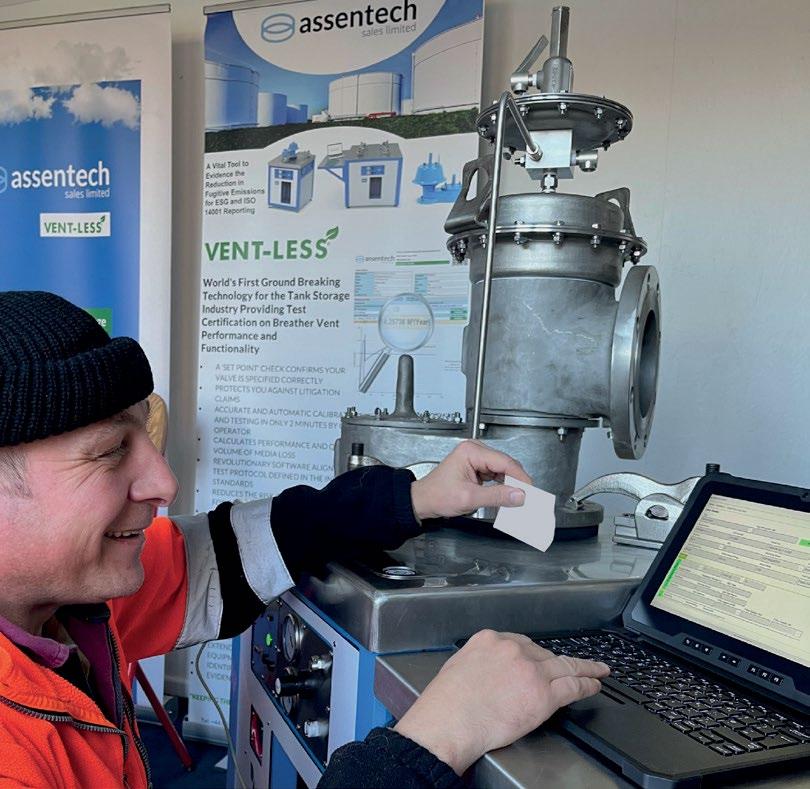
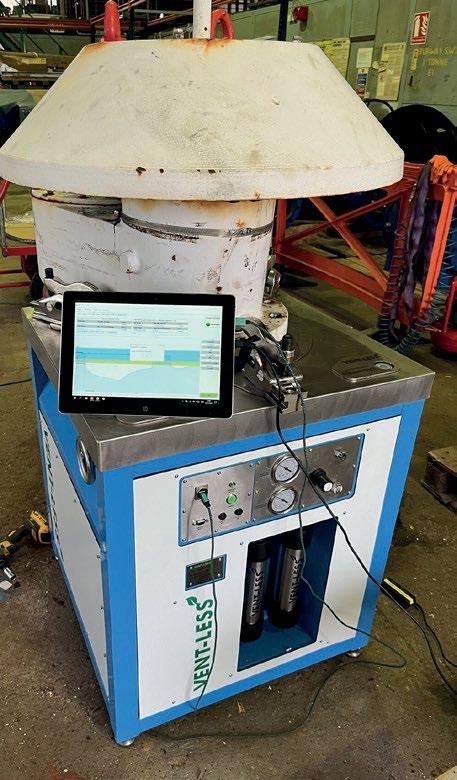




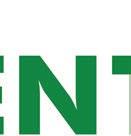

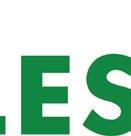

www.assentech.co.uk
Tel: +44 (0) 1726 84470
Email: info@assentech.co.uk

“To mitigate risk e ectively, it is crucial to evaluate the leak rate of each breather valve, con rm that operation aligns with the API2000 Standard, and verify the proper functioning of valves for their designated application.”
The Vent-Less test bench for tank or digester Breather Valve stands out as a pioneering innovation, utilising advanced so ware and algorithms to automate the API 2000 5.4 testing process, enabling a single operator to conduct the test in just three minutes to instantly produce a veri able test certi cate, with quanti able leak rate and QR code technology.


Vent-Less is recognised as the Best Available Technique for accurately measuring, monitoring, reducing, and quantifying emissions, establishing it as an indispensable tool for Net Zero reporting.

a tank rupture or collapse Regulatory compliance Protect your reputation Stops leakage of gases Reduce cost by reducing losses
Avoid
record emissions
Measure and
HOW WASTE CAN BE A PROFITABLE OUTPUT
José Miguel González, Tecam’s engineering director, explains why terminals
should be making the most of their waste
DOZENS OF barges, hundreds of trucks and thousands of gallons of valuable products are stored in tanks at a terminal. Terminal operators have enough parameters to organise and pay attention to, so that the terminal and consequently the business run efficiently and optimised. And all of course under highly safe and environmentally friendly requirements. It is not a small deal of work that is being managed.
An external observer could say that a tank terminal is like a big black box with a certain number of inputs and outputs. The valuable materials come in, they are stored and they come out as per the demands of the market.
Utilities are necessary for the correct operation of the terminal. In principle, the sum of inputs should be equal to sum of outputs. However, it doesn’t always work exactly like that. There are product losses, emissions losses and different types of waste that are generated regularly.
So, what if waste at a terminal could be considered efficient and valuable?
There are highly reliable and efficient technology solutions which are compliant with best available techniques. These can help terminals minimise the quantity of invaluable outputs.
Most terminals already have an optimised system to treat and recover liquid waste: drainage of tanks, spills, oily water coming from rainfalls, even contaminated water. These are gallons of liquid that can be treated at a terminals wastewater treatment plant (WWTP), and many are achieving high rates of efficiency and recovery of that valuable material. However, there are two other types of waste from which terminals still have significant options to recover and increase their value.
‘Managing a terminal will have an additional advantage when compared to others if an operator is benefiting from its waste...’
ALL THE WASTE YOU CANNOT SEE
It is common practice nowadays that tanks, pipes, rotating equipment, valves, and any other process units or elements are designed and adequately maintained so that diffused emissions are minimised if not completely avoided.
In addition, there are other emissions that are subject to a different approach, which is to channel them so that they are collected and treated onto process units.
The process units’ purpose should be: firstly, to recover valuable material and, secondly, to minimise emissions of pollutants to atmosphere and comply, with the corresponding environmental legislation, policies and specific authorisations accordingly. Those channelled emissions are usually related to operations of filling and emptying tanks, breathing, cleaning, draining, purging, connecting, disconnecting, etc.
In many cases, gaseous emissions from these operations contain vapours composed of the valuable material that is being stored. Terminal operators do not need to issue them into the atmosphere and loose substantial mass of the stored product. Vapour recovery units, which are based on adsorption and desorption chemical process, can help companies recover up to 99% of gaseous molecules of valuable product at your plant, especially during highly inefficient activities at the plant, such as loading and offloading of trucks.
SLUDGE WASTE
Another kind of residue generated at tank terminals is sludge. This typically forms on the tank bottom and is revealed during the cleaning process. Derived from hydrocarbon or chemical substances that are left behind, the sludge can be treated in a rotary kiln, with possible energy production output.
DAILY WASTE
Most terminals will have several bins and containers to duly dispose different types of solid waste generated on a daily basis. All these wastes, especially those with
certain chemical properties, and/or high low heating value, are valuable as long as you can manage them adequately.
A small to medium sized waste-toenergy or waste-to-product plant could be installed at a terminal, to obtain substantial benefits. If not, other companies could be making business from this waste, by recycling it or converting them onto something valuable. It can be steam production, electricity production, or even the production of highly valuable raw materials, such as pyrolysis oil (the basis to manufacture plastic or biofuels).
From small units treating waste in batches, at rates of 100-200 kg/h during normal working hours, to bigger plants with capacity to treat on a continuous basis from 250 to 5,000 kg/h.
SITTING ON A PROFIT
Managing a terminal will have an additional advantage when compared to others if an operator is benefiting from its waste.
Usually, the initial investment that is required for a waste valorisation plant is composed approximately of a first package of costs of 50-70% in terms of new process, mechanical and electrical equipment. The second package of the investment would correspond to earthworks, foundations, paving and roads, building offices, fencing, etc. The payback period would be between five and ten years, depending on each case.
A tank terminal would have to pay, in general terms, for the first package only, making the period of payback substantially shorter. In fact, since it is 100% sure that waste at a plant can be converted into a profitable output, why keep on wasting all this waste?
For more information:
Tecam is exhibiting at StocExpo on 12 & 13 March 2024 at the Rotterdam Ahoy. Visit the team on stand F10.
www.stocexpo.com
www.tecamgroup.com
PAGE 80
TECHNICAL TERMINAL WASTE
THE AGE OF PTFE-COATED HOSE FITTINGS
The team at Dantec explain how new fittings are improving petrochemical safety
IN THE dynamic and challenging landscape of the petrochemical industry, the quest for innovative solutions to enhance safety, durability, and efficiency has never been more critical. Dantec has now made advancements in PTFE-coated hose fittings, reshaping the way industries address challenges in applications where traditional metal fittings are not suitable.
Dantec composite hoses have earned a distinguished reputation for being a reliable and robust solution in the petrochemical industry. The unique construction of these hoses involves layers of diverse materials strategically combined to create a resilient and versatile product.
Chemical resistance & corrosion protection: One of the standout features of a Dantec composite hose. The multilayered composition ensures longevity and protects against corrosion. In petrochemical processes where a myriad of corrosive substances is encountered, these hoses act as a formidable barrier.
Flexibility: Dantec composite hoses are engineered to be highly flexible, facilitating easy installation even in complex layouts. This flexibility, coupled with their versatility, allows these hoses to be deployed across a spectrum
of applications, from bulk transfer operations to vapour recovery.
Safety assurance: Safety is paramount in the petrochemical industry, and Dantec composite hoses are manufactured to EN13765:2018 and are designed with an unwavering commitment to this principle. The multi-layered construction minimises the risk of leaks, spills, and accidents, contributing to a safer working environment for personnel and assets.
THE EVOLUTION OF PTFE COATED HOSE FITTINGS
Building upon this robust foundation, the petrochemical industry has witnessed a breakthrough with the development of PTFE-coated hose fittings. These fittings, when integrated with composite hoses, offer a synergy of advantages that address challenges in applications where traditional metal fittings may not be the optimal choice.
Enhanced chemical compatibility: PTFE-coated hose fittings introduce an elevated level of chemical compatibility to hose assembly. Petrochemical operations often involve the transfer of various corrosive substances, and the superior chemical resistance of PTFE ensures the longevity and reliability of the entire
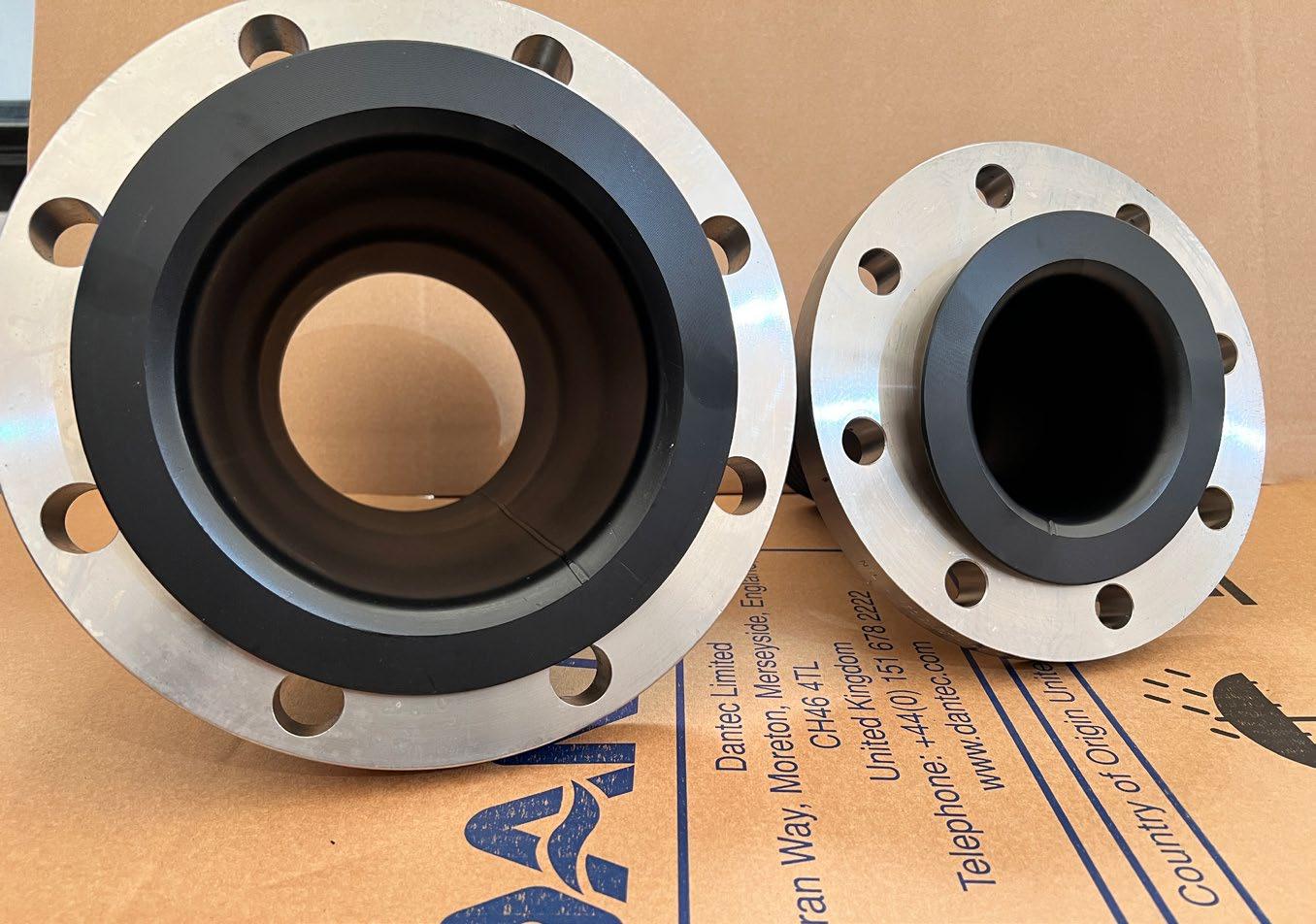
assembly. This advancement extends the range of chemicals that can be safely conveyed, providing a versatile solution to meet diverse industry needs.
Temperature stability: PTFE’s remarkable temperature stability aligns seamlessly with the demands of the petrochemical industry, where elevated temperatures are commonplace. When used as a coating for hose fittings, PTFE ensures the assembly’s durability and functionality under harsh conditions.
Non-stick & easy maintenance: The non-stick nature of PTFE is a gamechanger in applications where product purity is paramount. The coating on hose fittings prevents the adherence of substances, reducing the risk of contamination and ensuring product integrity. It also facilitates easier maintenance and cleaning, contributing to the overall efficiency of operations.
Dantec composite hoses, combined with the recent advancements in PTFE-coated hose fittings, represent a formidable leap forward in enhancing safety, reliability, and efficiency in the petrochemical industry. The integration of these technologies addresses the unique challenges posed by corrosive substances, elevated temperatures, and the need for product purity.
For more information:
Dantec is exhibiting at StocExpo 2024 on 12 & 13 March at the Rotterdam Ahoy. Visit the team at stand N1.
www.stocexpo.com
www.dantec.com
PAGE 81
01 Dantec’s PTFE-coated hose fittings 01 TECHNICAL COMPOSITE HOSES
ENHANCING FIRE SAFETY AT MODERN TERMINALS
The team at ThinkTank explain how the use of fusible link valves in modern fire protection systems can improve safety and efficiency on site

FIRE SAFETY is a critical concern, especially for tank systems where risks are high. Selecting effective fire protection measures is vital to prevent disasters, both from a human and environmental standpoint, as well as a financial view.
Fusible link valves stand out as essential components in these systems. Their role in automatically shutting off fuel supply during fires makes them indispensable for ensuring safety in tank environments.
BENEFITS OF FUSIBLE LINK VALVES
Fusible link valves offer several unique advantages in fire safety systems:
• Automatic Activation: In a fire, the fusible link melts at a predetermined temperature, triggering the valve to shut off or release fire-suppressing agents. This immediate response is crucial in containing fires and minimising damage.
• Durability: These valves are robust and can withstand harsh environments, making them reliable for long-term use. They require minimal maintenance, which is a significant advantage over other fire protection components that might need more frequent checks or replacements.
• Versatility: In various fire designs, fusible link valves prove highly effective. They work well in both hightemperature industrial settings and standard commercial environments. This versatility is a major plus, as it allows for widespread application across different industries and settings.
• Speed: Compared to other fire protection measures like manual sprinklers or heat detectors, fusible link valves offer faster and more reliable activation. This automatic operation ensures prompt fire suppression, which can be critical in preventing large-scale damage and ensuring safety.
CUSTOM SOLUTIONS FOR HAZARDOUS PRODUCTS
When selecting fire safety measures, it’s crucial to consider a facility’s specific needs. Fusible link valves can often be the ideal choice for several applications.
For chemical raw material storage tank systems, the risk of fire is high due to the nature of the materials stored. Fusible
link valves here offer a prompt response in case of a fire. They automatically shut off the flow of hazardous chemicals, preventing the spread of fire. This feature is particularly important in facilities where manual intervention might be delayed or hazardous.
In diesel storage tanks for diesel engine generator sets, the risk of fire comes from the flammable nature of the diesel. Fusible link valves in this scenario ensure that in the event of a fire, the fuel supply is immediately cut off. This not only contains the fire but also minimises the risk of explosion, which is crucial in settings with heavy machinery and various equipment.
For environments handling flammable gases or liquids, the presence of fusible link valves is vital. These valves respond

PAGE 82
01 TECHNICAL FIRE SAFETY
02
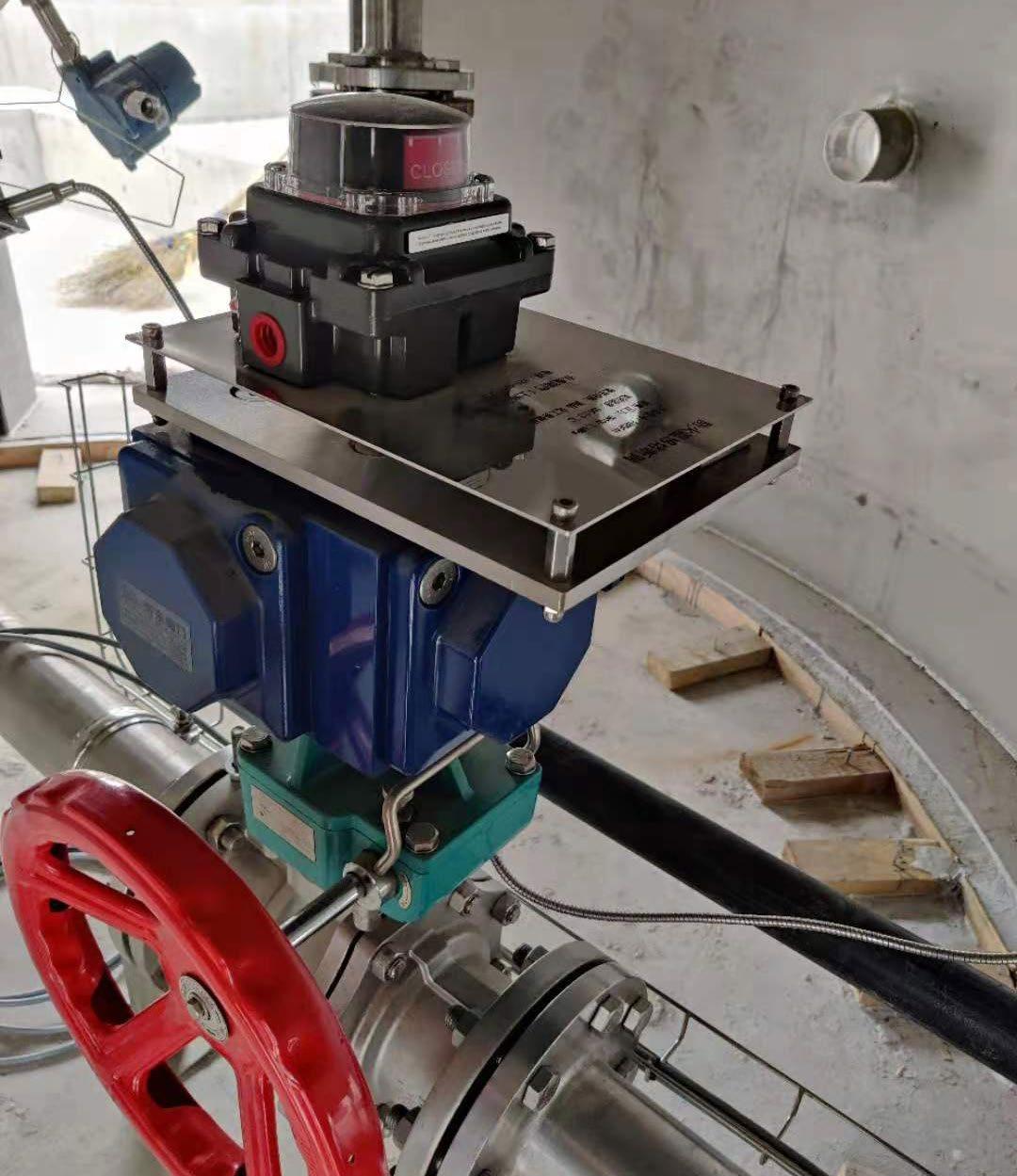
swiftly to elevated temperatures, sealing off the flow of flammable substances. This action significantly reduces the risk of fire escalation and potential damage to the facility and ensures compliance with strict safety and regulatory requirements.
In each of these cases, fusible link valves offer a tailored solution, addressing the unique fire risks associated with different substances and environments. Their ability to act autonomously and reliably makes them an indispensable component in modern fire protection systems.
03
In summary, fusible link valves are a key component in ensuring fire safety across various environments. Their ability to adapt to specific risks and settings makes them an indispensable tool in fire prevention.
For more information:
ThinkTank prides itself on being a reliable vendor of these essential safety devices. The team’s extensive experience in participating in multiple tank system
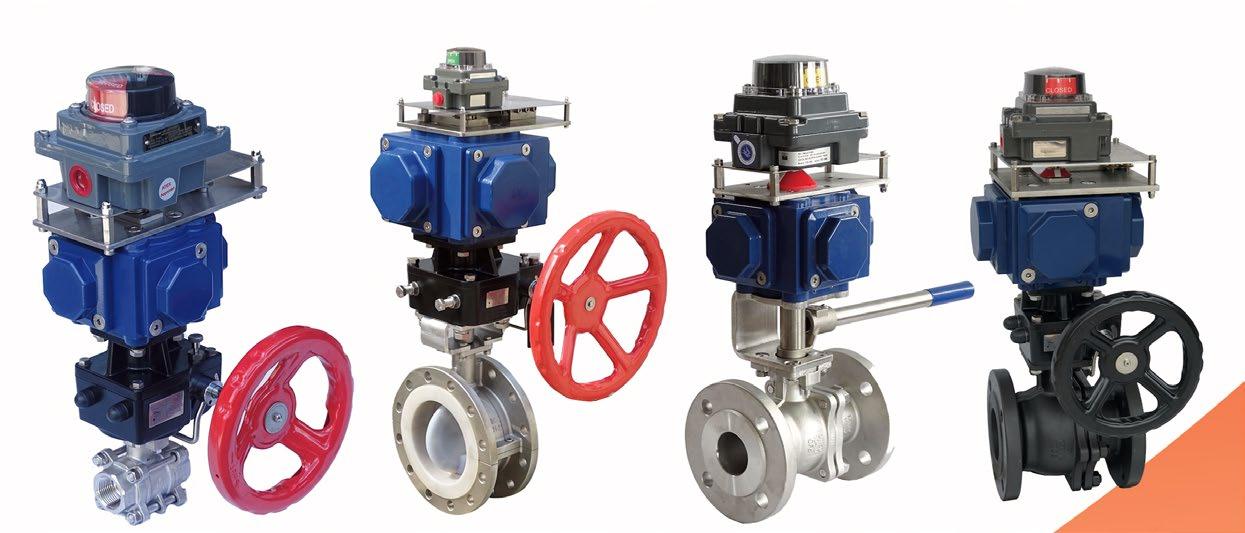
QUICK LOOK: FUSIBLE LINK VALVE TYPES & SPECIFICATIONS
Fusible link valves are not one-size fits all. There are different types:
• Fire-safety ball (flanged/ threaded ends)
• Fire-safety butterfly (wafer/ flanged ends)
• Emergency shut off check
Specifications you need to know:
• Size: 0.5” to 10” (12.7mm to 254mm)
• Nominal Pressure: PN16/25, 150/300LB
• Body Material: Carbon steel or stainless steel
• Set Temperature: 57° (135°F), 74° (165°F), 100° (212°F), 141° (286°F), and others
projects, and has equipped them with the expertise to provide solutions that meet diverse and complex needs.
Terminals can trust ThinkTank for their fire safety requirements; where quality and reliability are at the heart of what they do.
ThinkTank will be exhibiting at StocExpo 2024 at the Rotterdam Ahoy on 12-13 March. Visit the team on stand B25.
www.stocexpo.com
www.cncontrolvalve.com
01 Fusible link shut off valve for diesel fuel tank
02 Fusible safety ball valve
03 Examples of ThinkTank’s fusible link valves
PAGE 83
TECHNICAL FIRE SAFETY

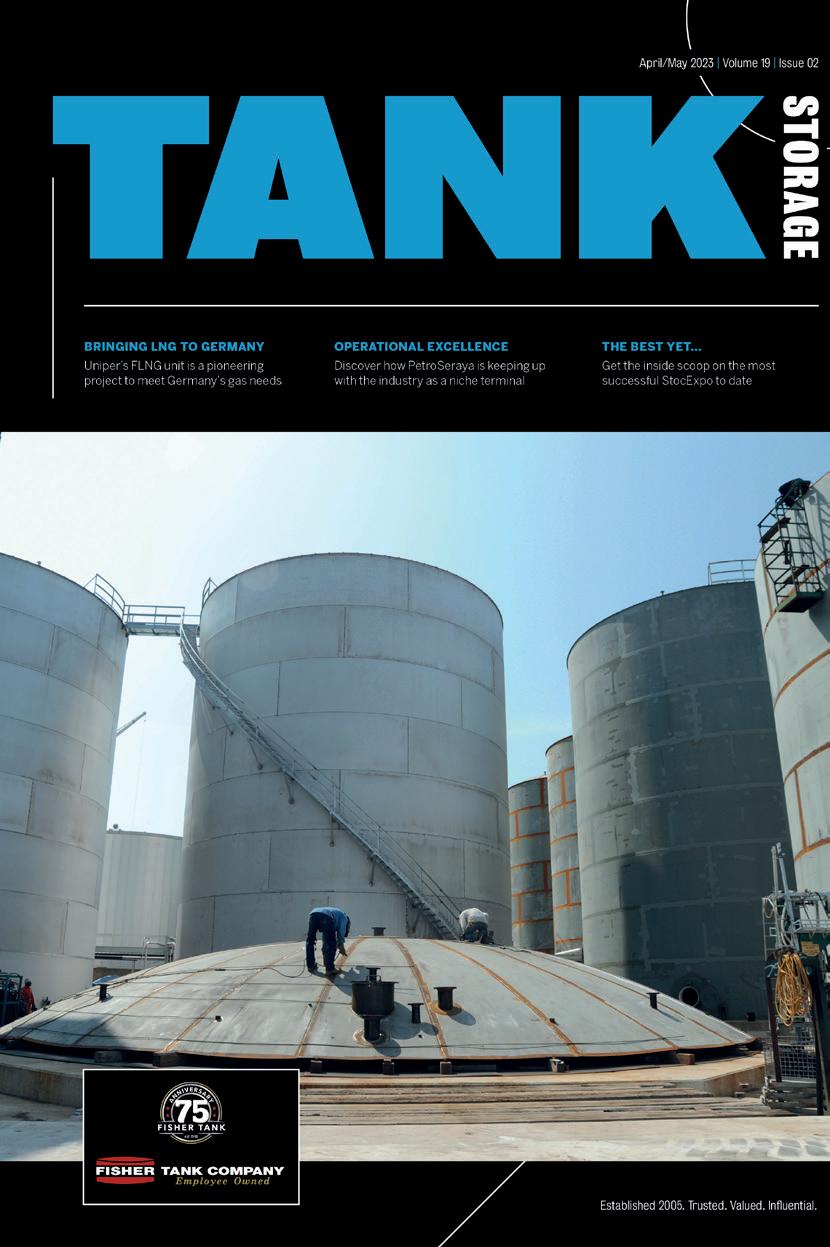












membership@tankstorage.com Established 2005.Trusted. Valued. Influential. JOIN NOW JOIN OUR COMMUNITY Unlock exclusive content with a Tank Storage Elite membership 5 print & digital magazines Exclusive articles , interviews & analysis Live & on-demand webinars Independent Tank Storage Wall Map Priority access to the StocExpo FETSA conference (worth € 625) And more! Scan the QR code to become a member. Elite membership just €299 for 12 months.
WHY CHOOSE A PRE-FAB PUMP AND VALVE ROOM?
IN THE PETROCHEMICAL sector constructing a pump and valve room on site is not always easy. Starting with the first projects in the petrochemical sector, Crea Construct noticed that construction of the pump and valve room on site was not always easy. Often, a lot of valuable time can be lost due to difficult weather conditions, strict safety regulations and coordination with other works in progress. The circumstances on site can also lead to more errors during installation, and therefore more work afterwards.
EFFICIENCY & PRECISION
Crea Construct continuously aims for the highest efficiency and ultimate precision. So, when it came to building pump and valve rooms at terminal sites, the team set to work to find a solution for the issues faced onsite.
15 years ago, the company developed the concept of a prefabricated pump or valve room. The idea was to build a unit within its workshop, in which all piping, valves, the pump and even electric cabling was already mounted and tested. After delivery to site, only a few connections needed to be made to finish the installation.
For the first units, Crea Construct started from a standard 10 or 20 ft container. But this didn’t provide the flexibility in design required for bespoke installs. So, the company started to build the frame and the container itself from scratch, giving the advantage that all dimensions could be optimised according the client’s needs. By building its own container, Crea Construct or a client, could use the materials of its choosing, resulting in a high end finish with RF60 sandwich panels, offers good insulation, whatever the weather and provides protection for equipment in case of a fire.
CUSTOM DESIGN
With a custom design, Crea Construct offers infinite flexibility as all dimensions and arrangements can be chosen. Based on the dimensions, it can assemble various prefab units into one large unit.
The complete construction, both mechanical and electrical, of the units is done in Crea Construct’s own workshop in the best conditions and with high levels of precision. All necessary tests can be carried out and the customer is also invited for the FAT test, after which the prefabricated unit is transported.

On site, only a concrete base, an electrical power cable and possibly an underground pipe and signal cable need to be provided. Upon arrival on site, the plug-and-play unit is placed in its final position and connected. A few days later the unit is ready for use.
In addition to excellent flexibility, limited onsite hours and disruption, and safe, comfortable working conditions, this unit also offers the advantage that a building permit is not required in many cases because it is a mobile unit. This can be helpful when customers wants to relocate or even replace the unit in the future.
WHY CHOOSE CREA CONSTRUCT?
Crea Construct was founded in 1999 and has since grown into a total partner in the world of fire protection systems. It uses clear communication, organisation and efficiency, to provide high-quality services to customers in Belgium, the Netherlands and Luxembourg.
Its experience in demanding sectors such as petrochemicals, oil and gas, together with its technical knowledge, enables Crea Construct to execute projects from start to finish, regardless of complexity. At the centre of a fire extinguishing system is the pump room and, in many cases, also the valve room.
Throughout the past 15 years Crea Construct has designed, built and delivered over 50 prefabricated units to customers in both Belgium and the Netherlands.
For more information:
Crea Construct is exhibiting at StocExpo on 12-13 March 2024 at the Rotterdam Ahoy. Visit the team on stand G1.
www.stocexpo.com
www.crea-construct.be
PAGE 85
Crea Construct prefabricated unit
01 01 Crea Construct’s prefabricated pump and valve room TECHNICAL PUMPS AND VALVES
Learn how a
can benefit your terminal
NEW GUIDANCE FOR TANK OPERATORS
Ahead of EEMUA’s session at StocExpo, the team discusses new guidance on above ground horizontal rectangular metallic storage tanks
MANY TANK operators will be familiar with EEMUA Publication
159 Users’ Guide to the Inspection, Maintenance, and Repair of Above Ground Flat Bottomed Storage Tanks. This has become the de facto standard for stakeholders in such equipment and is widely used worldwide.
Specific and comprehensive guidance for the use of plastic tanks is also provided in EEMUA Publication 225
Above Ground Plastic Tanks: A guide to their specification, installation, commissioning, inspection, maintenance, repair and disposal. Although some industry publications are available elsewhere, there has been little in the way of guidance, comparable to EEMUA 159 and 225, for users of above-ground, rectangular, metallic storage tanks.
ABOVEGROUND, RECTANGULAR, METALLIC STORAGE TANKS
These types of tanks are widely used for fuel storage (e.g. diesel) across a range of industries and applications, from small installations in agricultural settings to multi-tank systems on petrochemical sites. They can often be well-managed, providing many years of incident-free service.
But in numerous cases, they can also be treated as low priority items, with lifetime, inspection and maintenance based purely on manufacturers’ recommendations for nominal operating conditions. These recommendations can be quite simplistic and often do not account for the specific conditions of tank usage and any associated damage mechanisms or degradation, leading to leakage, tank failure in-service, and to the unnecessary scrapping of serviceable tanks.
UK regulators such as the Health & Safety Executive have also highlighted concerns, particularly on COMAH sites, as to the adequacy and effectiveness of existing tank inspection and maintenance schemes.
INTRODUCING EEMUA 244
To address such ongoing concerns, and to complement the above referenced publications, EEMUA formed a work group comprising of experts and
advisors from the user community, tank system suppliers, and wider industry.
The group’s objective was to develop practical, pragmatic guidance, in the form of an EEMUA Publication, to help reduce the risk of in-service failure of tanks and, where appropriate, to enable the extension of operating life.
The document (to be titled EEMUA Publication 244 Above Ground Horizontal Rectangular Metallic Storage Tanks) is aimed at owners and operators and will address the complete life cycle management of a tank. A range of topics are to be covered, including tank specification, procurement, installation, commissioning, inspection, maintenance, repair, end-of-life considerations and safe disposal.
The document will also provide a comprehensive and detailed approach to periodic inspection, suggesting intervals of annual, 5 years and 10 years. An internal tank inspection is recommended at the 10-year interval.
The document also considers the inspection of inaccessible surfaces, which is a key concern for tank terminals.
The main recommendation is that new systems should be installed with adequate clearance, thus enabling lower tank surfaces to be properly inspected. It is noted that this is likely to be a significant challenge for tank suppliers and operators to achieve.
SCOPE EXPLAINED
The scope of the document is generally for tanks located on high hazard sites or sites where tank failure may lead to significant health, safety or environmental consequences. For example, sites that come under specific regulations such as the UK Control of Major Accident Hazards Regulations, (COMAH) which were the UK implementation of the EU Seveso Directive. The guidance will also be equally applicable to non-COMAH or lower risk sites.
The guidance is generally intended to be used for storage of flammable liquids (as defined in the CLP Regulation) with a flashpoint of 23°C or higher e.g. diesel, kerosene etc. At the reader’s discretion, it
may be applicable to other substances, but caution would need to be exercised!
It should be noted that tanks containing highly or extremely flammable substances with a flash point less than 23°C (e.g. petrol, methanol etc.) are specifically excluded, as different codes and guidance would be deemed to be more applicable.
A thorough reference list of other relevant documents is provided and, although these are mainly made up of UK legislation, standards and guidance, appropriate local and international references, including design codes, can be followed if deemed more appropriate by the reader.
WHAT’S NOT INCLUDED?
Although the guidance is intended to be comprehensive, it is important to highlight that it is not a generic guide to all tanks. The guidance is specifically intended for use with aboveground, horizontal, rectangular, metallic storage tanks. Hence, generally excluded at this stage, are underground tanks, IBCs, totes, and cylindrical tanks. Reference to these may be included in future updates to the document.
PUBLICATION IN 2024
The document is currently being assessed as part of EEMUA’s peer review process, with publication targeted for later in 2024. It is anticipated that adoption of the recommendations by the tank user community will bring significant improvements to the safe management of rectangular metallic storage tanks and result in minimisation of risk of leakage and in reduced deterioration and associated failures.
For more information:
EEMUA will be delivering a presentation and panel session at StocExpo on 12 & 13 March 2024. Visit the team on stand F45.
www.eemua.org/products/publications/ digital/eemua-publication-159
www.eemua.org/products/publications/ digital/eemua-publication-225
www.stocexpo.com
PAGE 86
TECHNICAL TANK MAINTENANCE
GLASS FIBER REINFORCED POLYMER FLOATING ROOFS
The experts at EPT discuss how its approach to GRP roofs reduces maintenance costs and minimises environmental risks
THE DEVELOPMENT of EPT’s segment construction method for manufacturing non-metallic floating roofs represents a significant leap forward in the field of tank storage technology. This approach addresses several of the longstanding challenges faced in the construction and maintenance of large storage tanks, offering a host of advantages over traditional methods that rely heavily on hot works and extensive weather protection measures.
The replacement of an old steel roof with a new glass fiber reinforced polymer (GRP) floating roof equipped with advanced emissions reduction features marks a significant milestone. It promises to set new standards for efficiency, safety, and environmental responsibility for future.
REPLACING CORRODED STEEL FLOATING ROOFS
EPT worked on a tank roof project involving the replacement of an old, corroded external steel floating roof with a new, state-of-the-art GRP floating roof for a premium gasoline storage tank. This upgrade enhanced the tank’s structural integrity but also significantly reduced the risk of contamination, ensuring the stored gasoline remains at the highest quality.
The successful implementation of this project at a large oil refinery in Germany serves as a vivid demonstration of the GRP floating roof’s potential to transform


tank storage operations. Notably, the use of prefabricated roof segments in the construction process drastically increases construction speed, enabling operators to expedite the commissioning of tanks. This efficiency gain is a crucial advantage, allowing for faster operational readiness of storage facilities and significantly reducing downtime, a factor that directly translates to economic benefits and enhanced competitiveness in the market.
The entire project was accompanied and rigorously assessed by TÜV, the German technical inspection body. This partnership highlights EPT’s commitment to ensure the highest levels of quality and safety.
HIGH-QUALITY CONSTRUCTION
This certification by TÜV reflects that GRP works demand highly specialised laminators and composite expertise to ensure the highest quality in construction. TÜV’s involvement and validation provides operators with added confidence in the structural integrity and environmental compliance of their storage facilities.
The seamless construction of EPT’s GRP floating roofs eliminates the risks associated with welding fatigue and corrosion, offering a robust, non-metallic and lightweight solution that significantly extends the service life of storage tanks.
The enhanced construction speed also proved valuable for building new
sustainable aviation fuel (SAF) storage tanks. The specially used GRP is noncorrosive and boasts a high lifespan, making it an ideal material for storing environmentally sensitive fuels.
PREFABRICATED ROOF SEGMENTS
The cornerstone of EPT’s innovation is the prefabrication of individual roof segments in a controlled factory environment. This process not only slashes assembly times on site, but also ensures that each GRP segment meets the highest quality standards before arriving at the construction site. Unlike traditional methods, where the quality of work could be compromised by adverse weather, EPT’s approach guarantees consistency and excellence in every piece. The ability to store the segments until they are needed provides operators with further flexibility. EPT’s construction method is a solution that addresses many of the traditional challenges in tank storage construction and maintenance. The replacement of an old steel roof with a new GRP floating roof equipped with advanced emissions reduction features marks a significant milestone in tank storage technology, promising to set new standards for years to come.
For more information:
EPT For Storage Tanks is exhibiting at StocExpo on 12 &13 March 2024 at the Rotterdam Ahoy. Visit the team on stand B30.
www.stocexpo.com
www.ept-storagetanks.com
m.mangold@ept-storagetanks.com
PAGE 87
01 Lifting of a GRP floating roof segment into the storage tank 02 Prefabricated GRP tank roof segments arranged on supports on the tank bottom, before further finalisation
02 01 TECHNICAL TANK ROOF
REPAIR, NOT REPLACE
The experts at 3X Engineering share a use-case for their ReinforceKit patch tank roof repair and reinforcement solution
TANK ROOFS are an integral part of a healthy asset. With proper maintenance, they can last for decades. But when a tank roof fails, is replacement really the only option?
3X Engineering’s ReinforceKit patch is a wet lay-up patch repair system designed to reinforce tanks and pressure vessels, restore original asset integrity and prevent further deterioration. Each repair using the ReinforceKit is tailored to suit the needs of the facility. The repair can be made while the tank is online, meaning no loss of production for the terminal. It is a versatile product with a large range of applications (storage and GRP tanks, pressure vessels, separators, columns) and suitable for a range of tank and vessel sizes.
THE FACTS
In 2023, 3X Engineering was approached by a tank operator from a Middle Eastern refinery for a roof repair due to internal corrosion. At the time, the tank was being used for oil storage and had a diameter of 14.6 m. The tank roof had been damaged by severe internal corrosion, leading to important through-wall defect.
3X Engineering’s repair specialist had to reinforce the tank roof with minimal disruption. The solution was to use the ReinforceKit patch repair system.
The repair design was performed in compliance with API 653 and ASME PCC-2 standards. It was not possible to step on the roof, so the work was
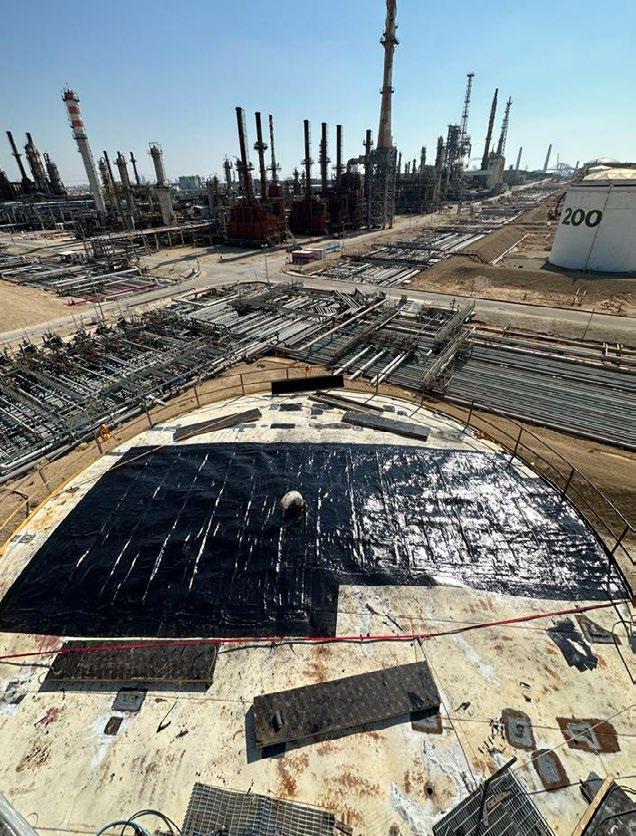

conducted out of a basket man lifted with a crane, supplied by the client. Protection and safety was required including a charcoal mask for respiratory protection and a height harness.
The system restored the tank’s integrity and prevents further deterioration. For the repair at the Middle East refinery, 3X Engineering used a composite patch made of 320 g/m² Kevlar patches and ceramic reinforced epoxy resin. This specific resin composition provides good anti-abrasion and chemical features.
PERFORMING THE REPAIR
The roof tank reinforcement was performed following four main steps:
1. Surface preparation and cleaning
The surface preparation was performed manually. No electrical or spark-producing work was allowed. Once the surface preparation was done, hygrometric conditions were checked and the complete area was cleaned with acetone.
2. Filler and steel plate application
3X Engineering filler was applied on small holes and then sealed using steel plates (previously prepared on both sides) covered with 3X specific filler. The steel plates were held using magnets until the filler is cured.
3. Wire mesh application
Wire mesh was applied on the large defected areas and covered with 3X Engineering filler before the patches were applied.
4. Composite patching reinforcement
The first layer of R3X95 resin was applied on the entire surface. Then, patches of Kevlar fibre with R3X95 resin were applied. Nine patches of three layers on each one were necessary to completely cover the defected area. This resulted in a total of 27 patches installed on this project.
RESULTS
Altogether, the repair covered an area of 100 m², including the defect. The tank is now repaired and protected from any infiltration from the roof as well as vapour emissions, as requested by the client. This repair was designed for a lifetime of five years but other repairs can be guaranteed for up to 20 years making the ReinforceKit patch a viable option for many storage tank owners.
For 3X Engineering there are no limitations in pressure and defect size, and the repair is user-friendly and relatively safe, requiring no hot work. In this case, the repair was completed by trained and certified applicators.
ReinforceKit patch is recommended to work with tanks operating between -50°C (-58°F) to 150°C (302°F) subject to external and internal corrosion, dents, mechanical damages and leaking defects.
For more information:
3X Engineering is exhibiting at StocExpo 2024 on 12 & 13 March at the Rotterdam Ahoy. Visit the team at stand N1.
www.stocexpo.com
www.3xeng.com
PAGE 88
Composite patching finalised
Tank repair completed TECHNICAL TANK MAINTENANCE
01 02 01
02





ONSHORE /OFFSHORE OIL & GAS
STRUCTURAL
PROTECTING ASSET INTEGRITY
The experts at Ferrous Protection discuss the importance of proper tank linings 01
A TANK lining is a protective coating applied to the internal surfaces of a storage tank or vessel. An effective lining may protect the steel from chemical attack or corrosion, protect the stored product from the steel, or even a combination of both.
Tank linings are critical to the integrity of an asset and the product it stores, so it’s crucial to ensure an appropriate lining is applied and maintained. Failure to protect your tank through the application of a suitable lining is likely to:
• Detrimentally impact the quality of your stored product
• Reduce the life of your tank
• Incur significant maintenance or replacement costs
• Increase the risk of loss of containment, posing significant safety and environmental risks and reputational damage
Ferrous Protection has been widely considered an industry leader in the application of solvent-free materials in bulk liquid storage tanks and vessels. Over the years, the company has branched out to offer a range of linings, including epoxybased tank linings, vessel linings, bund linings and GRP linings, vinyl ester based tank linings, vessel linings, bund linings and GRP linings, and polyurea tank linings.
REPLACING LINING
FOR CRUDE OIL TANK
Ferrous Protection was recently engaged by a leading global mid- and down- stream oil company in the UK to remove the failed existing lining of an 80 m-diameter crude oil storage tank and re-apply a two-component, solvent-free, amine-cured novolac phenolic epoxy lining capable of withstanding product temperatures of up to 120°C.
The company carried out a site survey and planned the project to minimise the risk to personnel and environment so far as was reasonably practicable. Ferrous Protection removed the existing lining using a combination of open nozzle grit blasting and captive blasting using 20E automatic blast machines.
Engineering controls were implemented to maintain the specified atmospheric
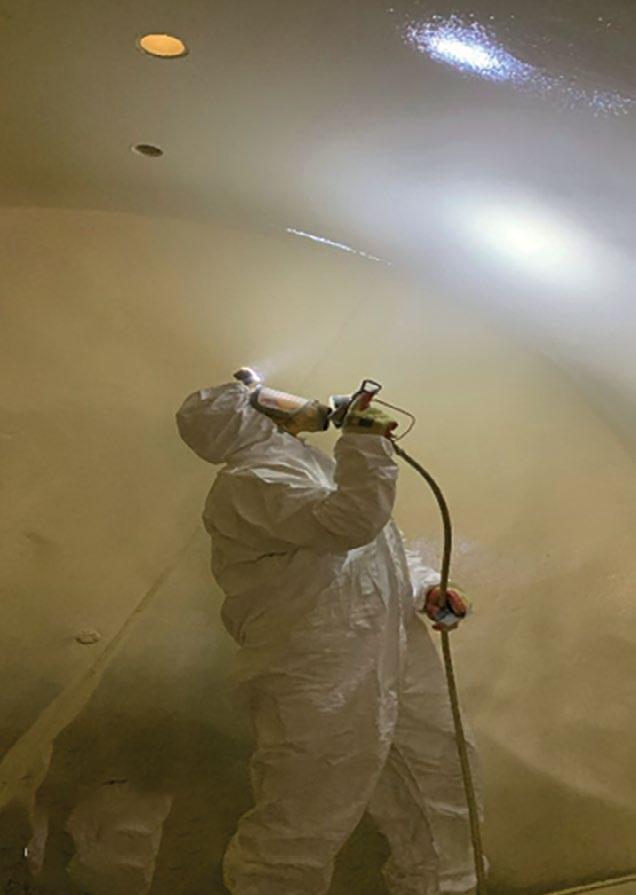
conditions within the tanks and a suitable holding primer was applied by airless spray to the prepared substrates. Once the primer had been applied and clean conditions had been implemented within the tank, all welds, edges and intricate areas were stripe coated with the specified lining material and a full lining applied to achieve a uniform film over the entire prepared surface area.
The surface area is prepared according to the needs of the new coating being applied. Ferrous Protection can remove any existing lining, coating, rust or paint system and re-apply a brand new protective lining, preventing the need for costly replacement.
In this case, once the lining had sufficiently cured, a competent and experienced coatings inspector carried out a holiday detection test, DFT checks and a thorough visual inspection before signing off the works. As well as this, each project is regularly visited by a member of Ferrous Protection’s management team for spot HSQE inspections to ensure the highest levels of safety, professionalism and workmanship are maintained.
The project was delivered on time and budget and the clients project engineer commented: ‘Five stars for Ferrous Protection’s overall project management, technical capability and quality of finished work. I found them to be very
knowledgeable, helpful and professional throughout, the QA documentation was prompt and very thorough and the job was done efficiently and to a very high standard with safety and communication being excellent from start to finish.’
WHY CHOOSE FERROUS PROTECTION?
Ferrous Protection has extensive experience in applying new tank linings into a wide range of tanks and vessels across the petrochemical, oil and gas and other industries. The company’s extensive use of solvent free coatings enables us to work with increased safety, better sustainability and greatly reduced risk of fire/explosion.
The company also offers a variety of support services to allow works to be carried out in situ such as:
• Confined space entry
• Confined space emergency rescue & standby
• Powered access
• Fixed and mobile scaffold access
• Rope and cradle access
• Self-permitting
• Robotic surface preparation & robotic coating application
• Waste containment and responsible disposal
For more information:
Ferrous Protection is exhibiting at StocExpo on 12 & 13 March. Visit the team on stand P24.
www.stocexpo.com
www.ferrousprotection.co.uk
PAGE 90
01 Spraying a Ferrous Protection lining TECHNICAL TANK MAINTENANCE

> +44 (0)1457 873419
> sales@ferrousprotection.co.uk
> ferrousprotection.co.uk

TANK LINING
At Ferrous Protection we offer an exceptional tank lining service that provides our clients with long term solutions to ensure their water retaining structures function properly.
SURFACE PREPARATION
> Abrasive blast cleaning (grit blasting, shot blasting, sand blasting)
> Captive blast cleaning
> Vacuum blast cleaning
> Electro-magnetic thermal induction
> Wet/slurry blast cleaning
> UHP water jetting
> LP/HP water jetting
> Bristle blasting
> Needle gunning
> Grinding/cutting/wire cup brushes
> Mechanical abrasion using aluminium oxide paper
> Vertidrive remote controlled robotic jetting & blasting
FERROUS PROTECTION INDUSTRY EXPERTS IN LINING AND COATING
Ferrous Protection undertake all types of surface preparation and application of protective coatings and offer a range of additional supplementary services to allow works to be delivered in situ.
Ferrous Protection Ltd are a specialist provider in corrosion protection services. The company was founded in 1987 by John W King, who served as a director of the National Institute of Corrosion for several years. Since its inception, the company has built a formidable reputation as a leading player in the UK and international petrochemical, oil & gas, civils & infrastructure and utilities markets.

SURFACE PREPARATION
The key to an effective lining is ensuring the surface preparation is carried out correctly. We offer a wide variety of surface preparation methods to do just that!
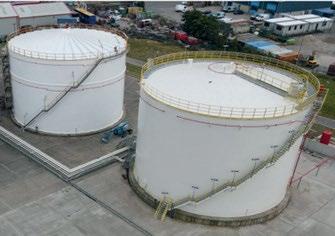
COATING APPLICATION
> Single component airless spray
> Plural component airless spray
> Brush
> Roller
> Trowel
> Passive fire protection
> Metal spraying

INDUSTRIAL PAINTING
Specialising in surface preparation and application of protective coatings and lining systems. We have a proven track record within the coating, linings and fire protection industry for over 30 years and operate throughout the UK and overseas.
> The Oil and Petrochemical Industry
> The Chemical Industry
> The Food and Brewing Industry
> The Water Industry
> The Aviation Industry
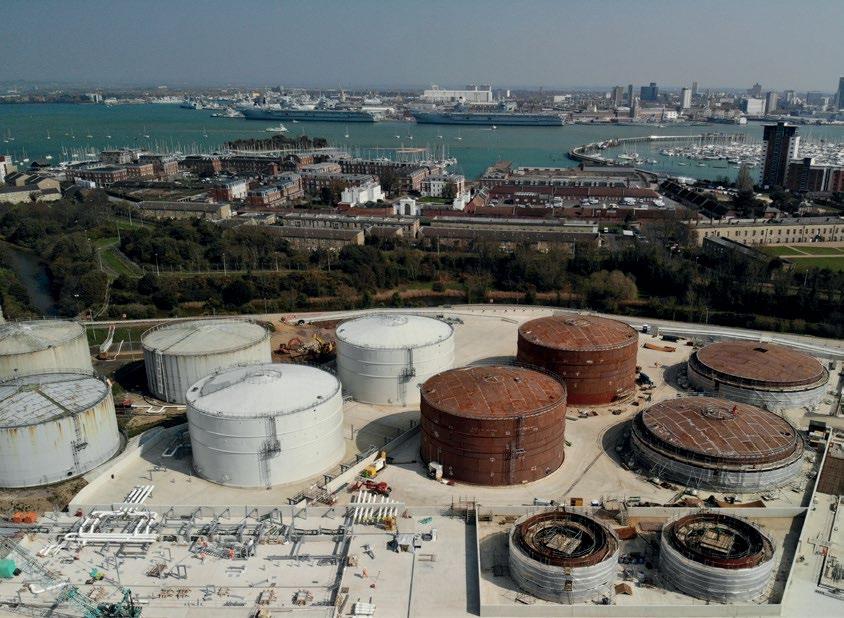
Riverside Court, Huddersfield Road, Delph, OL3 5FZ, UK
OPTIMISING ASSETS ON SITE
The team at Advanced 3D Laser Solutions explain how laser mapping assets can benefit your tank terminal
YOUR TERMINAL assets are instrumental to the success of your business. A3D’s digital products will give you the flexibility to view and manage the health of your terminals with confidence – to achieve operational, safety and regulatory compliance and to manage market volatility, environmental, financial and employee risks to achieve your productivity goals.
With accurate data captured from laser scanning, A3D can provide a complete documented picture of your facility. With its 4D Lizard software, terminal operators can plan schedules, manage maintenance, prevent common problems and spend less time dealing with unexpected issues that arise.
BUILDING A DIGITAL LIBRARY
In one case, A3D encountered a terminal operator who wanted to create an as-built documentation digital library to maximise the facility’s operational efficiency.
A3D’s specialist laser surveying team captured point cloud data on the 120tank terminal containing chemicals and petrochemicals, creating Smart P&IDs, 3D process models, civils models and incorporated a brand new asset nomenclature and standards for all site asset numbers.
CHALLENGES
• Technical: The client desired a very detailed line numbering and asset tagging system that they wished to roll out at all their terminals. A3D attended face-to-meetings to work through the feasibility of various numbering options before deciding on the winning formula.
• Validation: A3D developed a close working relationship with the client’s project manager as the team validated up to 95% of site data, removing a huge stress from the client including the collection of extra data such as E&I and data plate information.
METHODOLOGY
• Pre-planning: A3D used its bespoke software to produce a scan plan to logically work through different terminal areas. This meant that all areas could be scanned correctly,

avoiding repeat visits, and ensuring efficiency, minimising time on site.
• Logical Path: A3D scanned all areas and climbed the tanks to hand draw tank tops, where a scanner cannot be used due to health and safety. The scan data was then uploaded to secure servers every evening for backup and pre-processing.
• Post-survey: A3D processed and registered the captured data.
RESULT
A3D actively engaged with the client and took considerable care to ensure the P&IDs and models were provided in the requested format. A3D’s engineering director’s skillset is such that he was able to validate 95% of the P&IDs and 3D model correctly before redlining. The smart P&IDs contained the asset manager with detailed information on each scanned asset, which was much appreciated and utilised by engineers at the terminal. Process models were colour-coded by product and/or service for easy process visualisation.
Using A3D’s Virtual Site Tour system, the terminal engineers now have the ability to interrogate the site remotely, from all angles, and take measurements for design changes, without having to make repeat visits to site. This has reduced health and safety risks as well as time spent travelling, and the carbon footprint of running the site.
OPTIMISING MODEL VISUALISATION
It’s widely accepted that good visualisation helps the human brain process data more quickly. Without quick and easy access to data, site staff are less likely to file information in the right place, or will simply keep returning to site to find information; costing time, money and increasing safety risks.
A3D can create a digital twin of a terminal, which benefits from 4D Lizard Smart Hub’s data accessibility. This acts as an as-built site documentation library, linking to existing systems on site. 4D Lizard’s 3D Model Visualisation is the heart of A3D’s asset management system, providing a rich, interactive canvas where data comes to life. This advanced visualisation tool transforms static asset data into a dynamic, interactive 3D representation of the entire site, directly derived from 3D CAD files generated by laser scans. It offers users an immersive experience to navigate, analyse, and manage assets within their real-world context, significantly enhancing understanding and decision-making processes.
For more information:
Advanced 3D Laser Solutions will be exhibiting at StocExpo on 12 & 13 March at the Rotterdam Ahoy. Visit the team on stand K34.
www.stocexpo.com
lasersurveying.com
PAGE 92
TECHNICAL LASER MAPPING
NO-MAN ENTRY FOR OIL STORAGE TANK CLEANING
The experts at Scanjet explain how its new tank cleaning machine improves safety and efficiency on site
IN THE OIL
and gas and petrochemical industries, maintaining safety and efficiency is a constant challenge. The introduction of the Scanjet SC 60H Automated Tank Cleaning Machine marks a significant advancement in addressing these issues, especially for cleaning large crude oil storage tanks.
AVOIDING HUMAN RISK
Traditionally, tank cleaning has been a risky and labour-intensive process, often involving exposure to hazardous materials and environments. The SC 60H, introduces an innovative approach to this task, focusing on safety and efficiency. Its design and operation reflect a commitment to reducing the risks associated with tank cleaning. A standout feature of the SC 60H is its ATEX certification, demonstrating suitability for use in highly explosive environments. This certification is vital, ensuring compliance with stringent safety standards and enhancing overall process safety.
CLEANING EFFICIENCY
A significant advantage of the Scanjet Automated Tank Cleaning Machine is its robust cleaning nozzle which is highly effective at breaking down and removing sludge. The machine utilises re-liquified or recycled oil as the cleaning agent. This allows it to be able to manage solids, a crucial aspect of crude oil tank cleaning.

The SC 60H is designed with a compact, slim profile, allowing it to conveniently fit into the existing support leg structures of tanks. This design leads to a quick and straightforward installation process, reducing the time personnel needs to spend on the tank roof.
For scenarios where current openings are unsuitable, the SC 235 ScanCutter, Scanjet’s ATEX-approved cutting tool, can be employed to create new access points.
IMPROVING SAFETY
A crucial safety aspect of the SC 60H is its remote operation capability from outside hazardous zones. This feature significantly reduces the need for personnel to enter dangerous

areas, aligning with industry trends of minimising no-man entry into high-risk hazard areas.
The Scanjet SC 60H Automated Tank Cleaning Machine revolutionises oil tank cleaning with safety, efficient cleaning, and easy installation, promoting no-man entry for hazardous areas.
For more information:
Scanjet, together with its valued partner Kleensafe, is exhibiting at StocExpo on 12 & 13 March 2024 at the Rotterdam Ahoy. Visit the team on stand B2.
www.stocexpo.com
kim.kjellberg@scanjet.se
www.scanjet.net
PAGE 93 ZERO HAZARDS NO-MAN ENTRY SAFE CLEANING OF YOUR STORAGE TANK STOCEXPO – STAND B2 www.scanjet.net
TECHNICAL TANK CLEANING
ENSURING SAFETY WITH ROBOTIC TANK CLEANING
Gerotto examines how the use of robots can make desludging an external floating roof crude oil tank easier
CRUDE OIL is one of the toughest materials that can be found in a tank. The mixture of hydrocarbons that makes up the oil will vary depending on the place where the oil is found. This has a big impact on the harshness of the product. The quantity of sulphur determines if the petroleum is labelled as ‘sweet crude’ (<0.5% of sulphurs) or ‘sour crude’ (>0.5% of sulphurs) and the concentration of sulphur or oxygen in the oil can cause corrosion during the refining process.
DESLUDGING A TANK
The following case study reports the use of robots to de-sludge 500 m3 of sludge accumulated into a floating roof crude oil tank. Due to corrosion on the roof’s legs, caused by the concentration of sulphur and oxygen, the roof around the center collapsed. Only 65% of the tank interior remained accessible. The use of a no-man entry robot was the only safe option.
Oil storage tanks are crucial components in the oil and gas industry, serving as a storage medium for crude oil before it is transported for further processing. Over time, oil storage tanks can accumulate sludge, which can compromise the integrity of the tank’s structure, capacity and the quality of the stored oil. Therefore, periodic cleaning and maintenance of oil storage tanks are essential to ensure safe and efficient operation.
CLEANING METHODOLOGY
The traditional method of cleaning an oil storage tank is through personnel entering the tank and manually removing the sludge. However, manual cleaning is a time-consuming and hazardous process, as workers are exposed to toxic fumes and the risk of accidents. Robotic cleaning involves using remotely operated machines to clean the inside of the tank, thereby eliminating the need for workers to enter the tank.
The robotic system was combined with the use of a suction pump or truck to remove the sludge from the tank’s walls and floor. The entire operation was completed with a final cleaning using high pressure waterjet by the robot.
01

The sludge is then pumped out of the tank and disposed of safely.
In this case, the robotic cleaning method was used entirely to de-sludge and clean the tank. An ATEX Zone 0 or IECEX or UL robot that can enter a tank from the side manhole of 600 mm. The machine is equipped with bronze auger to avoid sparks and comes with varied high-pressure nozzles to fluidify the material if needed, but with minimal consumption of water.
The intrinsically safe LED lights and cameras provides a clear view of the operations inside the tank, letting the operators work in the safe area. The robot is fully hydraulic and remote controlled by a skid-mounted or containerised control unit. The robot is then connected to a vacuum truck by a suction hose.
TWO-STAGE PROCESS
The cleaning process of the tank involved two stages: desludging and hydro jetting. Desludging is the process of removing the accumulated sludge from the tank, while hydro jetting is the process of cleaning the tank’s walls and floor, so as to achieve gas-free status.
The desludging process took 33 days, during which the accumulated sludge was pumped out of the tank using vacuum trucks. Once the tank was empty, the hydro jetting process began.
The hydro jetting process took 27 days, during which the robotic system was used to clean the tank’s walls and floor thoroughly. The primary challenge
encountered during the cleaning process was the corrosion damage to the tank’s roof top and roof leg. The corrosion was extensive, and there was a risk of the tank’s roof collapsing during the cleaning process. Therefore, additional measures were taken to avoid any collision between the robot and the internal structures such as roof legs.
HIGHLY EFFECTIVE PROCESS
The robotic cleaning method proved to be highly effective in cleaning the tank. The process was completed within 60 days, which was significantly faster than the traditional manual cleaning method. The robotic system eliminated the need for personnel to enter the tank and reduced the risk of accidents and exposure to toxic fumes significantly. Finally, the cleaning process removed all the accumulated sludge from the tank and restored its structural integrity.
For more information
Gerotto is exhibiting at StocExpo on 12 & 13 March 2024 at the Rotterdam Ahoy. Visit the team on stand D4.
www.stocexpo.com
www.gerotto.it
PAGE 94
01 Gerotto Lombrico S EX 0 10 TECHNICAL TANK CLEANING


SYNERGY IN INSPECTIONS
Marin van Oorschot, technical director at Sky-Access explains how the right skills are key to tank maintenance challenges
MAINTAINING STORAGE tanks in various industries is a significant yet essential event for any facility. Downtime, production losses, costs, risks, and the strain on operations and personnel can have a considerable impact.
Recognising the importance of effective planning and teamwork can mitigate the impact of maintenance on operational efficiency and ensure a smoother and more successful outcome. Sky-Access is committed to providing tailored solutions that minimise disruptions and enhance the overall effectiveness of storage tank maintenance across diverse industries.
Sky-Access’ strength lies in deploying specialised teams with extensive experience and technical qualifications, using accessibility systems developed in-house, and collaborating with reliable specialised partners.
UNLOCKING EFFICIENCY
In the realm of gas storage tanks, the need for internal inspection, wall thickness measurements, assessment of support legs hidden behind fireproof protection, coating restoration, and exterior fire protection maintenance is inevitable. SkyAccess provides the ability to combine the actioning of these tasks efficiently.
By deploying multiskilled teams equipped with various techniques, including rope access, all these intricate operations can be seamlessly integrated, drastically reducing the overall turnaround time. This not only saves valuable facility time but also marks a significant impact on safety and costs.
The use of rope access and diverse skills minimises technicians’ exposure to heights and confined spaces compared to conventional methods. This results in reduced labour requirements and enables a quicker return to operation for the installation. The combination of tasks, facilitated by skilled teams and advanced methodologies, stands as a testament to the effect that strategic planning and comprehensive execution can have on storage tank maintenance.
THE IMPORTANCE OF SKILLED TEAMS
In the realm of challenging inspections, relying solely on rope access techniques and clever accessibility solutions falls
short. True success lies in the fusion of these methods with multiskilled teams, where every required specialty is not just accounted for but integrated.
An example of this is when a team of two inspectors/technicians were examining the welds inside a gas sphere. Here, one inspector focuses on cleaning the welds, while the NDT inspector promptly follows up with magnetic testing. Upon detecting any anomalies, this same team can instantaneously, in accordance with predefined specifications, gouge out and re-weld the identified joint.
The pre-planning of these inspections are important as the inspectors must anticipate potential scenarios, ensuring that equipment, tools, and organisational aspects are covered in advance. This strategic combination of rope access and a diverse skill set within a cohesive team showcases the transformative power of synchronized planning and execution in industrial tasks. Sky-Access is dedicated to demonstrating that the future of efficient and effective operations lies in the seamless collaboration of advanced techniques and skilled personnel.
ARE DRONES & ROBOTS THE FUTURE?
The relentless progress in the technical development of robots and drones for inspections and maintenance tasks signals a transformative era. An increasing array of tasks can now be performed without human intervention which is a commendable stride forward. While embracing this technological evolution, the team at Sky-Access remain believers in the profound value that welltrained technical professionals bring to the forefront.
The ability to swiftly adapt and seamlessly switch between tasks while handling activities concurrently are where human capabilities will always shine. Striking a balance and making informed choices for the right solutions is paramount.
For example, a substantial external roof structure, fortified with fireproofing, underwent an initial visual inspection conducted by a drone. The subsequent report pinpointed locations where potential fireproofing damage was identified. These specific areas were then meticulously examined and repaired by
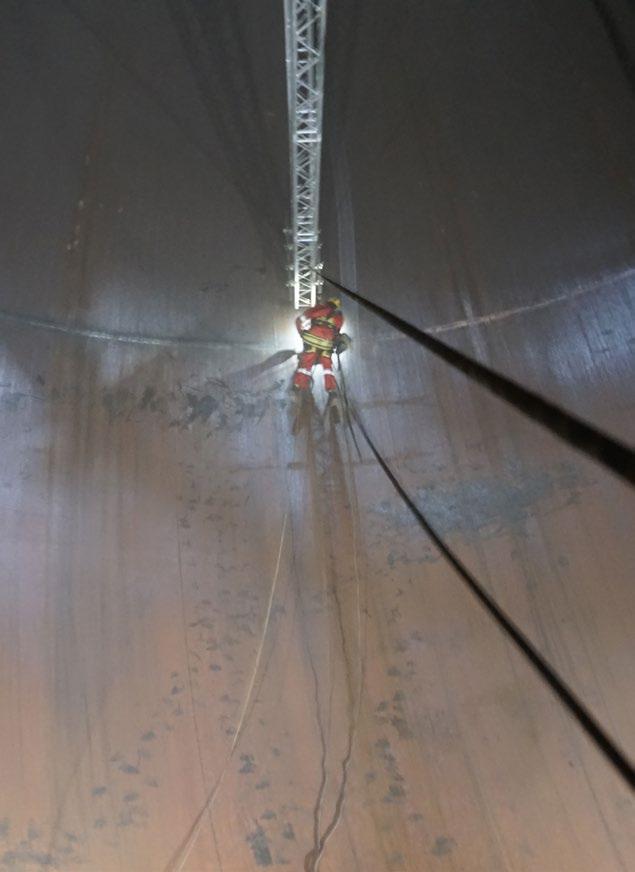
rope access specialists. This strategic collaboration not only minimised the exposure of specialists to working at heights but also exemplified the efficiency derived from a targeted approach, as opposed to a climb-and-inspect methodology.
As the industry moves forward, the integration of robotics, drones, and human expertise emerges as a potent force in industrial operations. The balance and thoughtful combination of these elements stand as the linchpin for achieving optimal outcomes in a rapidly evolving landscape.
At the core of Sky-Access’ mission is the commitment to assist its clients in overcoming technical challenges in a safer, more efficient, and cost-effective manner by combining expertise, cutting-edge accessibility solutions, and strategic partnerships.
For more information:
Sky-Access is exhibiting at StocExpo on 12 & 13 March 2024 at the Rotterdam Ahoy. Visit the team on stand J41.
www.stocexpo.com
www.sky-access.com
PAGE 96
01 01 Sky-Access tank inspection TECHNICAL TANK INSPECTION



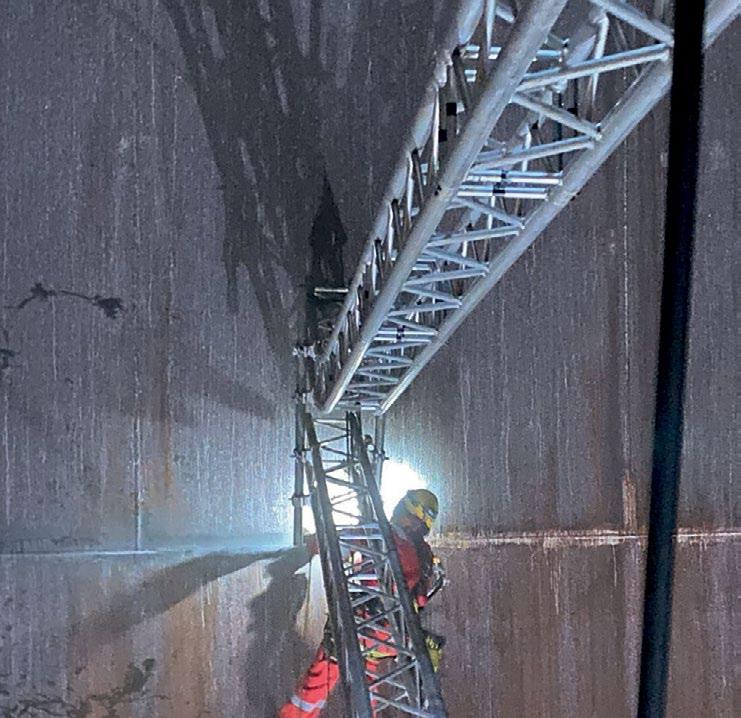
Your technical partner in innovative and safe solutions for challenging locations

Safe, efficient and cost effective
Sky-Access ensures a safer, more efficient, and cost-effective execution of technical activities in various sectors and disciplines, including maintenance of above-ground storage tanks, through the deployment of its unique approach and methodology.
Multiskilled technical teams
The deployment of our multiskilled teams plays a crucial role in this process. All necessary disciplines are represented within the team, allowing, for instance, immediate addressing and repair of indications of weld cracks during NDT inspections. This approach yields several advantages, including increased safety, reduced installation downtime, and minimized exposure to heights and confined spaces.
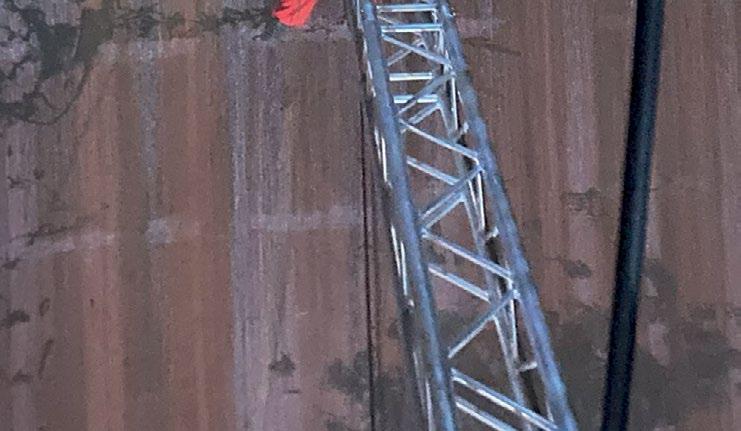
Markets
❚ On- and offshore industries
❚ On- and offshore wind
❚ Infrastructure
❚ Architectural and construction
Certificates

❚ IRAT A (Industrial Rope – Access Trade Association) full operational member 5025/0
❚ VCA**
❚ NEN-EN-ISO 9001
Discipline ❚ Cleaning
❚ (NDT) inspection
❚ Maintenance & mechanical
❚ In- and external tank services
❚ Blasting and coating
❚ Corrosion treatment {CUI}
Insulation and tracing
❚ Fireproofing
❚ Welding ❚ Rescue & support
❚ SkyDeck suspended platforms


Sky-Access B.V. Vaartveld 4 4704SE Roosendaal Netherlands www.Sky-Access.com lnfo@sky-Access.com +31(0)8812 33 600
ACCURATE REPORTING THROUGH MODELLING
Ahead of his session at StocExpo, Axess Digital’s Ole-Erich Haas explains how its web-based interface is improving reporting on site
3D MODELLING is becoming a more popular way to accurately map tanks at a terminal. But making sense of the data can be a challenge.
Axess Digital has introduces a 3DView application, an innovative solution designed to showcase expansive 3D models seamlessly within web browsers. Launched in December 2023, this application effortlessly renders vast 3D representations of civil engineering structures like storage tanks and bridges, based on data captured by colleagues in other branches of the Axess group.
BENEFITS OF A WEB APPLICATION
Axess Digital’s application empowers users to conduct virtual inspections, annotate results directly onto the 3D model, and generate comprehensive reports. With this web-based interface solution, there is no need for specialised hardware or software, ensuring a hasslefree experience. Furthermore, the system can integrate with other applications and dashboards, facilitating the presentation of a diverse range of data for enhanced efficiency and collaboration.
The 3DView application also supports for partitioning 3D models into distinct zones, thereby enhancing precision in reporting and assisting in monitoring the progress of inspections. This solution also pinpoints the exact locations of defects in the images on the corresponding 3D model, enabling
the identification of unique defects and the calculation of lengths and areas.
AI INTEGRATION
Axess has also integrated an advanced artificial intelligence (AI) engine into its 3DView application. This AI engine is developed to enhance efficiency by streamlining the inspection process. Upon uploading data into the platform, the AI promptly identifies defects, which users can then visualise and verify for accuracy, through the web interface.
This iterative feedback loop continually refines the AI models, utilising corrections made by users as invaluable training data.
The 3DView application integrated with AI for virtual inspections can significantly reduce on-site time, which contributes to an overall reduction in inspection costs.
The 3D models serve as an excellent initial step for inspections, providing a comprehensive visual overview of the entire structure before engaging in further procedures for in-depth analysis.
To date, Axess Digital’s application has been employed in inspecting bridges and tanks for cracks. The team’s commitment is to continuously enhance productivity and efficiency for clients by consistently improving the capabilities of its AI models. This involves detecting more defects with greater accuracy, while ensuring the security of all information.

For more information:
Axess Digital will be speaking at StocExpo on 12 & 13 March 2024 at the Rotterdam Ahoy.
www.stocexpo.com
www.axessgroup.com
01 Screenshot of the 3DView Application to be presented and showcased at StocExpo 2024
02 An example of corrosion detection of one of its Detection Models that is connected to the 3DView Model. More details about the AI and 3D working together during the presentation.
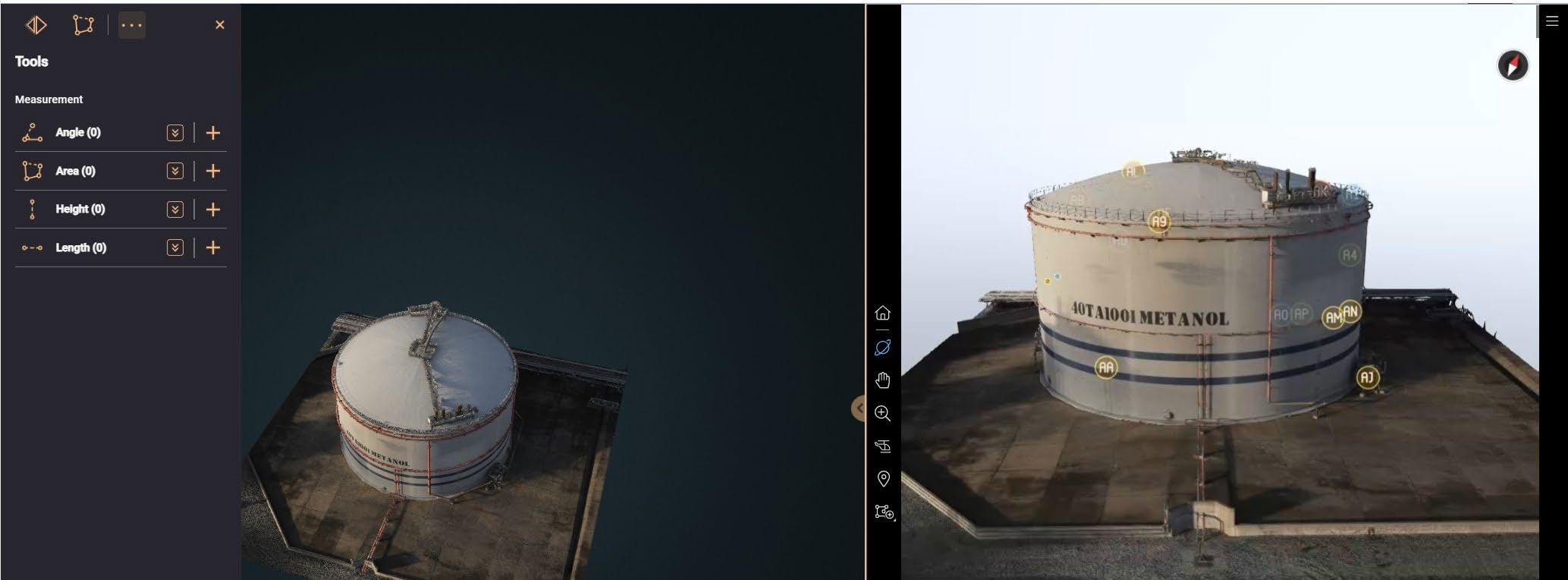
PAGE 98
01
TECHNICAL 3D MODELLING
02
DECARBONISATION STARTS AT THE TERMINAL
Ahead of his presentation at StocExpo, UAB-Online’s CEO Hans Bobeldijk explores how tank storage can reach net zero
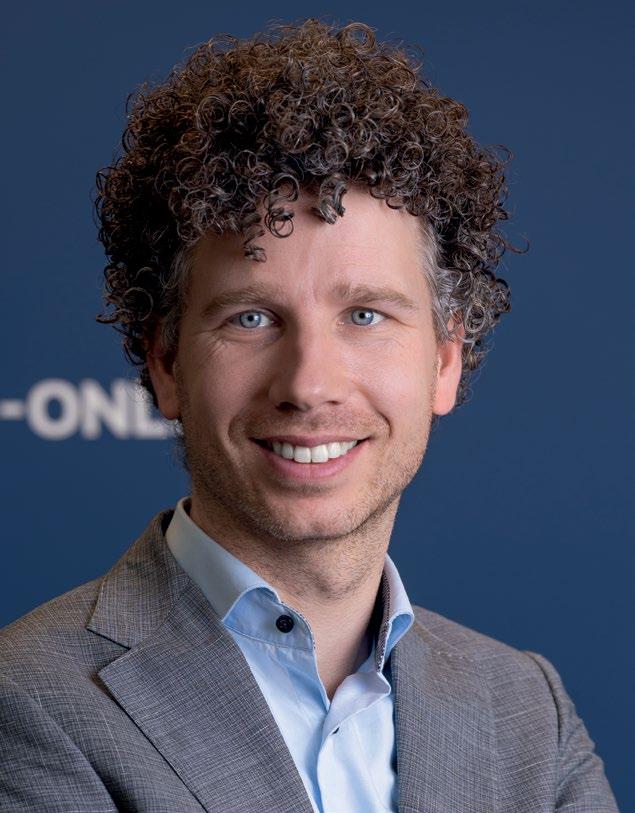
WITH THE continuing emphasis throughout the maritime industry on finding ways to achieve net zero by 2050, it is important to examine the role that ports and terminals can play. There are numerous environmentally friendly practices that terminals could deploy in order to start making an impact on emission reduction. Stakeholders must first address the many factors that make the current port processes inefficient and have a direct tie to delays at ports. It’s widely known that delays contribute to increased emissions due to prolonged vessel idling, auxiliary engine use, and overall inefficiencies in the supply chain.
UAB-Online suggests three main issues behind terminal delays:
1. Inefficient ways of working
2. Suboptimal planning
3. Stakeholder waiting times
The sooner the tank storage sector examines and solves these issues, the closer to decarbonisation we will be.
INEFFICIENT WAYS OF WORKING
The current pre-arrival process is riddled with inefficiencies created by stakeholders continuing to rely on manual, timeconsuming methods of communicating and exchanging key information. Instead of numerous phone calls, emails, and
in-person encounters at the jetty, the key players could be implementing advanced technologies such as digital platforms and automation to enhance operational efficiency, thereby reducing delays caused by manual processes.
Ports can invest in using state-of-the-art equipment and efficient logistics systems to minimise vessel turnaround times. In the liquid bulk industry, we already know that using digital platforms can shorten terminal stays by 60-90 minutes.
SUBOPTIMAL PLANNING
Terminal planning is mostly done for internal use at the terminal and not always in a digital format. Surveyors are not able to accurately plan their work, which causes extra waiting times. In the Port of Rotterdam, for example, a parcel tanker may visit, on average, four terminals in the port, but the planning isn’t shared between terminals and vessels are expected at multiple terminals at the same time.
A uniform planning view done digitally is preferable, creating an accurate and accessible view across all terminals; an advanced technology such as artificial intelligence can also be utilised. By digitalising the process, terminals and ports can enhance coordination and communication with the result of optimal scheduling and planning for vessel arrivals and departures.
WAITING TIME OF STAKEHOLDERS
Excessive waiting times need to be addressed by developing streamlined processes for surveyors, nautical services, and other stakeholders involved in port operations. This may include online submissions, digital documentation, and real-time communication to reduce waiting times. By implementing collaborative platforms, stakeholders can share information and coordinate their activities efficiently.
DECARBONISATION STRATEGIES
At the same time, emission reduction plans should be happening at the port level, focusing on infrastructure
upgrades, cleaner energy sources, and stricter environmental regulations. A bigger investment in green technologies and green infrastructure at the port is needed to support the use of alternative fuels, such as LNG or hydrogen, and provide the necessary facilities for vessels to switch to cleaner energy sources.
As with any industry-wide change, awareness is key. By raising the issue with port personnel, shipping companies, and other stakeholders, the industry will be more aware of the environmental impact of delays and the benefits of adopting sustainable practices.
There is no question ports can and must contribute significantly to the decarbonisation of the maritime industry and help achieve the industry’s goal of reducing emissions by 2050. UAB-Online is committed to helping achieve this goal.
The company developed a cloud-based application where all relevant stakeholders in liquid bulk shipping connect and collaborate on optimising the operational process. The application consists of smart functionalities for terminals, barges, vessels, agents, surveyors, and shipping agencies, all designed to optimise the complete process of the pre-arrival administration and handling of inland and sea-going vessels. This is reducing port stays by up to 90 minutes with less email, phone calling, and physical contact – with the end result of reduced CO2 and NOx emissions and less paper waste.
UAB-Online looks forward to continuing these efforts to optimise the port and terminal liquid bulk process and thereby help the maritime industry achieve net zero.
For more information:
Hans Bobeldijk will be speaking at StocExpo, happening on 12 & 13 March at the Rotterdam Ahoy.
www.stocexpo.com
uab-online.com
01 Hans Bobeldijk, CEO of UAB-Online
PAGE 99
01
TECHNICAL TERMINAL AUTOMATION
WHERE THE HECK IS MY DOCUMENT?
Viewport.ai’s Radboud Grijpma explains how proper data management can optimise terminal efficiency

IN THE tank storage business, working with the right documents and data is very important. Searching for data and documents can be frustrating for employees. Finding wrong versions or outdated versions, not finding documents at all, or spending too much time on work preparation are clear examples that can be frustrating. Plus, making decisions based on wrong or incomplete data can result in longer project times, higher costs and even to incidents.
HOW ARE COMPANIES DEALING WITH DATA AVAILABILITY?
Experienced employees have found their way in a variety of systems and have found nifty ways to combine data and find what they are looking for. But for, the average employee, finding information can be a source of frustration.
Some companies are implementing a state-of-the art document management system (DMS). These systems store documents in a centralised location. Oftentimes this means getting rid of older document management systems, shared drives or folders on computers and laptops of employees.
When implementing a DMS it’s also a good idea to add meta data (authors, date, keywords) and tags to categorise and label documents.
Implementing a document management system requires a culture change to let employees comply with all the new rules
that apply to structuring data. Adding metadata to documents can be a lengthy exercise. It’s also challenging to make sure that the mess that has been created with having a multitude of versions of a document will end up in the new source system as just one or a few relevant versions. Migrating to one new system might impose security risks and there is a strong need to manage access that used to be in place when the original source systems were in use.
In practice, migrating to a new DMS can oftentimes lead to disappointing results.
DMS VS DIGITAL TWIN
Companies with even more ambition like to work on the concept of a digital twin. A digital twin is the digital representation of an asset like a whole tank storage facility. This can be a 3D scan of the actual site, exposing real time data that could give a lot of insights and even insights for things like predictive maintenance.
Although the concept of a digital twin is very promising, it does not solve certain issues. Employees need to work with existing source systems and documents to manage today’s processes. Although the scope of the output of a digital twin may expand over time, the output is not sufficient to help employees with their task today. It is very hard to get to a level of quality data. The high quality of data is essential to live up to the promise of getting the value of a digital twin. Also the implementation of a digital twin is a complex process that can take many
years. Plus, the technology involved in creating a digital twin can be very costly.
A DIGITAL SOLUTION
Wouldn’t it be nice if there was a solution that can help create one view of all the data and documents available in the underlying source systems about an asset? A solution that doesn’t require any changes to your existing landscape of applications that you have?
Viewport.ai has a variety of customers in the oil and gas industry that use its solutions. At StocExpo, the team will present several use cases, but the general concept is simple. With Viewport.ai you can help employees today with finding documents without having to think where they are, find different versions in maybe different source systems, get alerts on missing data or documents. With this information the employee can work faster, prevent issues and contribute to a better quality of data.
Plus, insights that can be used to create a successful DMS or be used to improve data quality for digital initiatives like a digital twin.
For more information:
Radboud Grijpma will be speaking at StocExpo on 12 & 13 March at the Rotterdam Ahoy. Visit the team on stand M23.
www.stocexpo.com
www.viewport.ai
PAGE 100
TECHNICAL TERMINAL AUTOMATION


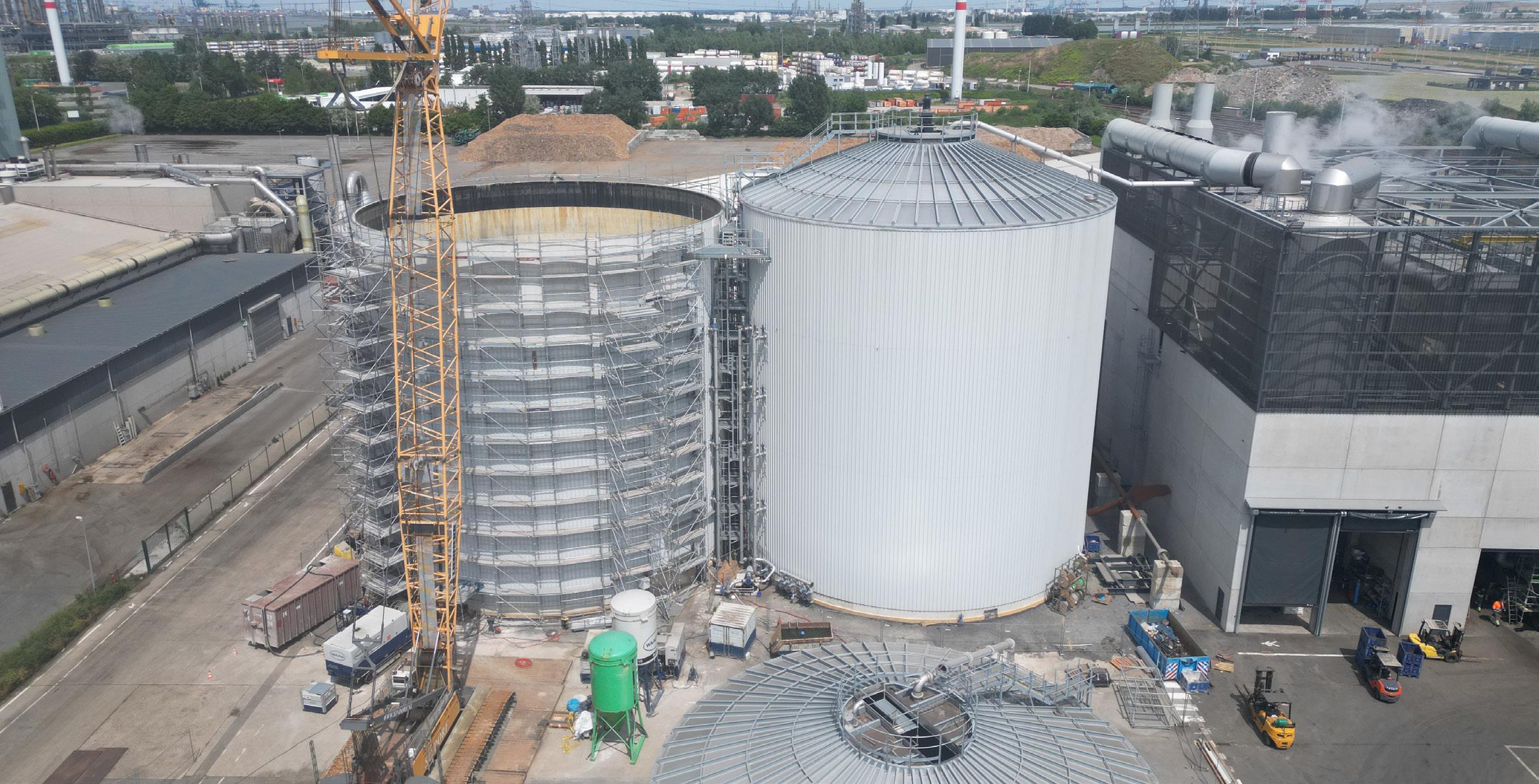


EXPERT IN INSULATION & CLADDING SOLUTIONS THROUGHOUT EUROPE info@ferbeco.be www.ferbeco.be
AUTOMATED LOADING FOR BETTER SPEED & SAFETY
Discover how Isoil’s latest innovation is improving operational efficiency at the terminal
LAUNCHING AT StocExpo 2024 on 12 & 13 March at the Rotterdam Ahoy, Isoil’s VEGA T2 is the ultimate solution for automated terminal loading and unloading. Whether used within oil depots or transfer lines, the device is compatible with almost any type of flow meter.
ENHANCED CONNECTIVITY
VEGA T2 is compatible with a range of communication lines, including serial lines, Ethernet, Bluetooth and WiFi. This allows the device to communicate directly with the control room, share delivery information and receive the instructions to operate from a SCADA or TAS.
The device is connected to Isoil EM6422 via protected CanBus protocol in order to improve the safety of data transmission, immunity against tampering and to enhance self-diagnosis functions.
OPERATIONAL EFFICIENCY
VEGA T2 takes care of the loading procedure, controlling the preset valve and monitoring the signals coming from the devices around it, ensuring safe operations. The device offers up to eight user accounts and a Weight and Measure switch seal to prevent unauthorised access. It also offers continuous selfdiagnosis for easy maintenance.
Transaction data is automatically stored in binary and CSV formats on FIFO mass memories. VEGA T2 also integrates an
FTP server that allows read-only access to transactions files via FTP clients. 100,000 deliveries are saved and stored in a structure with MID criteria and data can also be downloaded via serial line or directly consulted on the display.
VEGA T2 can also generate a printing report directly, with legally relevant functions, and store the data related to the transactions into its memory.
MEASURING PRODUCT
VEGA T2 is a calculator-indicating device to be used in measuring systems for liquids other than water (MI-005 - Measuring Instruments Directive 2014/32/UE) approved by the notified body LNE (France) and with the Evaluation Certificate n. 38495, according WELMEC guides 8.8 and 7.2 and according OIML R117-7 (International Organisation of Legal Metrology).
VEGA T2 can provide a relevant and accurate measure of the quantity of product delivered by analysing its optional temperature, pressure and density sensors. To do this, it uses dual pulse counting through continuous monitoring of pulses, according to OIML R117, ISO 6551 level B, and to API chapter 5.5 level B. The density is calculated during product delivery and temperature via PT100 thermoresistance or from a temperature probe via ModBus RTU serial line. A dedicated alarm will be activated when the product density is

out of the expected range and this data will be available on the display and stored within the transaction information.
The device also has the ability to compensate for temperature and pressure variations from reference conditions (base temperate typically at 15°C-20°C or 60°F and base or equilibrium pressure). Each meter can be calibrated individually to ensure it meets the needs of the product being loaded or unloaded.
For more information:
Isoil will launch VEGA T2 at StocExpo on 12 & 13 March at the Rotterdam Ahoy. Visit the team on stand E3.
www.stocexpo.com
www.isoilmeter.com
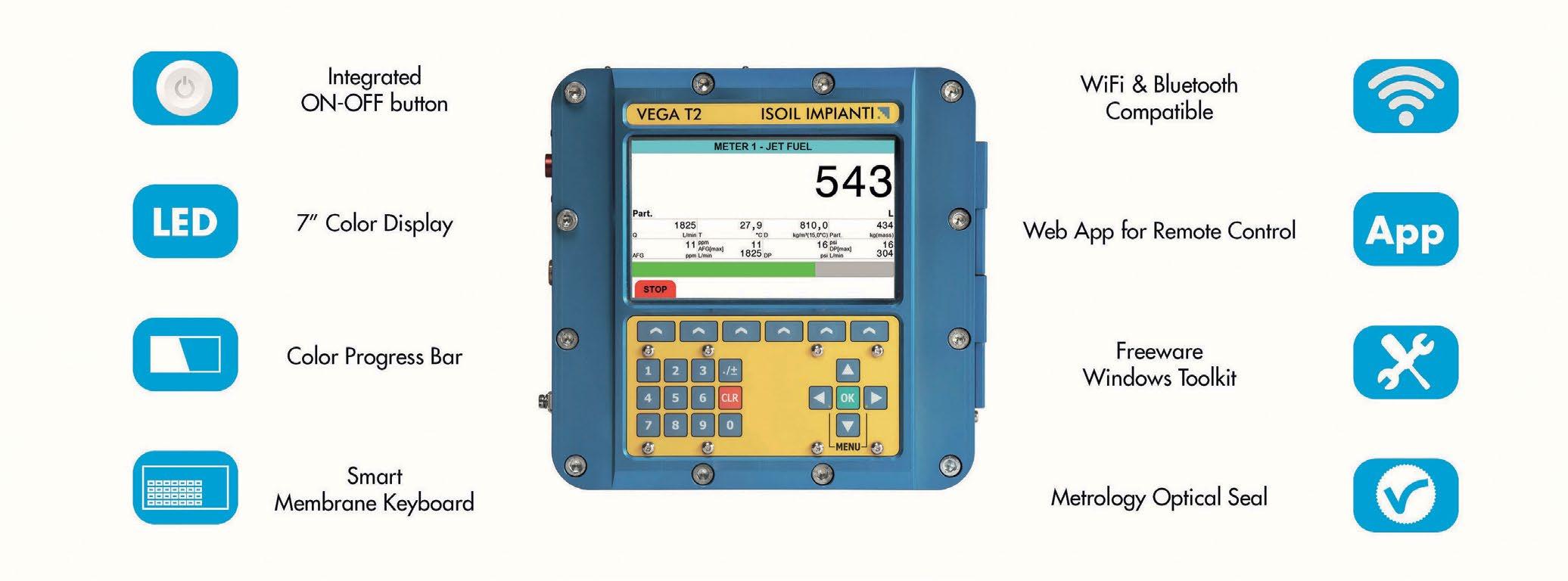
PAGE 102
TECHNICAL LOADING AUTOMATION



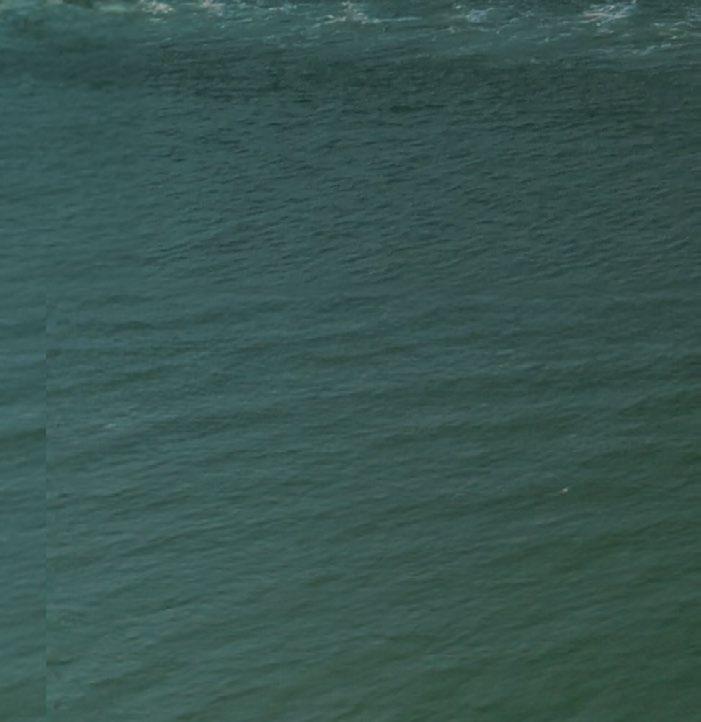



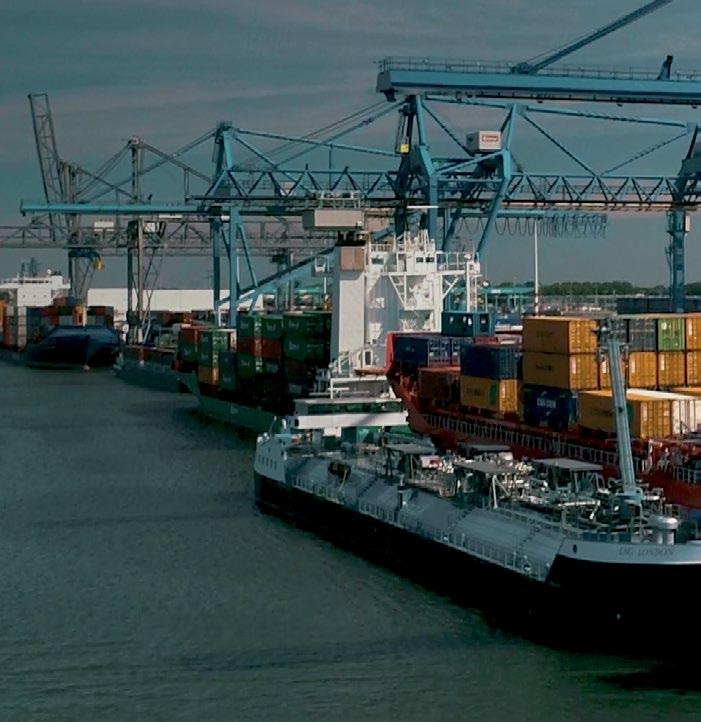








ENSURING EFFICIENT LOADING OPERATIONS
Discover how Scully Signal Company helped an oil terminal in Belfast that needed to replace its loading equipment without impacting operations
IN THE petroleum industry, choosing the right equipment has a major business impact, primarily on how safe the facility is for customers and employees, and operationally being dependable to customers.
A major oil terminal in Belfast had preEN13922 standard terminal loading equipment that was no longer supported, making parts obsolete in the event of failure. The company explored its options – ranging from the oversight and maintenance of the existing equipment to updating the terminal loading operations with the latest petroleum liquid transfer safety technology.
After looking into what maintaining the existing equipment would entail, it became clear, in the event of a failure, the terminal bays would have to close. This would have significantly impacted operations, affecting productivity and could cause customers to look elsewhere, an untenable situation.
Faced with multiple challenges that had the potential to negatively impact business continuity, customer perception, and operating efficiency, terminal management decided that the ideal solution would be to replace the old system with a newer, more advanced one.
A SAFER ENVIRONMENT
The terminal company approached Scully Signal Company, having had previous experience with its safety equipment. The criteria for selecting a new safety system for loading and unloading tankers included:
• Having minimum downtime during any shutdown of a loading bay
• Avoiding traffic backups
• Integrating bottom-loading equipment into current shutdown and control systems to increase operator safety and improve throughput
• Removal of old equipment and installation of the new in one visit
Once learning of the terminal’s requirements, Scully proposed the latest manufactured equipment for the site: the Intellitrol 2. Scully demonstrated how the system could benefit the terminal’s
operations and how dependable the system had been at numerous terminal sites across the UK. Scully’s Intellitrol 2 offered the advantage of minimal downtime during installation and met all the terminal’s other requirements.
Once terminal management agreed, an experienced Scully engineer commissioned seven new Intellitrol 2 systems. Scully worked closely with terminal operators to ensure timely installation and minimal downtime, to keep operations flowing smoothly.
After each installation, and before normal loading operations resumed, an extensive test was performed for each terminal bay. A Scully engineer was on site for the tests to confirm both the existing and upgraded Intellitrol 2 systems were functioning properly.
COHESIVE & COMPREHENSIVE
The terminal maintenance coordinator credited Scully’s professional service, from the initial survey to equipment selection, for the success of the project.
The company appreciated Scully’s comprehensiveness, compatibility with the terminal’s existing equipment, and how closely installation of the Intellitrol 2 systems met the terminal’s needs.
The Intellitrol 2 system complies with new regulations and has a SIL2 functional safety rating. This feature implies reliable equipment for safety process equipment that results in increased efficiency, less downtime, and significant cost savings.
The new safety equipment installed at the terminal provides a variety of benefits to the terminal company, including:
• Inclusive, all-in-one overfill prevention, static grounding, and vehicle identification
• Single unit for easier, more efficient servicing – and reduced total cost of ownership
• Patented design that continuously monitors relay contacts, for petroleum and chemical loading racks
• Dynacheck dynamic self-checking circuitry ensures every critical component is automatically and
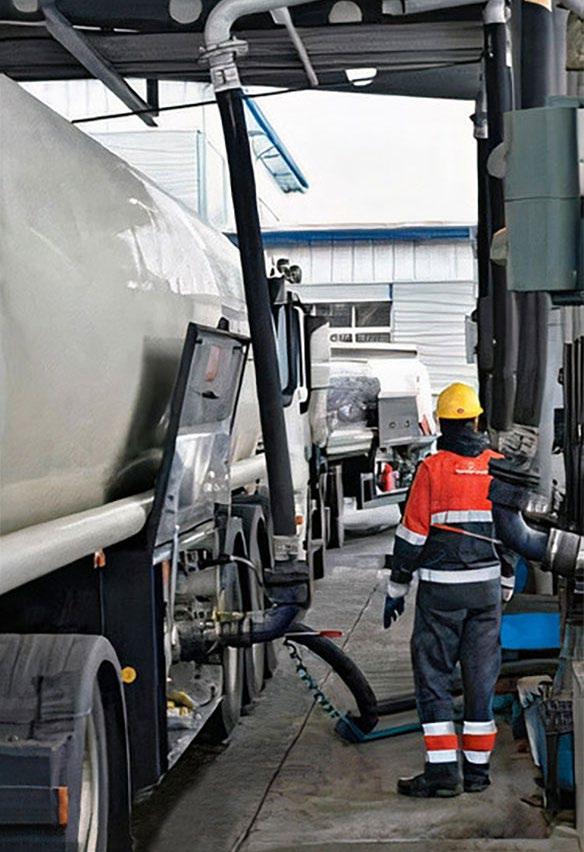
continuously checked for maximum loading safety
• User-friendly functionality and robust display with easy-to-see safety indicators, error messages, and diagnostic features
• Remote communication
The new systems improved operations, efficiency, and safety, and are in full compliance with EN13922. In addition to support and on-site guidance throughout the upgrade process, Scully’s field and sales service team continues to provide full post-installation technical support.
For more information:
Scully Signal Company is exhibiting at StocExpo on 12 & 13 March 2024 at the Rotterdam Ahoy. Visit the team on stand F4.
www.stocexpo.com
www.scully.com
PAGE 104
01
Intellitrol 2 System installed in Belfast
01
TECHNICAL LOADING EQUIPMENT

TAKING CHARGE IN AFRICA, ONE TERMINAL AT A TIME
The experts at Soliflo explain how its evolving liquid control products have transformed terminals across Africa
SOLIFLO HAS been working closely with terminals and depots within the sub-Saharan region for more than 20 years, its original focus the supply of loading arms and safe tanker access systems. Fast forward to the present and the company is now providing fully integrated systems to encompass flow metering, additive and blending solutions together with vapour recovery and destruction solutions and actively assisting oil companies and operators in this region to bring their tank and terminal storage facilities up to international standards. ‘Great strides are also being made in automated terminal management and in-transit monitoring and tracking of product. In fact, we recently completed the first of many terminal automation and additive systems for a major European company operating in East Africa,’ says Soliflo director, Phil Dawson.
‘Over the years we have seen oil majors leave the continent and refining capacity dwindle, and this presents significant opportunity for the tank storage sector, which is growing and will continue to grow rapidly, to satisfy demand for product,’ adds Dawson. ‘The challenges we are facing relate in the main to poor infrastructure and lack of investment with most terminals outdated and still adopting top loading of product for example. We are, however, gratified to see a decided leaning towards transformation and improvement.’
SOUTH AFRICA IN PERSPECTIVE
Soliflo has put significant effort into building collaborative working relationships with all the major players in the SA oil industry, all of which are operating substantial storage terminals with vast capacities, as well as distribution facilities, countrywide. These include, but are not limited to, BP Southern Africa, Astron Energy, Engen Petroleum, PetroSA, Sasol Oil, Shell South Africa, TotalEnergies South Africa, Vopak, Bidvest Tank Terminals and Oiltanking.
They are being provided with holistic solutions that not only get the job done, but also address environmental and sustainability concerns that challenge the industry. South Africa’s National Key
Points Act, together with the obligatory client non-disclosure agreements the company is required to sign, precludes Soliflo from providing specifics on any projects undertaken on their behalf.
The most recently available statistics outlined in the accompanying diagram indicate that ‘petroleum and other liquids’ accounted for 21% of primary energy consumption in SA. According to Statista, a global data and business intelligence platform, as of 2021, the total primary energy consumption in South Africa amounted to roughly 5.42 quadrillion British thermal units.
SERVICE & SUPPORT
Soliflo’s locally and internationally (factory) trained technical service team members have years of experience in the fuel, chemical, loading and unloading and related sectors and cover the Southern African Development Community, East African Community and the Common Market for Eastern and Southern Africa regions. ‘It’s a feather in our cap that they are in demand by several of our international principals to undertake global project management work on their behalf; in particular, the assembly, installation and commissioning of marine loading arms,’ says Dawson.
Soliflo ranks as one of the leaders in the fields of liquid control and tank loading
and unloading in Africa. Formed in 1984, and under its current ownership and management since 2004, 2024 is a landmark year for the South African company. Over the years, Soliflo’s product offering has evolved, but loading arms have been a cornerstone of Soliflo’s product offering since inception and continue to be an area of specialist expertise 40 years on.
‘We are providing environmentally friendly systems and holistic solutions for the petroleum, oil, chemical and energy industries,’ says Dawson. ‘With our service teams working at full capacity, locally and internationally, and the recent awarding of a substantial petroleum industry tender, we are extremely upbeat about the year ahead.’
The company has its head office in Johannesburg with a satellite operation, Soliflo International, in Nairobi, Kenya. Both are strategically located business expansion points into the African continent. The two operations are ISO 9001:2015 and ISO/TS 29001:2020 Quality Management System certified.
For more information: sales@soliflo.co.za www.soliflo.co.za
PRIMARY ENERGY CONSUMPTION IN SOUTH AFRICA, 2020

PAGE 106
BP 2021 Statistical Review of World Energy TECHNICAL LOADING EQUIPMENT
Source:
SOLIFLO

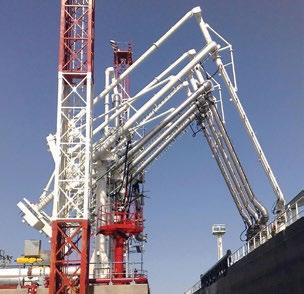
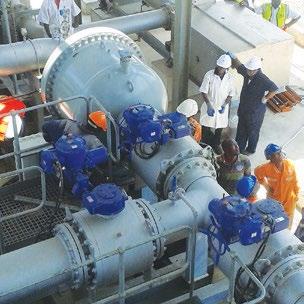

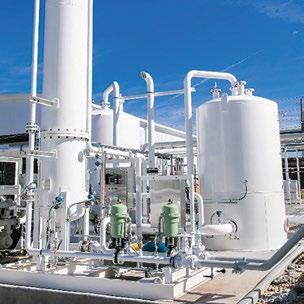
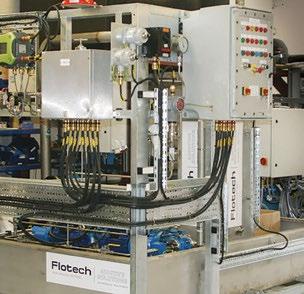


PAGE 107 TECHNICAL XXXXXXXXXXX
THE ANALYSIS IS ONLY AS GOOD AS THE SAMPLE
UK
Sampling Gauges’ founder Reg Kimonides explains how modern sampling methods can vastly improve product analysis
IN ORDER TO establish the quality of their products and ensure this complies with or even exceeds industry regulations and specifications, terminal owners need to take multiple samples from within the tanks. At the start of his career Reg Kimonides, founder of UK Sampling Gauges, used old style corkand-can to take samples from a ship’s cargo. ‘This style of sampling is outdated and extremely messy. Not only this, but more important to note, the sample taken is not representative,’ Kimonides says. This drove Kimonides’ passion to develop a complete range of sampling equipment for liquids, to meet industry standards and serve the oil industry and oil loss departments. His background as a master mariner, with a range of experience from tanker shipping to shore tank inspection helped him identify the pain points for this industry. This equipment is also in use in the biofuels and water sampling industries.
TAKING RELIABLE AND REPRESENTATIVE SAMPLES
UK Sampling Gauges has over fifty devices to suit the growing demands that face terminals. ‘Our comprehensive range of equipment enables the operator to take the required samples with the confidence that each sample obtained is reliable and representative,’ says Kimonides.
To show the difference in tank pressure and filling rates when comparing a conventional sampler with the UKSGL all-level, running sampler, UK Sampling Gauges created a transparent testing unit depth pressure simulator.
When comparing the two types of samplers, the results highlight that the UKSGL sampler was unaffected by the outside pressure and was able to take vital representative sample. This results in a much more accurate analysis for terminal companies and their customers. Ultimately the analysis of each cargo within the tanks is determined by the quality of the sample. So, it is imperative that the sampling equipment is suitable for the job. By providing a representative, accurate sample first-time, UK Sampling Gauges can save a terminal operator time



and money, preventing re-testing and re-sampling.
ENVIRONMENTAL CREDENTIALS
One consideration when it comes to sampling oil and other products is that petrochemical terminals can often emit harmful or greenhouse gases. As the industry is being scrutinised more and more each day, it’s imperative to keep on top of emissions. As well as being ISO 9001:2015 accredited, UK Sampling Gauges’ closed sampling system release little to no vapours when the valves are opened for sampling.
BESPOKE APPROACH
UK Sampling Gauges designs and manufactures the sampling equipment in house at its factory in Lincolnshire, UK. The range includes bottom, universal, spot, all-level, running and sediment samplers, RVP sampling kits, ATEX & IECEx approved open sampling equipment, ATEX and IECEx closed sampling systems, restricted sampling kits and a variety of sampling accessories
from backpacks and adaptors to maintenance kits and sounding rods.
The company’s range of bottom samplers are renowned for their ability to obtain liquid samples from the bottom (or a specified distance from the bottom) of a tank or reservoir. Their main use is to detect water underneath oil or fuel and can also be used to take samples from the fuel/water interface for detecting microbial growth.
Further development of new products is a continuing driving forward force for the company to keep up with customer requirements. The team can also design and manufacture bespoke sampling equipment to better suit the needs of the operator and meet the industry standards.
Alongside the design and manufacture of the sampling equipment they also offer equipment serving and training to better assist oil loss departments. The training sessions can be held at the customer site or at the UKSGL factory using their custom-built pressure/depth simulator station. The training covers general use of the equipment, how to care and clean the equipment after each sampling session and general maintenance.
‘This helps us maintain a good working relationship with our customers. We have a duty of care to our customers and want to support them in every way we can,’ Kimonides comments. ‘Our training videos are very comprehensive and walk the user through operating various kits. The UKSGL app is much like our website and is our way of making UK Sampling Gauges more accessible.’ Both platforms feature product brochures and training videos to better support operators.
For more information:
+44 (0) 1778 392818 samplinggauges.com sales@samplinggauges.com

PAGE 108
01 Conventional running sampler results 02 UKSGL RNS 542 , ALSB-V 1002 results
TECHNICAL SAMPLING
02


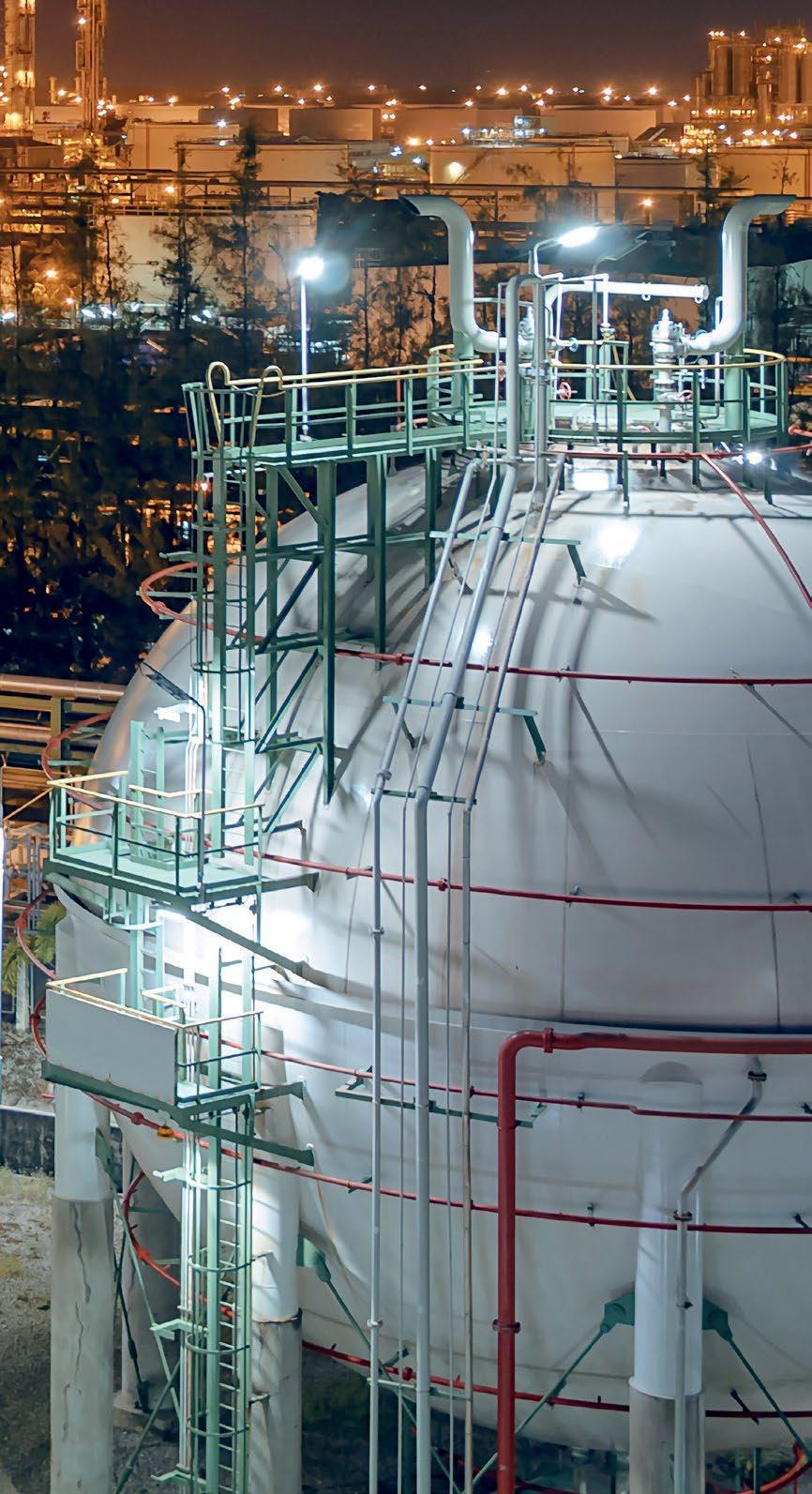
• Fire-safe insulation systems for storage temperatures from -265 °C up to +430 °C
• Dedicated insulation systems for upright tanks, spherical tanks and storage vessels
• Proven long-term performance for lasting energy efficiency
• Trusted insulation solutions provider to the tank storage industry for over seven decades
© 2024 Owens Corning, All Rights Reserved DISCOVER OUR INSULATION SOLUTIONS FOR STORAGE TANKS AT STOCEXPO 2024, MARCH 12-13, AHOY - ROTTERDAM. COME SEE US AT STAND F20!
SIX THINGS TO CONSIDER WHEN INSULATING STORAGE TANKS
The experts at Owens Corning explain how to properly manage the risk of corrosion under insulation

INDUSTRIAL ENVIRONMENTS
often present extreme conditions when it comes to insulating storage tanks and vessels. This includes a broad range of internal storage temperatures, volatile products and possible harsh weather conditions like high winds, flooding, and external temperature extremes. All these factors can place high pressure on storage tanks, so they need to be considered during the design phase –when the insulation system is specified.
CORROSION RISK
While insulation is typically installed to maintain the storage temperature inside of a tank and limit thermal transfer to the outside of the tank, careful consideration must always be given to the other risks that are present in and around storage tanks.
When dealing with above ambient (or cycling) temperature storage tanks, a major risk is the formation of corrosion under insulation (CUI). Corrosion is described as the deterioration of a material that occurs from a chemical or electrochemical reaction within its environment. As metal degrades, damage can compromise tank walls, roofs, or structural steel. When exposed, the extent of CUI is clearly visible. But because insulation typically covers the
metal walls or roof, the corrosive damage may not be noticed until it is extensive.
Oxygen and liquid moisture are the two common elements that allow corrosion to form on metal substrates and eventually lead to CUI. A hydrocarbon processing facility presents a good example of conditions where corrosion risk must be managed.
Chloride ions from salts dissolving in liquid, as well as higher processing temperatures, can create conditions that accelerate corrosion. When looking at stainless steel, the dissolved chloride ions can degrade the protective surface layer of chromium oxide that ordinarily delivers the metal’s rust resistance.
MANAGING CUI RISK
A strategy for managing CUI risk in all types of industrial environments is key to supporting the longevity of metal storage tanks and vessels. Keeping liquid moisture out of the insulating system and away from the metal substrate is priority.
However, water infiltration is not the only pitfall to avoid when insulating storage tanks. Owens Corning considers six potential risks, and then looks at the material performance of cellular glass as an insulating strategy for defending against all six.
Not choosing a moisture management strategy
Defending against CUI means keeping liquid moisture out of the insulating system and away from metal surfaces. Generally, there are three options to help protect against moisture in the insulating system. One option is to change the chemistry of any water that gets into the system. This is a valid approach but will not prevent permeable insulation materials absorbing the water leading to decreased energy efficiency.
Option two is to channel away any moisture that gets into the system by using gravity. Option three relies on a ‘sealed’ approach and is well-suited to a range of processes and temperatures. The sealed approach involves sealing off a system to prevent external water from entering the insulation system. This approach relies on a zero-permeability insulating material, such as cellular glass, combined with a suitable sealant to prevent water from passing into the insulating system.
1 2
Installing a permeable insulating material on below ambient storage tanks
In both liquid and vapour form, water presents a corrosion risk to metal substrates. In storage tanks that store
PAGE 110
01
TECHNICAL TANK INSULATION
products at below-ambient temperatures – such as ammonia – the vapour drive will push moisture towards the cold tank wall or roof under the insulation. A permeable insulation lacking sufficient vapour barriers will allow the moisture to push through the insulation toward the cooler tank surface where condensation can result.
Not considering the insulating system
The components in insulation work as a system to defend against water infiltration. This system includes not only the insulating material but also the vapour barrier and accessories that support the system at various points (e.g. the areas around the nozzles). A system is only as effective as its weakest link and components in a system should be tested and demonstrated to work together in defending against moisture ingress.
Overlooking combustibility, compressive strength and interruptions in cycling
Many storage tanks contain highly combustible chemicals, so it is important to select insulating materials that are noncombustible. Flammable products can be stored at a wide range of temperatures, so an insulating material must maintain its strength and stability while managing the expansion and contraction of materials through different thermal conditions.
As facilities undergo periodic maintenance, tanks may be taken out of service for a certain time. The change in temperatures during shutdown can allow for vapor trapped inside the system to cool and introduce corrosion risk.
Overlooking installation
Just as every industrial facility is unique, so are storage tanks. The handling of an insulating material on a job site should be considered during the specification process along with the nuance of storage conditions. For example, can the insulating material be fabricated in a way that addresses the unique design elements of a storage tank? What resources are available to educate the installers on the job site? What resources are available to support other team members – engineers, facility owners, and the operators who will be working in the facility post-install?
Not viewing performance through the longevity lens
The cost of an insulating system should be considered in context with its lifespan. The World Corrosion Organisation estimates that the global annual cost of corrosion worldwide is around $2.2 trillion (€2.02 trillion). Given that corrosion may continue for years without detection, a problem may go undiscovered until it is too late and the system will need to be replaced entirely.
A proactive strategy to defend against CUI by specifying an impermeable insulating material and deploying a systems approach can help keep moisture away from the system and support an insulating system’s longevity, even in harsh conditions.
CELLULAR GLASS
When it comes to material performance, cellular glass presents an interesting option for defending against moisture
and supporting other material properties. Cellular glass is trusted for its ability to reduce moisture in a wide span of industrial environments.
Comprised of millions of hermetically sealed glass bubbles, Owens Corning’s Foamglas insulation has been one of the preferred materials for below-ambient storage applications around the globe for its permeability rating of zero. The nonabsorbent nature of Foamglas insulation means it will not retain liquids from operations or condensation from nearby cold areas.
As noted above, when specifying the insulation material for a storage tank, one should factor into the strategy protecting from corrosion and other risks. The ultimate focus when defending against CUI should be keeping moisture out of the insulating system and this all starts with viewing insulation materials through a lens of impermeability first.
For more information:
Foamglas Owens Corning is exhibiting at StocExpo on 12 & 13 March at the Rotterdam Ahoy. Visit the team on stand F20.
www.stocexpo.com
www.foamglas.com
01 Corrosion on storage tank wall
02 Workers applying Foamglas insulation

PAGE 111
02
5
TECHNICAL TANK INSULATION
3 4
6

TERMINAL UPDATE TECHNICAL MARKET ANALYSIS EVENTS 03 Colonial Terminals looks back on its year of acquisitions and sustainable progress 07 Mesa ETP discusses the importance of tank seals for maintenance 09 The experts at Sandborn explain why it’s key to ensure regulatory compliance 09 Robotics are the key to safe and efficient inspections, says Square Robot 05 Wood Mackenzie analyses the impact of Biden’s LNG export pause 06 ILTA celebrate 50 years in Houston this May 13 NISTM returns to Orlando for April trade show Spring 2024 | Volume 2024 SUPPLEMENT USA SPECIAL CONTENTS



Belgium +32 (0)3 250 60 60 US +1 (407) 332-1774 www.toptech.com TLU - ToptechSales@idexcorp.com VISIT US AT STOCEXPO IN STAND I11 Enjoy a preview of Multiload II+ and be among the first to view the next iteration of presets with more durable hardware, a superior user interface and more! Toptech provides convenient data access, increased efficiency, and improved service to each member of the supply chain. CONTACT US SUPPORTING THE ENTIRE SUPPLY CHAIN: FACILITY OWNER - SUPPLIER - CUSTOMER - DRIVER
A BUSY YEAR AHEAD
Discover how Colonial Group’s year of acquisitions is helping the company progress towards sustainability
COLONIAL
TERMINALS,
wholly owned subsidiary of Colonial Group and is an industry leader in the handling and storage of liquid and dry bulk products. Colonial Terminals began operations in 1934 with the construction of a 21-acre, deep-water terminal located on the Savannah River, USA, to serve the burgeoning import and export, petroleum storage market.
Today, Colonial Terminals owns and operates the largest, independent, liquid and dry bulk storage facilities with breakbulk capability in the southeastern United States.
GROWING STORAGE INFRASTRUCTURE
On 1 December 2023, Colonial Terminals acquired a bulk liquid terminal owned and operated by Buckeye Terminals. The facility is located on the Cape Fear River and has approximately 550,000 barrels of storage capacity. It is adjacent to an existing bulk terminal already owned and operated by CTI. The combined terminal complex will have over one million barrels of bulk liquid storage and offer marine, rail, and truck access into the fast-growing southeastern USA.
‘Colonial Terminals is committed to growth in markets that support our team’s ability to deliver the highest levels of service to customers who value supply chain dependability and efficiency,’ says Ryan Chandler, president of Colonial Terminals. ‘This adjacent facility adds a new berth and substantial river frontage to our already large footprint on the Cape Fear River, and we’re eager to offer new capabilities for existing customers as well as attract new customers and products to the market.’
The acquisition increases CTI’s storage infrastructure in Wilmington to more than one million barrels, 70 acres, and over a half mile of river frontage. Products stored at these facilities include industrial chemicals, specialty chemicals, petroleum, and others.
CTI will retain all local employees who currently operate the acquired facility.
‘Wilmington is a gateway to the growing southeastern US market, and we believe this acquisition strongly positions our team to support current and new customer growth far into the future,’ says Chandler.
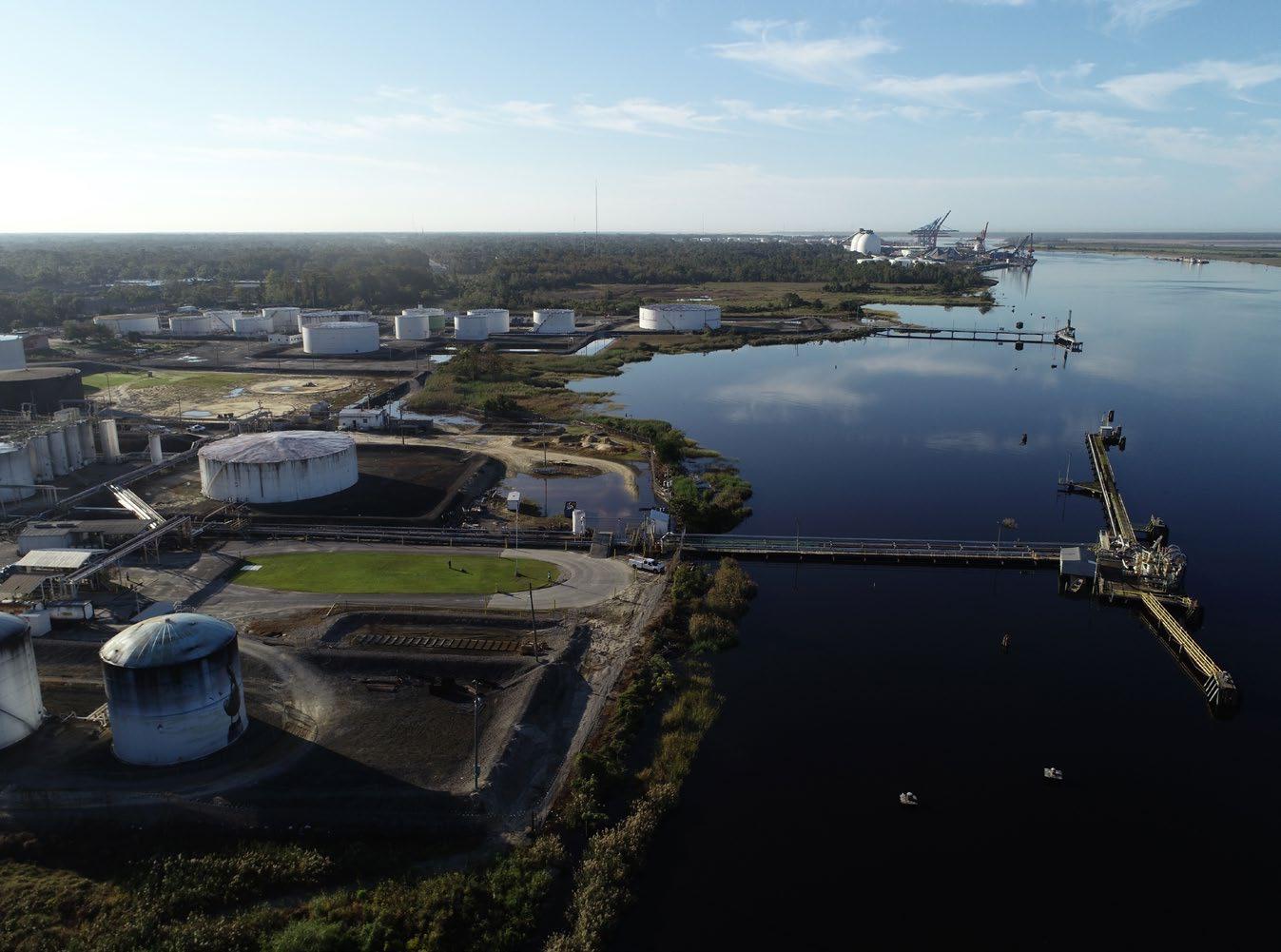
With the addition of the new facility, CTI now operates seven terminals, five in Georgia and two in Wilmington, with a total liquid capacity of approximately eight million barrels and a total dry capacity of approximately 200,000 tons of vertical storage, 400,000 square feet of covered flat storage, and significant outside storage acreage.
Each of Colonial Terminals’ facilities is strategically located in close proximity to a world-class container port and provides access to ocean and landside (road and rail) logistics networks, as well as global and regional sourcing and distribution pathways.
A STEP FORWARD IN SUSTAINABILITY
With increased capacity and access to logistics, Colonial Terminals is placing itself at the forefront of the energy transition in the USA. Another subsidiary of Colonial Group, Colonial Oil Industries, has recently announced a partnership with Neste, TICO, and Gateway Terminals in the offering of renewable diesel to customers and businesses in the region, marking a significant stride towards a more sustainable future in the southeast USA.
‘As a trusted supplier of quality fuels and logistics solutions for more than 100
years, Colonial Oil is proud to expand our offering to meet the sustainable energy needs of our land and marine customers. We endeavor to be the energy partner of choice in the markets we serve and our strategic relationship with Neste accelerates this ambition,’ says Bob Kenyon, president of Colonial Oil Industries.
This partnership increases the availability of renewable diesel in the state of Georgia and throughout the Southeastern USA.
Neste will supply the renewable diesel, which is a lower-carbon alternative to traditional diesel fuel, produced from renewable raw materials such as used cooking oil and animal fat waste. When compared to fossil diesel, the use of renewable diesel significantly reduces greenhouse gas emissions over the fuel’s life cycle, making it a crucial player in the global effort to combat climate change.
‘TICO is proud to partner with Colonial, GPA, and Gateway Terminals that are
‘We believe this acquisition strongly positions our team to support current and new customer growth far into the future.’
PAGE 03 PROFILE COLONIAL GROUP
01







immediate and reasonable,’ says Duncan Pindar, executive vice president of TICO.
‘In the drive to cut supply chain emissions, renewable diesel is a welcome option that both integrates well into current delivery models and provides important overall reductions in carbon and particulate matter. We are encouraged that Colonial Oil is bringing this product to market to help improve global air quality,’ says Kevin Price, CEO of Gateway Terminals.
additional investments to the engines and fueling infrastructure. It can be used in its neat form or be blended with fossil diesel at any ratio.
4. Supply Chain Integration: With a robust supply chain and in partnership with CTI and Georgia Ports Authority, Colonial Oil will ensure a reliable and consistent source of renewable diesel for consumers, promoting this solution that is readily available today to help customers reduce greenhouse gas emissions.






















RENEWABLE DIESEL WITH COLONIAL OILS









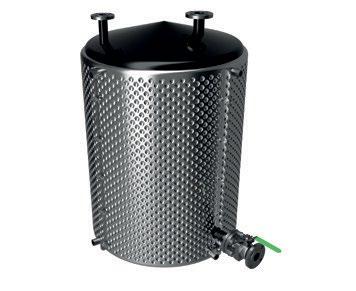
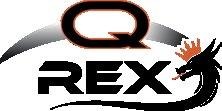




Key features of Colonial Oil’s renewable diesel offering Include:
2. Performance: Renewable diesel offers comparable performance to fossil diesel, ensuring a seamless transition for consumers and businesses.
3. Compatibility: Renewable diesel is fully compatible with all diesel engines and does not require



1. Environmental Impact: Renewable diesel can reduce emissions by up to 75%* over the life cycle of the fuel compared to fossil diesel, making it an ideal solution to combat climate change.







Colonial Oil and its partners are committed to a more sustainable future by standing firm in our dedication to environmental stewardship, innovations, and responsible practices, ensuring a better world for generations to come.






For more information:


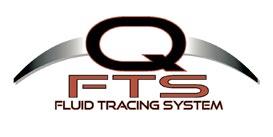



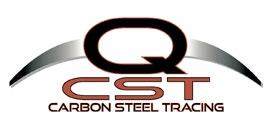




www.colonialterminals.com






02 Renewable diesel delivery






01 Colonial’s new terminal, previously Buckeye’s




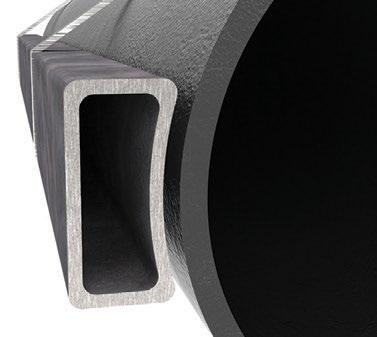

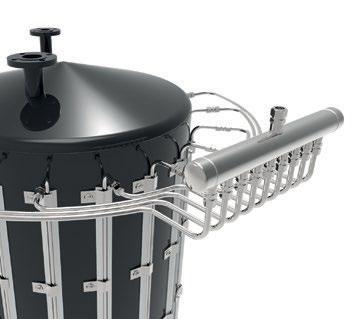
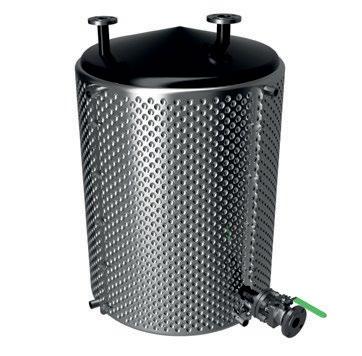
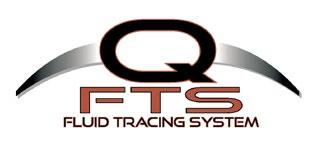






PAGE 04 PROFILE COLONIAL GROUP We commit to simplify your project, with an effective heating solution, with every BTU in mind. QMax Tank Heating Solutions are designed to maintain specific process temperatures or provide rapid heat-up inside Tanks, Vessels and other containers using internal tank heating or external tank heating. qmaxindustries.com • +1 704-643-7299 sales@qmaxindustries.com Call to find out how together we can save the world 100 Trillion BTUs by 2029 HEATING EXTERNAL HEATING EXTERNAL HEATING EXTERNAL HEATING EXTERNAL HEATING EXTERNAL HEATING EXTERNAL HEATING EXTERNAL HEATING EXTERNAL HEATING EXTERNAL HEATING EXTERNAL
02
WILL LNG REMAIN STRONG?
The long-term pause in new US LNG investment could transform the market, according to Giles Farrer, head of gas and LNG asset research at Wood Mackenzie
ADDRESSING US President
Joe Biden’s executive order to temporarily pause new approvals for LNG exports, Giles Farrer, head of gas and LNG asset research at Wood Mackenzie says:
‘The decision will not affect our forecast for US LNG exports out to 2028, but after that it could affect the trajectory and pace of the sector’s growth and have potential to tighten the market in the long run.’
The pause affects countries with which the USA does not have a Free Trade Agreement (FTA), allowing for a review of new projects.
WORLD’S LARGEST EXPORTER
In 2023, the US became the world’s largest LNG exporter, overtaking Qatar, and Australia. To meet growing global demand, Wood Mackenzie forecasts that US LNG and Mexican LNG project export capacity would reach 238 million metric tonnes per annum (mmtpa) of LNG by 2050, accounting for 30% of global LNG supply.
However, despite gas producing around 50% lower emissions than coal when combusted, climate scientists have raised questions about how much methane is leaked along the LNG value chain and what this means for its global emissions footprint. This was one of several factors triggering the Biden administration’s move to pause future export projects.
According to Wood Mackenzie, it is still not clear the extent to which all pre-FID
projects in the US are affected. The pause could also impact Mexican LNG projects because they plan to use US feed gas. The pause will clearly impact the 10 projects awaiting non-FTA approval, but it may also impact many of the projects which under their current DOE approval require first exports prior to 2027. There are almost 90 mmtpa of projects awaiting non-FTA approval. Without non-FTA approval, these projects will struggle to gain sufficient backing to proceed. New LNG projects typically take between three and five years to build.
‘With 200 mmtpa of LNG currently under construction around the world, which will add nearly 50% growth to the market, we have long held a view that there will be a slowdown in new investments decisions from 2024 because the global LNG market looks well supplied in the second half of the decade,’ says Farrer. If the pause is temporary and simply delays FID to 2025 and 2026, the impact on the global market would not be material and perhaps only limited to the 2028/2029 period.
LONG-TERM PAUSE
However, Farrer notes that a long-term pause on all new US LNG projects would have lasting implications on the global LNG market and could affect how buyers perceive US LNG.
‘While we expect existing LNG buyers to wait in the short term, these and other potential new buyers could start to look
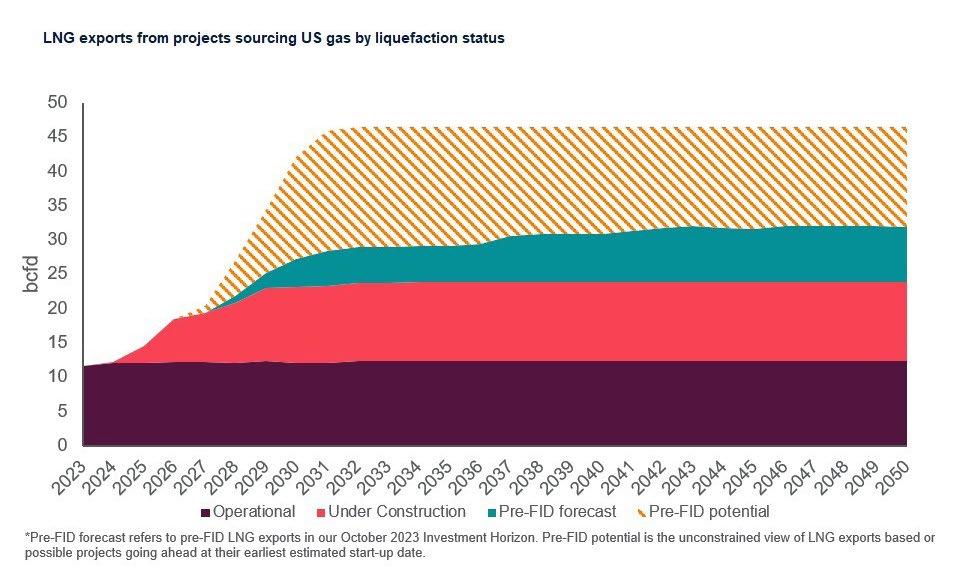

at competing projects outside of the US, such as those in Canada, Australia and particularly Qatar, as alternative supply sources,’ he says.
‘Both a short- and long-term pause may result in higher prices for the broader LNG market. It could also have long-term implications for the role that gas and LNG play in the energy transition, with Asian governments potentially scaling back strategies to use gas as a transitional fuel to replace more polluting coal, as they simultaneously ramp up investments in renewables, if possible.’
It is unclear how long this pause will last and what lasting effects it might have. Regardless, the US LNG industry needs to accept the burden of clearly demonstrating that it is a responsible and dependable provider of a muchneeded and less emissions-intensive energy source, which is an essential part of the solution to a smooth energy transition. ‘It must assume a leadership role in the broader global LNG industry in this regard. Continued articulation of its efforts and accomplishments, along with strong partnership and deep engagement with all stakeholders, is imperative,’ Farrer says.
For more information: www.woodmac.com
PAGE 05 MARKET ANALYSIS LNG
01 LNG exports from projects sourcing US gas by liquefaction status 02 Giles Farrer, head of gas and LNG asset research at Wood Mackenzie 01
02
UNLOCKING OPPORTUNITIES: ILTA 2024
The ILTA conference and trade show is back for May 2024 in Houston, Texas
2024 MARKS a special celebration for the International Liquid Terminals Association (ILTA): the association’s 50th anniversary. Since 1974, ILTA has worked alongside bulk liquid terminal companies and its supplier partners to educate, advocate, and unify the bulk liquid terminal industry. This year, ILTA invites terminal operators across the world to join it in celebrating its history of leadership, growth, and service at the ILTA 2024 conference and trade show, on May 6-8 in Houston, Texas.
In today’s rapidly evolving business landscape, staying ahead of the curve is paramount to success. As industries continue to adapt to technological advancements, regulatory changes, and market trends, professionals across various sectors must seek opportunities to enhance their knowledge, network with industry peers, and discover innovative solutions.
THE CONFERENCE
The ILTA 2024 conference, with 28 individual conference sessions across the fields of environment, health, safety, security, operations, and leadership, offers a unique platform for learning and professional development. With a diverse lineup of expert speakers, engaging panel discussions, and interactive workshops, attendees will gain valuable insights into the latest industry trends, best practices, and emerging technologies.
Whether you’re a seasoned industry veteran or a newcomer looking to expand your knowledge base, the conference sessions are designed to cater to professionals at all levels, providing actionable takeaways that can be applied directly to your day-to-day operations.
Moreover, the ILTA conference presents unparalleled networking opportunities.
From informal networking opportunities to structured networking events such as its Women in Tanks event, attendees will have the chance to connect with government leaders, key industry decision-makers, and potential business partners from around the globe. Building and nurturing professional relationships is crucial in today’s interconnected world, and the conference provides a conducive environment for fostering meaningful connections that can open doors to new opportunities, collaborations, and partnerships.
Similarly, the ILTA trade show showcases the latest products, services, and technologies from over 300 leading vendors and suppliers in the liquid terminal industry. Whether you’re looking to source new equipment, explore innovative solutions, or evaluate potential business partners, the day-and-a-half long trade show offers a one-stop-shop for all your industry needs.
From state-of-the-art storage tanks and transfer systems, to advanced safety and environmental solutions, the exhibitors’ offerings will inspire and inform attendees seeking to enhance their terminal operations. At the same time, if you are looking for an opportunity to showcase the terminal products and services your company has to offer, the ILTA trade show is attended by thousands of industry professionals every year, giving you direct access to market leaders.
WHY ATTEND?
Attending the ILTA 2024 conference demonstrates a commitment to
professional growth and industry leadership. By actively participating in industry events and engaging with peers, attendees position themselves as thought leaders and influencers within the liquid terminal community. Whether through sharing insights during panel discussions, presenting case studies, or participating in industry forums, attendees have the opportunity to contribute to the collective knowledge and advancement of the industry as a whole.
Attending ILTA’s 2024 conference and trade show this May is a must for anyone involved in the bulk liquid storage industry. From educational sessions and networking opportunities to access to cutting-edge technologies and industry insights, the conference offers a comprehensive experience that is sure to benefit professionals at every level.
Held at the Marriott Marquis in Houston, enjoy the hotel’s premier amenities and its famous Texas-shaped lazy river. Plus, ILTA’s annual golf tournament returns to the Wildcat Golf Club outside of Houston, offering attendees the chance to play on two world-class courses in the lovely Texas spring. At the same time, ILTA will honor terminal companies and professionals at the annual awards breakfast. Don’t miss this opportunity to unlock new possibilities, expand your network, and advance your career or business.
For more information
For the full conference agenda and For the full conference agenda and the full information on exhibiting at ILTA 2024 visit www.ilta2024.ilta.org

PAGE 06 EVENTS ILTA
SEAL REPLACEMENT FOR EFFICIENT MAINTENANCE
Mesa ETP discusses the importance of keeping on top of tank seals
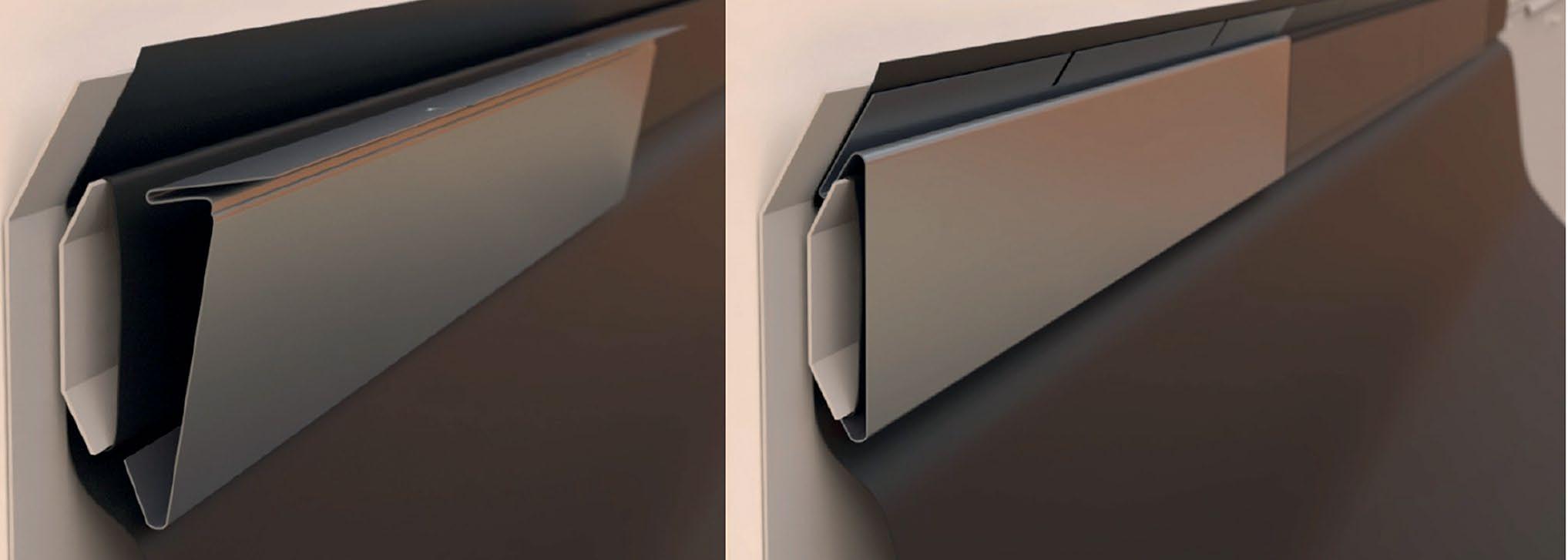
IN THE world of aboveground storage tanks (ASTs), project managers who oversee storage terminals grapple with numerous challenges each day. These range from tight budgets and high maintenance expenses, to the critical need for minimizing tank downtime while maintaining safety records.
Mesa ETP recently collaborated with a project manager who dealt with these challenges and was presented with Mesa ETP’s ClipLock solution, transforming their approach to tank seal replacement maintenance.
CRUDE REALITIES
A project manager at a storage terminal in the western United States was overseeing the maintenance of tanks that stored a variety of products, including crude oil and refined substances.
The tank terminal was facing expensive repairs, which would have a direct impact on profit goals and extend out-of-service times. Any of these issues would affect the company’s revenue, customer relationships, additional emissions loss and put strain on the requirement to maintain safety performance.
While it may be a routine task, AST rim seal replacement requires significant onsite preparation. Labor to replace these seals can be extensive, much of which come from assembling thousands of pieces of bolted hardware to attach the seal fabric to the mechanical shoe.
The traditional method involves cutting holes into the seal fabric for fasteners, placing bolts through a blind hole, adding hold-downs, and inserting washers and threading nuts, all in a very awkward and non-ergonomic position.
The hardware tends to be small and difficult to manipulate with gloves, which contributes to increased installation time and safety concerns. It has also been demonstrated that bolt-through hold-downs do not offer continuous clamping force, but result in pressure concentrations coming from the bolt.
The lack of a continuous force creates a pathway for fugitive emissions.
The project manager faced a challenging dilemma: how to return the tank to service within a tight timeline and budget while maintaining a safe working environment. The key was to find a solution that could expedite the installation process, reduce expenses, and encourage safe work practices.
SEALING SUCCESS
Mesa ETP was able to provide a solution: a floating roof mechanical shoe seal equipped with ClipLock technology. This technology not only reduces emissions through continuous clamping, but also significantly cuts down installation time. Additionally, Mesa ETP offered custom design engineering and on-site supervision to ensure that the solution assembly aligned with the specific needs of the application.
The team successfully installed preassembled shoe plates and the primary vapor barrier on a 120 ft tank with a crew of four men, in only eight hours. This is a 50% reduction n installation time compared to traditional methods. The project was completed on schedule and within the allocated budget, demonstrating Mesa ETP’s commitment to efficiency and cost-effectiveness.
Mesa ETP’s ClipLock technology eases the installation process and allows the crew to perform this while wearing safety gloves, mitigating the risks associated with traditional seal replacement methods.
By addressing critical business issues such as high maintenance expenses, extended downtime, emission performance, and safety concerns, Mesa ETP met the project manager’s expectations.
As the demands on the petroleum industry continue to evolve, Mesa ETP leading the way towards a future where storage terminals can operate efficiently, sustainably, and safely.
For more information:
www.mesaetp.com
PAGE 07 TECHNICAL TANK MAINTENANCE
Mesa ETP’s ClipLock, lock-in-place fabric attachment system 01
01
MAKING THE BEST EVEN BETTER REDUCES INSTALL TIME & EMISSIONS
INTRODUCING
CLIPLOCKTM
LOCK-IN-PLACE FABRIC ATTACHMENT SYSTEM
ClipLockTM is the new fastener-free lock-in-place fabric attachment system from Mesa ETP that makes installing WG floating roof seals faster, easier, and safer for the in-staller while reducing emissions!

CLIPLOCK TM LOCK-IN-PLACE PROPRIETARY FABRIC ATTACHMENT SYSTEM
• One-piece boltless system for complete contact along 100% of tank perimeter
• Installs in half the time of conventional seals
• Dramatically reduces product loss and emissions
• Easily detached and reattached for quick inspections
MAKES THE BEST PRIMARY FLOATING ROOF SEAL TECHNOLOGY EVEN BETTER.
CLIPLOCK TM LOCK-IN-PLACE PROPRIETARY FABRIC
CLIPLOCK TM LOCK-IN-PLACE PROPRIETARY FABRIC ATTACHMENT SYSTEM

HOW CLIPLOCK TM WORKS
Each shoe plate section features a pre-attached bracket. No fasteners or tools are required.
MAKES THE BEST PRIMARY FLOATING ROOF SEAL TECHNOLOGY EVEN BETTER.
Each shoe plate section features a pre-attached bracket. No fasteners or tools are required.
HOW CLIPLOCK TM WORKS

HOW CLIPLOCK TM WORKS
MAKES
CLIPLOCK TM LOCK-IN-PLACE PROPRIETARY FABRIC ATTACHMENT SYSTEM
Each shoe plate section features a pre-attached bracket. No fasteners or tools are required.
MAKES THE BEST PRIMARY FLOATING
MAKES THE BEST PRIMARY FLOATING ROOF SEAL TECHNOLOGY EVEN BETTER.

Each shoe plate section features a pre-attached bracket. No fasteners or tools are required.
Mesa ETP WG floating roof seals faster, easier, staller while reducing emissions!
Each shoe plate section features a pre-attached bracket. No fasteners or tools are required.
• One-piece boltless system for complete contact
It takes about 15 seconds to tuck and clip each 18-inch length of fabric. Installer simply folds seal fabric into the bracket and secures it place with a specially-designed full length spring clip.
It takes about 15 seconds to tuck and clip each 18-inch length of fabric.
Mesa
It takes about 15 seconds to tuck and clip each 18-inch length of fabric. Installer simply folds seal fabric into the bracket and secures it place with a specially-designed full length spring clip.
Installer simply folds seal fabric into the bracket and secures it place with a specially-designed full length spring clip.
INSTALLS IN ABOUT HALF THE TIME
INSTALLS IN ABOUT HALF THE TIME
In actual storage tank field tests, workers installed the WG shoe seal with ClipLockTM attachment system in about half the time of the conventional bolt-through cover plate design.
In actual storage tank field tests, workers installed the WG shoe seal with ClipLockTM attachment system in about half the time of the conventional bolt-through cover plate design.
In actual storage tank field tests, workers installed the WG shoe seal with ClipLockTM attachment system in about half the time of the conventional bolt-through cover plate design.

• Installs in half the time of conventional seals
Installer simply folds seal fabric into the bracket and secures it place with a specially-designed full length spring clip.
• Dramatically reduces product loss and emissions
• Easily detached and reattached for quick inspections
• One-piece boltless system for complete contact along 100% of tank perimeter
This new modular solution lets workers spend less tank time on inservice installations. Plus, there are no small fasteners that discourage the use of required safety gloves.
This new modular solution lets workers spend less tank time on inservice installations. Plus, there are no small fasteners that discourage the use of required safety gloves.
• Installs in half the time of conventional seals
• Dramatically reduces product loss and emissions
It takes about 15 seconds to tuck and clip each 18-inch length of fabric.
• Easily detached and reattached for quick
SIGNIFICANTLY REDUCES EMISSIONS
INSTALLS IN ABOUT HALF THE TIME
This new modular solution lets workers spend less tank time on inservice installations. Plus, there are no small fasteners that discourage the use of required safety gloves.
In actual storage tank field tests, workers installed the WG shoe seal with ClipLockTM attachment system in about half the time of the conventional bolt-through cover plate design.
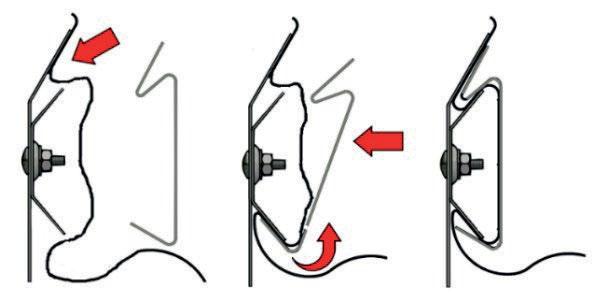
SIGNIFICANTLY REDUCES EMISSIONS
This innovative solution lets workers spend less tank time on in-service installations. Plus, there are no small fasteners that discourage the use of required safety gloves.
ClipLockTMreplaces the time-consuming bolt-through system that can compromise fabric integrity. The lock-in-place system features continuous fabric contact, a method that has been shown in laboratory tests to significantly reduce product emissions.
SIGNIFICANTLY REDUCES EMISSIONS
In actual storage tank field tests, workers installed the WG shoe seal with ClipLockTM attachment system in about half the time of the conventional bolt-through cover plate design.
ClipLockTM replaces the time-consuming bolt-through system that can compromise fabric integrity. The lock-in-place system features con-tinuous fabric contact, a method that has been shown in laboratory tests to significantly reduce product emissions.
ClipLockTMreplaces the time-consuming bolt-through system that can compromise fabric integrity. The lock-in-place system features continuous fabric contact, a method that has been shown in laboratory tests to significantly reduce product emissions.
HOW DO YOU ATTACH YOUR FABRIC?
This new modular solution lets workers spend less tank time on inservice installations. Plus, there are no small fasteners that discourage the use of required safety gloves.
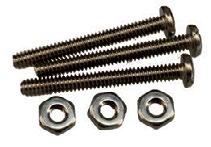
HOW DO YOU ATTACH YOUR FABRIC?

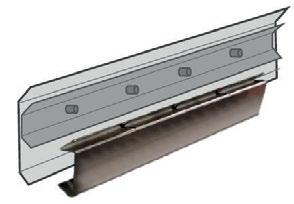
replaces the time-consuming bolt-through system that can compromise fabric integrity. The lock-in-place system features con tinuous fabric contact, a method that has been shown in laboratory tests to significantly reduce product emissions.
Installer simply folds seal fabric into the bracket and secures it place with a specially-designed full length spring clip.
ClipLockTMreplaces the time-consuming bolt-through system that can compromise fabric integrity. The lock-in-place system features continuous fabric contact, a method that has been shown in laboratory tests to significantly reduce product emissions.
No part of the fabric seal is punched or cut to seat over bolts. Every inch of the fabric circumference is locked in place against the shoe plate for a complete seal around the entire circumference of the tank.
No part of the fabric seal is punched or cut to seat over bolts. Every inch of the fabric circumference is locked in place against the shoe plate for a complete seal around the entire circumference of the tank.
No part of the fabric seal is punched or cut to seat over bolts. Every inch of the fabric circumference is locked in place against the shoe plate for a complete seal around the entire circumference of the tank.
Complete contact with shoe plate along 100% of tank perimeter
Complete contact with shoe plate along 100% of tank perimeter
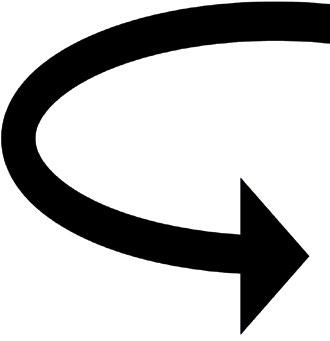
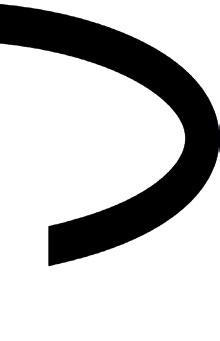
No part of the fabric seal is punched or cut to seat over bolts. Every inch of the fabric circumference is locked in place against the shoe plate for a complete seal around the entire circumference of the tank.
100% of
tank perimeter
OR HOW DO YOU ATTACH YOUR FABRIC? ETP-CLIPLOCK-2022 WWW.MESAETP.COM 866.368.7532 WWW.MESAETP.COM 866.368.7532
No part of the fabric seal is punched or cut to seat over bolts. Every inch of the fabric circumference is locked in place against the shoe plate for a complete seal around the entire circumference of the tank.
ClipLock is the new fastener-free attachment system from
REDUCES MAKING THE BEST EVEN BETTER LOCK-IN-PLACE FABRIC ATTACHMENT SYSTEM CLIPLOCK TM WWW.MESAETP.COM is the new fastener-free
lock-in-place fabric attachment system from
ETP that makes installing WG floating roof seals faster, easier, and safer for the installer while reducing emissions!
REDUCES INSTALL TIME & EMISSIONS
THE BEST EVEN BETTER
FABRIC ATTACHMENT SYSTEM INTRODUCING CLIPLOCK Complete contact with shoe plate along 100% of tank perimeter
REDUCES EMISSIONS
IN ABOUT
THE
MAKING
LOCK-IN-PLACE
SIGNIFICANTLY
INSTALLS
HALF
TIME
THE
replaces the time-consuming bolt-through system that can compromise fabric integrity. The lock-in-place system features continuous fabric contact, a method that has been shown in laboratory tests to significantly reduce product emissions. In actual storage tank field tests, workers installed the WG shoe seal attachment system in about half the time of the This new modular solution lets workers spend less tank time on inservice installations. Plus, there are no small fasteners that It takes about 15 seconds to tuck and clip each 18-inch length of fabric. place with a specially-designed full length spring clip. No part of the fabric seal is punched or cut to seat over bolts. Every inch of the fabric circumference is locked in place against the shoe plate for a complete seal around the entire circumference of the tank. CLIPLOCK TM LOCK-IN-PLACE PROPRIETARY FABRIC ATTACHMENT SYSTEM OR HOW DO YOU ATTACH YOUR FABRIC? ETP-CLIPLOCK-2022 WWW.MESAETP.COM 866.368.7532 Complete contact with shoe plate along 100% of tank perimeter
EMISSIONS
BEST PRIMARY FLOATING ROOF SEAL TECHNOLOGY EVEN BETTER.
SIGNIFICANTLY REDUCES
INSTALLS IN ABOUT HALF THE TIME
HOW DO YOU ATTACH YOUR FABRIC?
ATTACHMENT SYSTEM OR HOW DO YOU ATTACH YOUR FABRIC? ETP-CLIPLOCK-2022 WWW.MESAETP.COM 866.368.7532 Complete contact with shoe plate along 100% of tank perimeter
CLIPLOCK TM WORKS SIGNIFICANTLY REDUCES EMISSIONS INSTALLS IN ABOUT HALF THE TIME MAKES THE BEST PRIMARY FLOATING ROOF SEAL TECHNOLOGY EVEN BETTER.
HOW
OR ETP-CLIPLOCK-2022 866.368.7532
Complete contact with shoe plate along
CLIPLOCK TM LOCK-IN-PLACE PROPRIETARY FABRIC ATTACHMENT SYSTEM
THE SCIENCE OF SEALS
The experts at Sandborn Roofs and Seals stress the necessity of future-proofing tank seal design
FOR OVER half a century, floating roof seal assemblies have been, at most, an afterthought.
Very little consideration was given to how a seal would function, and even less given to actual emission control. Little thought was given to product compatibility, tank conditions, shell deformations and tank cycling. As long as the gap between the floating roof and tank shell was bridged with a device of some sort, the tank was deemed operational, giving a false sense of safe operation and emission control.
The typical seal system installed on steel floating roofs has remained consistent for the past 30+ years. A primary mechanical shoe seal comprised of galvanized or stainless steel plates with a urethane or Teflon fabric curtain and a secondary seal with galvanized or stainless steel compression plates and a urethane or flexible extrusion tip have been the standard. A few variations were available, with ‘off the shelf’ seals being the most commonly used in storage tanks. These often required field modification during installation, resulting in less effective
emission control and premature seal failure.
With the advancement of VOC detection systems, today’s tanks are under more scrutiny than ever and, with that, the need for advanced emission controls has never been higher. Protecting the environment and reducing operational losses is a priority for all tank operators.
The need for a seal system designed specifically for this application is now necessary, and what was once
As industry evolves so must its processes, designs and applications for seal operation. The decisions and provider choices we make today are critical to both the survival of our industry and our planet.

considered the ‘off the shelf’ standard is no longer acceptable.
EVOLUTION OF SEALS
A seal system designed for today’s applications must take into account numerous factors.
Shell deformation, tank construction, annular dimensions, rim geometry, product compatibility and weather conditions are just some of the considerations needed to ensure an effective seal is achieved. A seal designed for one region may not meet the operational requirements of another. The ability to design, model and ‘test’ a seal assembly is critical to ensure operating conditions can be met prior to seal installation.
Data collection, engineering, design and testing are now necessary to ensure a long lasting, regulatory compliant and fully functional seal is provided.
Today’s seals must meet not only today’s requirements but also tomorrow’s evolving standards. As industry evolves so must our processes, designs and applications for seal operation.
The decisions and provider choices we make today are critical to both the survival of our industry and our planet. Careful thought must be exercised when choosing a seal design and provider.
For more information:
www.sandbornroofs.com
PAGE 09 TECHNICAL TANK MAINTENANCE
Sandborn tank seal
01
01
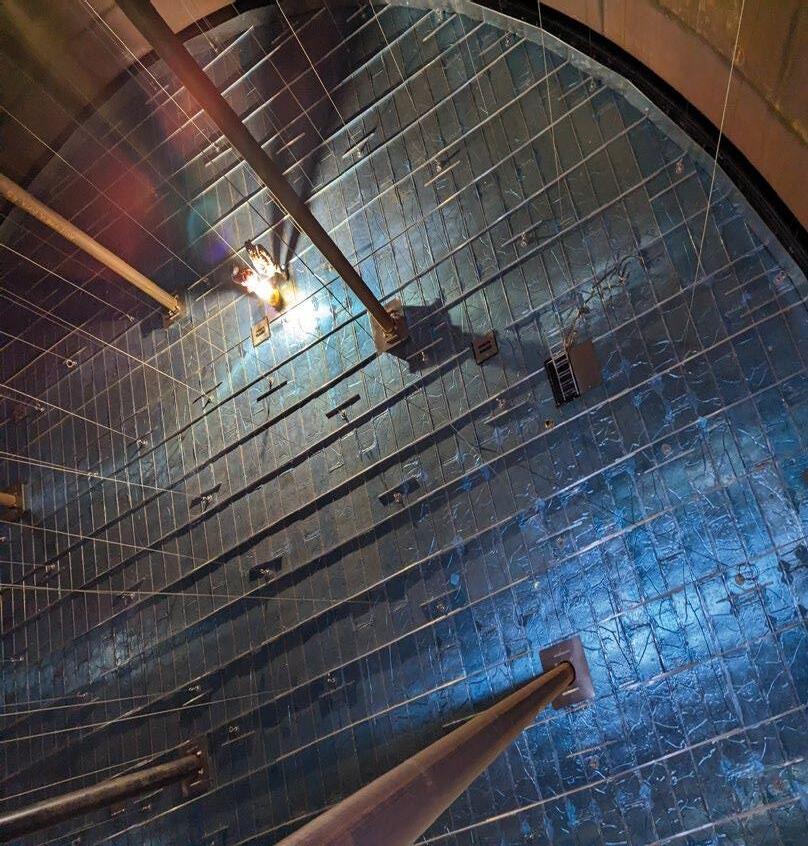





Safe, Environmentally Friendly Custom-Designed Unsinkable Floating Roofs & Seals. Sandborn, the Industry Leader for your Emission Control Needs. Toll Free: 1-866-955-8761 info@sandborn.com Sandborn Roofs & Seals Inc. Canada & USA Roofs Seals Modern, state of the art equipment. In house design, engineering and manufacturing. Custom designed for EACH application. Industry exclusive testing for guaranteed fit. The most adaptive, robust and durable seals available. Complete commitment to customer satisfaction. 1 2 3 4 5 6
SUSTAINABLE, EFFICIENT INSPECTIONS
Robotics enable a more sustainable path to internal tank inspections in compliance with industry guidelines, says Square Robot
SUSTAINABILITY HAS become an imperative for businesses across all industries. Consumers, investors, and employees now expect companies to prioritise environmental, social, and governance (ESG) performance. However, advancing operational efficiency through innovative technology remains critical, too. As a leading provider of in-service, internal and external tank inspection using robotics, Square Robot embraces this dual responsibility.
EMISSIONS IN INSPECTIONS
The carbon emissions reduction enabled by robotic internal tank inspection services is substantial. A typical 100-foot (30 m) diesel tank emits around 5 tons (4.5 tonnes) of carbon equivalent when taken out of service for inspection. More volatile liquids like gasoline release 1520 tons from a similar-sized tank. With over 50,000 tanks taken out of service to be inspected annually worldwide, the emissions savings quickly add up. Preventing product loss also benefits the environment and local communities. Since launching its first commercial tank inspection during 2019, Square Robot has
performed over 170 API 653 compliant internal tank inspections across the world. These have proven to minimise carbon footprints, and reduce safety risks, inspection time and overall costs typically incurred by taking a tank out of service.
DATA-DRIVEN NEXT-GENERATION TANK INSPECTION
Internal storage tank inspections are essential for safety and continuity, and can avoid the need for costly unplanned plant shutdowns for maintenance. Using risk-free robotic internal inspection to better understand the state of your tank while it remains in service offers clear benefits for operational expenditure and revenue generation.
Replacing opinion-based assessments from humans with data certainty gives asset owners a clearer and more accurate picture of their asset’s integrity.
Addressing tank compliance and conditions is simplified by Square Robot’s efficient in-service inspection solution. The team can provide a quick and straightforward inspection within a few days, while the tanks remain online. This process replaces the traditional inspection process that lasts weeks, or even months, as a tank is taken out of service. This allows businesses to concentrate on their core operations, turning a significant problem into a manageable, routine task.
Robotic tank inspections can also identify and harvest vast amounts of data in live tanks, feeding models and optimising maintenance plans based on facts rather than opinion or time-based best practices. Replacing opinion-based assessments from humans with data certainty gives asset owners a clearer and more accurate picture of their asset’s integrity. That can avoid unnecessary routine maintenance and deliver millions of dollars in cost savings.
Seven out of eight tanks that are taken out of service for routine inspection and maintenance don’t require any material work be done to them immediately. Square Robot uses data acquired by
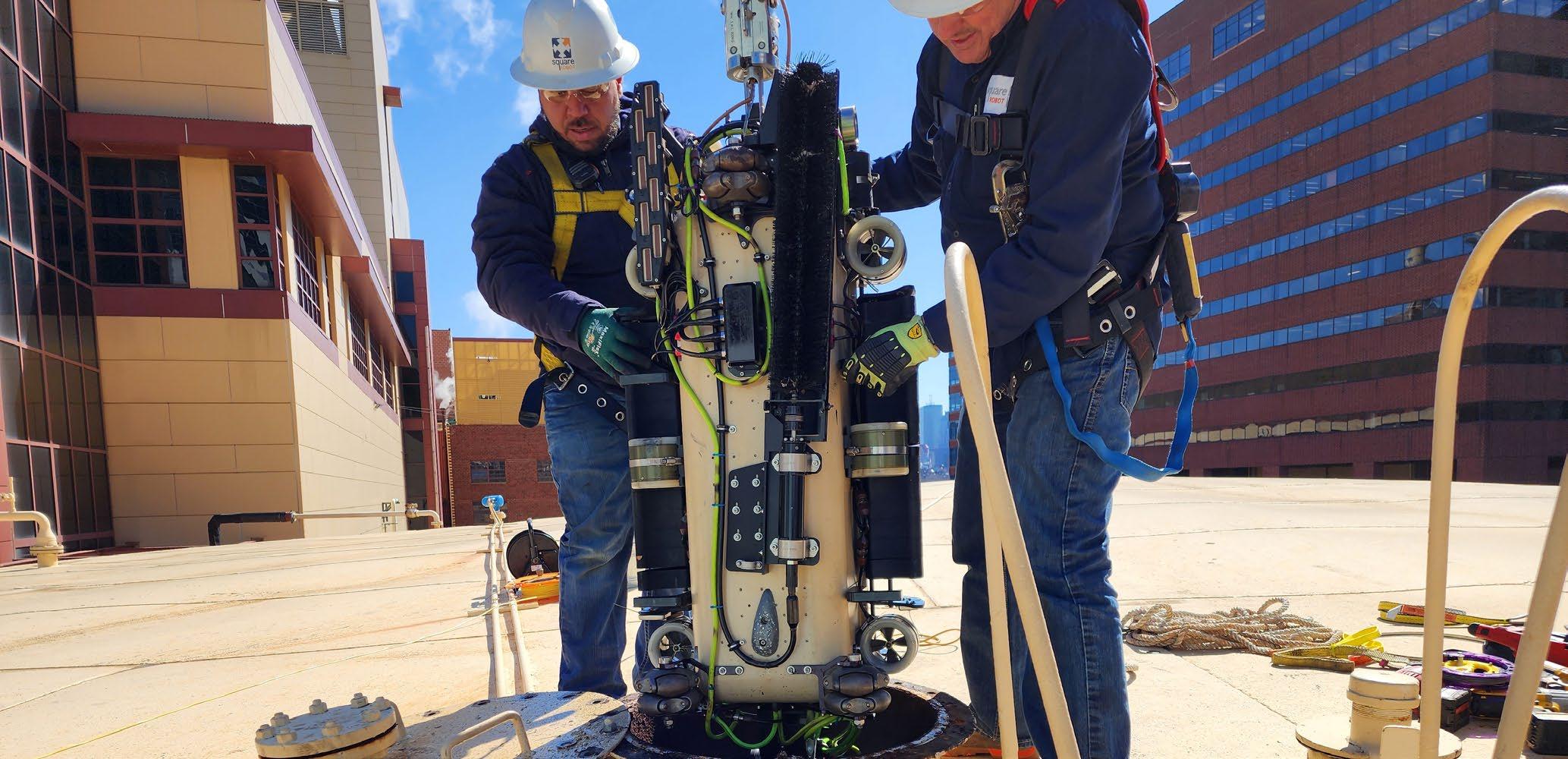
PAGE 11 TECHNICAL TANK INSPECTION
01

its submersible, autonomous robots to assess conditions while it remains fully in operation and then asset owners are able to make informed decisions and intervene for maintenance and repairs, only if required. This more proactive approach to risk shifts customers away from time-based practices that may lead to unnecessary tank shutdowns or risk-based over-conservatism established solely on best practices rather than actual need.
PROVEN PERFORMANCE
By keeping tanks in service, revenue and production stay online while expensive and emission-releasing cleanouts are avoided. One recent project for a railway locomotive refueling tank required four days of robotic inspection, replacing two months of manual project management effort, and saving millions of dollars in equivalent costs. With a robotic inspection, the tank remained in service and continued to fill locomotives every four hours during the internal inspection.
Square Robot has also worked alongside Tennessee Valley Authority (TVA) in a series of inspections to present at the Electric Power Research Institute’s (EPRI) Incubatenergy Labs Demo Day in Vancouver, Canada. Inspecting three fuel oil tanks in a single facility, each holding about 1 million gallons of fuel, the Square Robot team completed the inspections in less than four days, yielding substantial benefits for TVA. These included nearly 800 confined space entry hours saved, a reduction of roughly six tons of CO2 emissions, avoidance of weeks of
downtime, and elimination of thousands of project management hours.
Another inspection focused on a flowing firewater tank used for daily operations, presenting unique challenges like sediment buildup, and navigating through flows of up to 2,500 gallons per minute.
Square Robot’s submersible technology surpassed limitations, showcasing the robust capabilities of this technology.
Square Robot’s high-definition cameras, sensors, and ultrasonic imaging outpace manual capabilities. Combining data from the different sensor sets offer customers a much clearer, holistic view of their tank while it’s in operation.
THE ROAD AHEAD
Square Robot’s internal tank inspections using autonomous, submersible robots offer measurable and tangible efficiency, safety, sustainability, and advances in intelligence over legacy internal tank inspection methods. The company’s latest generation SR-3 robot was commercially launched in September 2023 and builds on the success of the SR-1 inspection robot.
The new robot was designed to inspect tanks containing a wider variety of high- and low-flashpoint petroleum products and can now be safely and easily launched and recovered through either the roof or shell manway, through an innovative Side Launcher system.
With the ability to collect and harvest vast data sets on asset integrity, unlocking additional value for customers through
AI and machine learning will be the next frontier. AI from a variety of sensors will help identify and understand issues and offer answers to problems that don’t readily exist yet.
Square Robot is confident that datadriven robotic tank inspections are rapidly becoming the norm rather than the exception for storage tanks. Asset owners are quickly gaining confidence in the data acquired from robotic inspections and, considering the operational and financial efficiencies, increasingly finding it more challenging to justify confined space entry and operations that unnecessarily emit CO 2
For more information:
Square Robot is exhibiting and speaking at StocExpo on 12 & 13 March at the Rotterdam Ahoy. Visit the team on stand A27.
www.stocexpo.com
www.squarerobots.com
01 SR-1 PAUT Brush Deployment
02 SR-1 lined up over manway
PAGE 12 TECHNICAL TANK INSPECTION
02
CUSTOMISE YOUR EXPERIENCE AT NISTM
NISTM’s 26th Annual International Aboveground Storage Tank Conference and Trade Show returns to Orlando, Florida in 2024, with a lineup showcasing cutting-edge trends and technologies

customisable with its daily attendee form to align with each visitors schedules and interests.
in sunny Orlando, Florida, USA, from April 3-5, 2024.
Tank Storage Magazine is excited to be in attendance with the team at their booth to discuss all things editorial, membership and advertisement. The team will also be hosting an incredible football (soccer) competition with a prize that you won’t want to miss out on.
WHAT’S ON?
As usual, the conference agenda showcases an outstanding lineup of industry experts and exclusive tracks by AMPP and the Steel Tank Institute. This year’s conference promises to be its most informative and engaging yet, offering sessions tailored to elevate visitors knowledge.
Whether visitors are looking to delve into tank maintenance, explore cuttingedge trends, or immerse themselves in aboveground storage technologies, there’s something for everyone. The NISTM experience is completely
Don’t miss the opportunity to learn, network, and thrive alongside industry leaders, or, if sitting in a conference isn’t your style, NISTM kicks off its event with a golf competition on the first day at Rosen Shingle Creek Golf Club. With two shotgun starts at 7:45am and 1:15pm, there is plenty of chance for a friendly match with your industry competitors.
ESSENTIAL COURSES
Not only the conference, but NISTM Orlando is providing vital opportunities to network with industry peers, consult with experts, and elevate understanding of aboveground storage tanks with its tank courses.
The first is Tanks 101 taking place on 2 April at 8:30am - 4:30pm. This session will be an entry point to understanding aboveground storage tanks. Led by industry experts Phil Myers and Andrew Yearwood of PEMY Consulting, this course covers the fundamentals of tank design, construction, operation, and
maintenance across various industries. Whether a newbie to the field or need a refresher, Tanks 101 provides the knowledge base to excel in your role.
The second course is, Tanks 102 Advanced Course taking place on 5 April at 8:30am-4:30pm, and will delve deeper into advanced topics, offering insights into cutting-edge technologies and practices reshaping the industry. Explore API Standard 650 & 653 in detail, learn about resilient design criteria, and discover the latest tools like drones and laser scanning for safer tank operation. This course is ideal for those seeking to expand their expertise or past Tanks 101 attendees ready for the next level. This is a vital opportunity to network with industry peers, consult with experts, and elevate understanding of aboveground storage tanks.
For more information:
For the full conference agenda and information on exhibiting and visiting NISTM Orlando visit www.nistm.org
PAGE 13 EVENTS NISTM ORLANDO
NISTM IS BACK! The 26th Annual International Aboveground Storage Tank Conference and Trade Show is taking place
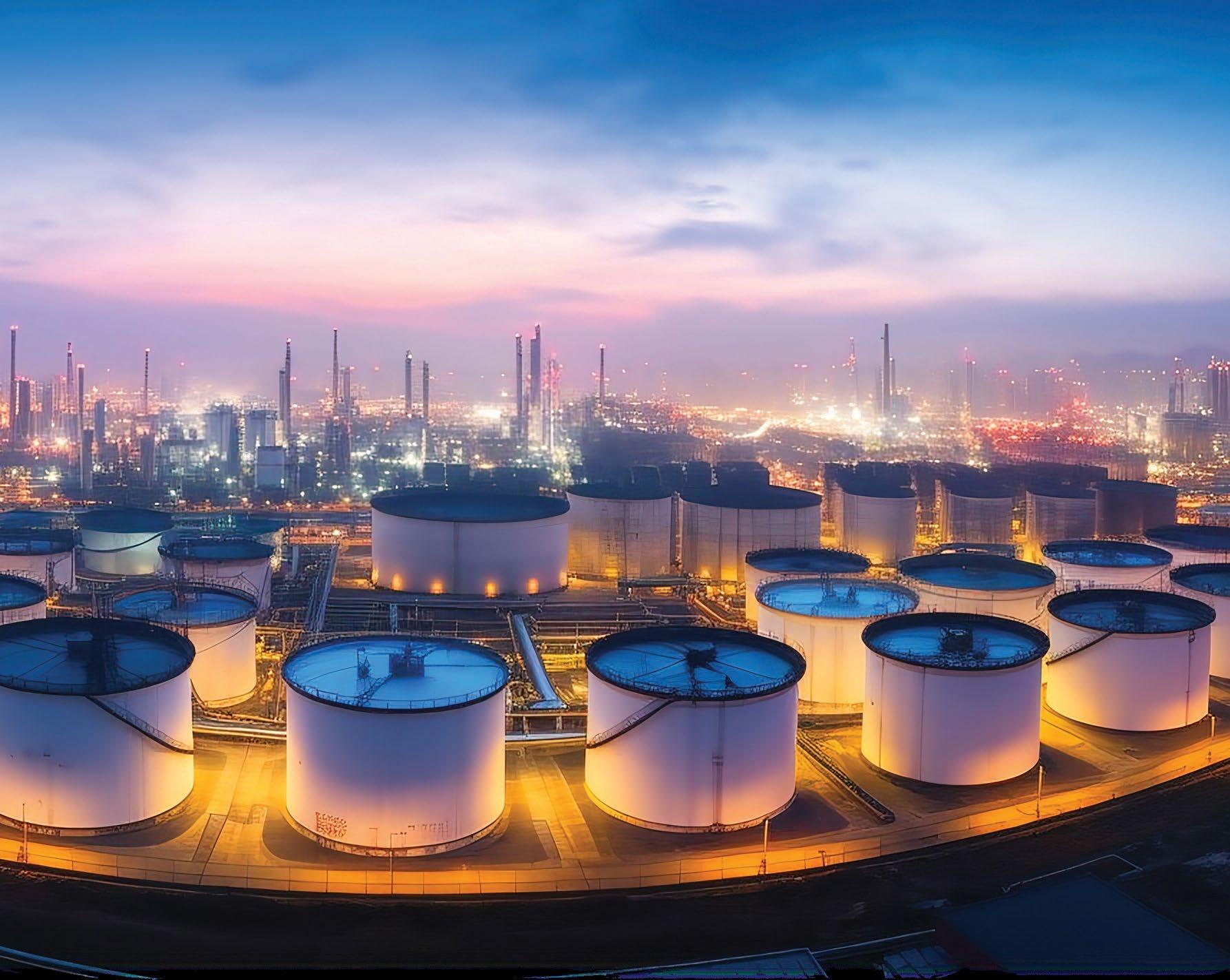
NATIONAL INSTITUTE FOR STORAGE TANK MANAGEMENT NISTM 26th Orlando, Florida APRIL 3-5 2024 FREE TRADE SHOW www.NISTM.org | 800.827.3515 International 011.813.851.1700 • AST Conference Sessions • Free Trade Show • Golf Tournament • Co-Located Events • Free EPA SPCC & FRP Course • Welcome Reception • Network Mixers on the Trade Show Floor
THE AI REVOLUTION IN TANK STORAGE TRAINING
Frederik Haentjens, COO at TankSkills, explains why the industry needs to be utilising AI vocational training
IN TODAY’S fast-evolving technological landscape, the tank storage industry faces a significant challenge: the departure of experienced professionals, creating a gap that is difficult to fill.
Tank Storage Magazine recently spotlighted this issue and discussed how artificial intelligence (AI) offers a promising solution in a recent Tank Talk webinar on solving the brain drain. Participants included Fred Haentjens from Tank Skills, joined by Wouter Van der Stricht from Euroports, Sandra de Bont from VOTOB Academy, Tim Doggett from Chemical Business Association.
THE BRAIN DRAIN
Through AI-enhanced vocational training, there’s potential to bridge the expertise gap, ensuring the industry’s resilience and future growth. This innovative approach marks a pivotal step towards addressing the significant challenge of the brain drain and fortifying the sector’s capabilities.
As experienced professionals depart tank storage, whether through retirement or moving on to other sectors, knowledge is being lost. This issue is critical because it impacts operational safety and efficiency, directly affecting the industry’s ability to maintain high standards and innovation. Moreover, the loss of seasoned expertise hinders the sector’s growth, as there’s a shortage of skilled professionals to drive forward new projects and technologies. Addressing this brain drain is essential not only for sustaining current operations but also for securing the industry’s future.
ARTIFICIAL INTELLIGENCE
AI is changing how people learn for work in exciting ways. It allows people to practice difficult tasks without real-world risks, using things like virtual simulations and adaptive learning methods. This allows the use of AI tools and AIdriven strategies to develop and upskill personalised training approaches that can make learning more engaging and effective. It ensures that the workers and learners are well-prepared for the industry’s evolving demands.
One of the topics tackled in February’s Tank Talk webinar looked at attracting and engaging new talent. This will be essential in navigating upcoming challenges within the tank storage industry. By integrating AI into training processes, the sector not only transforms how learning occurs but also becomes more appealing to potential new talent.
Highlighting opportunities for innovation and growth through AI-enhanced learning methods can captivate those entering the workforce, demonstrating the industry’s commitment to embracing technological advancements and preparing employees for future demands.
THE SKILLS REVOLUTION
With this evolution in learning and upskilling, TankSkills is providing vocational training in the tank storage sector through the strategic application of artificial intelligence.
By harnessing AI, TankSkills crafts customised learning experiences that address the industry’s immediate challenges and skill gaps. Its training programs leverage AI to simulate realworld scenarios through scenario based learning activities, enabling hands-on learning without the associated risks. This approach ensures training is not only more relevant and engaging, but also equips workers with the critical thinking and problem-solving skills needed for tomorrow’s challenges. Through these AI-driven strategies, TankSkills is aiding in the fight against the brain drain by preparing a workforce that is both skilled and adaptable, demonstrating its commitment to nurturing a dynamic and resilient industry.
As AI reshapes the educational landscape, learning methods are undergoing an important transformation. This evolution is marked by enhanced accessibility, allowing learners from any location to tap into advanced training resources. AI-driven programs offer personalised learning paths that adapt to individual strengths and weaknesses, ensuring that each learner can progress at their own pace. Additionally, real-time feedback mechanisms provide immediate
insights into performance, enabling learners to quickly identify and address areas for improvement. This tailored approach not only makes learning more effective but also significantly more engaging for future learners, setting a new standard for educational excellence and adaptability.
After companies employ AI for enhanced vocational training, the next step involves expanding on this foundation with comprehensive upskilling and training initiatives. These initiatives are crucial, extending beyond imparting traditional skills to emphasise adaptability and technological proficiency. This strategy is essential for equipping employees with the skills and flexibility required to navigate and excel in an ever-evolving sector and help secure the industry’s future competitiveness and efficiency.
EMBRACING AI
Embracing AI in tank storage is about working together towards innovation and continuous learning. It represents a significant leap forward in addressing the brain drain challenge and equipping the workforce for the future. TankSkills is propelling the transformation by fostering a culture of continuous learning and adaptability. This way, it is preparing individuals for today’s challenges and also setting the foundation for a dynamic, resilient industry.
As the industry continues to embrace AI and its applications, the potential for growth and innovation in the tank storage sector is boundless, promising a future where the industry thrives through technological advancement and skilled, adaptable professionals.
For more information:
Watch February’s Tank Talk on demand: www.tankstorage.com/tank-talks www.tankskills.com
PAGE 126
TANK TALK TRAINING
ANTWERPANTWERP XL

XLINGINBREAKBULK, PROJECTCARGOANDHEAVYLIFT08THESAVEDATE ANTWERP–10OCTOBER2024 EXPO|BELGIUM ANTWERPXL.COM Host sponsor SCAN THE QR CODE TO REGISTER YOUR INTEREST
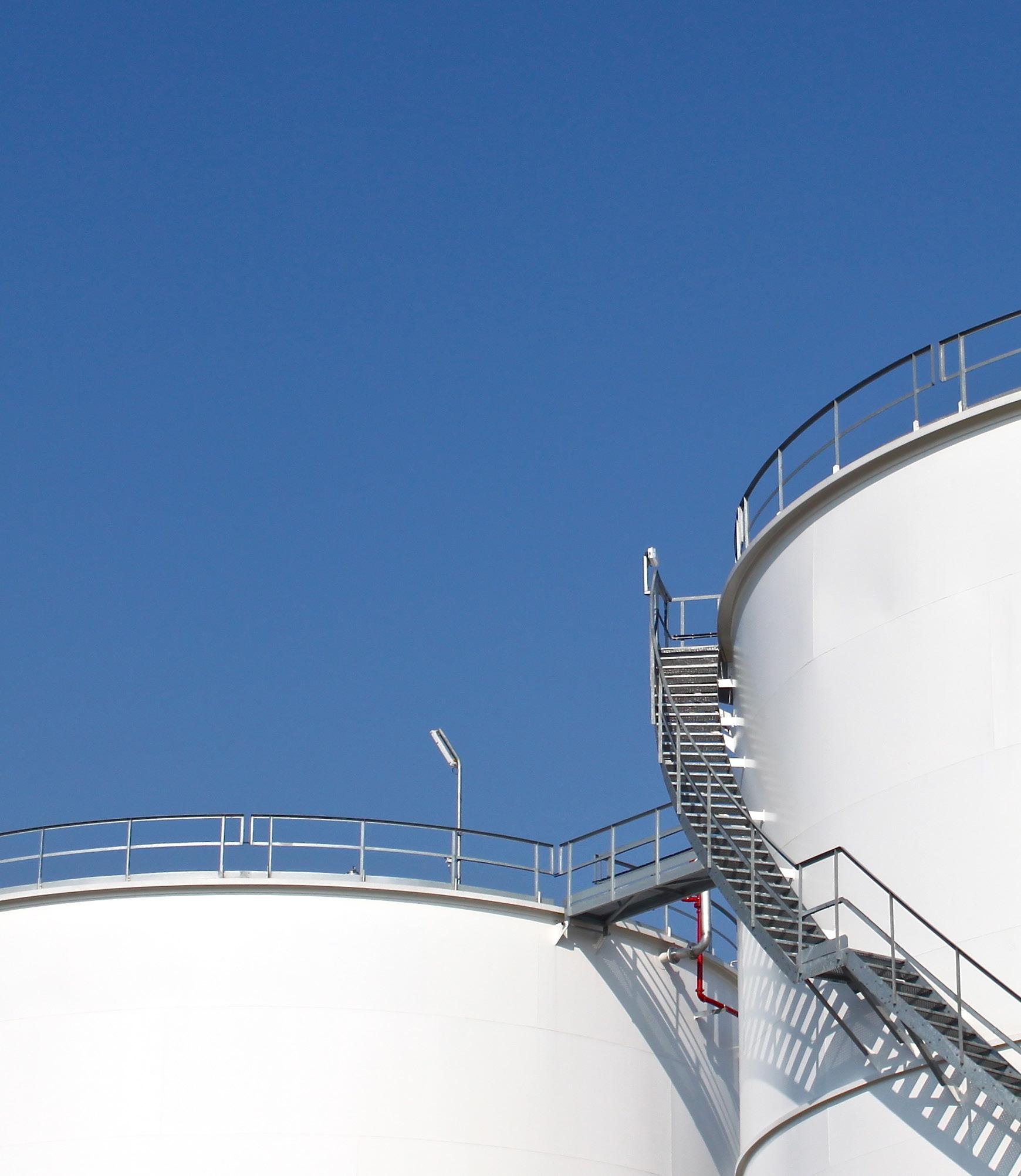
www.tankstorage.org.uk TANK STORAGE CONFERENCE & EXHIBITION 2024 19 September 2024 Coventry Building Society Arena, Coventry, UK Discover the event: www.tankstorage.org.uk/conference-exhibition 19.09.2024 The UK’s leading event for the bulk storage and energy infrastructure sector
EVENTS 2024
12-13 March
Official Publication
STOCEXPO
Rotterdam, Netherlands
Thought leaders from across the world will gather alongside exhibitors and visitors to discuss the future of the bulk storage industry. Tank Storage Magazine is the Official Publication for this event and is exclusively distributed in all delegate bags & to all visitors as they enter the show.
www.stocexpo.com
12 March
Official Publication
GLOBAL TANK STORAGE AWARDS
Rotterdam, Netherlands
The Global Tank Storage Awards are designed to highlight those that excel in a range of different categories relating to terminal achievements, equipment innovations, ports and individual accomplishments.
www.tankstorageawards.com
3-5 April
Media Partner
NISTM ORLANDO
Orlando, Florida, USA
www.nistm.org
9-10 April
Media Partner
HYDROGEN 2024
Amsterdam, Netherlands
www.events.reutersevents.com/ renewable-energy/hydrogen-europe
10-11 April
Media Partner
UKIFDA
Liverpool, UK
https://ukifda.org/
6-8 May
Official Publication & Sponsor
ILTA, INTERNATIONAL OPERATING CONFERENCE & TRADE SHOW
Houston, Texas, USA
The ILTA International Operating Conference and Trade Show is the largest industry gathering with 4,500 liquid terminal industry professionals. Expert-driven educational sessions, networking opportunities, and the largest trade show in the industry will equip you with the tools you’ll need to succeed.
www.ilta.org
13-15 May
Media Partner
WORLD HYDROGEN SUMMIT 2023
Rotterdam, Netherlands
https://www.world-hydrogen-summit. com/programme/
15-16 May
Media Partner
CHEMUK 2024
NEC, Birmingham
www.chemicalukexpo.com
27-28 June
Media Partner
PGLC 2024
Cartagena, Spain
https://www.pglc.biz/
17-20 September
Media Partner
GASTECH
Houston, Texas, USA
www.gastechevent.com
30 Sepetember - 4 October
Media Partner
WORLD HYDROGEN WEEK
Copenhagen, Denmark
www.worldhydrogenweek.com
8-10 October
Media Partner
ANTWERPXL
Antwerp Expo, Belgium
www.antwerpxl.com
27-29 February
Media Partner
IE WEEK
London, UK
www.ieweek.co.uk
11-14 November
Media Partner
ADIPEC
Abu Dhabi, United Arab Emirates
www.adipec.com
5-7 November
Media Partner
HAZARDS 34
Manchester, UK
https://www.icheme.org/trainingevents/hazards-process-safetyconference/
10-12 December
Media Partner
NISTM WOODLANDS
The Woodlands, Texas
www.nistm.org
PAGE 129 EVENTS 2024 CALENDAR
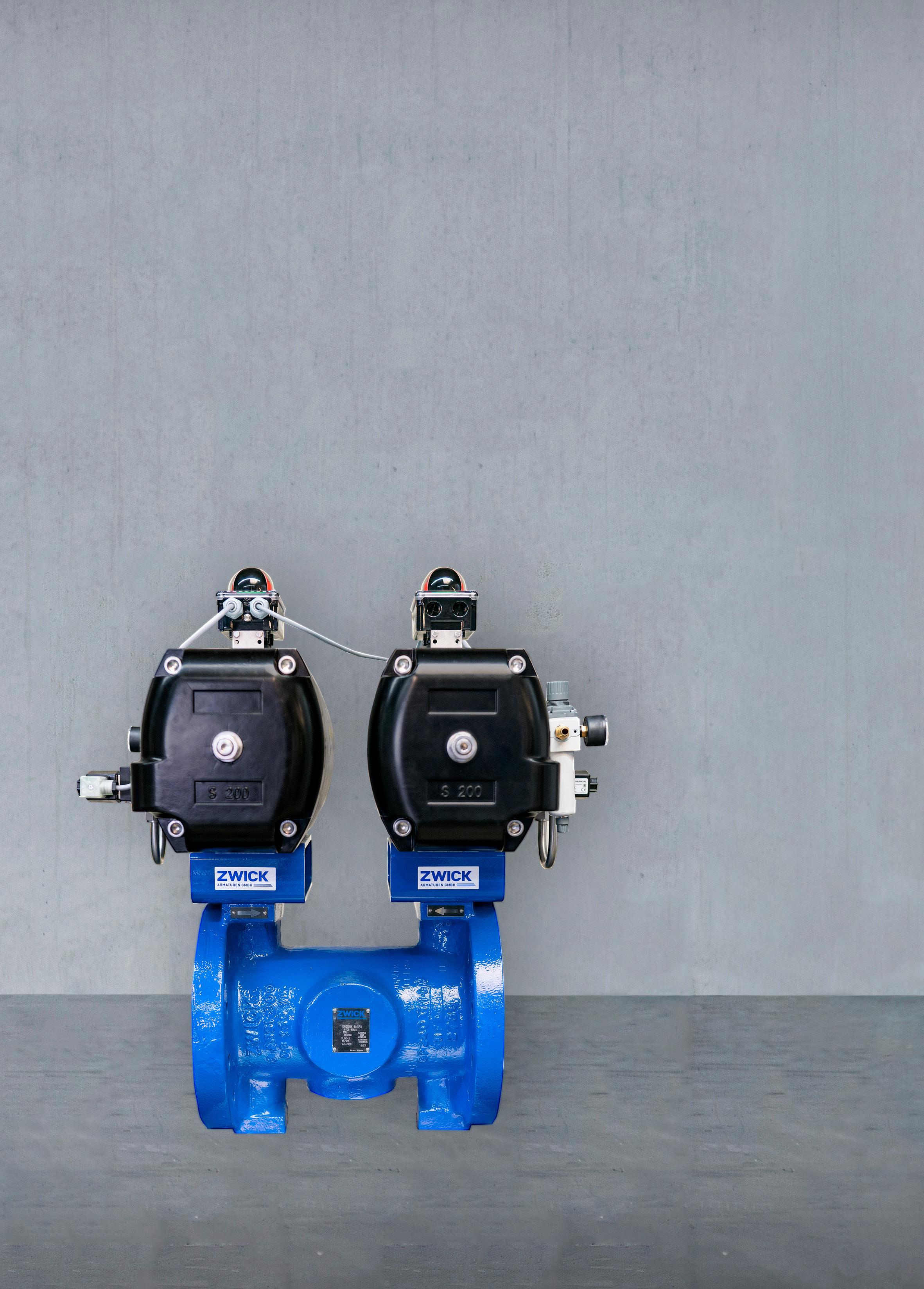
DOUBLE BLOCK & BLEED VALVE www.ZwICK-aRmaTUREn.DE
TRI-BLOCK SIL3


































































































































































































































































































































































































































































































































































